Forums
- Forums
- Axis And Allies Forum
- General Discussion
- Aviation News
Aviation News
Post a reply
- Go to Next topic
- Go to Welcome
- Go to Introduce Yourself
- Go to General Discussion
- Go to Screenshots, Images and Videos
- Go to Off topic
- Go to Works in Progress
- Go to Skinning Tips / Tutorials
- Go to Skin Requests
- Go to IJAAF Library
- Go to Luftwaffe Library
- Go to RAF Library
- Go to USAAF / USN Library
- Go to Misc Library
- Go to The Ops Room
- Go to Made in Germany
- Go to Campaigns and Missions
- Go to Works in Progress
- Go to Juri's Air-Raid Shelter
- Go to Campaigns and Missions
- Go to Works in Progress
- Go to Skinpacks
- Go to External Projects Discussion
- Go to Books & Resources
-
 Main AdminWESTERN ATLANTIC OCEAN (March 7, 2021) F-35B test pilots U.S. Marine Maj. Dylan Nicholas, BF-19, and British Royal Navy Lt. Cmdr. Barry Pilkington, BF-05, performs day envelope expansion test flights aboard Italian aircraft carrier ITS Cavour (CVH 550). The Air Test and Evaluation Squadron (VX) 23 pilots are embarked with the F-35 Patuxent River Integrated Test Force (ITF) for sea trials on the Italian Navy flagship in the Atlantic Ocean. Cavour is in phase one of its “Ready for Operations” campaign to certify its use of the fifth-generation fighter aircraft.( U.S. Navy photos by Dane Wiedmann)
Main AdminWESTERN ATLANTIC OCEAN (March 7, 2021) F-35B test pilots U.S. Marine Maj. Dylan Nicholas, BF-19, and British Royal Navy Lt. Cmdr. Barry Pilkington, BF-05, performs day envelope expansion test flights aboard Italian aircraft carrier ITS Cavour (CVH 550). The Air Test and Evaluation Squadron (VX) 23 pilots are embarked with the F-35 Patuxent River Integrated Test Force (ITF) for sea trials on the Italian Navy flagship in the Atlantic Ocean. Cavour is in phase one of its “Ready for Operations” campaign to certify its use of the fifth-generation fighter aircraft.( U.S. Navy photos by Dane Wiedmann)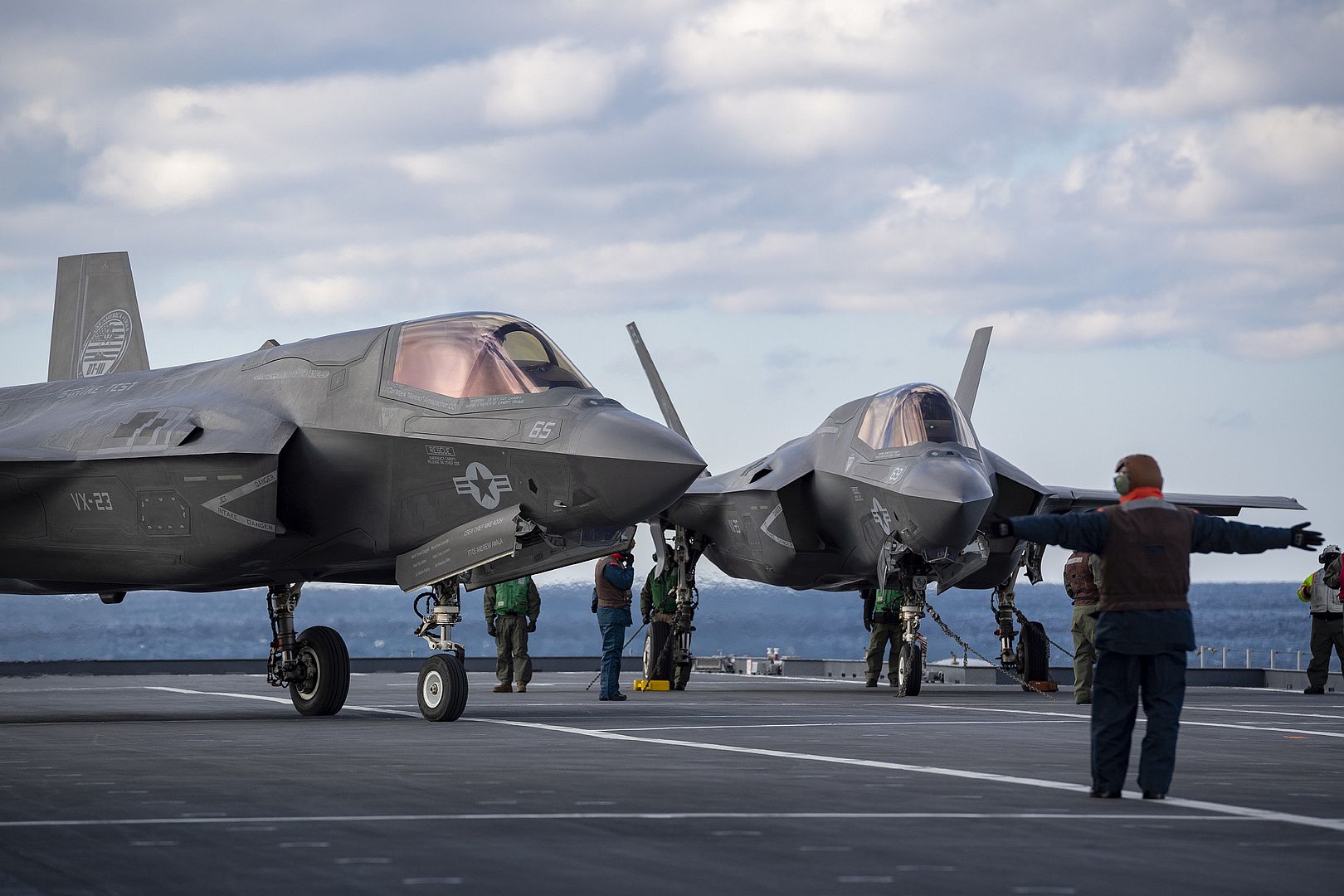

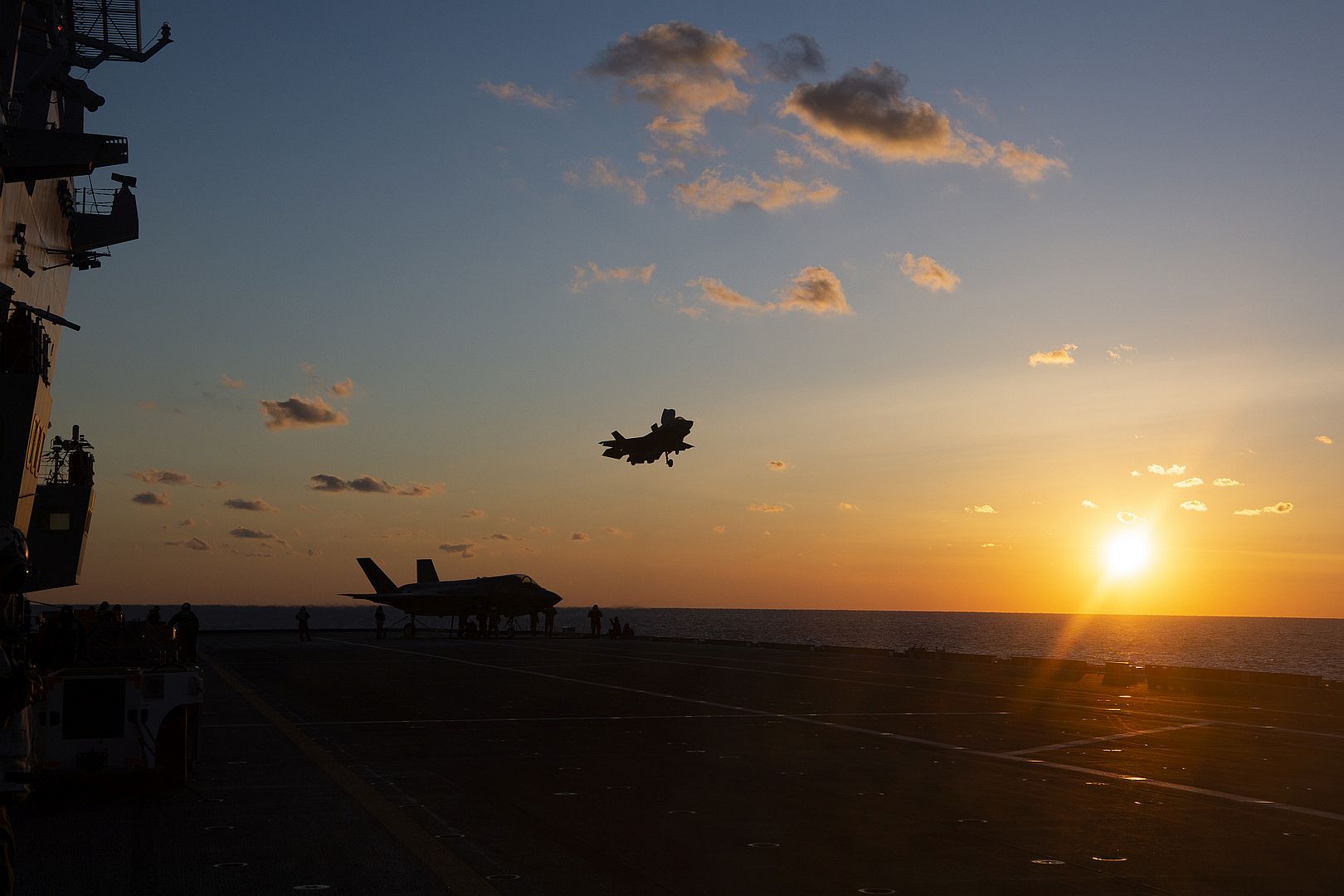

An F/A-18F Super Hornet attached to the “Flying Eagles” of Strike Fighter Squadron (VFA) 122, lands on the flight deck of USS Gerald R. Ford (CVN 78), March 8, 2021. Ford is underway in the Atlantic Ocean conducting carrier qualifications. (U.S. Navy photos by Mass Communication Specialist Seaman Jackson Adkins)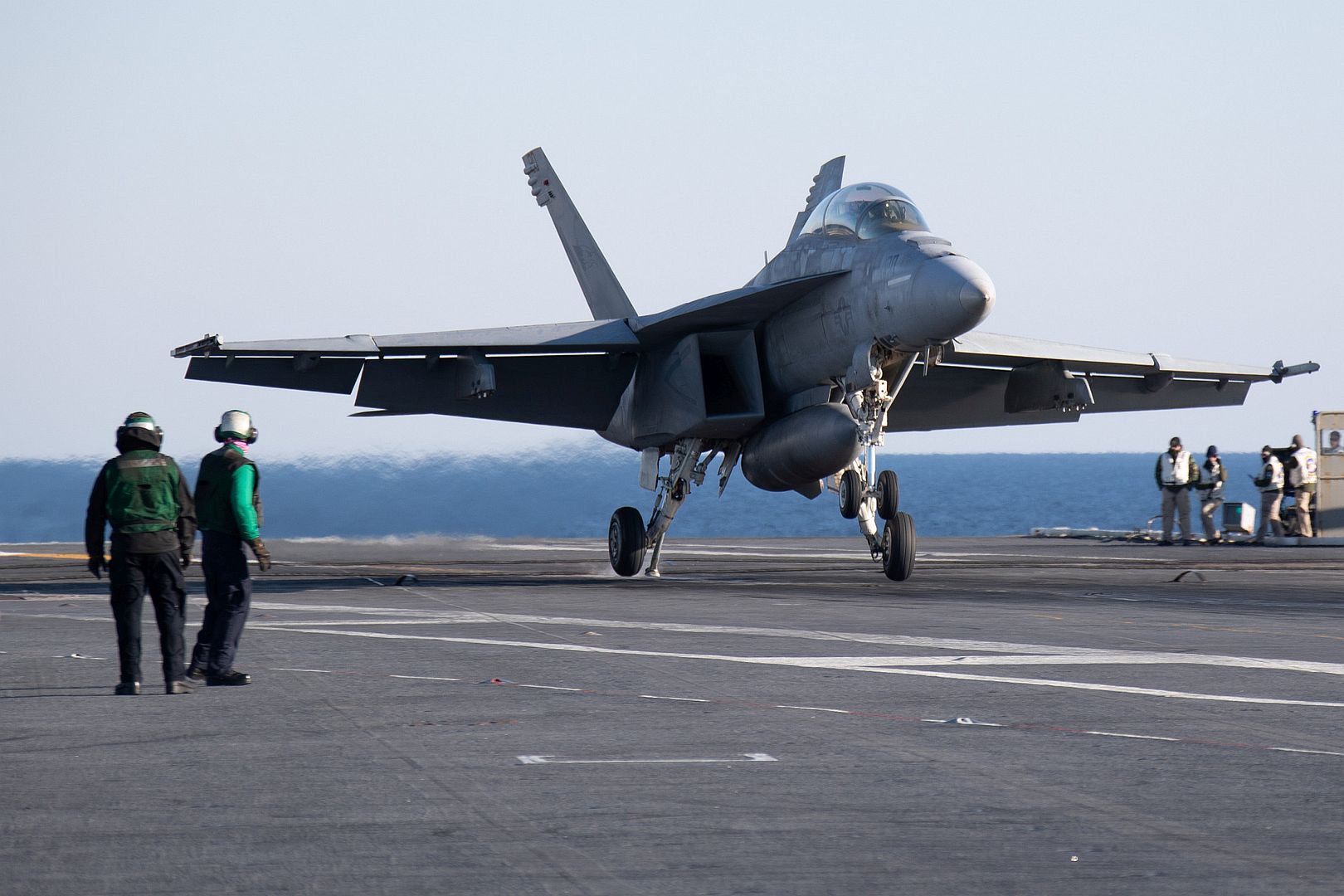
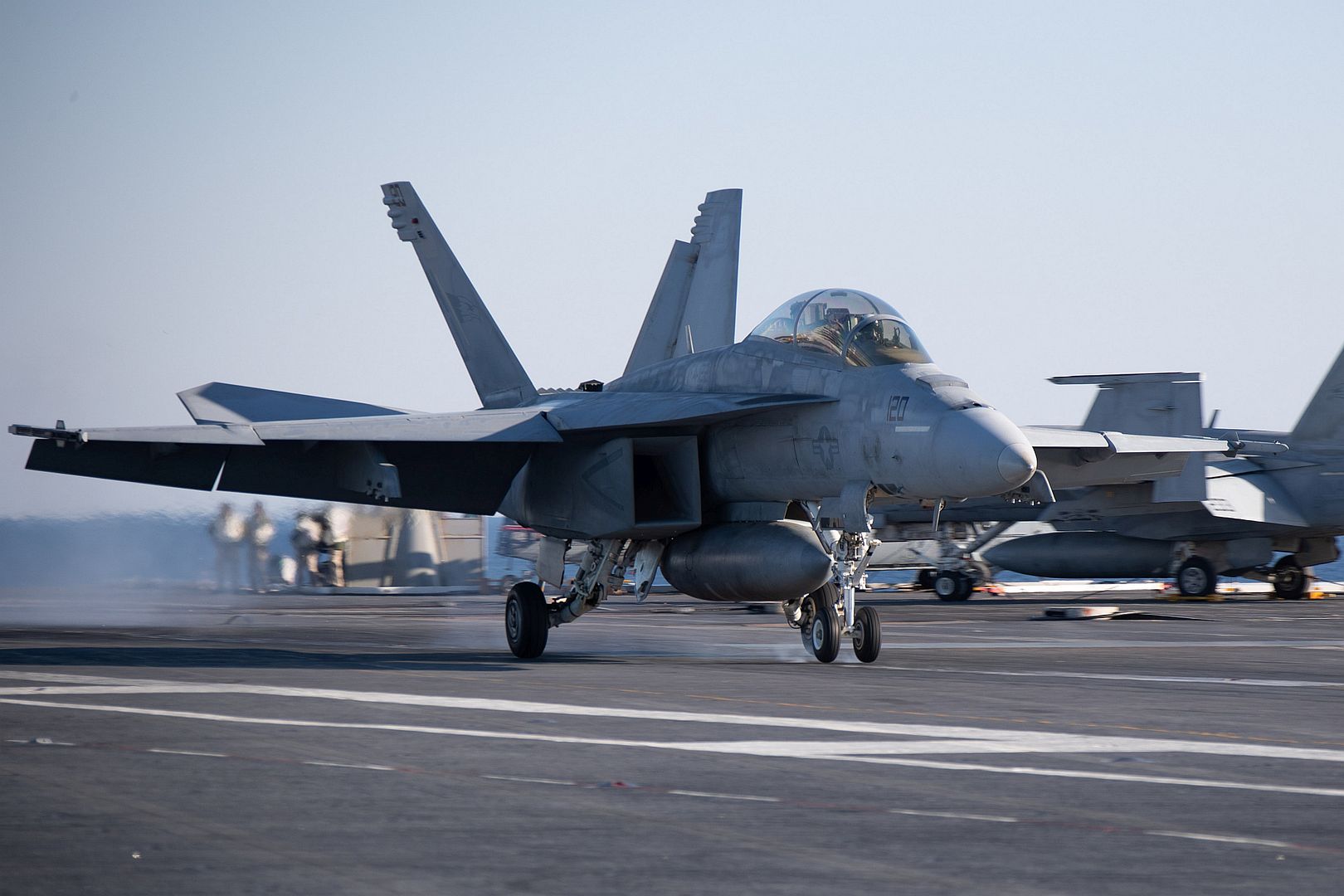
Aviation Boatswain's Mate (Handling) 2nd Class Jynishia Wilson, from Lakeland, Florida, assigned to USS Gerald R. Ford’s (CVN 78) air department, directs an F/A-18F Super Hornet attached to the “Flying Eagles” of Strike Fighter Squadron (VFA) 122, on Ford’s flight deck, March 8, 2021. Ford is underway in the Atlantic Ocean conducting carrier qualifications. (U.S. Navy photo by Mass Communication Specialist Seaman Jackson Adkins)
A U.S. Air Force KC-135 Stratotanker aircraft pilot, assigned to the 350th Expeditionary Air Refueling Squadron, performs pre-flight checks before conducting an air-refueling bomber task force mission with U.S. Air Force B-52 Stratofortress aircraft from the 5th Bomb Wing, Minot Air Force Base, ND, at Al Udeid Air Base, Qatar, March 7, 2021. The bomber deployment underscores the U.S. Military's commitment to regional security and demonstrates a unique ability to rapidly deploy on short notice. The B-52 is a long-range, heavy bomber that is capable of flying at high subsonic speeds of altitudes of up to 50,000 feet and provides the United States with a global strike capability. (U.S. Air Force photo by Staff Sgt. Trevor T. McBride)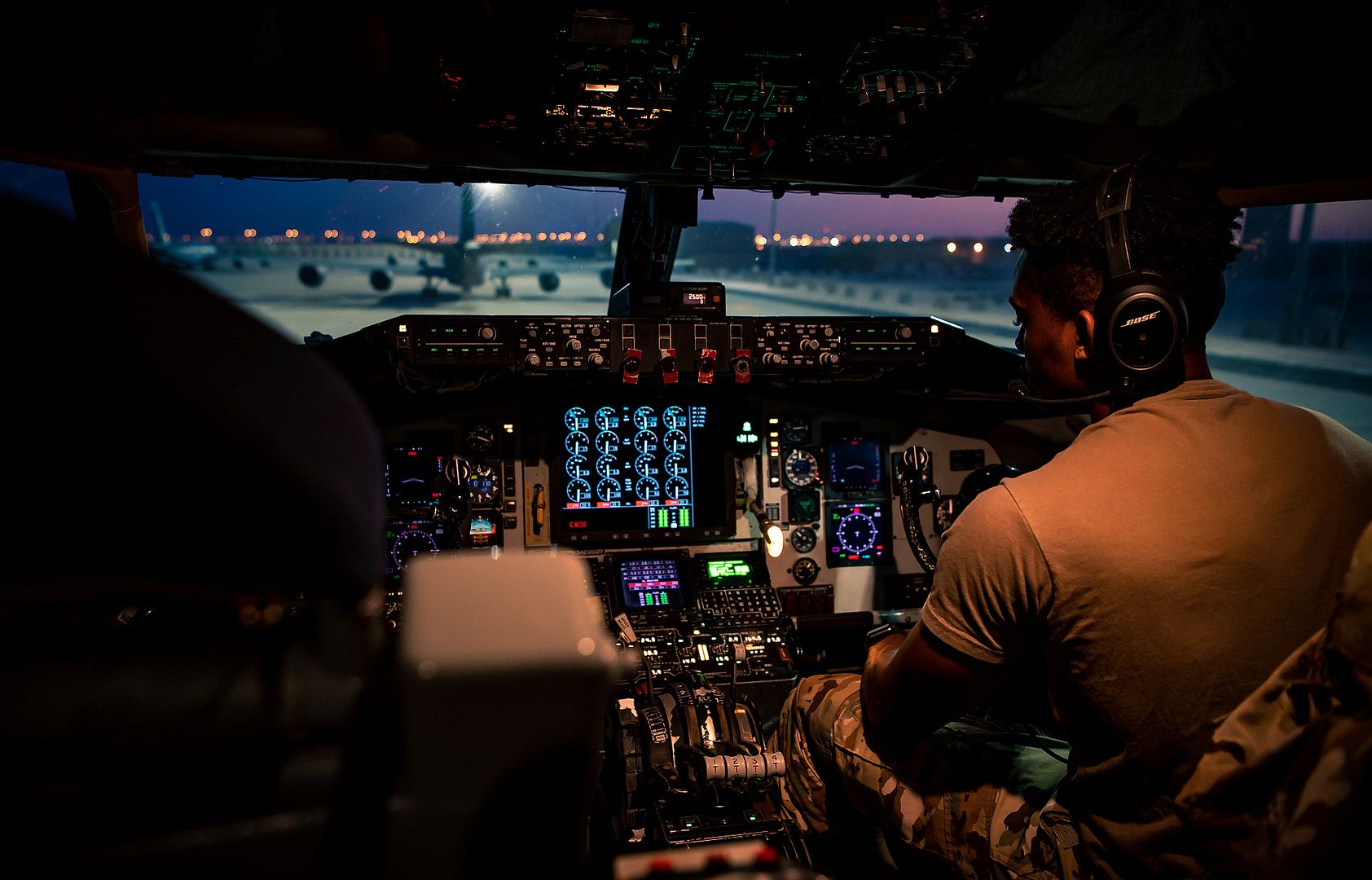
A U.S. Air Force B-52 Stratofortress aircraft from the 5th Bomb Wing, Minot Air Force Base, ND, departs after receiving fuel from a U.S. Air Force KC-135 Stratotanker aircraft, assigned to the 350th Expeditionary Air Refueling Squadron, during a bomber task force mission over the U.S. Central Command area of responsibility, March 7, 2021. The bomber deployment underscores the U.S. Military's commitment to regional security and demonstrates a unique ability to rapidly deploy on short notice. The B-52 is a long-range, heavy bomber that is capable of flying at high subsonic speeds of altitudes of up to 50,000 feet and provides the United States with a global strike capability. (U.S. Air Force photos by Staff Sgt. Trevor T. McBride)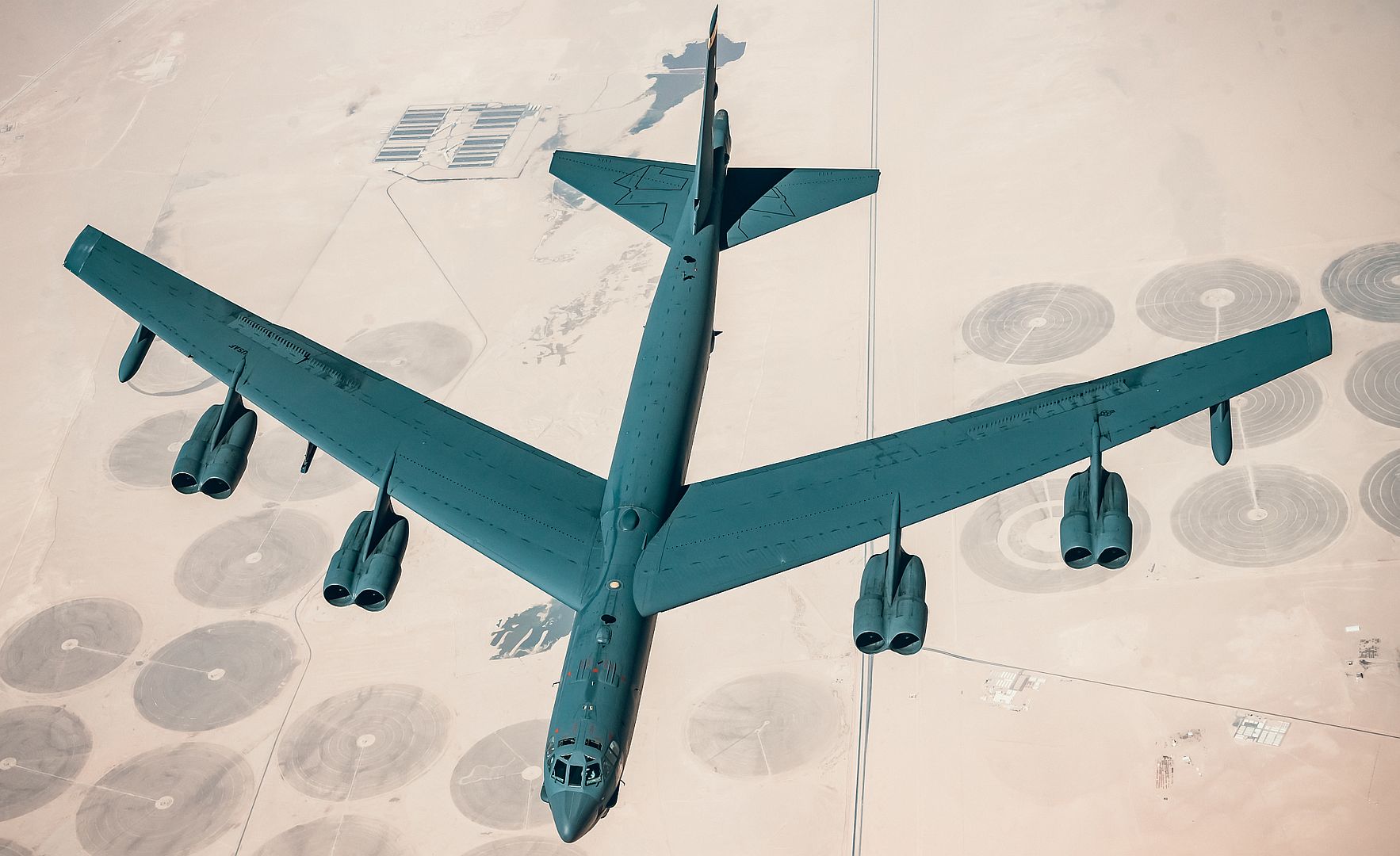
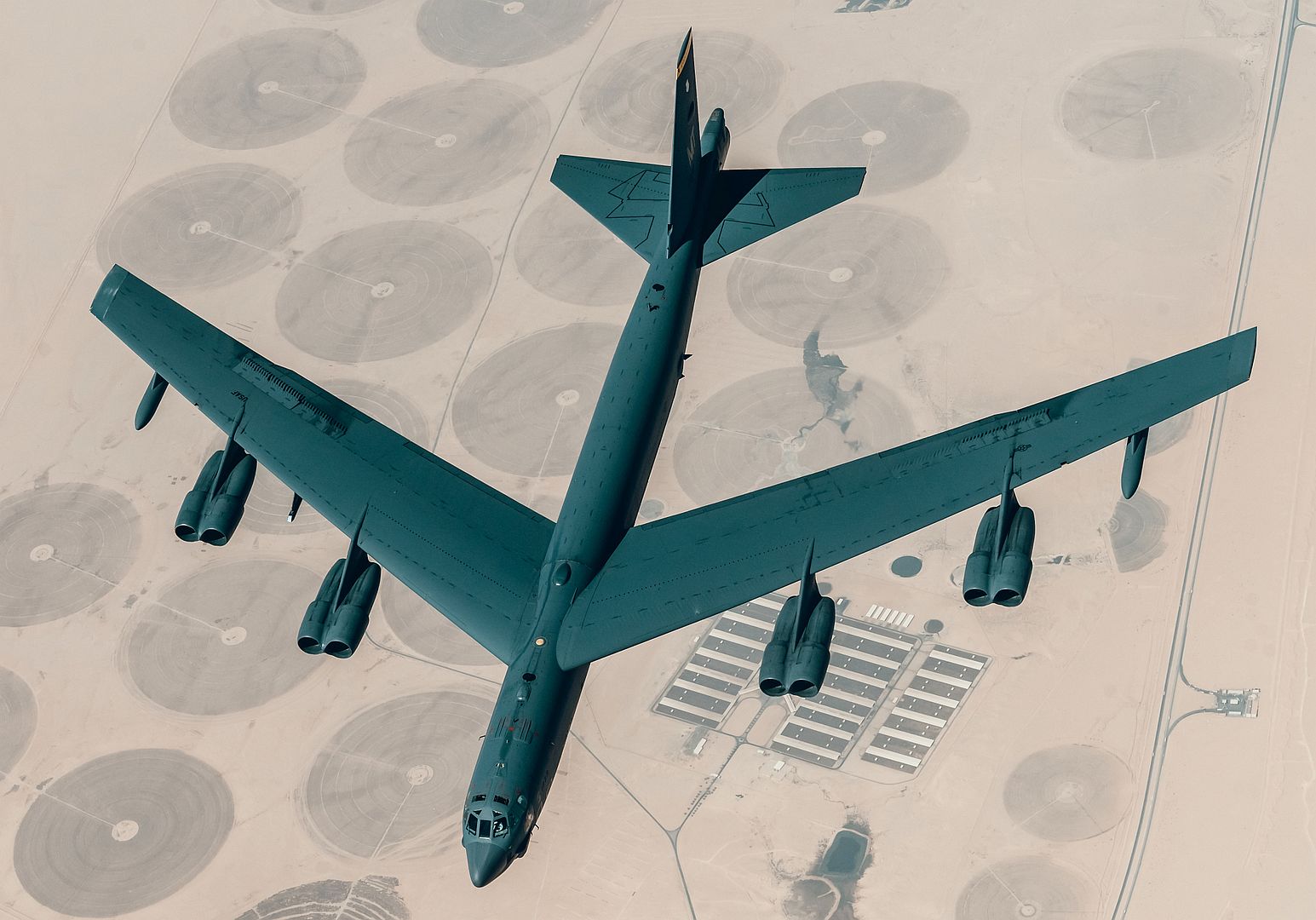
U.S. Air Force F-16 Fighting Falcon aircraft assigned to the 77th Expeditionary Fighter Squadron at Prince Sultan Air Base, Kingdom of Saudi Arabia, undergo a hot refueling operation performed by Airmen with the 379th Expeditionary Maintenance Group and 379th Expeditionary Logistics Readiness Squadron at Al Udeid Air Base, Qatar, Mar. 1, 2021. The F-16s received fuel with their engines still running in order to rapidly redeploy back into U.S. Central Command’s area of responsibility during the Air Forces Central Agile Combat Employment capstone event. The capstone event enhanced theater ACE competencies, validating operational capabilities and command and control while simultaneously strengthening joint and regional partnerships. (U.S. Air National Guard photo by Staff Sgt. Jordan Martin).jpg?width=1920&height=1080&fit=bounds)
An F-15E Strike Eagle assigned to the 332nd Air Expeditionary Wing taxis during an integrated combat turn training event at Al Udeid Air Base, Qatar, March 3, 2021. ICTs allow for a rapid redeployment of forces to ensure protection of U.S. Central Command’s area of responsibility. (U.S. Air Force photos by Staff Sgt. Greg Erwin)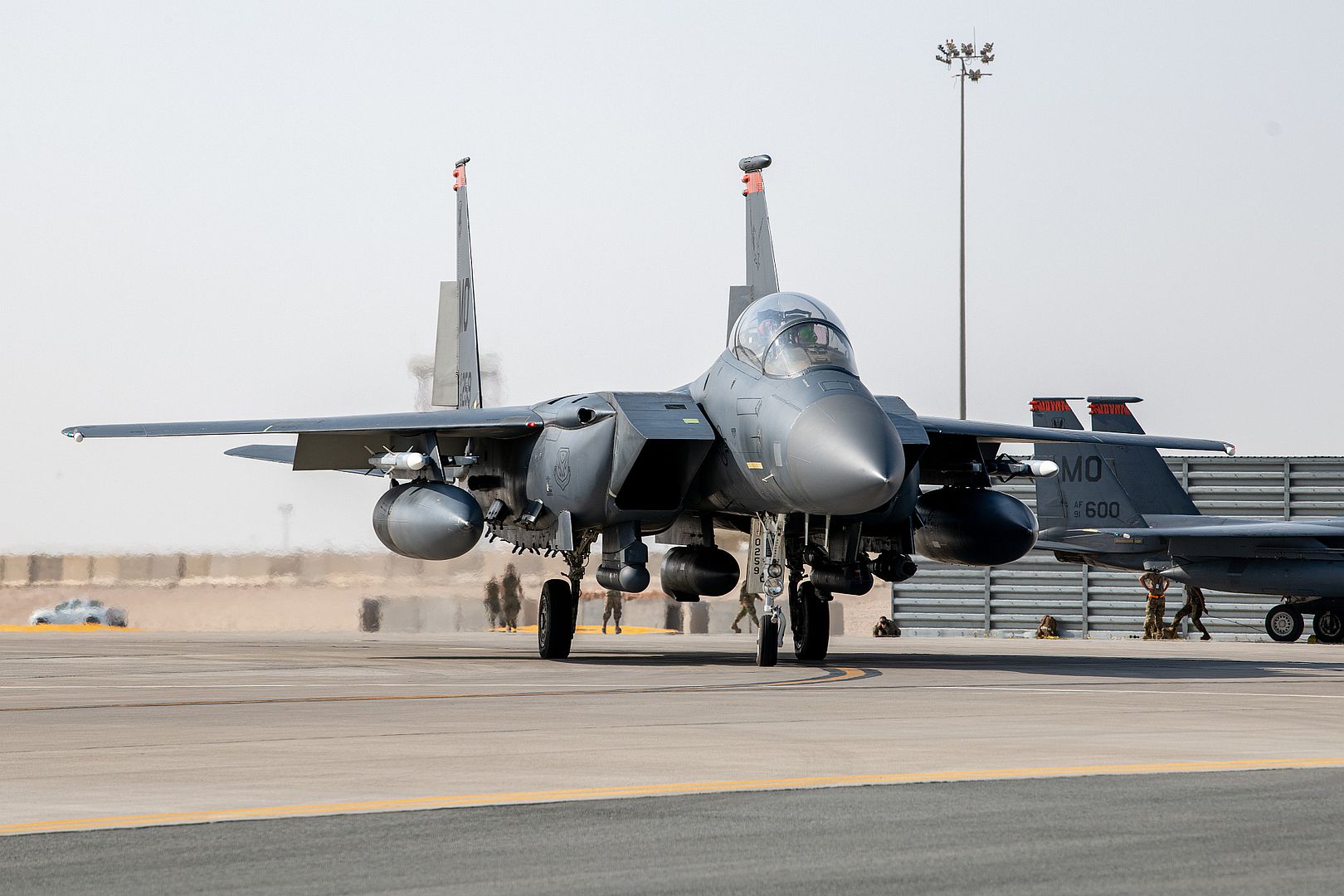
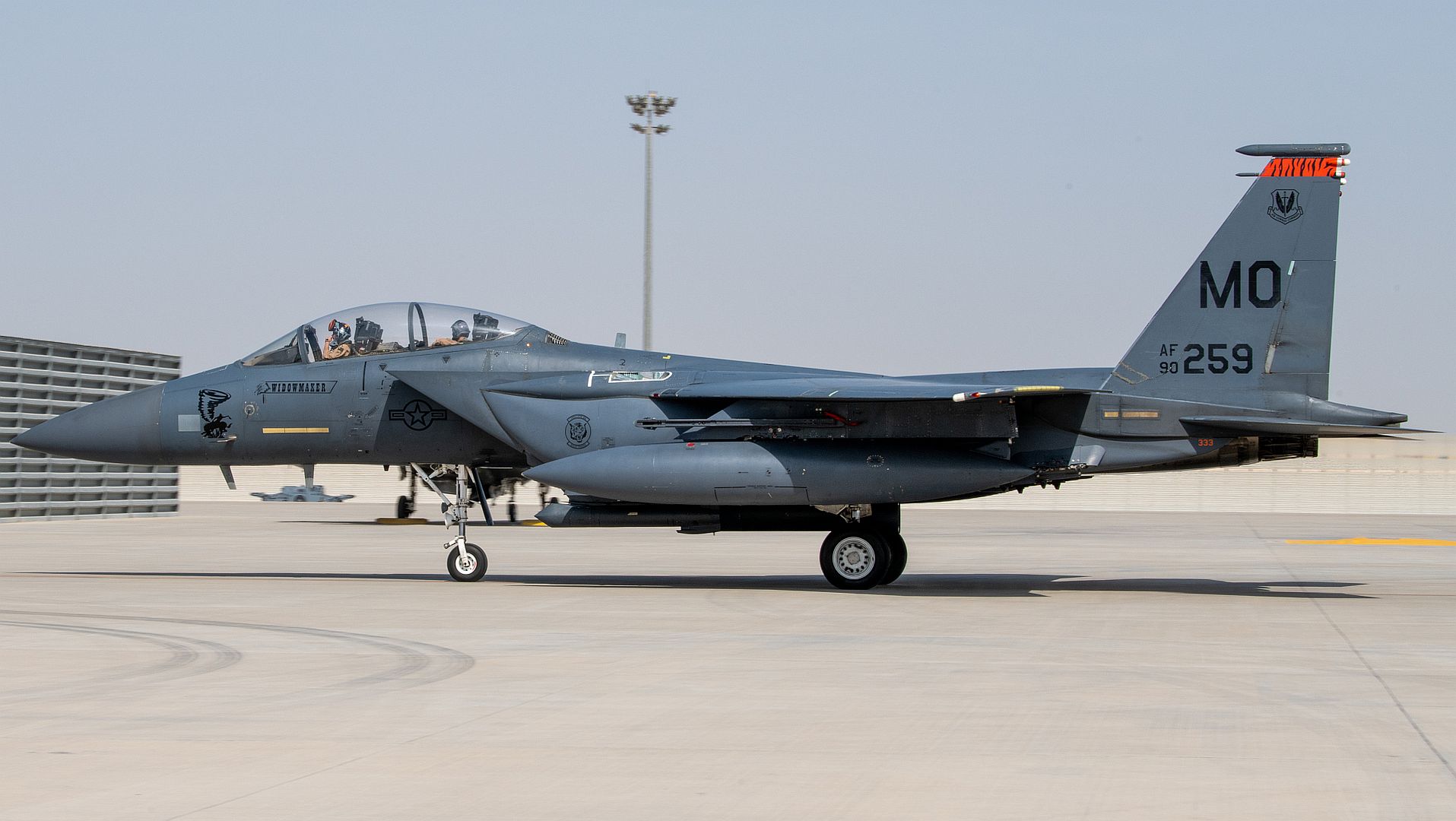
Pilots with the F-16 Viper and F-22 Raptor Demonstration Teams fly behind a KC-135 Stratotanker from the 465th Air Refueling Squadron assigned to Tinker Air Force Base, Oklahoma March 8, 2021. The F-16 team from Shaw Air Force Base, South Carolina, and the F-22 team from Joint Base Langley–Eustis, Virginia, are assigned to Air Combat Command and received fuel from the Okies during their flight back to their home stations after performing at an air show. (U.S. Air Force photo by Senior Airman Mary Begy)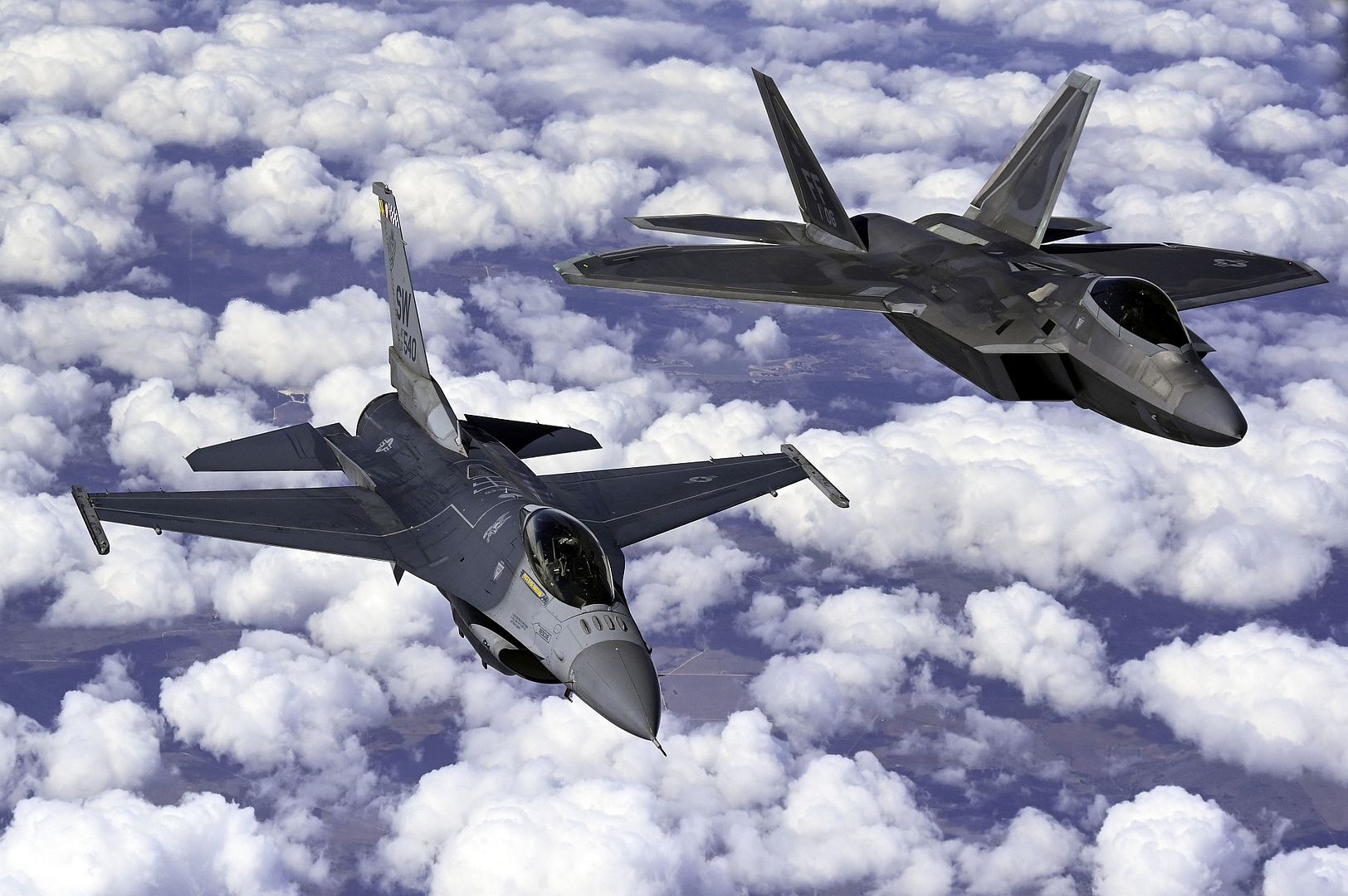
An F-16 Viper Demonstration Team pilot flies behind a KC-135 Stratotanker from the 465th Air Refueling Squadron, Tinker Air Force Base, Oklahoma, March 8, 2021. The F-16 team from Shaw Air Force Base, South Carolina, is assigned to Air Combat Command and received fuel from the Okies during their flight back to their home station after performing at an air show. (U.S. Air Force photo by Senior Airman Mary Begy)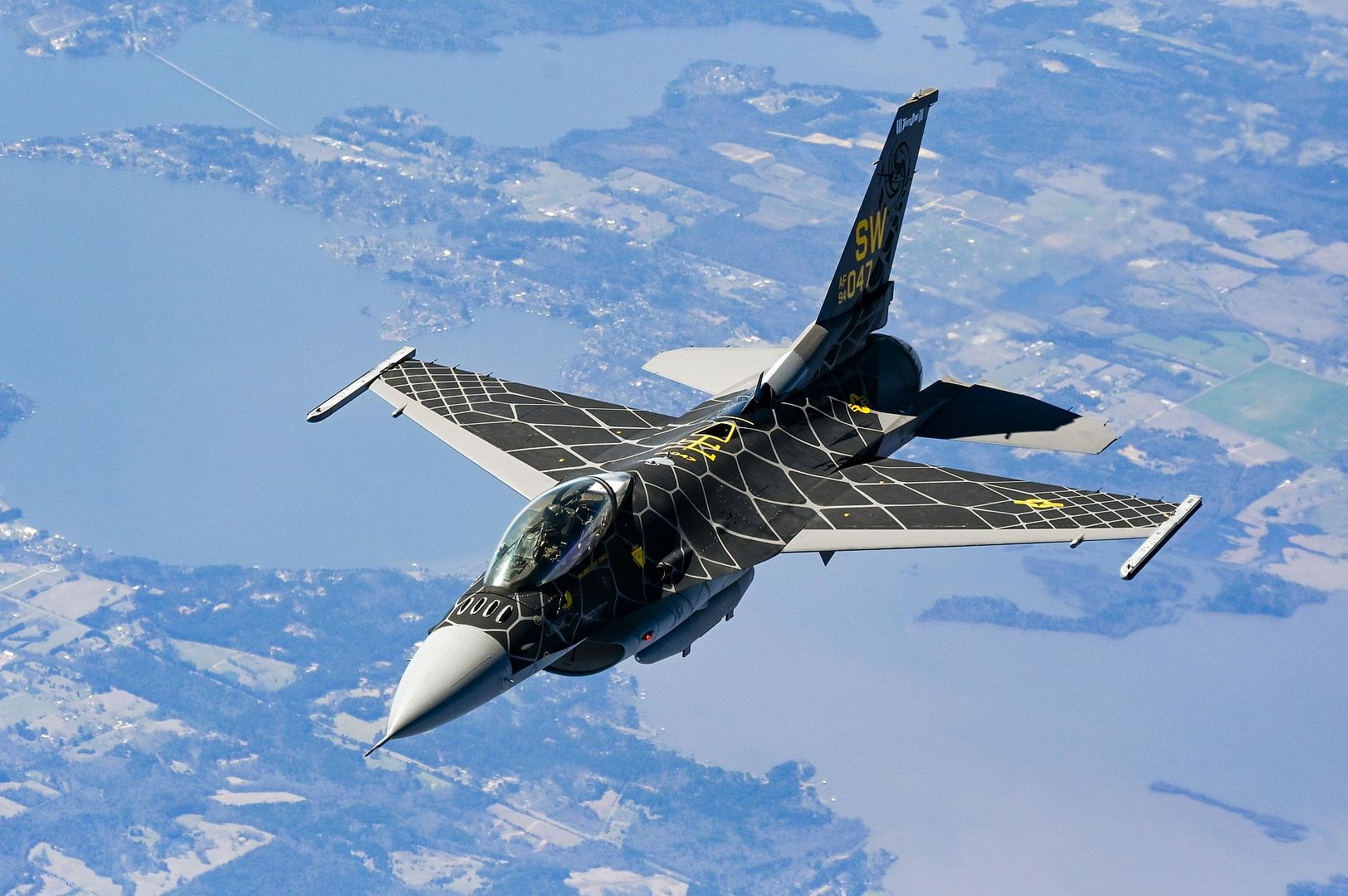
A U.S. Air Force F-16 Fighting Falcon assigned to the 314th Fighter Squadron from Holloman Air Force Base, New Mexico, taxis onto the runway at Tyndall Air Force Base, Florida, March 8, 2021. Tyndall hosts frequent Weapons System Evaluation Programs where aircraft from across the Department of Defense come to test their air-to-air combat capabilities. (U.S. Air Force photo by Airman 1st Class Tiffany Price)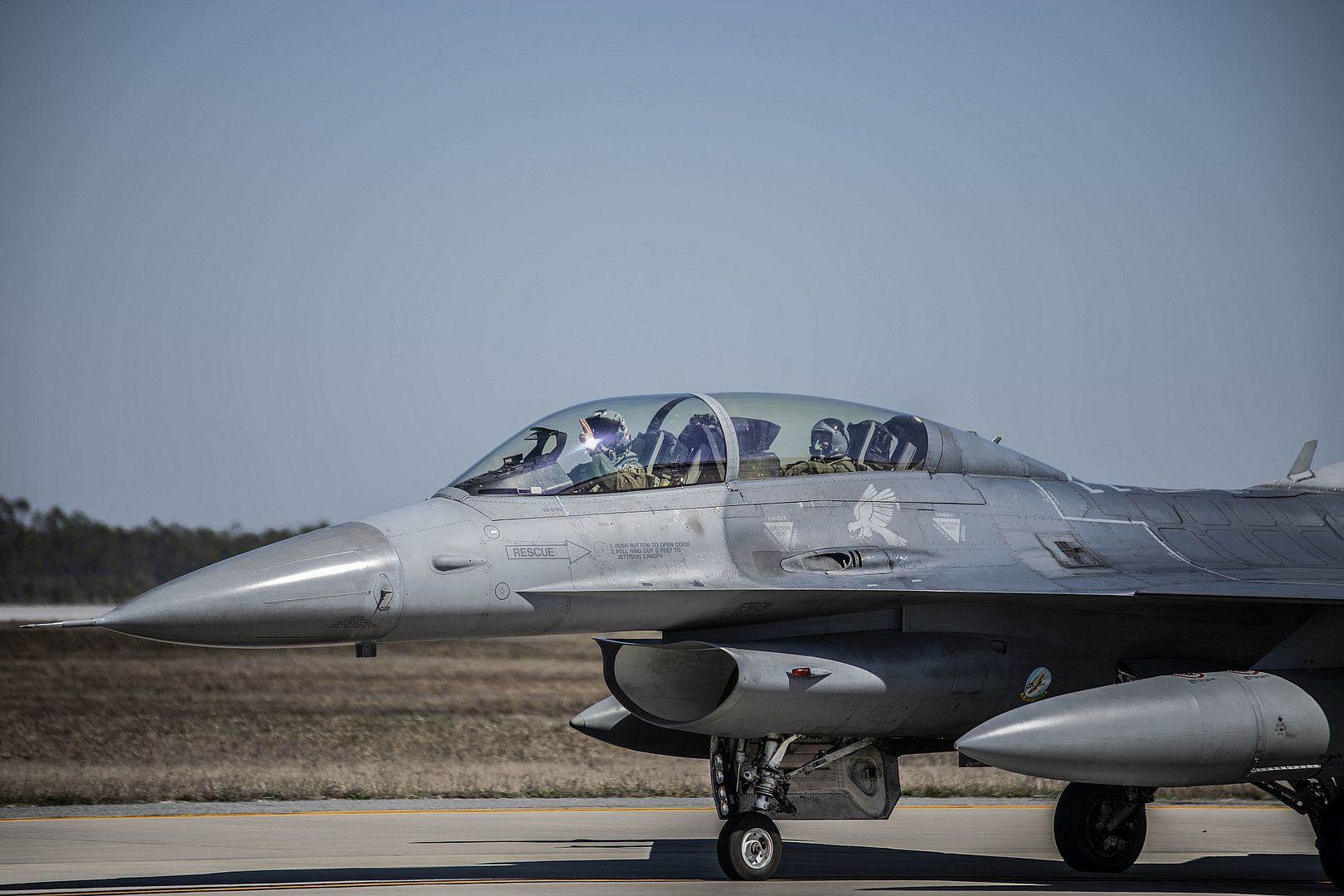
A B-52H Stratofortress "Wise Guy" lands on March 9, 2021 at Minot Air Force Base, ND. Wise Guy is one of the last B-52's to be resurrected from Davis-Monthan Air Force Base. (Air Force photo by Airman 1st Class Jesse Jenny)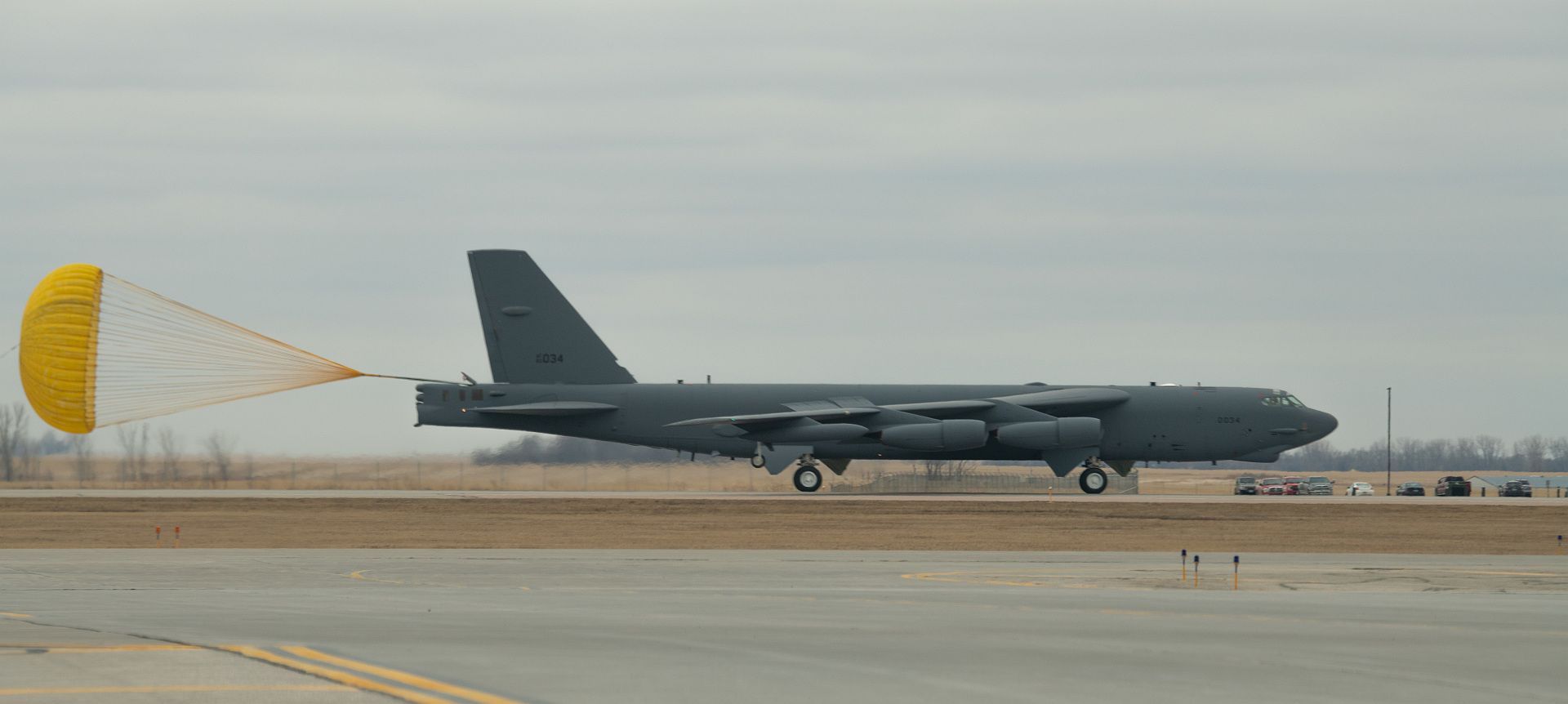
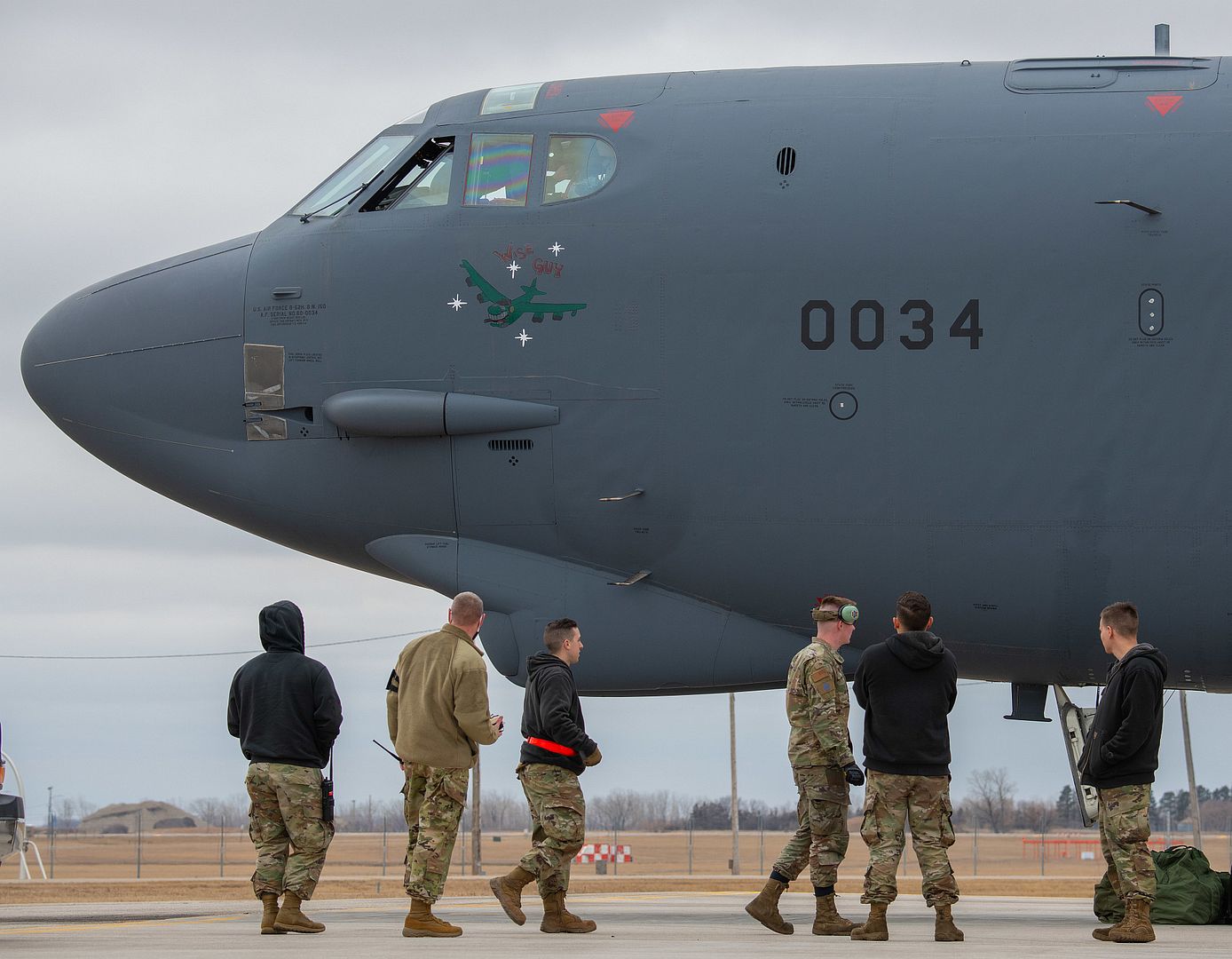
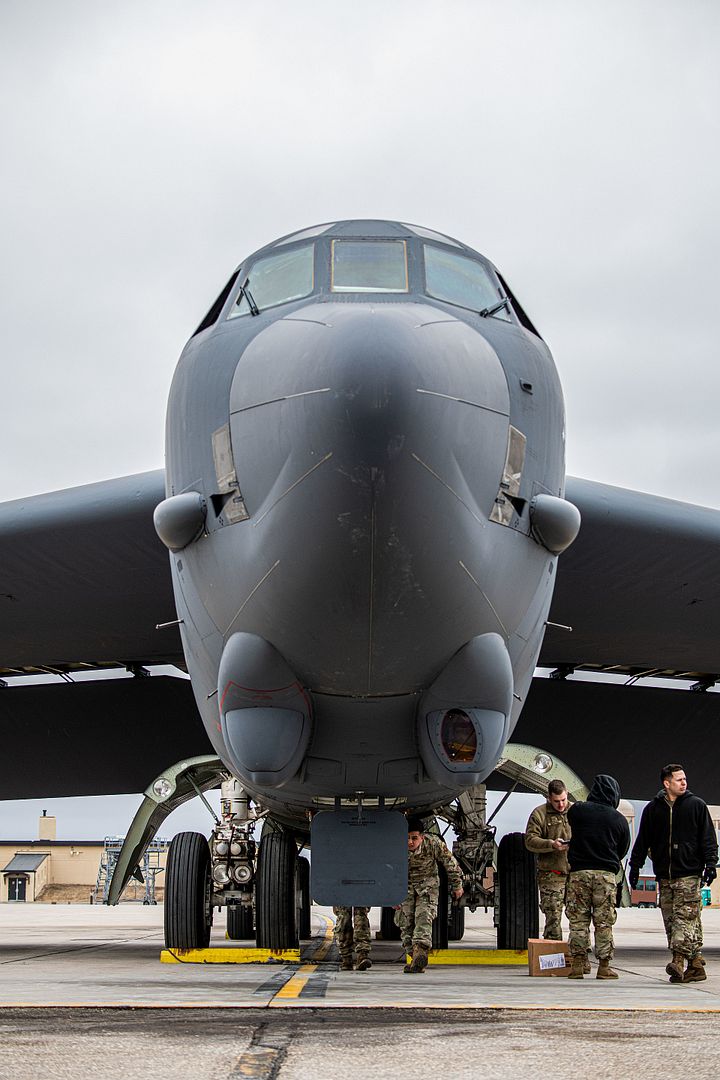
An F-15SG Strike Eagle from the 428th Fighter Squadron taxis on the runway at Nellis Air Force Base, Nevada, March 4, 2021. Over the course of two weeks, 2,500 service members will participate in Red Flag 21-2 to train in intensive simulated air combat sorties. (U.S. Air Force photo by Airman 1st Class Natalie Rubenak)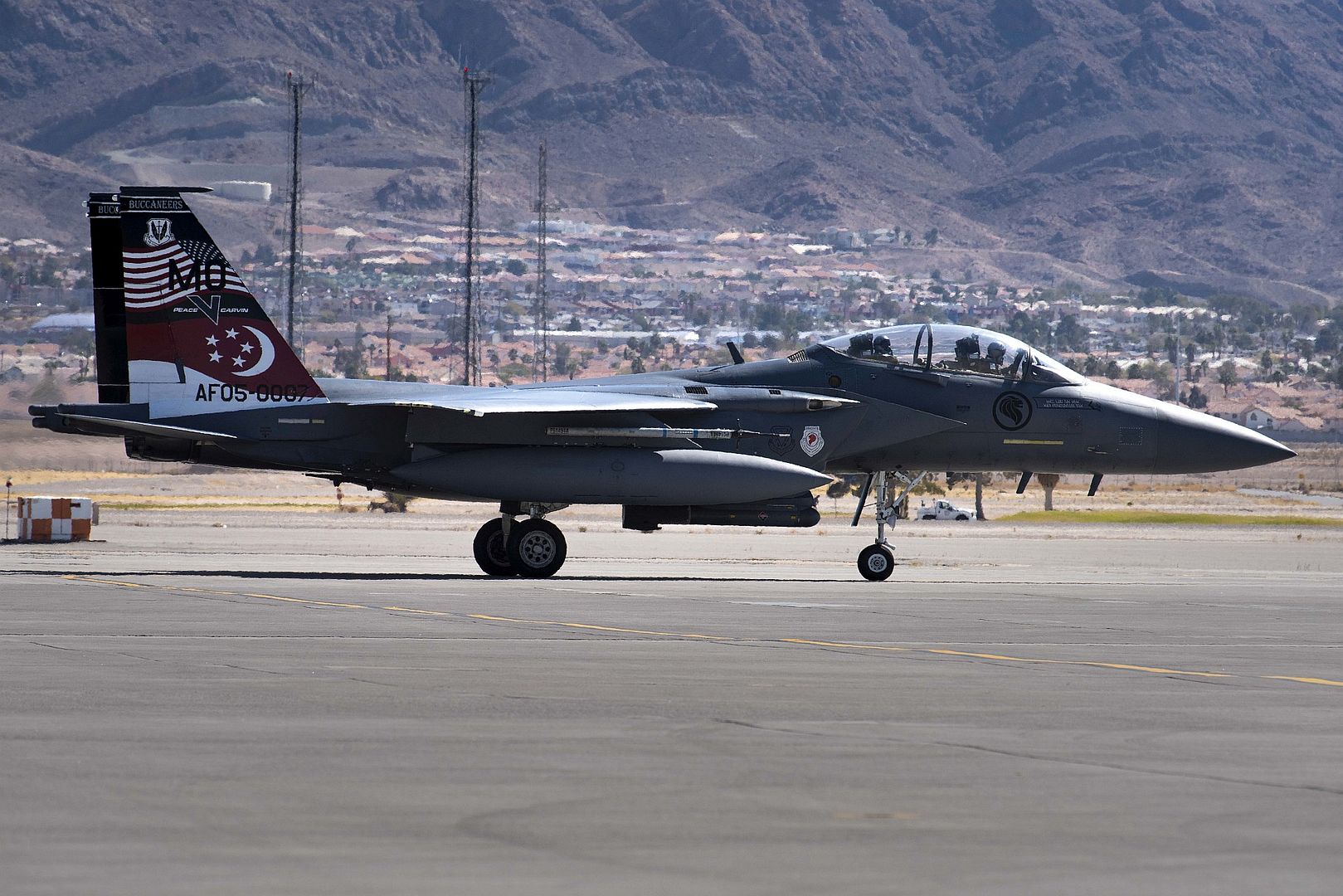
MISAWA, Japan (March 3, 2021) An EA-18G Growler, assigned to the "Black Ravens" of Electronic Attack Squadron (VAQ) 135, lands at Misawa Air Base. VAQ-135 provides fully operational EA-18G aircraft to perform unrestricted Electronic Attack as needed throughout the world. (U.S. Navy photo by Mass Communication Specialist 2nd Class Jan David De Luna Mercado)
-
 Main AdminNAF EL CENTRO, Calif. – The U.S. Navy Flight Demonstration Squadron, the Blue Angels conduct winter training onboard Naval Air Facility (NAF) El Centro March 9, 2021. NAF El Centro will host the first-ever radio broadcast of its inaugural Festival of Flight featuring the Blue Angels, March 13, 2021. “We are thankful to be in a position where we're able to execute an event and one which is a first for an airshow,” said Capt. William Perkins, commanding officer, NAF El Centro. The mission of NAF El Centro is to support the combat training and readiness of the warfighter. This includes air operations support to operational fleet and training squadrons as well as squadrons from other services (Marine Corps, Army, Air Force) and international military partners. (U.S. Navy photo by Mass Communication Specialist 3rd Class Drew Verbis/Released)
Main AdminNAF EL CENTRO, Calif. – The U.S. Navy Flight Demonstration Squadron, the Blue Angels conduct winter training onboard Naval Air Facility (NAF) El Centro March 9, 2021. NAF El Centro will host the first-ever radio broadcast of its inaugural Festival of Flight featuring the Blue Angels, March 13, 2021. “We are thankful to be in a position where we're able to execute an event and one which is a first for an airshow,” said Capt. William Perkins, commanding officer, NAF El Centro. The mission of NAF El Centro is to support the combat training and readiness of the warfighter. This includes air operations support to operational fleet and training squadrons as well as squadrons from other services (Marine Corps, Army, Air Force) and international military partners. (U.S. Navy photo by Mass Communication Specialist 3rd Class Drew Verbis/Released)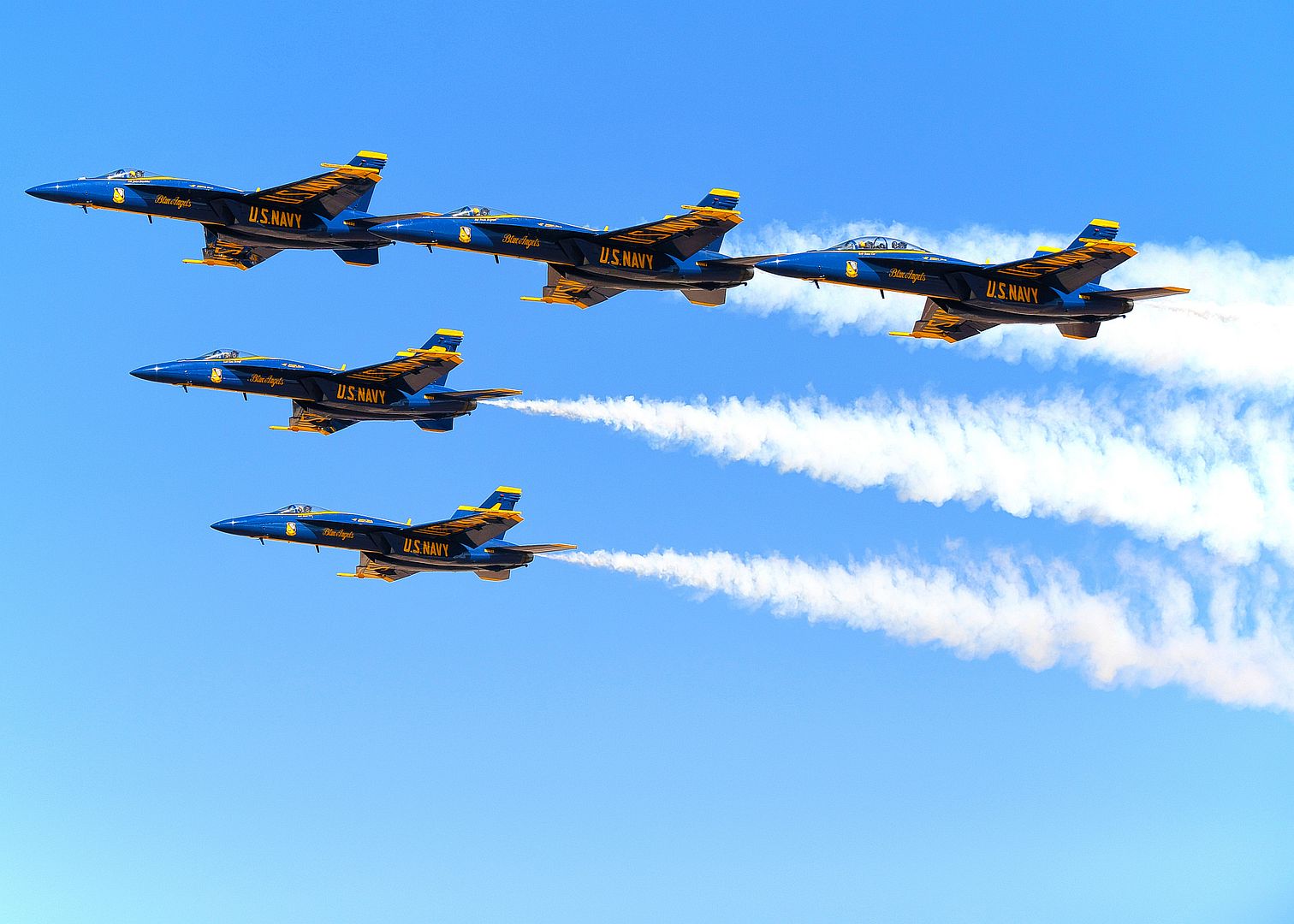
A line of T-38A Talons from the 2nd Fighter Training Squadron sit on the flight line at Tyndall Air Force Base, Florida, March 8, 2021. The 2nd FTS is tasked to provide world class, professional air-to-air threat replication. (U.S. Air Force photo by Airman 1st Class Anabel Del Valle)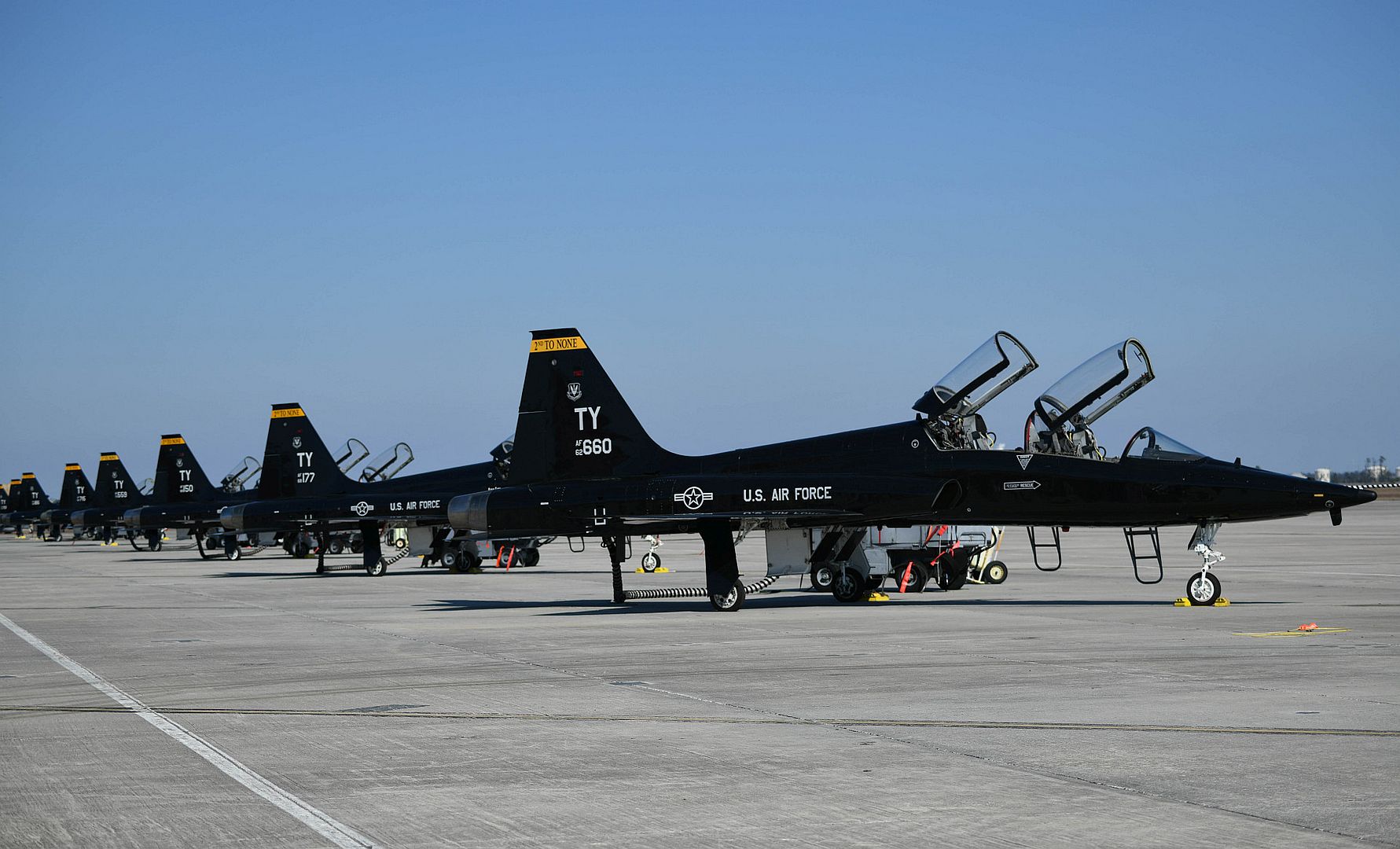
An F-16 Fighting Falcon from the 64th Aggressor Squadron takes flight for Red Flag 21-2 at Nellis Air Force Base, Nevada, March 8, 2021. The 64th AGRS prepares U.S. allied and partner nation aircrews for aerial combat with accurate and realistic threat replication training. (U.S. Air Force photos by Airman 1st Class Natalie Rubenak and by Senior Airman Dylan Murakami)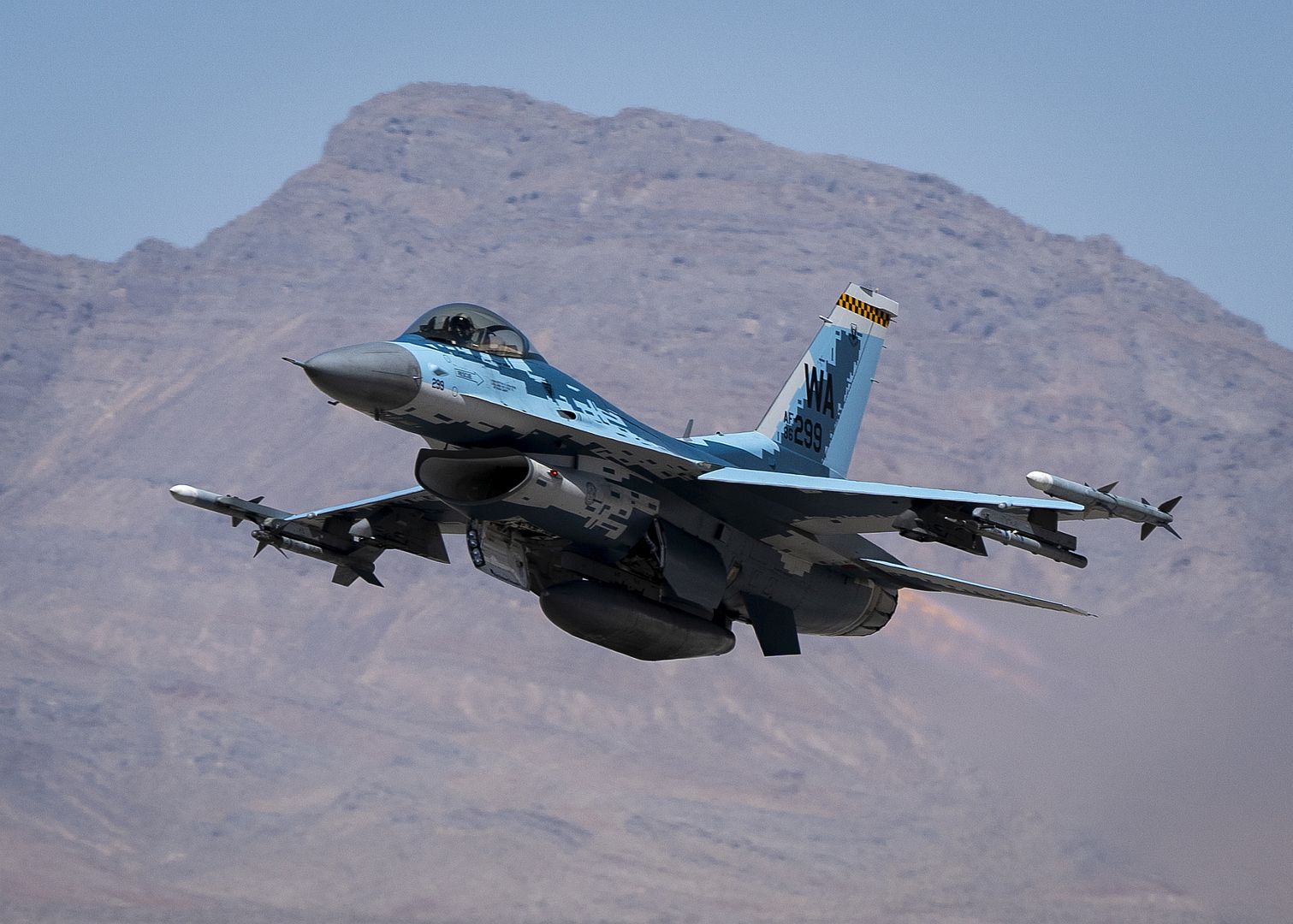
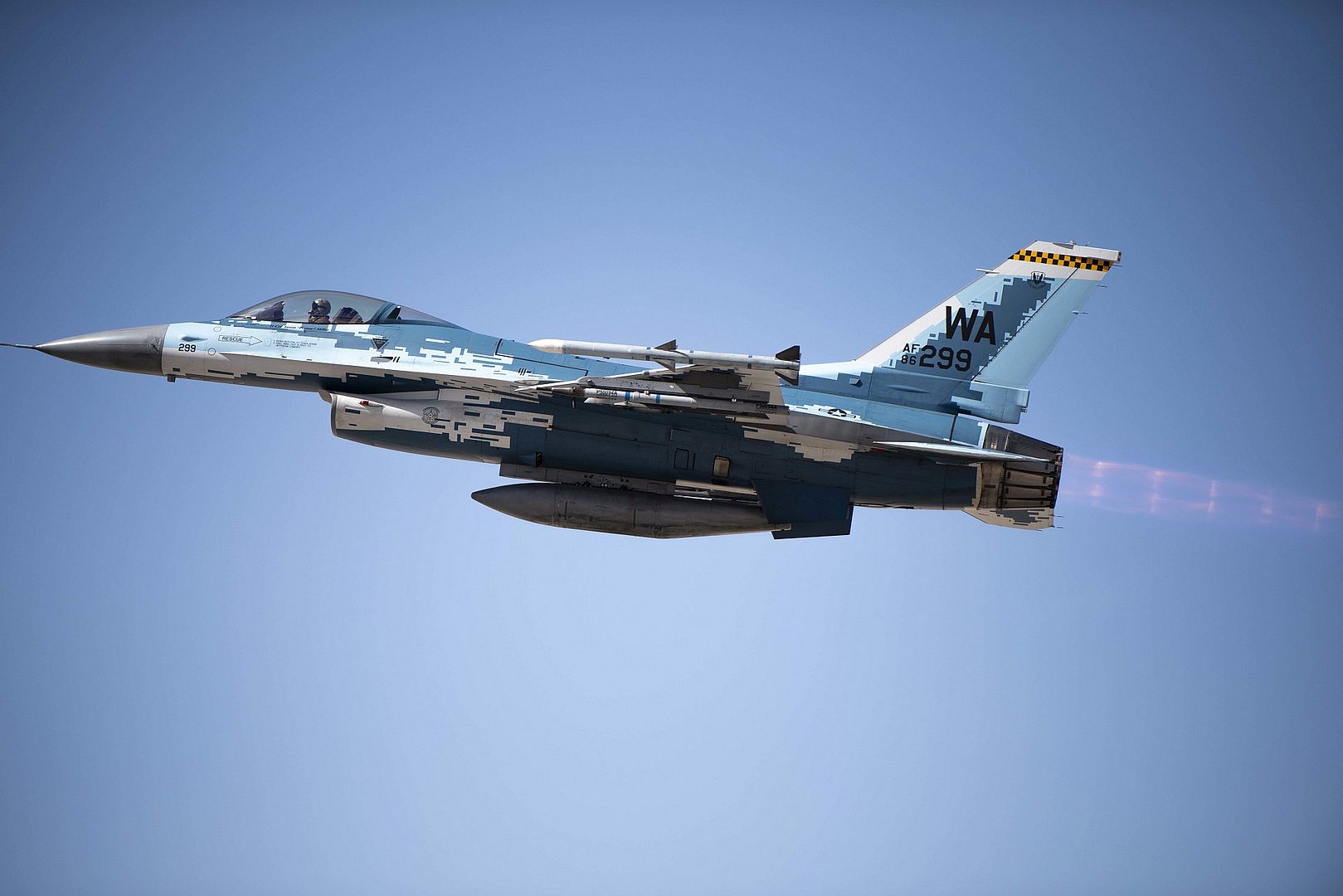
An F-16 Fighting Falcon from the 64th Aggressor Squadron takes flight for Red Flag 21-2 at Nellis Air Force Base, Nevada, March 8, 2021. The all-black design of the fighter jet is meant to simulate potential adversary aircrafts and was given the name “Wraith." (U.S. Air Force photos by Airman 1st Class Natalie Rubenak and by Senior Airman Dylan Murakami)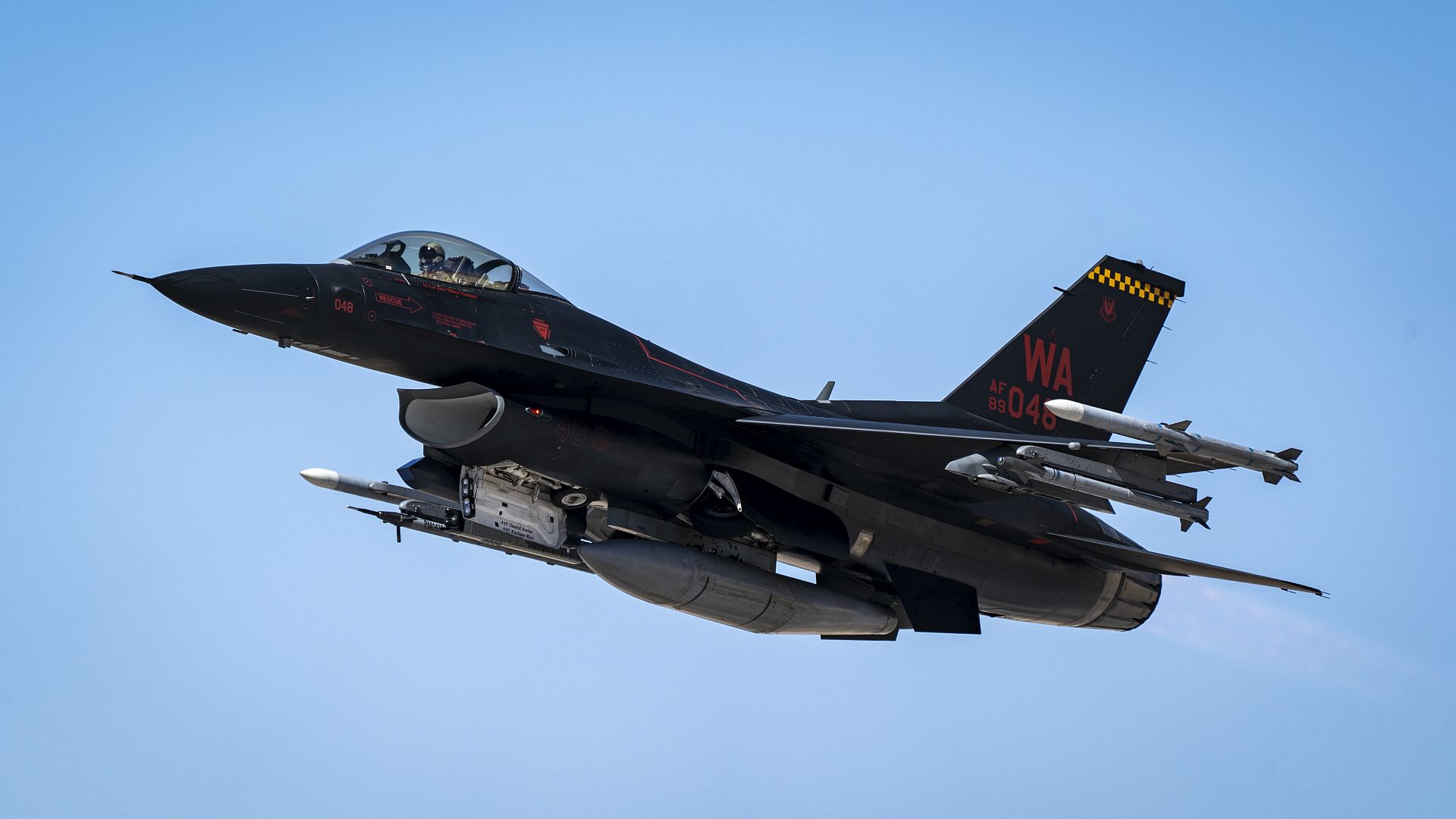

An F-15SG Strike Eagle assigned to the 428th Fighter Squadron at Mountain Home Air Force Base, Idaho, takes off during Red Flag 21-2 at Nellis Air Force Base, Nevada, March 8, 2021. This iteration of Red Flag will host 2,500 U.S. and international participants from a dozen states, Singapore, Sweden and seven NATO member nations. (U.S. Air Force photo by Senior Airman Dylan Murakami)
An EA-18G Growler assigned to Electronic Attack Squadron 138 at Naval Air Station Whidbey Island, Washington, takes off during Red Flag 21-2 at Nellis Air Force Base, Nevada, March 8, 2021. The 57th Wing’s 414th Combat Training Squadron conducts Red Flag exercises to provide aircrews the experience of multiple, intensive air combat sorties in the safety of a training environment. (U.S. Air Force photo by Senior Airman Dylan Murakami)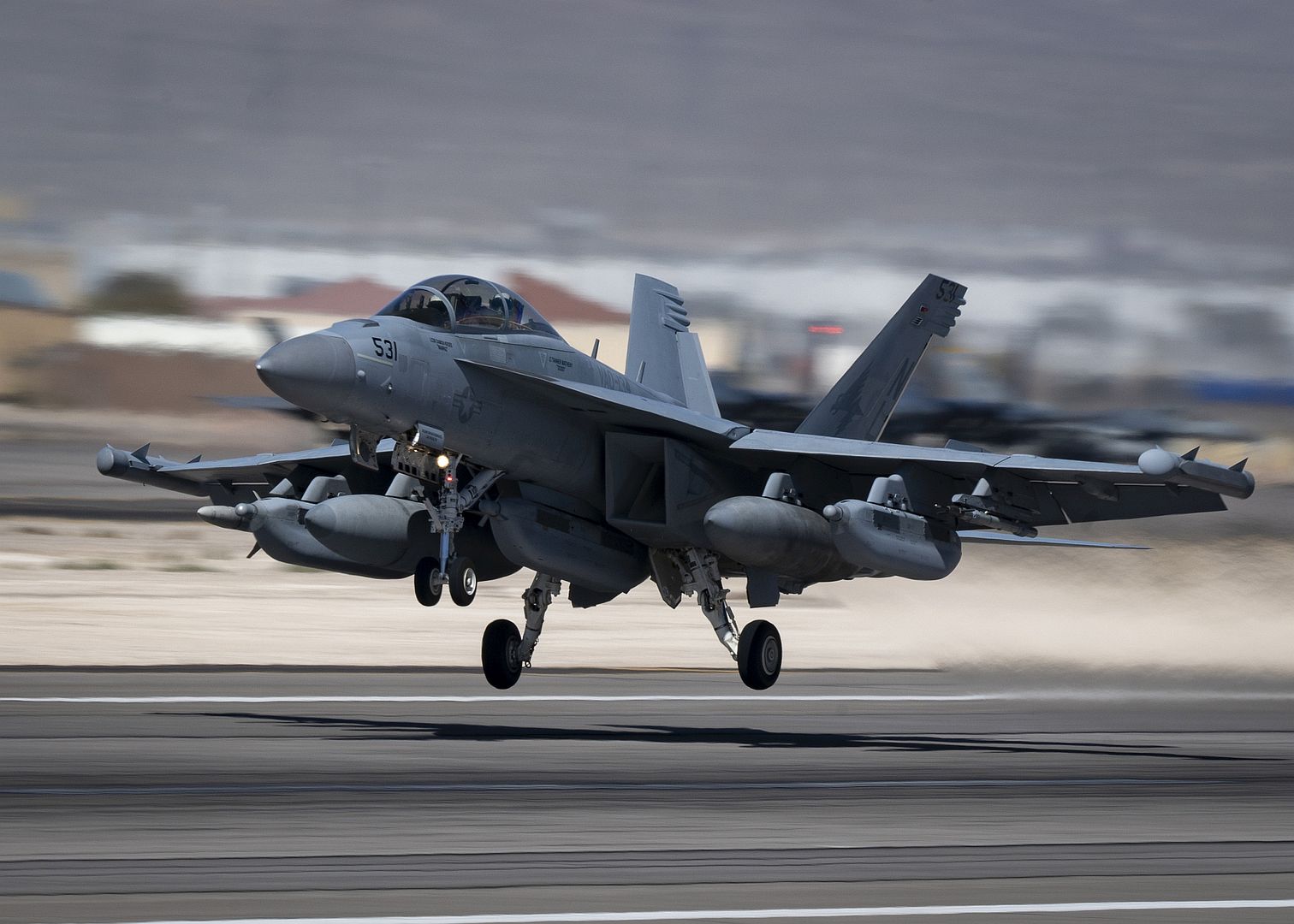
MOROCCO (March 4, 2021) An F/A-18E Super Hornet, attached to the "Gunslingers" of Strike Fighter Squadron (VFA) 105, embarked on board the aircraft carrier USS Dwight D. Eisenhower (CVN 69), conducts in-flight refueling with an F-5E Tiger II from the Royal Moroccan Air Force, March 4, 2021.The Dwight D. Eisenhower Carrier Strike Group is participating in Lightning Handshake, a bi-lateral maritime exercise between the U.S. and the Royal Moroccan Navy (RMN) and Royal Moroccan Air Force (RMAF). Dwight D. Eisenhower is on a routine deployment in the U.S. 6th Fleet area of operations in support of U.S. national interests and security in Europe and Africa. (U.S. Navy photos by Lt. Cmdr. Robert Wolcott)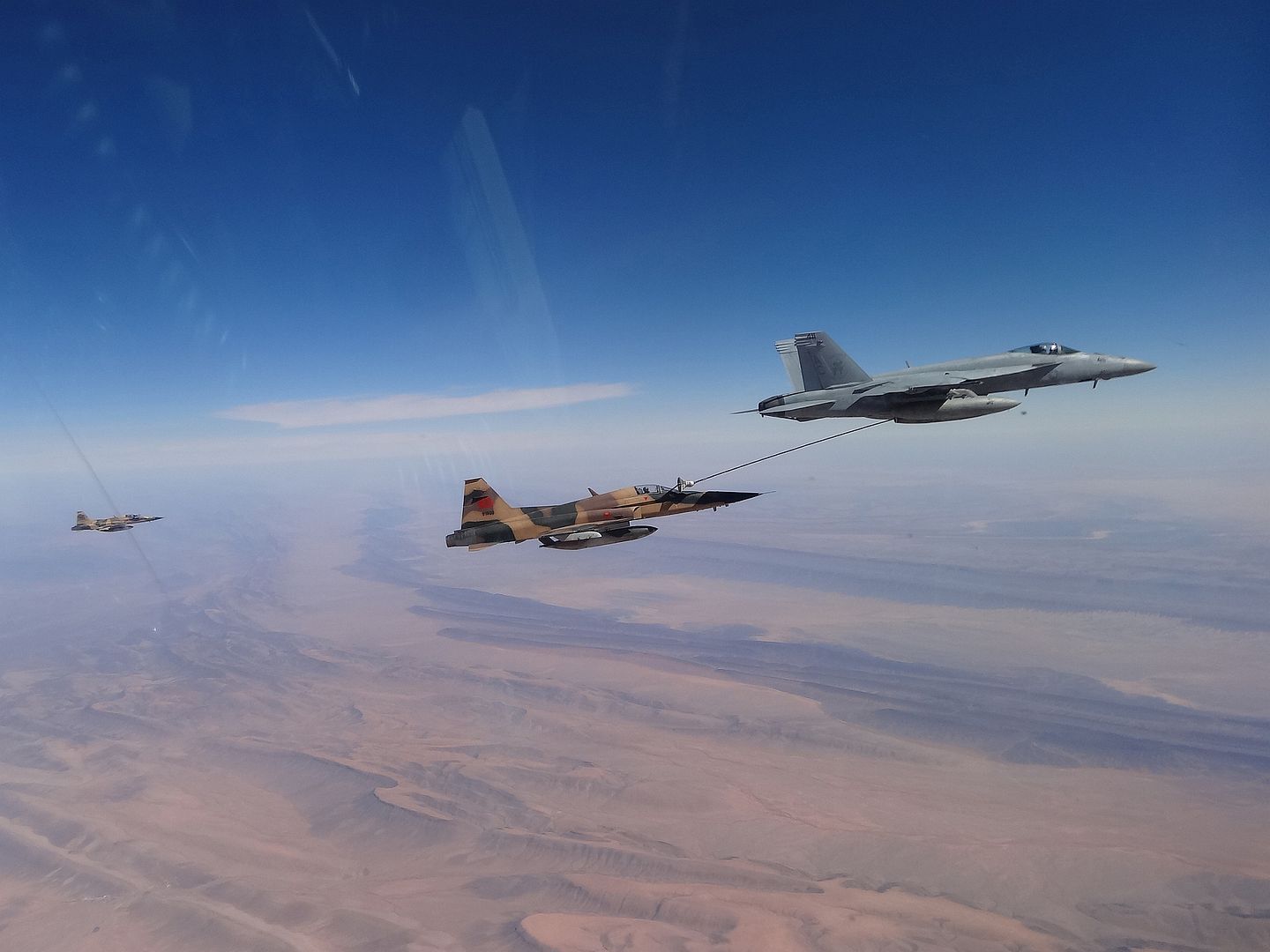

FORT WORTH, Texas, March 10, 2021 /PRNewswire/ -- Earlier this week, L-001, Denmark's first F-35 Lightning II production aircraft flew its inaugural flight. Denmark is the fifth European NATO nation to fly and operate an F-35, strengthening NATO's 5th generation airpower foundation. Denmark is joining four other European nations who already operate the F-35: the United Kingdom, the Netherlands, Norway and Italy.
Like the F-16 before it, the F-35 is spearheading NATO's air power and ensuring strategic integration of allied combat airpower. The vital interoperability of the 5th Generation F-35 binds 13 allies and partners with the United States in air dominance and enabling critical joint capabilities. The F-35 will serve as a force multiplier for Denmark, allowing the Royal Danish Air Force to train and fight alongside NATO allies and create a strong deterrent.
"Achieving the first flight of Denmark's first F-35 is major milestone for the Denmark F-35 program and a testament to the outstanding abilities of our dedicated and highly trained joint industry and government team," said Bill Brotherton, acting F-35 vice president and general manager. "This team's focus on delivering the most effective, survivable and connected fighter in the world will ensure the sovereign protection of Denmark and strengthen allies and partners through the NATO F-35 coalition."
L-001 is scheduled to be delivered to the Royal Danish Air Force in April and will be flown to Luke Air Force Base, Arizona, later this year for pilot and maintainer training. F-35s will arrive in Denmark in 2023 and be based at Royal Danish Air Force's Fighter Wing Skrydstrup where it will safeguard the skies over Denmark and its NATO allies.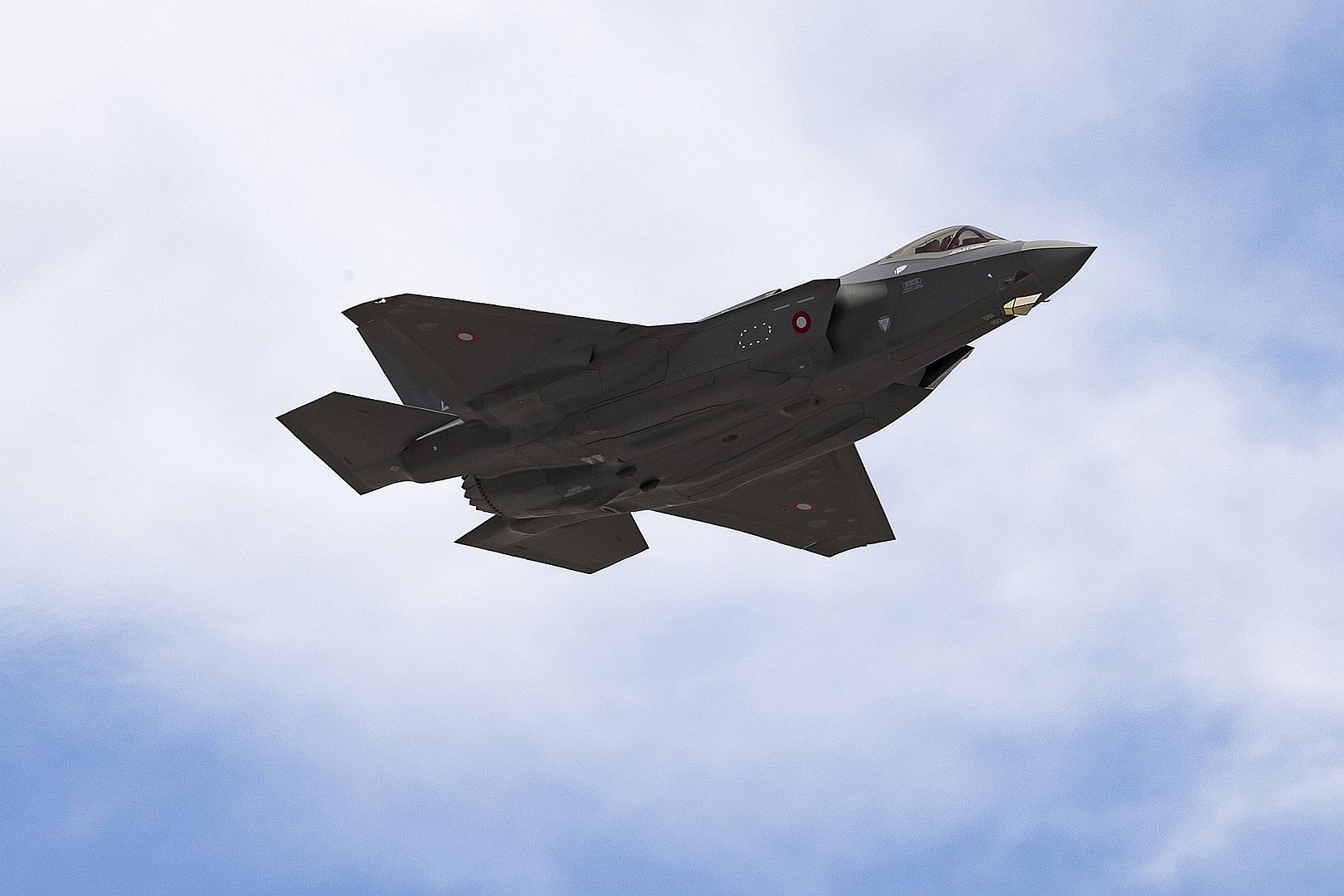
Saint-Cloud, France, March 10, 2021 – Dassault Aviation today announced that the company’s widebody Falcon 6X has successfully completed its first flight as planned in the first quarter of 2021, demonstrating the maturity of the program and opening the test campaign for certification.
“Today’s flight is another milestone in Dassault history, made all the more satisfying by the remarkable efforts of the entire Dassault organization and its partners over the challenging past year,” said Dassault Aviation Chairman/CEO Eric Trappier. “We dedicate today’s achievement to Olivier Dassault, who died tragically on Sunday,” continued Trappier. “Olivier was a Falcon pilot who perfectly embodied his family’s boundless passion for aviation.”
“The 6X is the latest example of the fusion of military know-how and business aviation expertise for which Dassault Aviation is so respected,” added Trappier. “The new capabilities in efficiency, performance and safety it offers will set a new benchmark in the long-range segment. This airplane will also set a new standard in terms of cabin comfort and spaciousness, as demanded by our customers.”
With test pilots Bruno Ferry and Fabrice Valette at its controls, aircraft 6X s/n 01 lifted off from Dassault Aviation’s Mérignac plant near Bordeaux at 2:45 PM. This about two-hour-thirty maiden flight was executed per the test plan, with pilots testing aircraft handling qualities, engine response and the behavior of key aircraft systems. The aircraft topped out at 40,000 ft and reached a speed of M0.8 before returning to its base.
“The 6X flew exactly as predicted by our models. From a pilot’s perspective, it flies like a Falcon, which is to say with perfect precise handling in all phases of flight,” said Ferry. “Fabrice and I are honored to have made the latest first flight in another fantastic Falcon.”
Serial number 01’s next flight will combine test activities with a hop to Istres, near Marseilles, where the Dassault flight test center is located and the bulk of the testing program will take place. Falcon 6X s/n 02 and 03 are scheduled to take to the air in the coming months.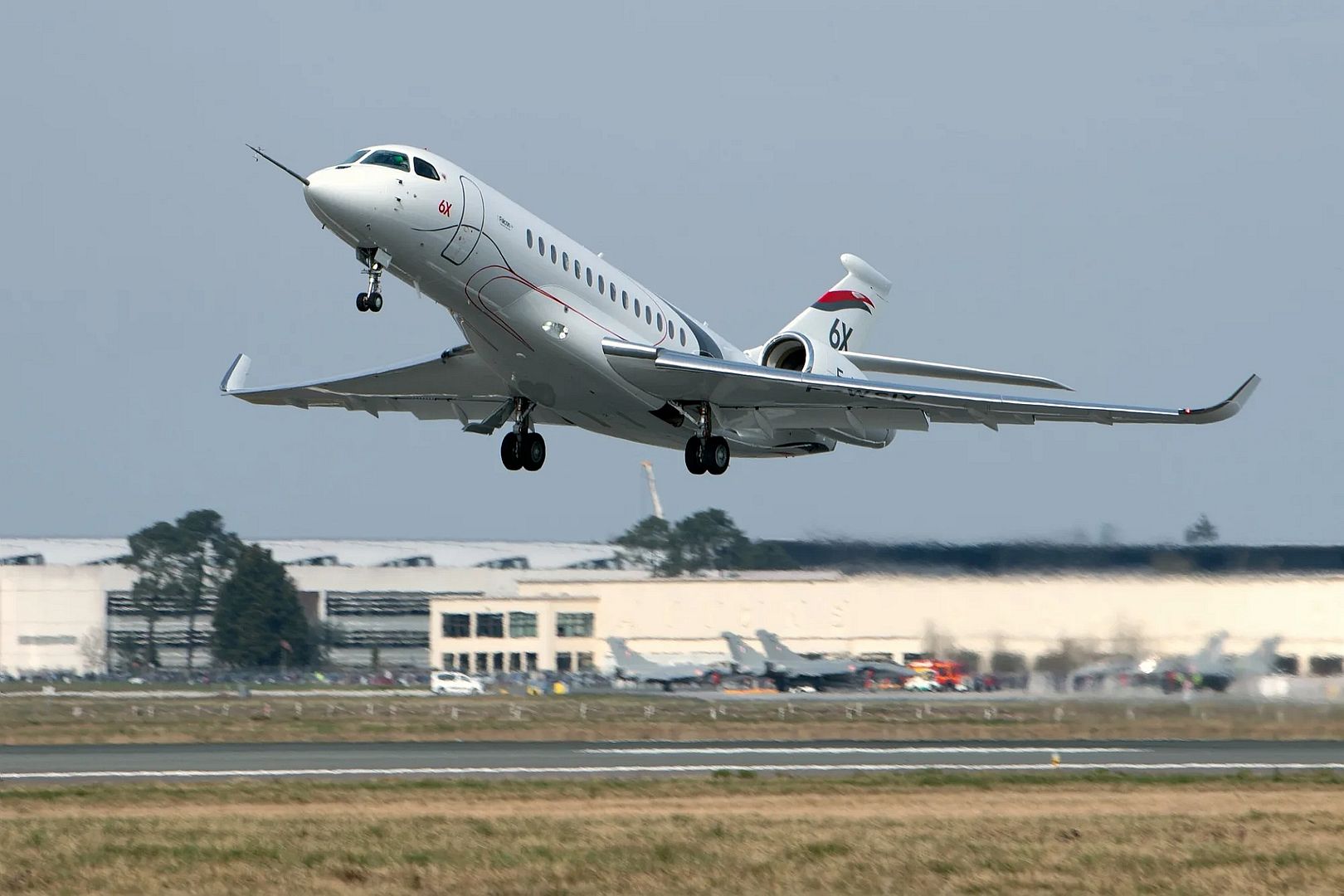
WICHITA, Kan. (March 10, 2021) – Textron Aviation today announced it has achieved Type Certification by the Federal Aviation Administration (FAA) for its newly upgraded twin turboprop Beechcraft King Air 260, paving the way for customer deliveries to commence in the coming weeks and launching a new era for the renowned King Air 200 series aircraft. Announced in December 2020, the King Air 260 features the latest technological advancements to the cockpit and improvements to the cabin, reflecting the company’s continued commitment to making substantial investments to its current industry-leading products.
The Beechcraft King Air 260 turboprop is designed and manufactured by Textron Aviation Inc., a Textron Inc. (NYSE:TXT) company.
“The continual conversations we have with our customers play an integral role in the decisions we make about the design of new aircraft, as well as enhancements to our existing fleet,” said Chris Hearne, senior vice president, Engineering and Programs. “With the King Air 260, we utilized that valuable feedback and truly elevated the flying experience for both pilots and passengers. And now, with certification complete, we are looking forward to getting the King Air 260 into the hands of so many eager customers.”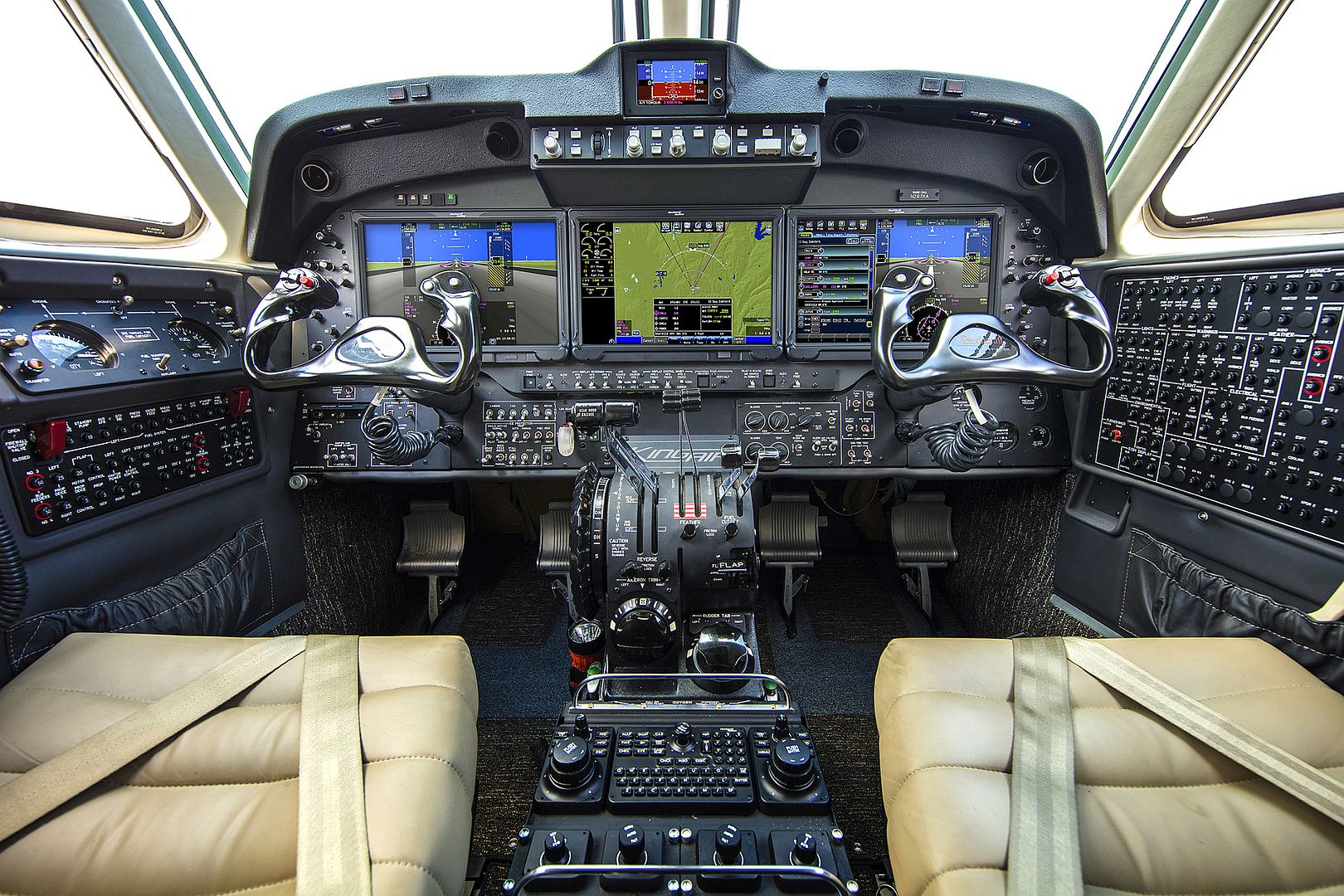
About the King Air 260
The King Air 260 combines the platform’s rich history of rugged reliability and versatility with state-of-the-art upgrades and next-generation capability, offering a greater ease of flying. With an occupancy of up to nine, a maximum range of 1,720 nautical miles and a top cruise speed of 310 ktas, the Beechcraft King Air 200 series aircraft have long been the aircraft of choice for customers around the world. The latest upgrades offer even more reasons for choosing the aircraft.
The upgraded cockpit features the Innovative Solutions & Support (IS&S) ThrustSense Autothrottle system, which supports pilots in their critical mission of delivering people or cargo by automatically managing engine power from the takeoff roll through the climb, cruise, descent, go-around and landing phases of flight. This enhancement reduces pilot workload and is designed to prevent over-speed or under-speed, over-temp and over-torque conditions. The ThrustSense Autothrottle system has been awarded special type certification (STC) approval from the FAA.
Another key update in the cockpit is the new digital pressurization controller, which automatically schedules cabin pressurization during both climb and descent, reducing pilot workload and increasing overall passenger comfort. The pressurization gauges have been integrated with the powerful Collins Aerospace Pro Line Fusion flight deck.
The Collins Multi-Scan RTA-4112 weather radar provides pilots with a fully automatic system that is optimized to detect short, mid and long-range weather. The system is designed to present an accurate picture of the weather around the aircraft, further reducing pilot workload.
The King Air 260 cabin, meanwhile, features newly designed seats created through an innovative pressure-mapping process that identifies ways to provide a more comfortable, relaxing journey for passengers, especially on longer flights.
SAN DIEGO – 10 March 2021 – On Jan. 28, General Atomics Aeronautical Systems, Inc. (GA ASI) and the U.S. Army conducted the first production Acceptance Test Procedure (ATP) flights of a Gray Eagle Extended Range (GE-ER) Unmanned Aircraft System using Scalable Command & Control (SC2) software developed by GA-ASI and installed on an Army-owned laptop computer. SC2 controlled an Army GE-ER aircraft for 3.8 hours and the system successfully completed all test points.
“SC2 represents a massive reduction in emplacement, mission launch time and overall footprint size,” said GA-ASI Vice President of Strategic Development J.R. Reid. “The SC2 software could be part of the Army’s Ground Modernization plan replacing the Universal Ground Control Station (UGCS) with rugged laptops and tactical servers enabling more mobile operations in a defined Modular Open Systems Approach (MOSA) framework.”
SC2 is a collection of standalone software applications that reduce operator workload through automated checklists and optimize steps for pre-flight, taxi, launch and recovery, health and status monitoring, sensor and payload control and maintenance of the GE-ER. SC2 reduces the logistics burden of set-up, transportation and operation of a GE-ER, and enables control of the UAS and its payloads, while allowing aircraft, payloads and sensors to be controlled by disparate users replicating a ground maneuver force or other disadvantaged user. The system gives the Army everything it needs in a quicker and simpler way.
The Army believes SC2’s automation will allow enlisted operators to focus on the more difficult and operationally relevant mission tasks, leaving the more mundane tasks to the SC2 software with minimal man-in-the-loop tasks to meet the Army concept of “supervised autonomy,” while meeting MOSA requirements.
About GA-ASI
General Atomics-Aeronautical Systems, Inc. (GA-ASI), an affiliate of General Atomics, is a leading designer and manufacturer of proven, reliable remotely piloted aircraft (RPA) systems, radars, and electro-optic and related mission systems, including the Predator® RPA series and the Lynx® Multi-mode Radar. With more than six million flight hours, GA-ASI provides long-endurance, mission-capable aircraft with integrated sensor and data link systems required to deliver persistent flight that enables situational awareness and rapid strike. The company also produces a variety of ground control stations and sensor control/image analysis software, offers pilot training and support services, and develops meta-material antennas. For more information, visit www.ga-asi.com.
-
 Main AdminA U.S. Air Force F-16 Fighting Falcon aircraft from the 480th Fighter Squadron prepares to take off for Exercise Agile Fury at Spangdahlem Air Base, Germany, March 11, 2021. Agile Fury enhances interoperability between Spangdahlem Air Base’s 52nd Fighter Wing, the 86th Airlift Wing at Ramstein Air Base, Germany, the 31st Fighter Wing at Aviano Air Base, Italy, and Germany’s Tactical Air Force Squadron 74, based at Neuburg Air Base, Germany. (U.S. Air Force photo by Tech. Sgt. Warren D. Spearman Jr.)
Main AdminA U.S. Air Force F-16 Fighting Falcon aircraft from the 480th Fighter Squadron prepares to take off for Exercise Agile Fury at Spangdahlem Air Base, Germany, March 11, 2021. Agile Fury enhances interoperability between Spangdahlem Air Base’s 52nd Fighter Wing, the 86th Airlift Wing at Ramstein Air Base, Germany, the 31st Fighter Wing at Aviano Air Base, Italy, and Germany’s Tactical Air Force Squadron 74, based at Neuburg Air Base, Germany. (U.S. Air Force photo by Tech. Sgt. Warren D. Spearman Jr.)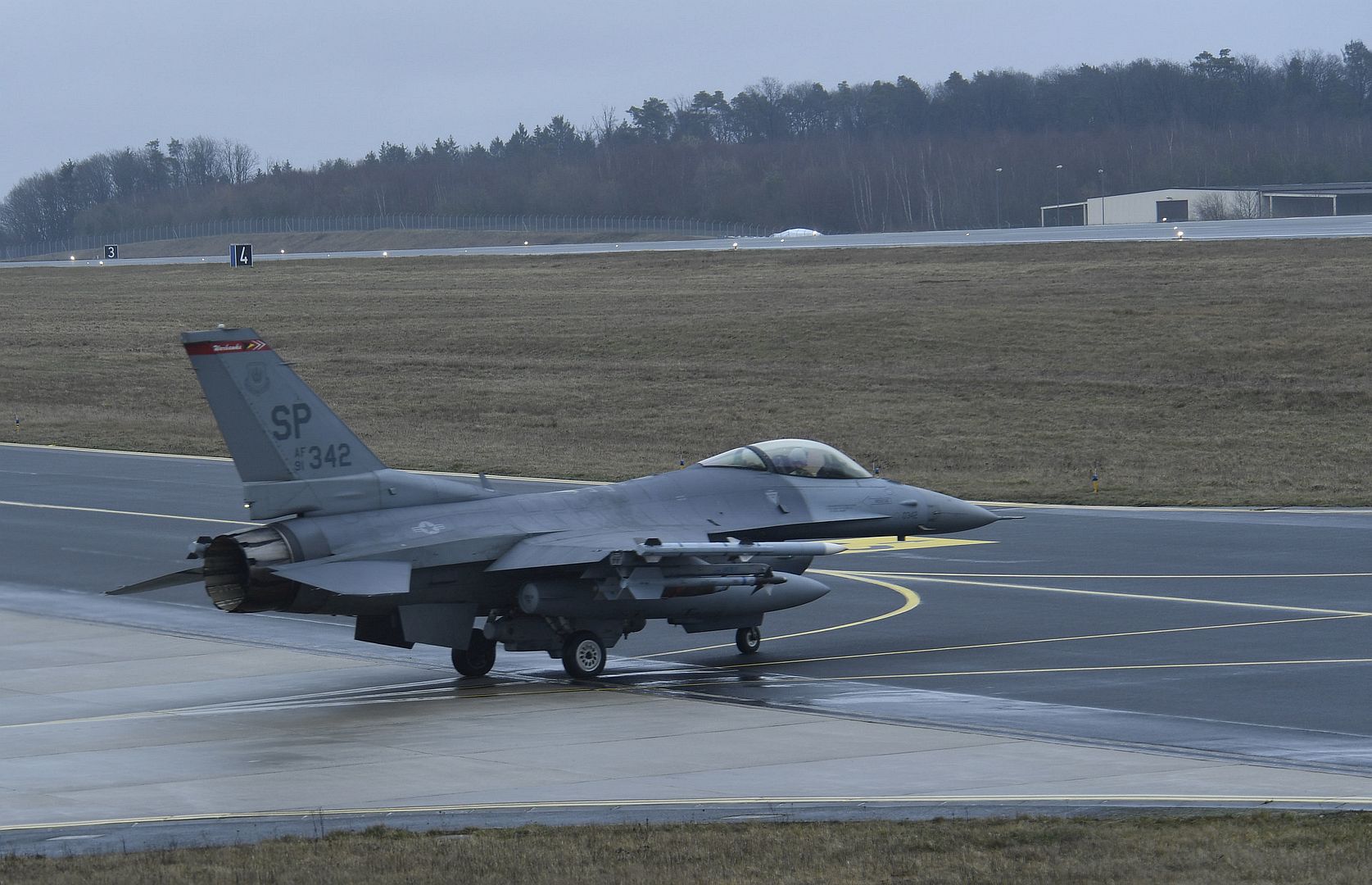
A maintenance tow team from the 436th Aircraft Maintenance Squadron tows a C-5M Super Galaxy on the flight line at Dover Air Force Base, Delaware, March 9, 2021. The 436th AMXS is responsible for the inspection, repair, launch and recovery of 18 assigned C-5 aircraft. (U.S. Air Force photo by Senior Airman Christopher Quail)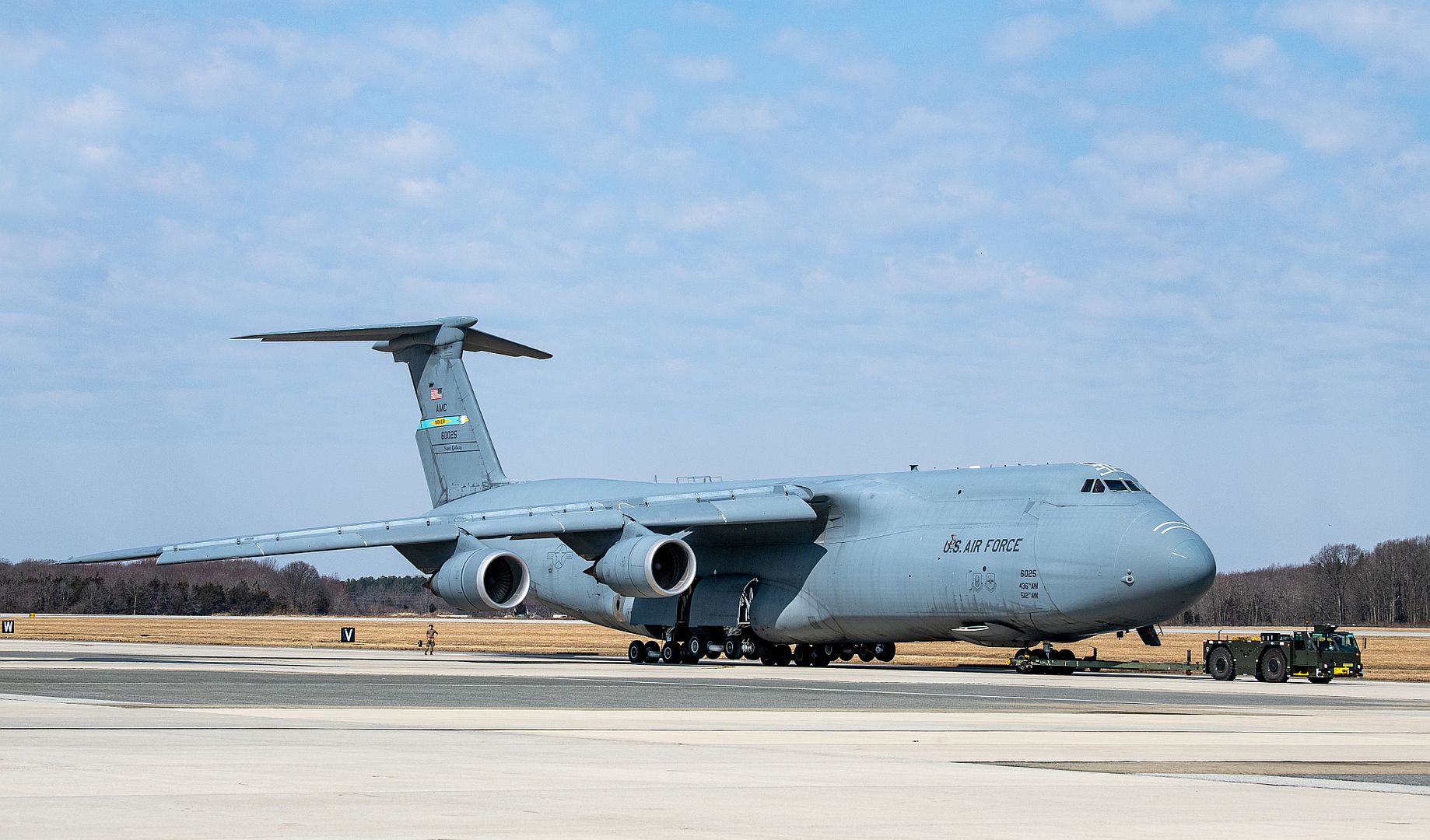
An F-16 Fighting Falcon assigned to the 64th Aggressor Squadron prepares to land at Nellis Air Force Base, Nevada, Mar. 9, 2021. The 64th Aggressor Squadron is a team of Airmen whose primary mission is to fly against the combat air forces, joint and allied aircrews preparing them for tomorrow’s engagements. (U.S. Air Force photo by Airman First Class Zachary Rufus)
An F-15SG Strike Eagle, assigned to the 428th Fighter Squadron, Mountain Home Air Force Base, Idaho, takes-off for a mission during Red Flag 21-2, at Nellis Air Force Base, Nevada, March 9, 2021. The F-15SG is a variant of the U.S. Air Force F-15E Strike Eagle and used by the Republic of Singapore Air Force. (U.S. Air Force photo by William R. Lewis)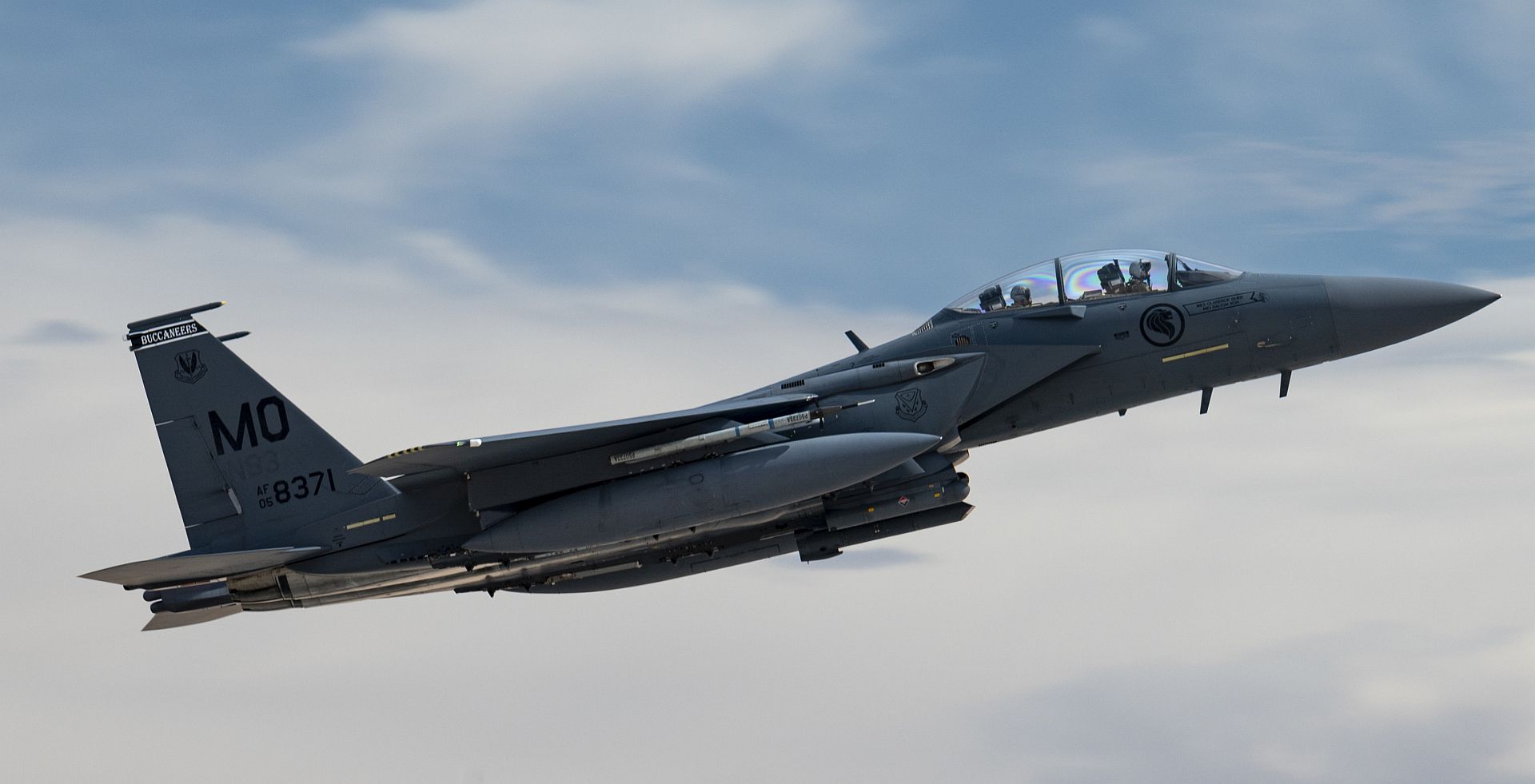
A U.S. Navy EA-18G Growler aircraft assigned to Electronic Attack Squadron 138 at Naval Air Station Whidbey Island, Washington, takes-off during Red Flag 21-2 at Nellis AFB, Nevada, March 8, 2021. Red Flag allows U.S. and coalition forces to train together in high-end, realistic scenarios increasing interoperability of the joint force (U.S. Air Force photo by William R. Lewis)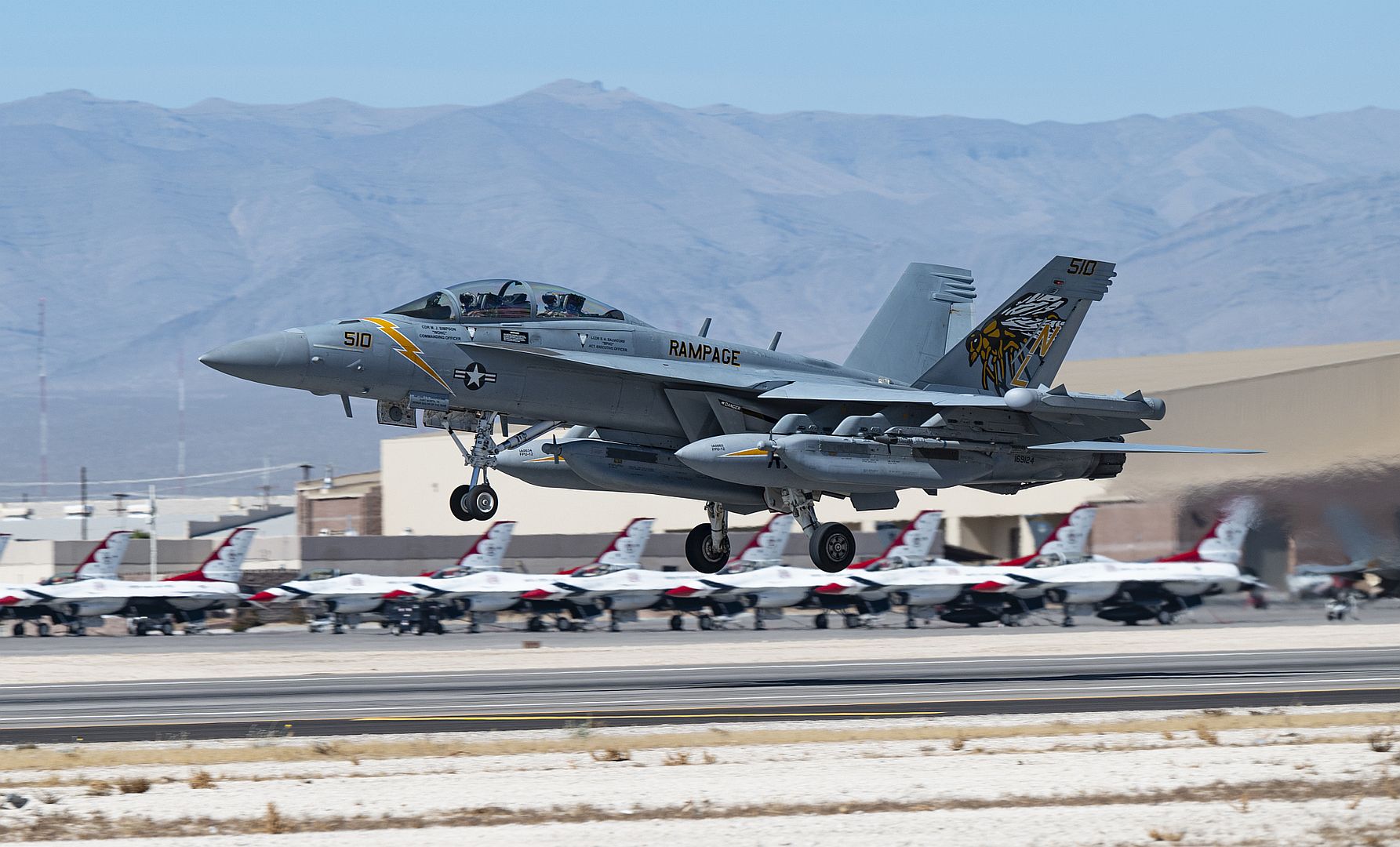
A B-1B Lancer, assigned the 28th Bomb Wing, Ellsworth Air Force Base, South Dakota, takes-off for a Red Flag 21-2 mission at Nellis Air Force Base, Nevada, March 8, 2021. The B-1 can carry the largest conventional payload of both guided and unguided weapons in the Air Force inventory. (U.S. Air Force photo by William R. Lewis)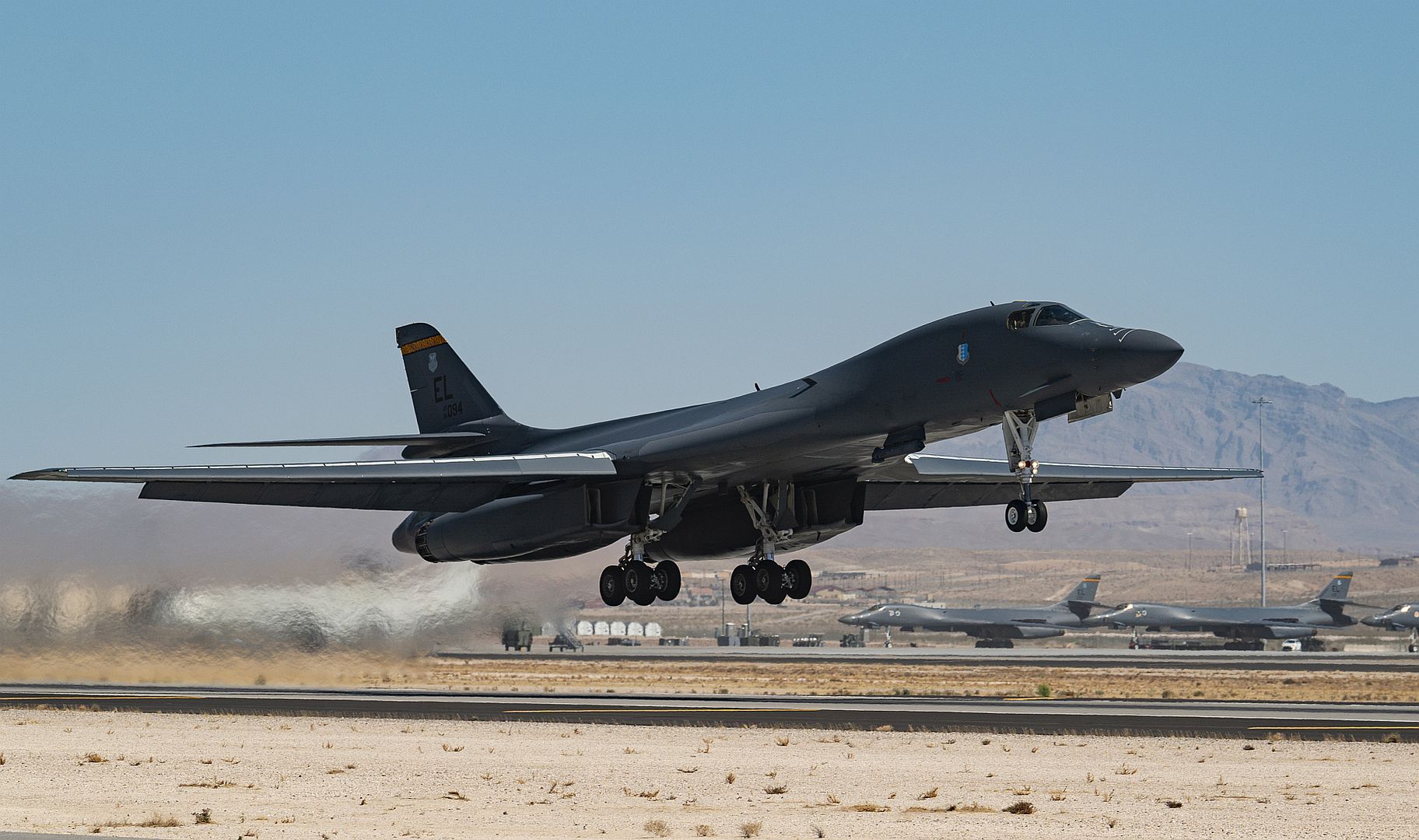
A U.S. Navy EA-18G Growler aircraft assigned to Electronic Attack Squadron 138 at Naval Air Station Whidbey Island, Washington, takes-off during Red Flag 21-2 at Nellis AFB, Nevada, March 8, 2021. Red Flag is the U.S. Air Force’s premier air-to-air combat training exercise, which provides aircrews the experiences of multiple, intensive air combat sorties in the safety of a training environment. (U.S. Air Force photo by William R. Lewis)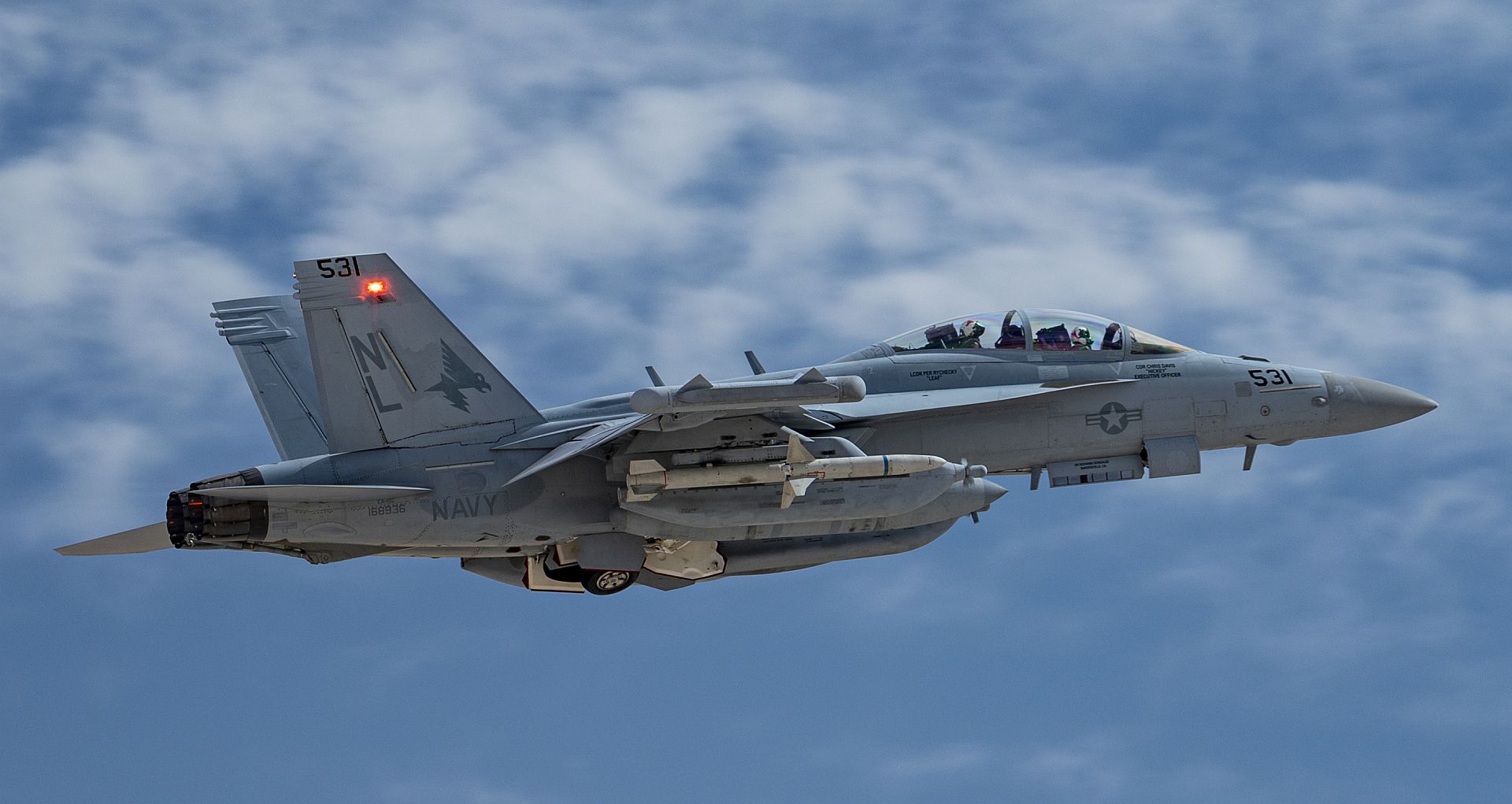
An F-16 fighter jet, assigned to the 115th Fighter Wing at Truax Field Air National Guard Base, Wisconsin, takes-off for a Red Flag 21-2 mission at Nellis Air Force Base, Nevada, March 8, 2021. Red Flag provides real-time war scenarios to test the readiness capabilities of U.S. military services and coalition forces. (U.S. Air Force photo by William R. Lewis)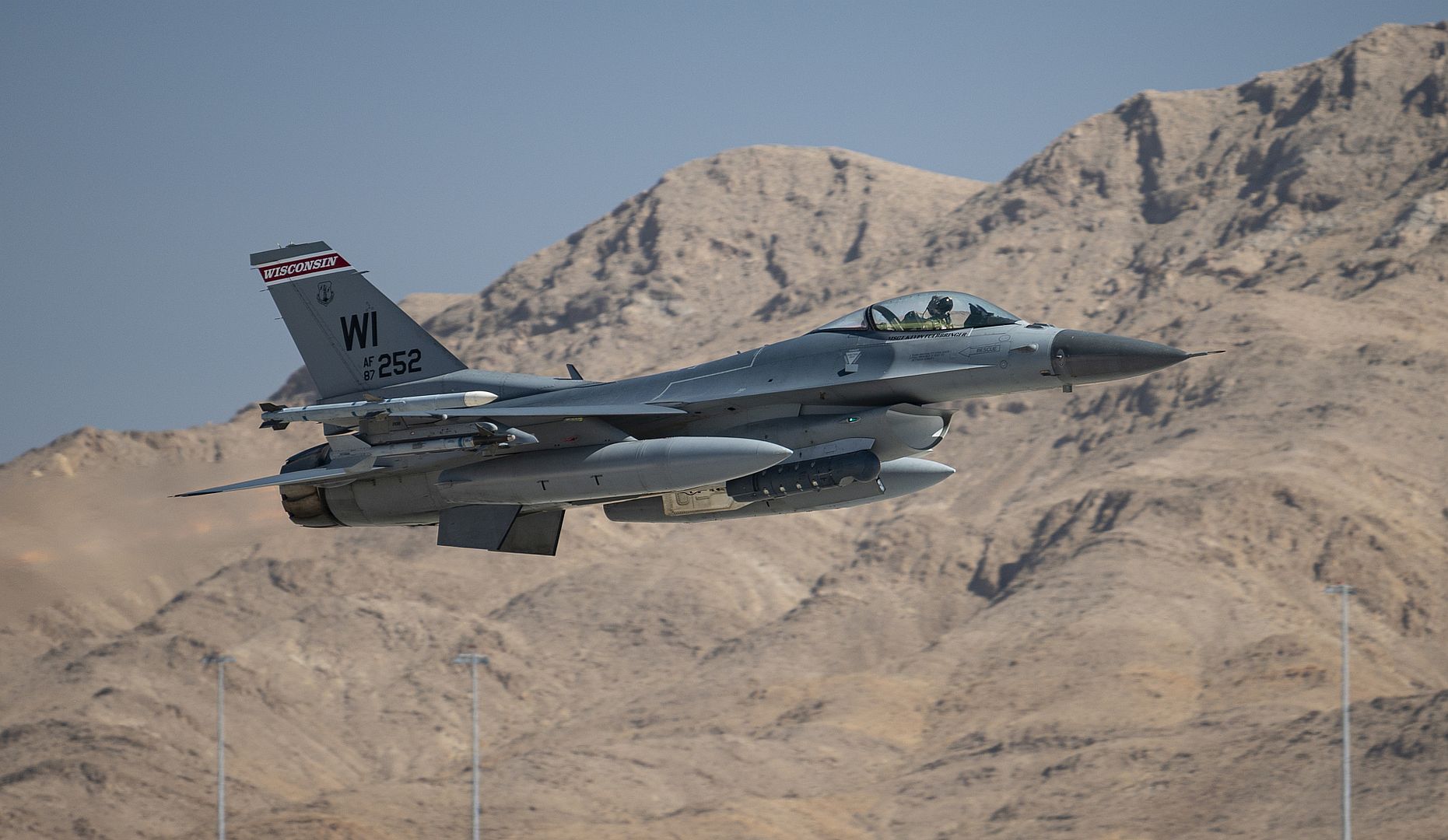
A Norwegian F-35A Lightning II fighter jet assigned to the 62nd Fighter Squadron, Luke Air Force Base, Arizona, takes-off for a mission during Red Flag 21-2, at Nellis Air Force Base, Nevada, March 9, 2021. The 62nd Fighter Squadron conducts F-35 pilot training for U.S. and allied aircrews. (U.S. Air Force photo by William R. Lewis)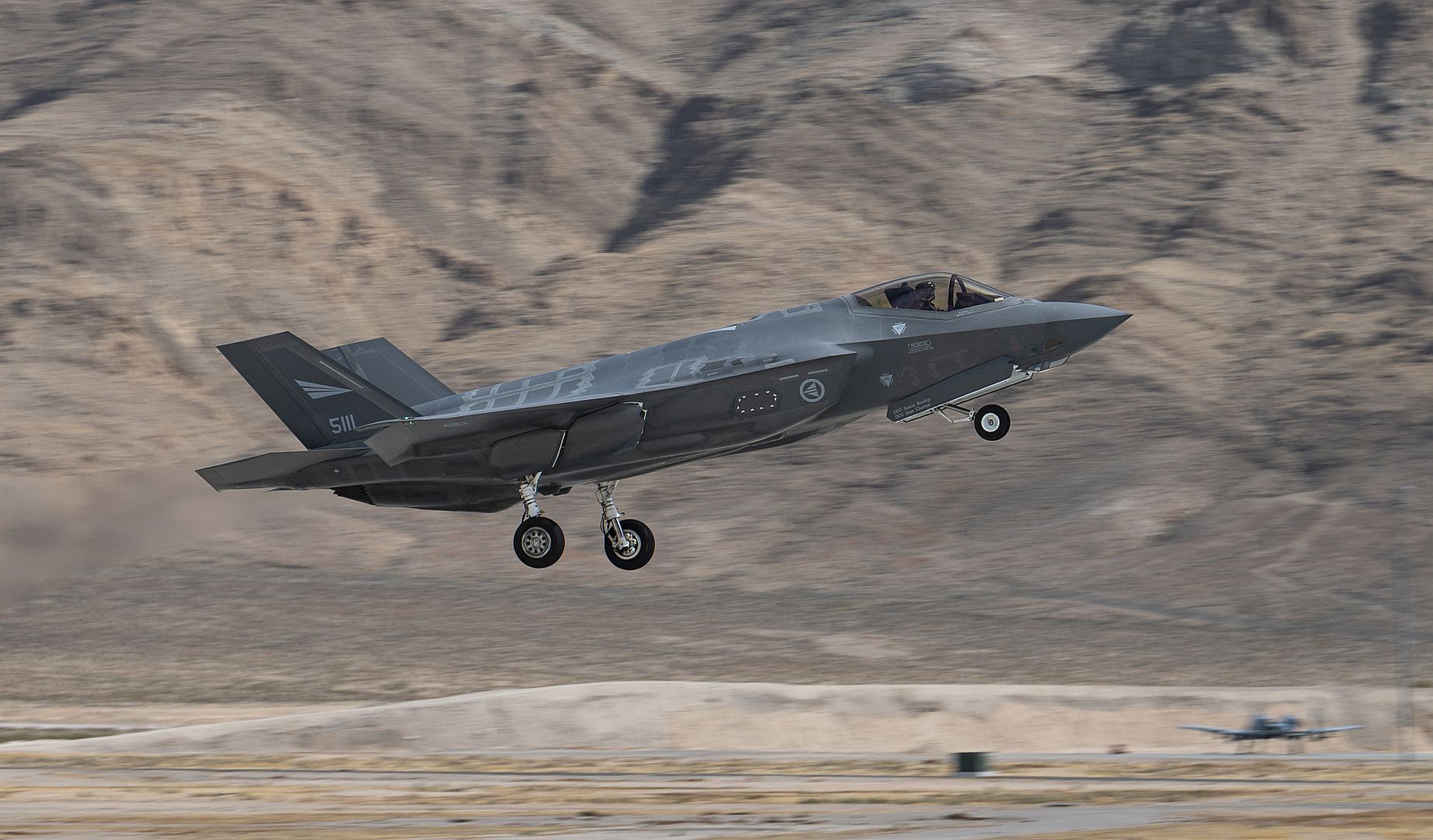
Two U.S. Air Force P-51 Mustangs taxi onto the flight line and prepare to take flight at Davis-Monthan Air Force Base, Arizona, March 7, 2021. The aircraft participating in the 2021 Heritage Flight Training Course include the P-51 Mustang, P-38 Lightning, P-40 Warhawk, P-41 Thunderbolt, F-86 Sabre and the A-1 Skyraider. (U.S. Air Force photo by Airman William Turnbull)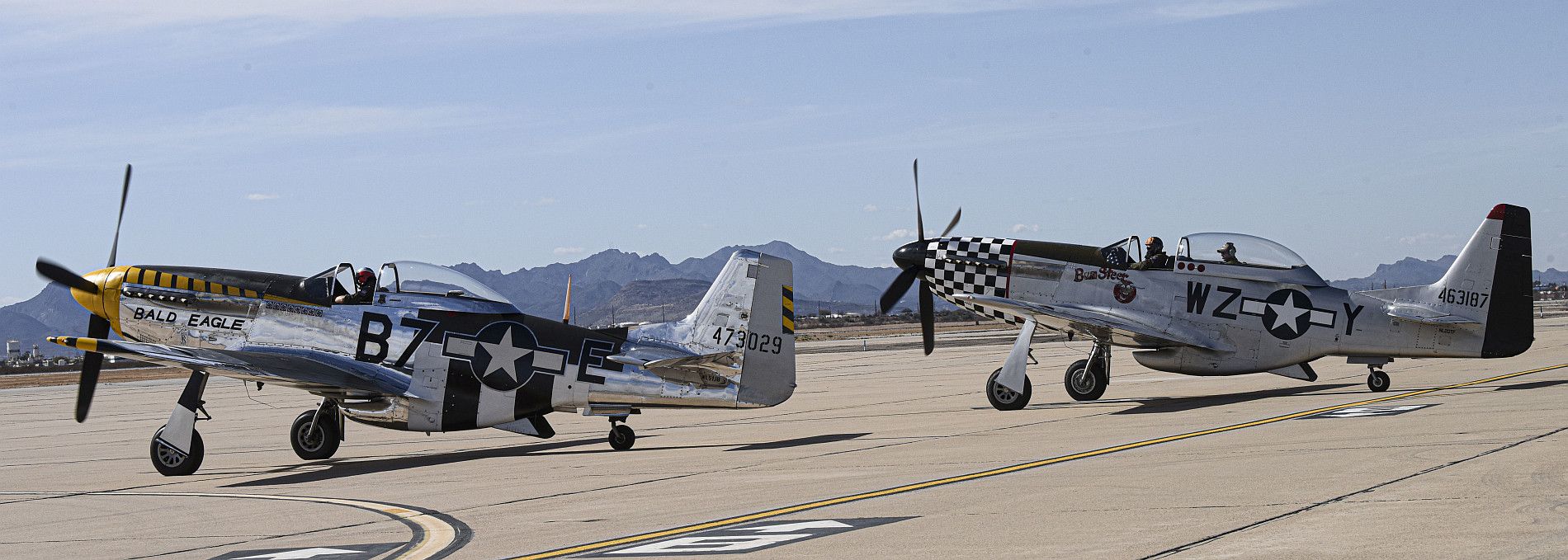
A B-1B Lancer assigned to the 9th Expeditionary Bomb Squadron is refueled at Bodø Air Force Station, Norway, March 8, 2021. The B-1 conducted a Bomber Task Force training mission, Agile Condor, marking the first time that a B-1 has landed within the Arctic Circle. (U.S. Air Force courtesy photo)
11.03.2021.
At the Engels airfield in the Saratov region, on the basis of a long-range aviation formation, commander flights were conducted on the Tu-160 and Tu-95ms strategic missile carriers.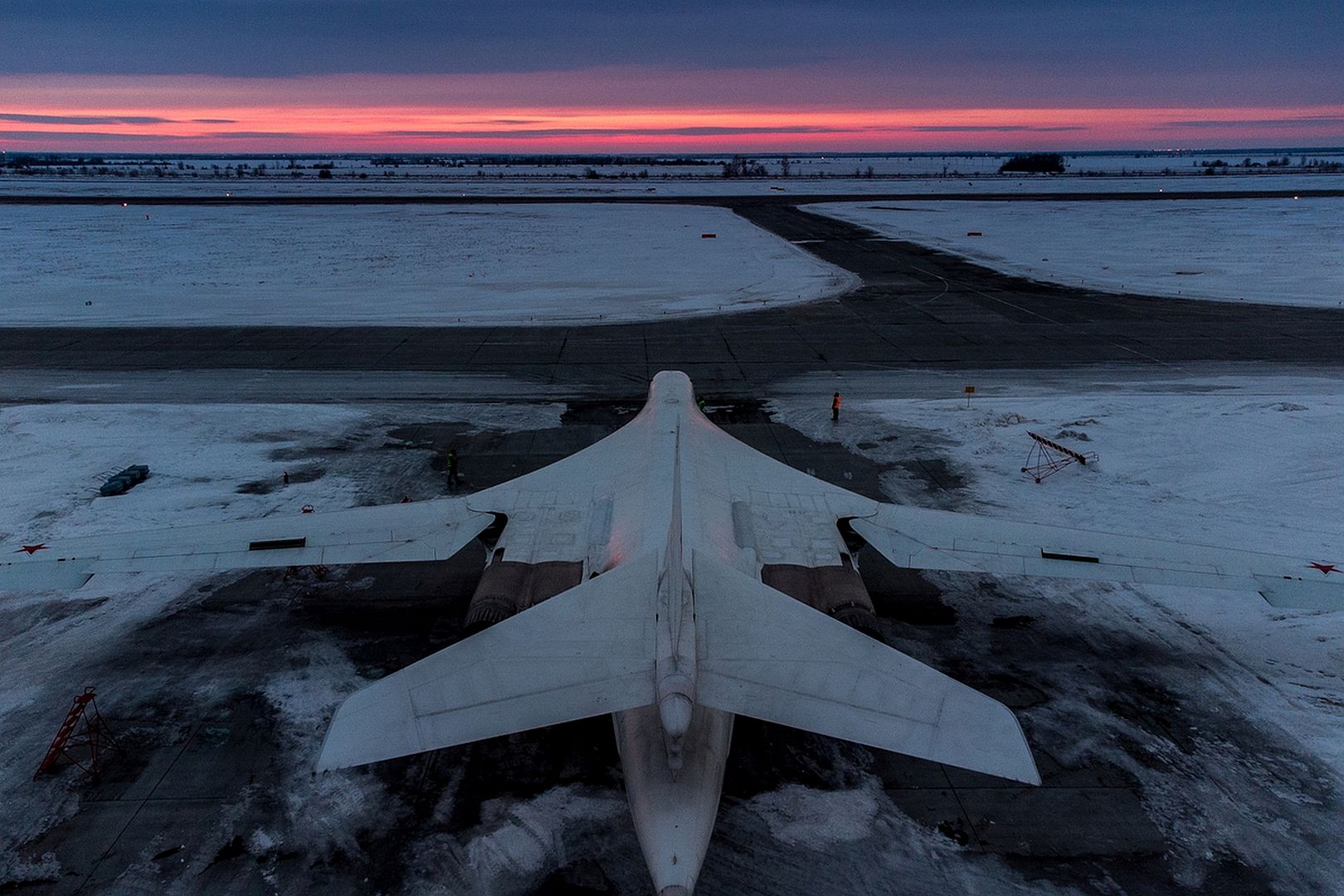
The command staff of the aviation units, the regiment and the division participated in the flights. The crews worked out takeoffs and landings, refueling in the air, flying in formation and at low altitudes during the day and at night.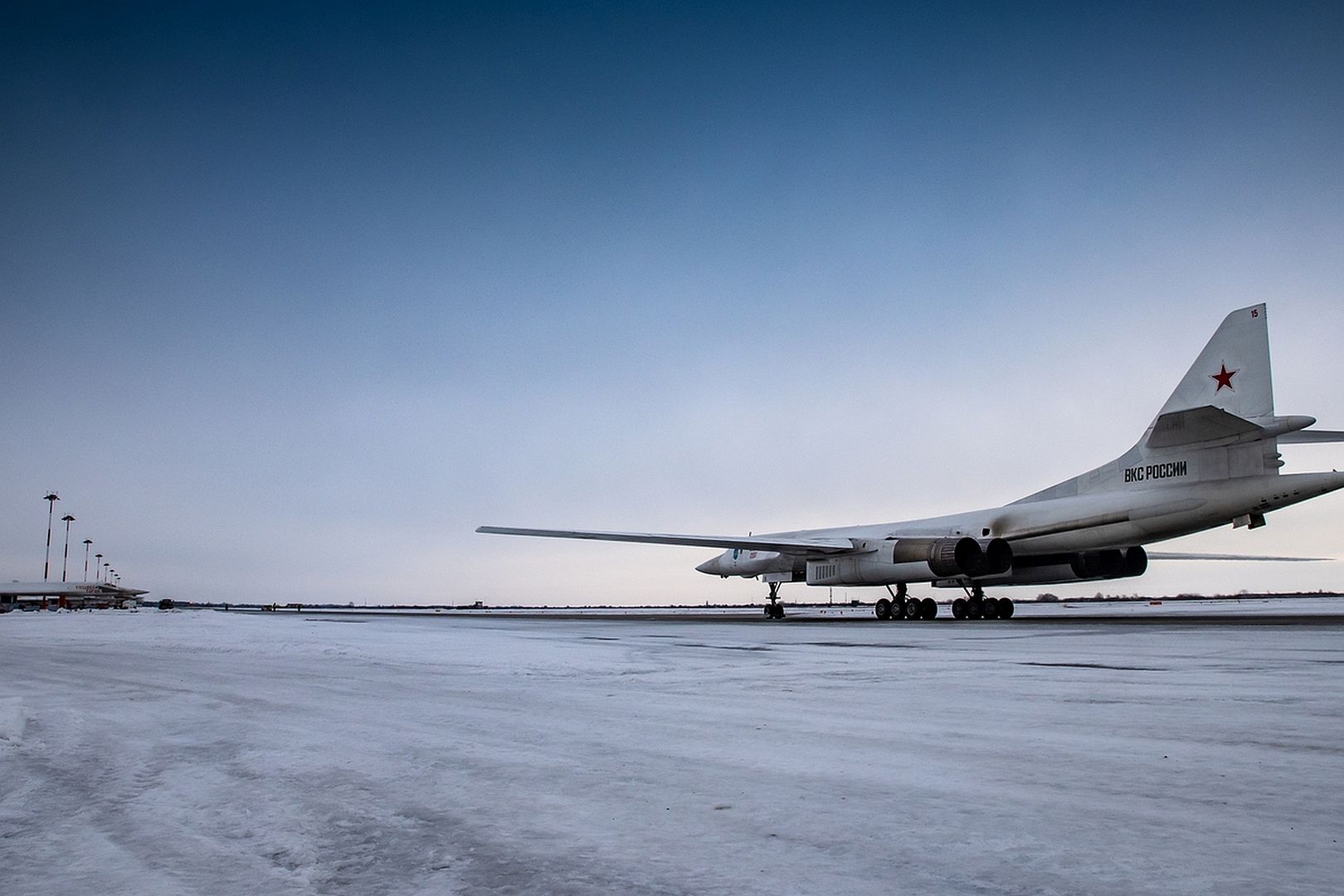
The purpose of the flights was to develop a methodology for training young flight personnel to perform various training elements and tasks for their intended purpose.
In total, more than 10 long-range aviation crews were involved in the flights. The event was held under the leadership of the commander of the guard unit, Major General Oleg Pchela.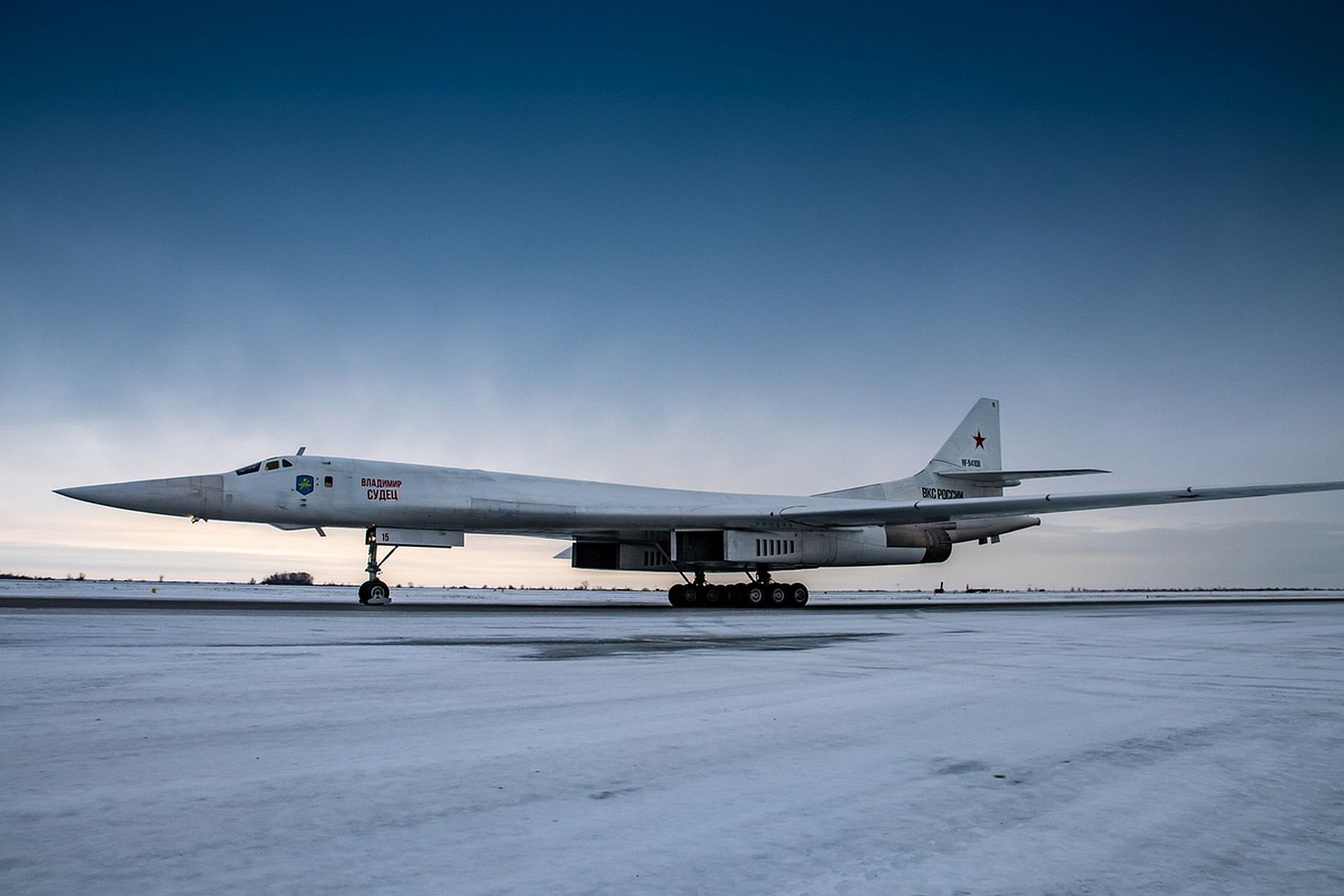
Command flights are traditionally held several times a year and are aimed at improving the efficiency of organizing and ensuring flight safety, as well as performing flight tasks.
(Photos courtesy of the Ministry of Defence of the Russian Federation)
11.03.2021.
Two strategic missile carriers Tu-95MS perform a planned flight over the neutral waters of the Japan sea and the Northern-Western part of the Pacific ocean.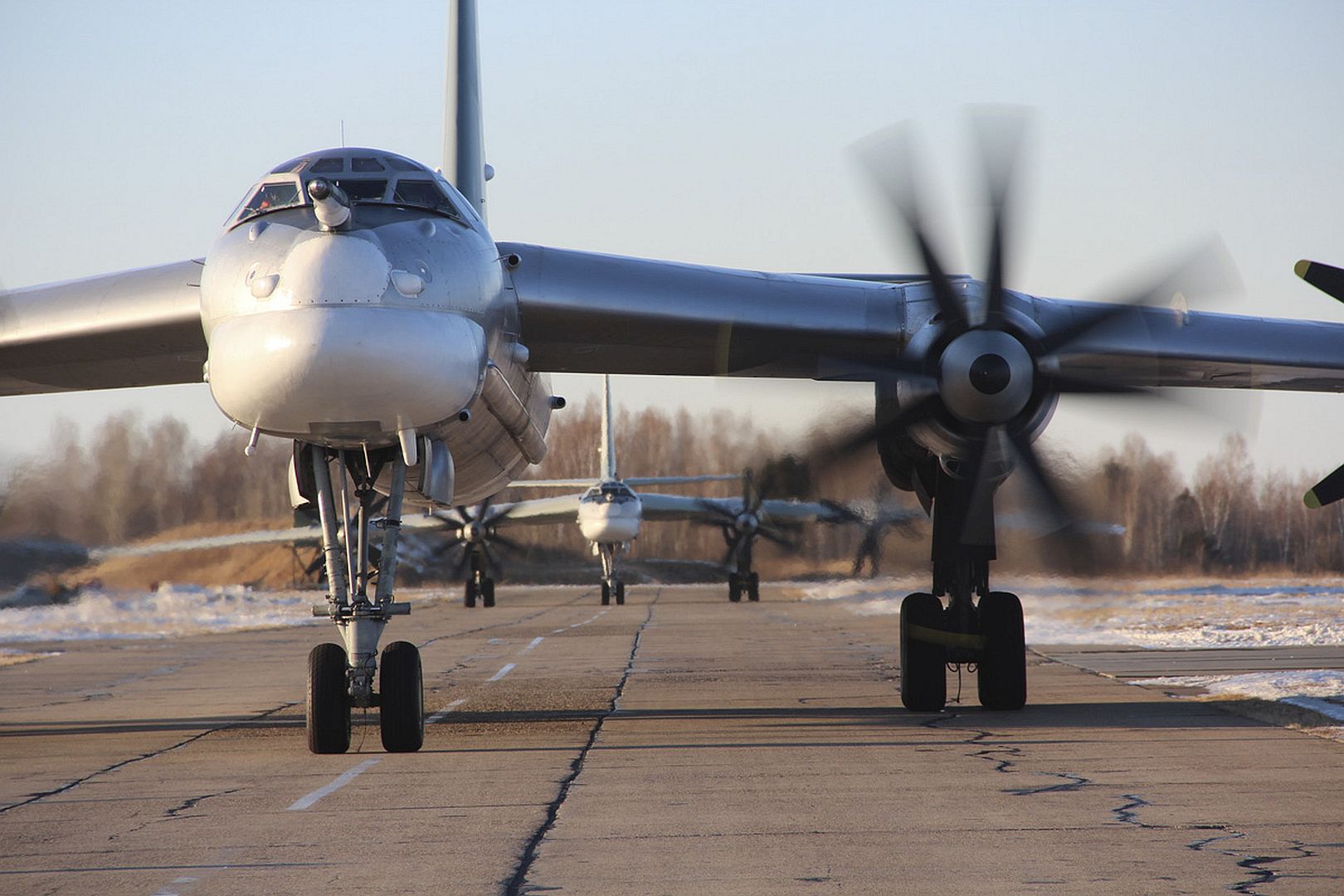
The fighter escort was provided by the crews of the Su-35S aircraft of the Russian Aerospace Forces.
The flight duration was more than nine hours.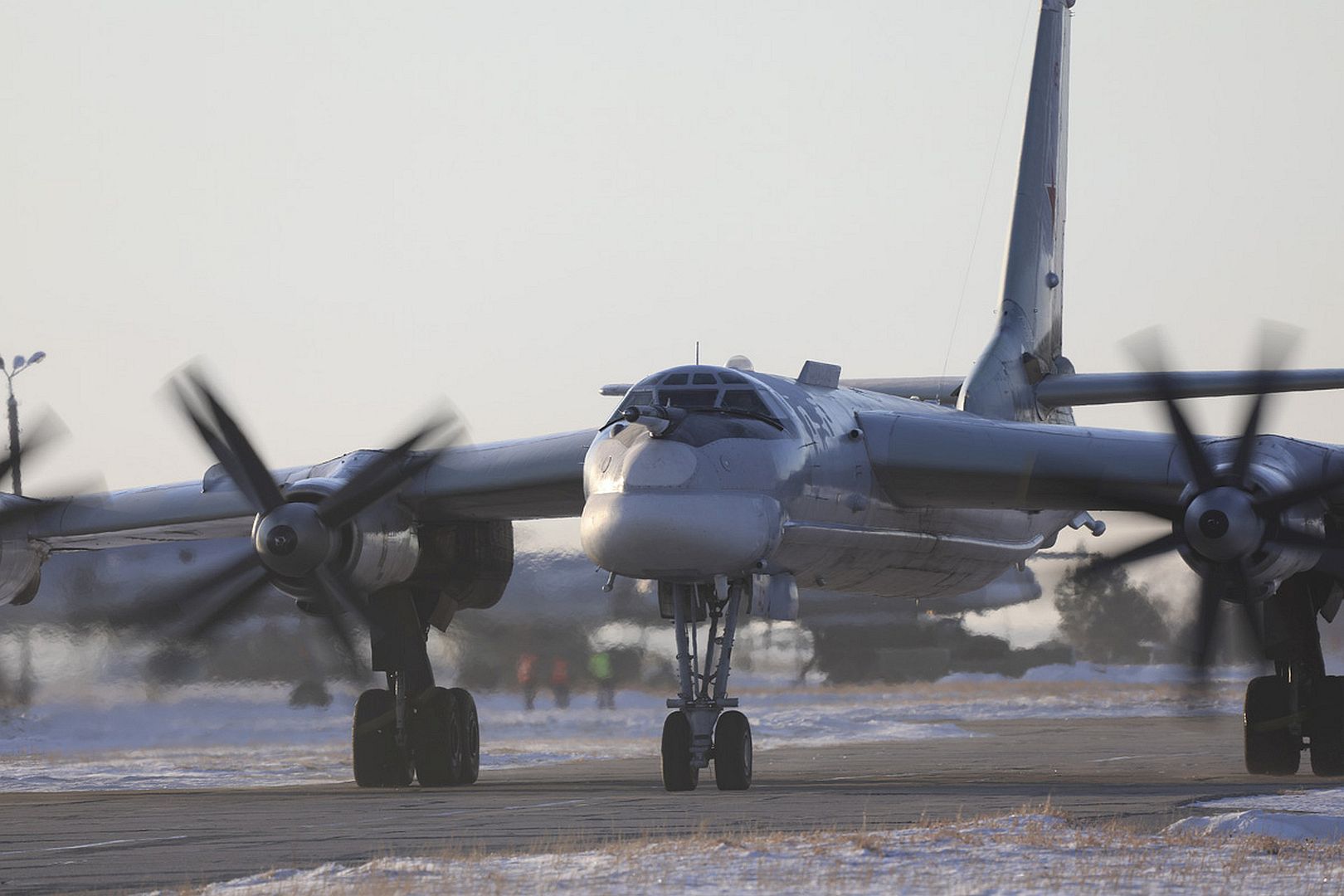
At certain stages of the route, Russian strategic missile carriers were accompanied by F-15 fighters of the Japanese Air Force.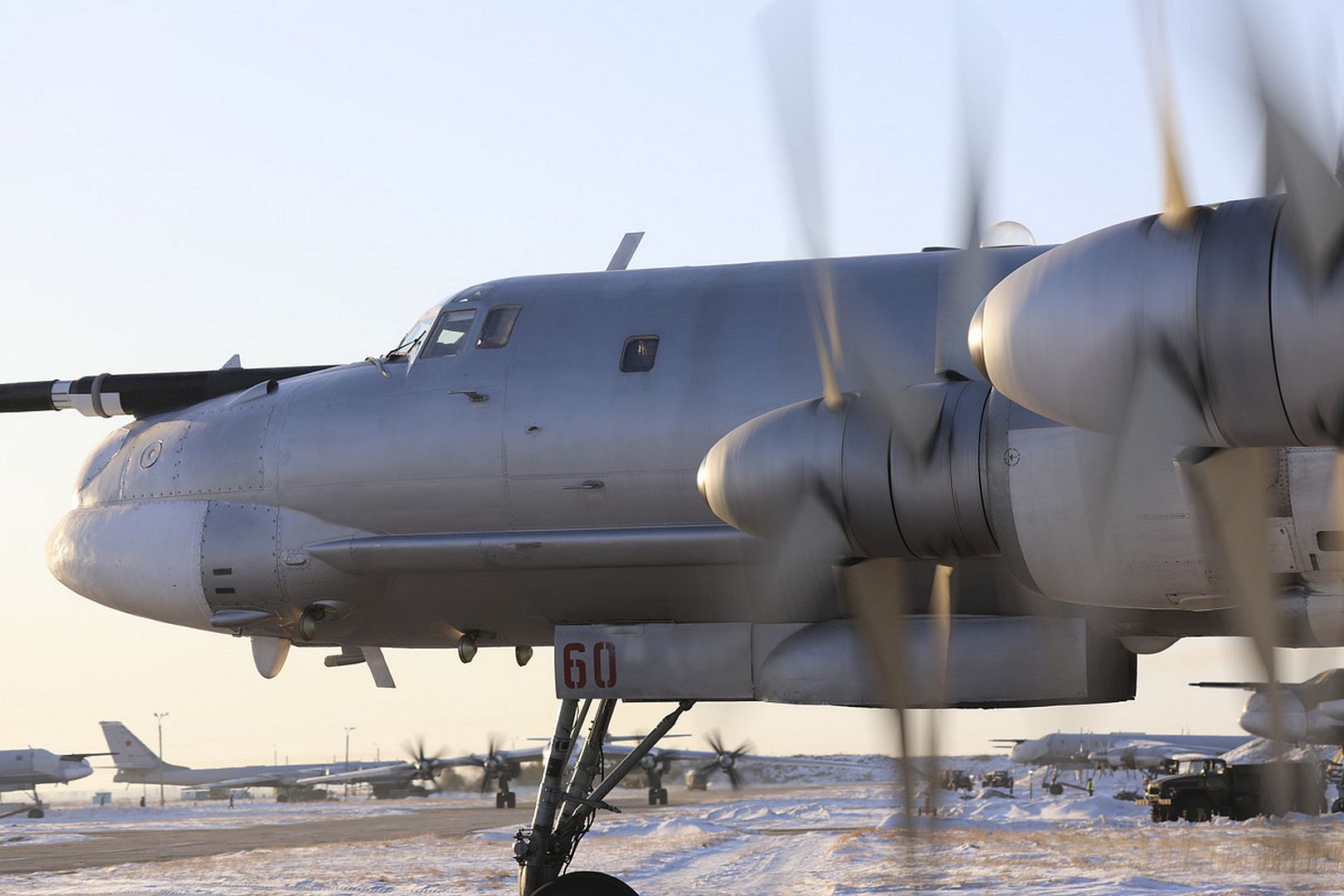
Long-range aviation pilots regularly fly over the neutral waters of the Arctic, the North Atlantic, the Black and Baltic Seas, and the Pacific Ocean.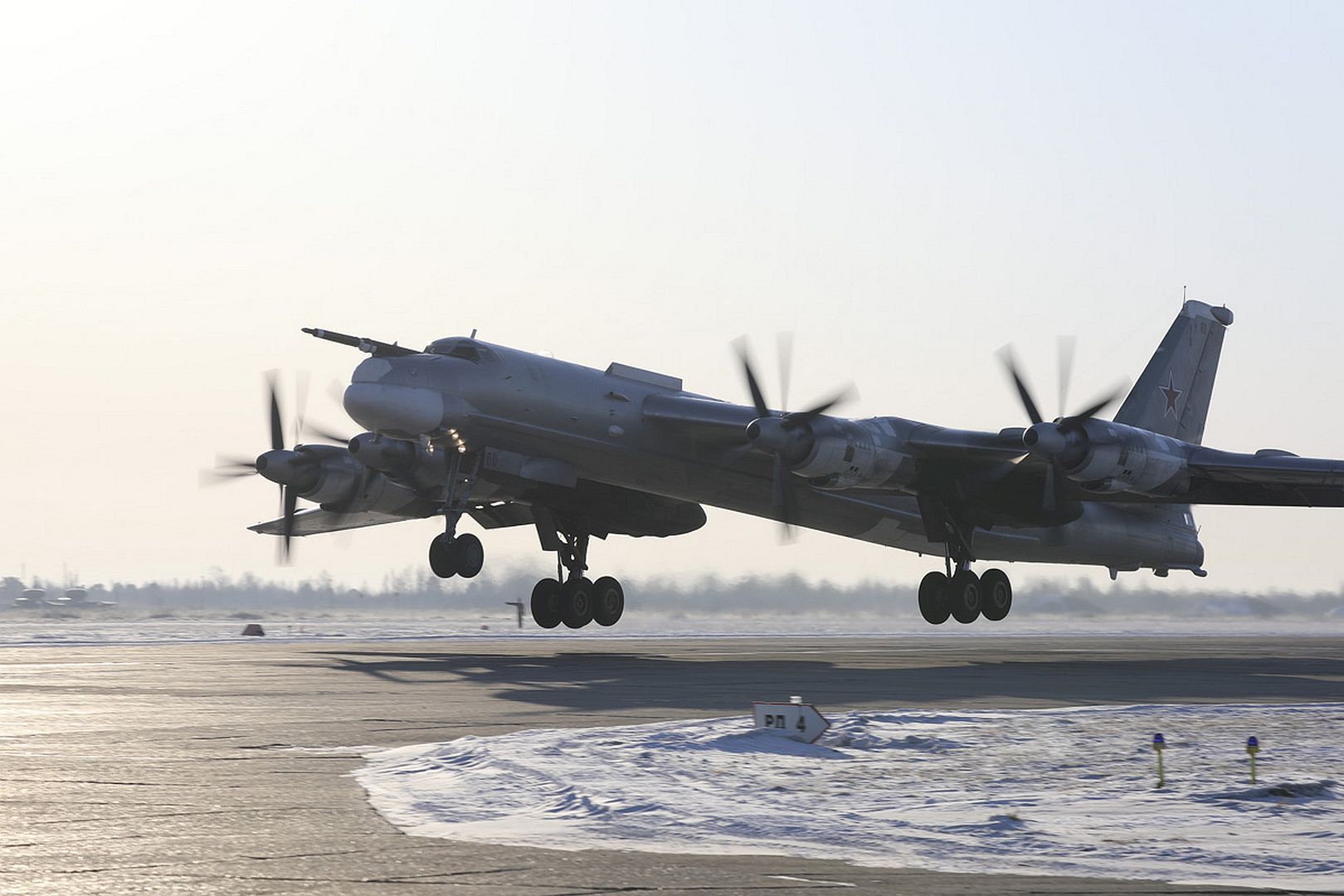
All flights of the Russian Aerospace Force are carried out in strict accordance with the International airspace management system.
(Photos courtesy of the Ministry of Defence of the Russian Federation)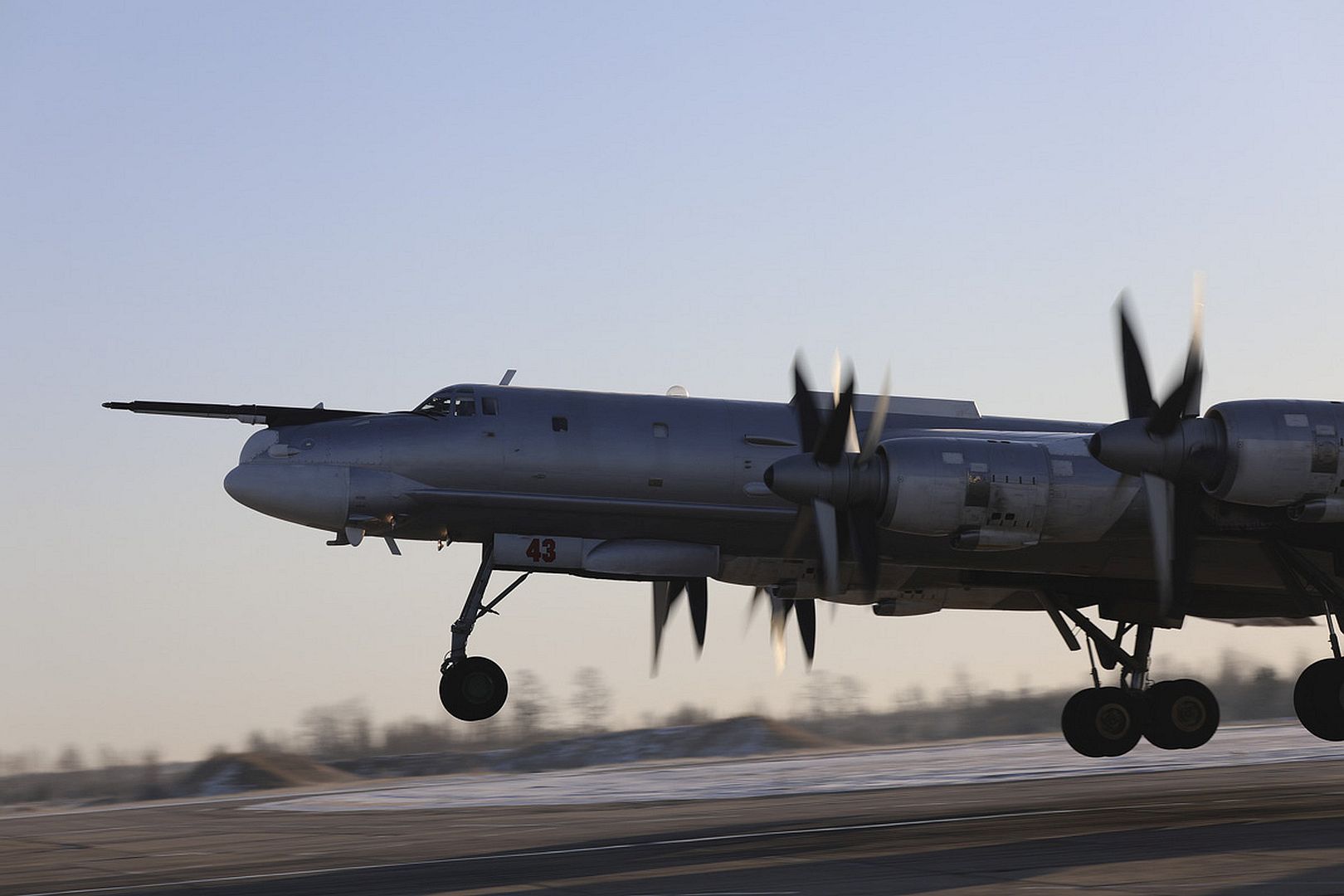
Rome 10 March 2021
Leonardo announced today the delivery of an AW109 Trekker light twin to FlyKomala of Indonesia, marking the entrance of the type into the country’s helicopter market. The aircraft will be used by the operator to carry out a range of missions including passenger transport, utility transport, disaster relief, and emergency support duties. FlyKomala will benefit from best in class performance and payload, large cabin space, a rugged airframe and modern avionics to enhance mission effectiveness and safety in the demanding environmental and weather conditions of the country.
This latest delivery grows the success of Leonardo’s light twin types in Indonesia adding to the AW109 Grand and GrandNew models. Leonardo’s civil helicopter fleet in Indonesia counts almost 20 aircraft of various types for corporate, SAR, and utility transport tasks. Asia has proven to be one of the most important regions for the AW109 Trekker, chosen in various countries for several applications including EMS, utility, and law enforcement tasks.
The AW109 Trekker maintains the AW109 Grand airframe, large cabin and top-class performance while offering greater payload at a competitive cost, therefore proving it is perfectly suited to meet the stringent requirements of operators in terms of capabilities and cost effectiveness. The AW109 Trekker is the latest addition to Leonardo’s helicopter portfolio and the Company’s first light twin to offer skid landing gear. The AW109 Trekker is equipped with a latest generation Genesys Aerosystems glass cockpit that can be configured according to customer needs: one or two pilots, VFR or IFR. Over 70 AW109 Trekkers have been sold to customers around the world to date for a number of missions, adding to around 1,500 AW109 series units sold globally.
-
 Main AdminEGLIN AIR FORCE BASE, Fla. (AFNS) --
Main AdminEGLIN AIR FORCE BASE, Fla. (AFNS) --
The F-15EX, the Air Force’s newest fighter, touched down at Eglin Air Force Base March 11.
The aircraft will be the first Air Force aircraft to be tested and fielded from beginning to end, through combined developmental and operational tests.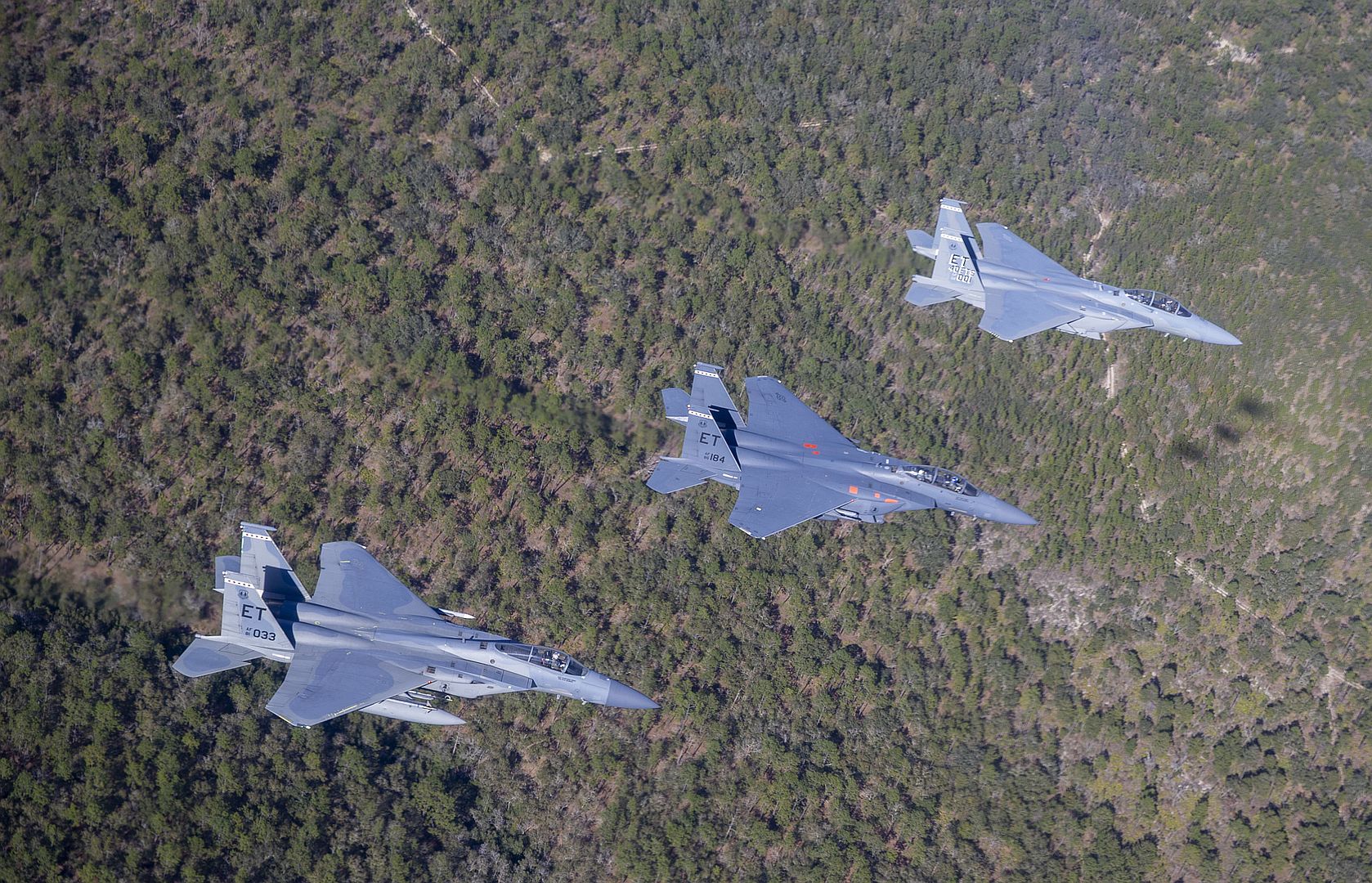
“It’s a special day for the base and our mission,” said Brig. Gen. Scott Cain, 96th Test Wing commander. “We’re very proud to be part of the next evolution of this historic aircraft. I look forward to seeing this unique test collaboration prepare the F-15EX for the warfighter.”
The aircraft bears its unit insignia EX1 marked with “ET” from the 96th TW’s, 40th Flight Test Squadron. The EX2, arriving in April, will display the “OT” tail flash to represent the 53rd Wing’s 85th Test and Evaluation Squadron.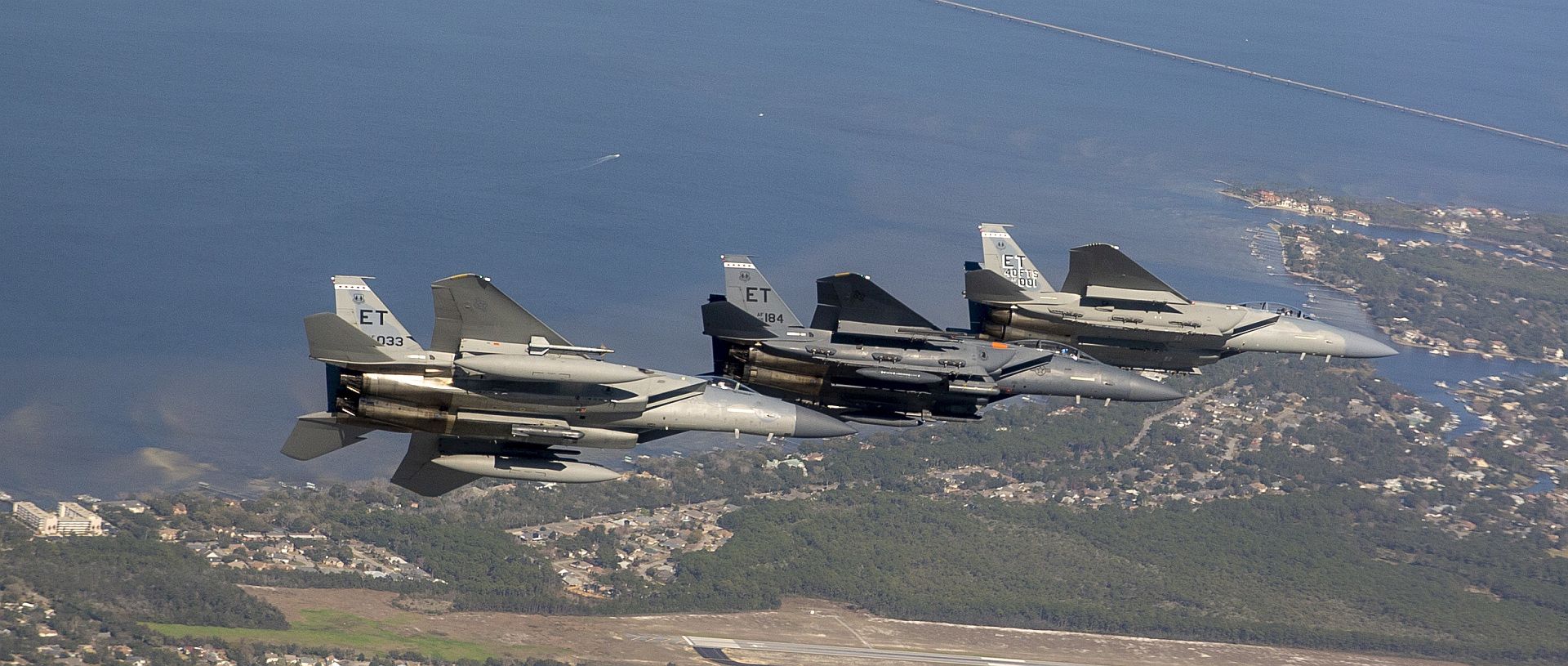
To support the combined test effort, both test-squadron commanders ferried in the EX-1 together.
“Choosing to have the two commanders ferry the jet down was a concerted effort to reinforce the cooperation between DT and OT organizations and integration efforts,” said Lt. Col. Jacob Lindaman, 85th TES commander.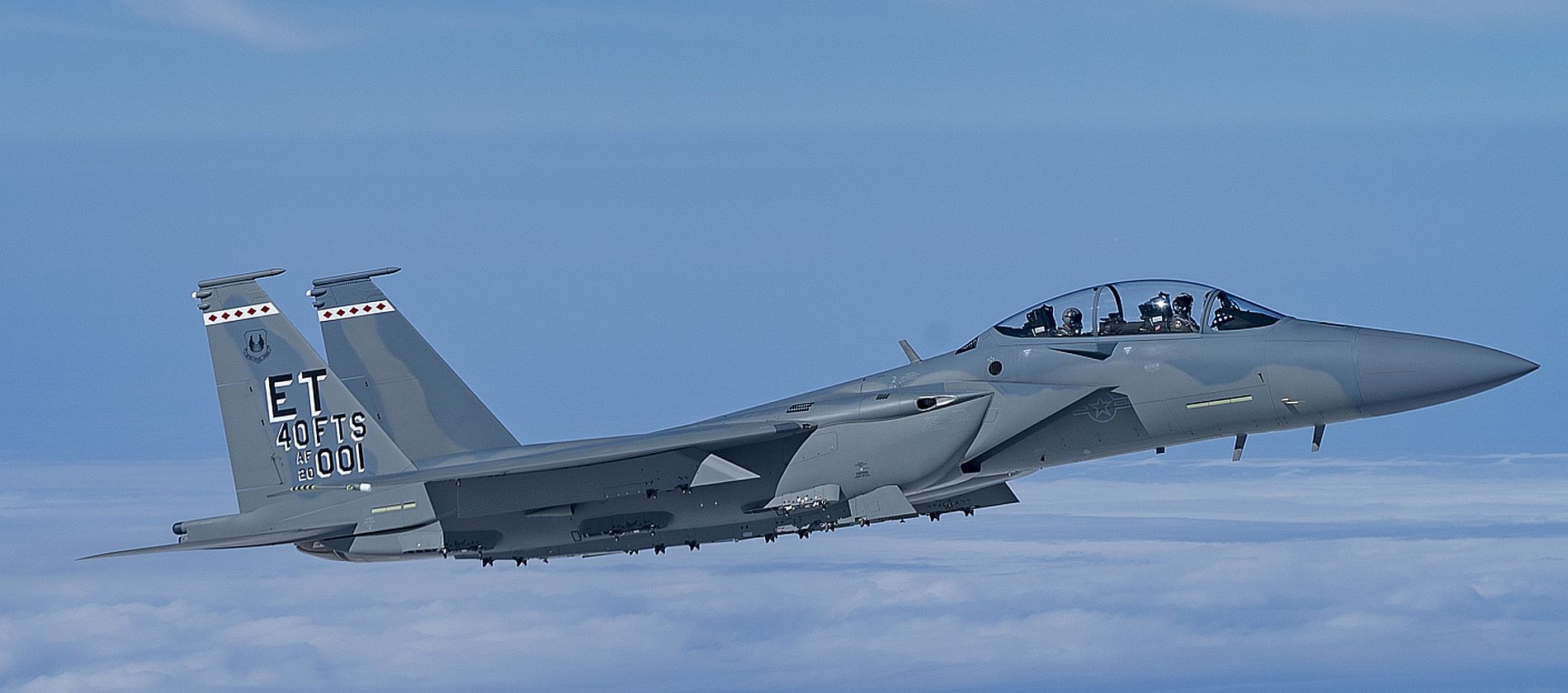
The aim of integrated testing is to ensure the EX is delivered to the warfighter as soon as possible, while ensuring the aircraft meets test objectives. This combination of Eglin AFB’s testers allows the teams to identify any system issues early on, so they can be addressed before the F-15EX’s increased production and delivery to the squadrons.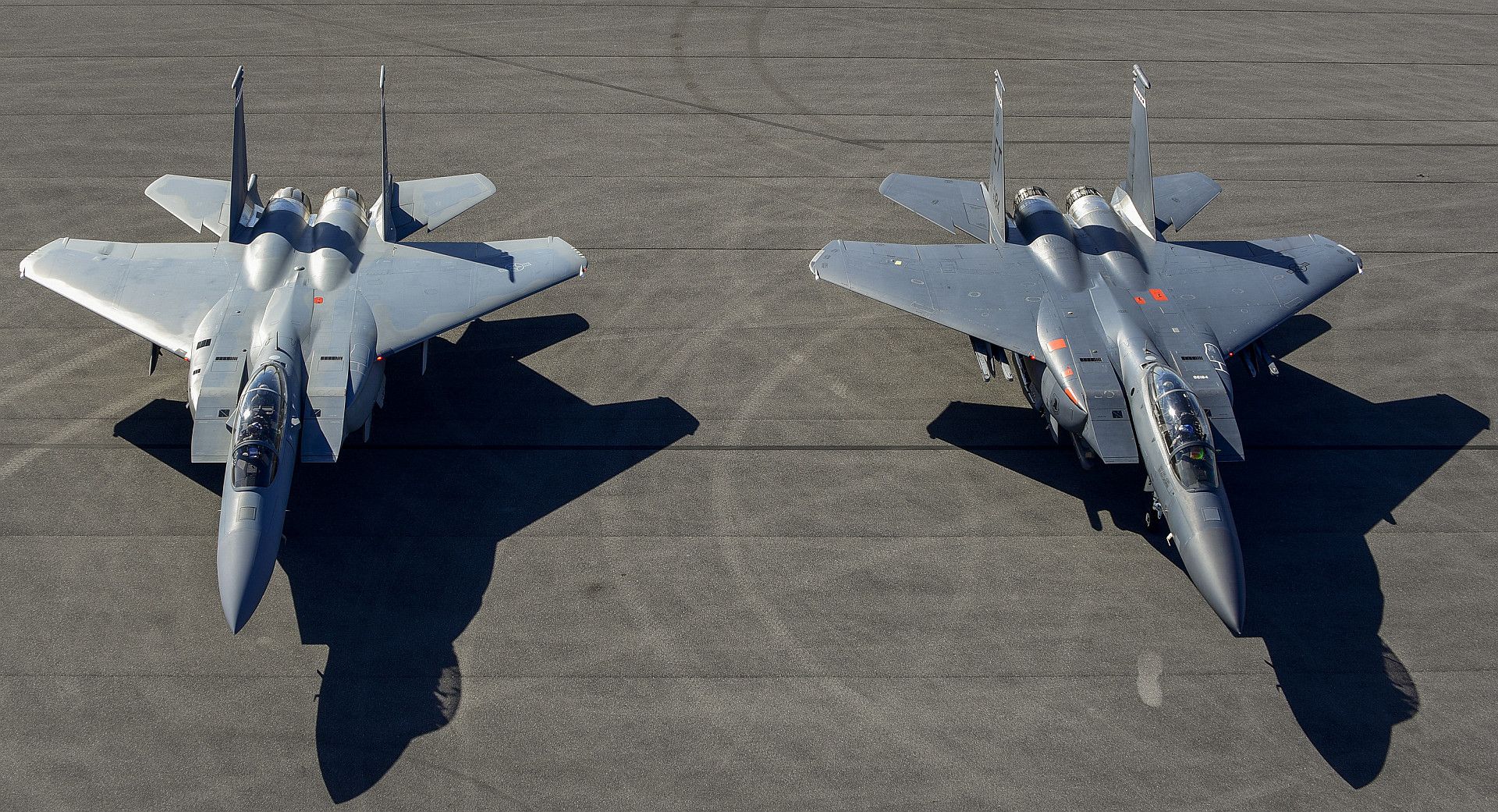
The Operational Flight Program Combined Test Force, or OFP CTF, at Eglin AFB will manage test planning and oversee all the groundwork for the EX’s test program.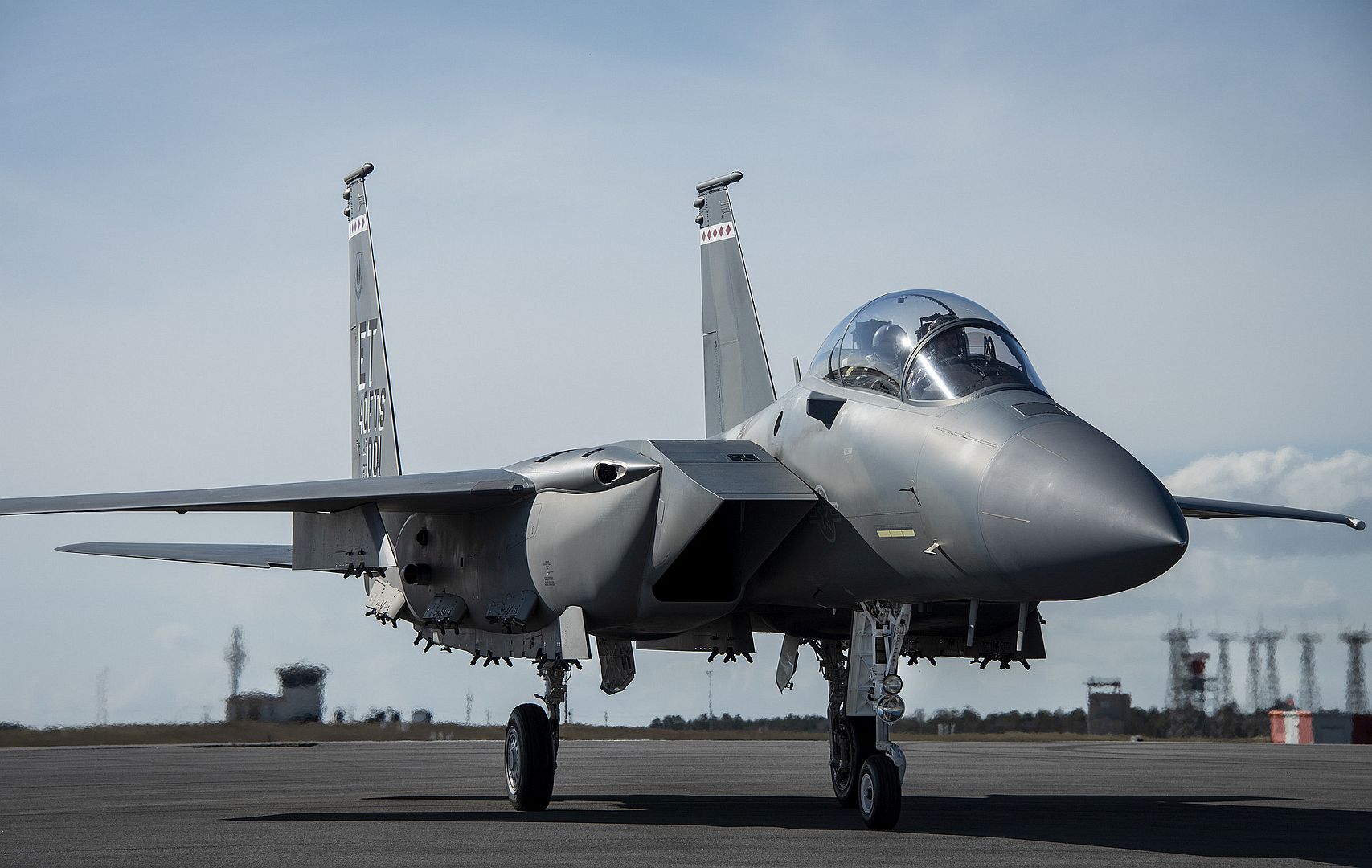
“Combining these test capabilities on day one of flight test helps ensure F-15EX is ready to execute on air tasking order day one. We’re confident that along with our OFP CTF partners running test management, we will provide that capability faster to the warfighter than ever before,” said Lt. Col. Richard Turner, 40th FLTS commander, who flew the new EX to Eglin AFB.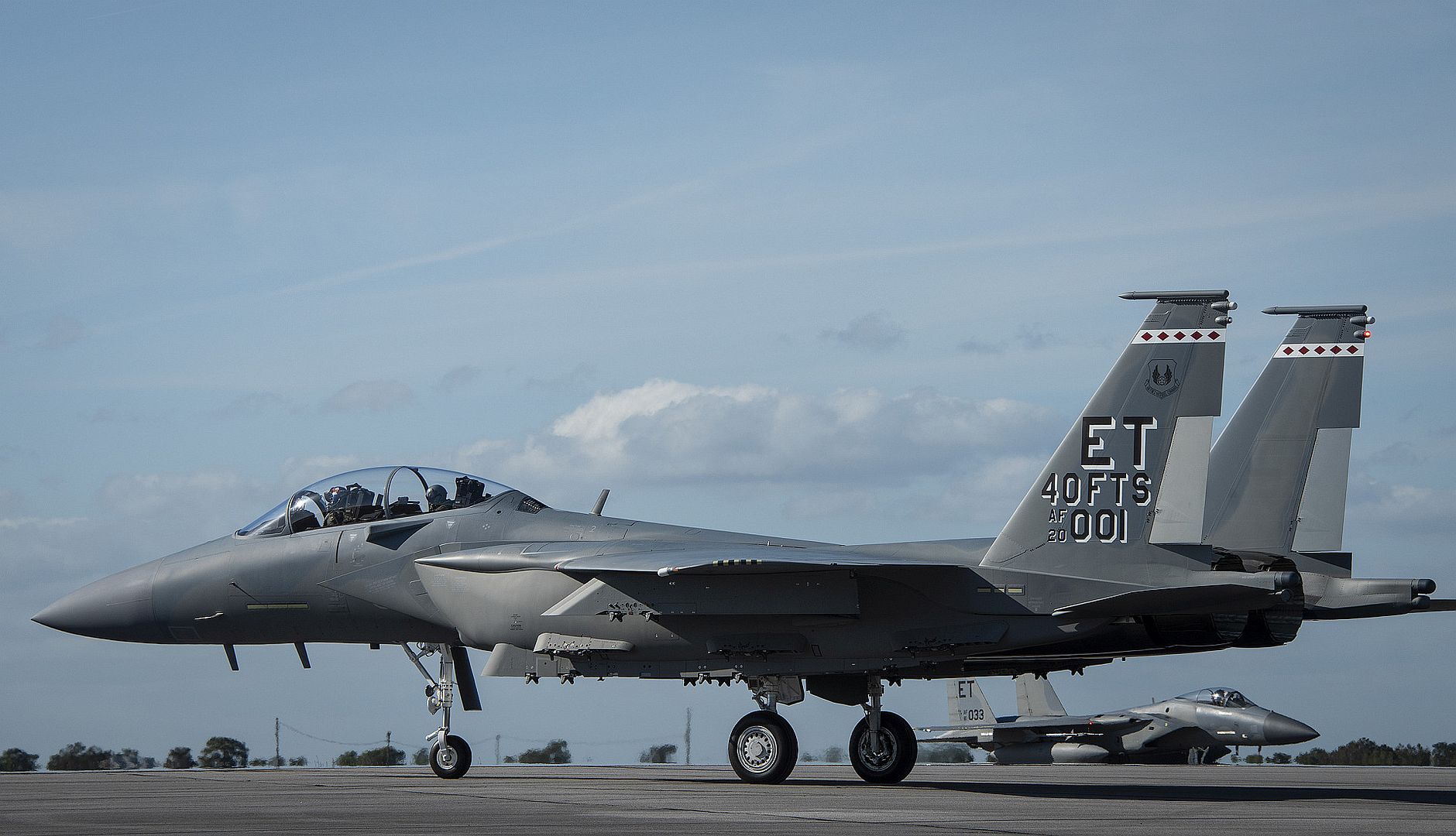
While the new fighter can be operated by a single pilot, it is a two-seat aircraft with an increased payload capacity, electronic flight controls, advanced cockpit and mission systems and software capabilities.
Before testing and evaluation begins, aircrews will familiarize themselves with the aircraft through local airspace flights.
(U.S. Air Force photos by Ilka Cole, 1st Lt. Karissa Rodriguez ,Tech. Sgt. John Raven and by Tech. Sgt. John McRell)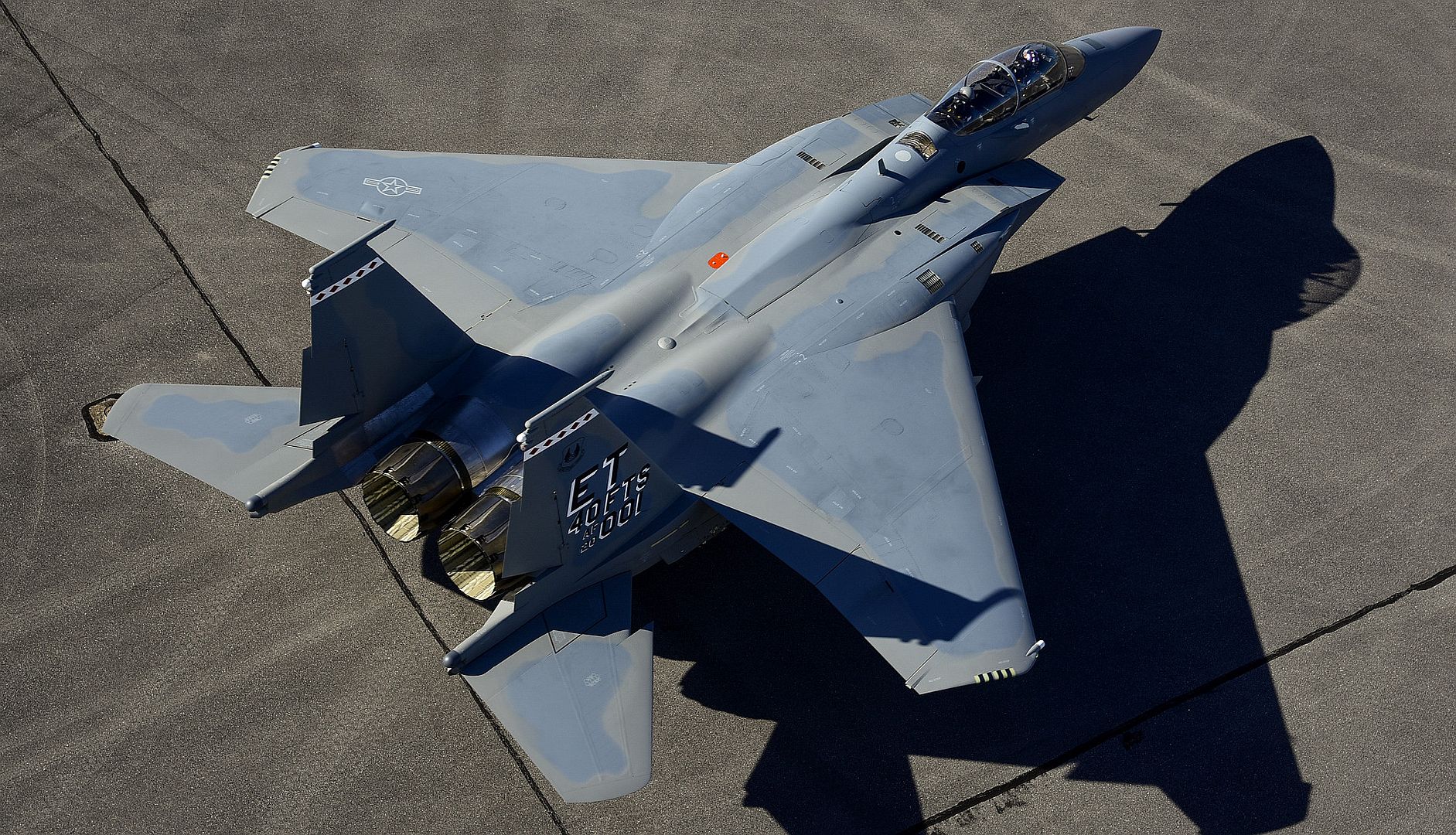
A German Air Force 74 Eurofighter Typhoon jet flies through German airspace during exercise Agile Fury 21 at the Grafenwöhr Training Area, Germany, March 10, 2021. Other units involved in exercise Agile Fury 21 include the 480th Fighter Squadron from Spangdahlem Air Base, Germany, the 510th Fighter Squadron from Aviano Air Base, Italy, as well as the 10th Panzer Division from the German Army. (U.S. Air Force photo by Senior Airman Taylor Slater)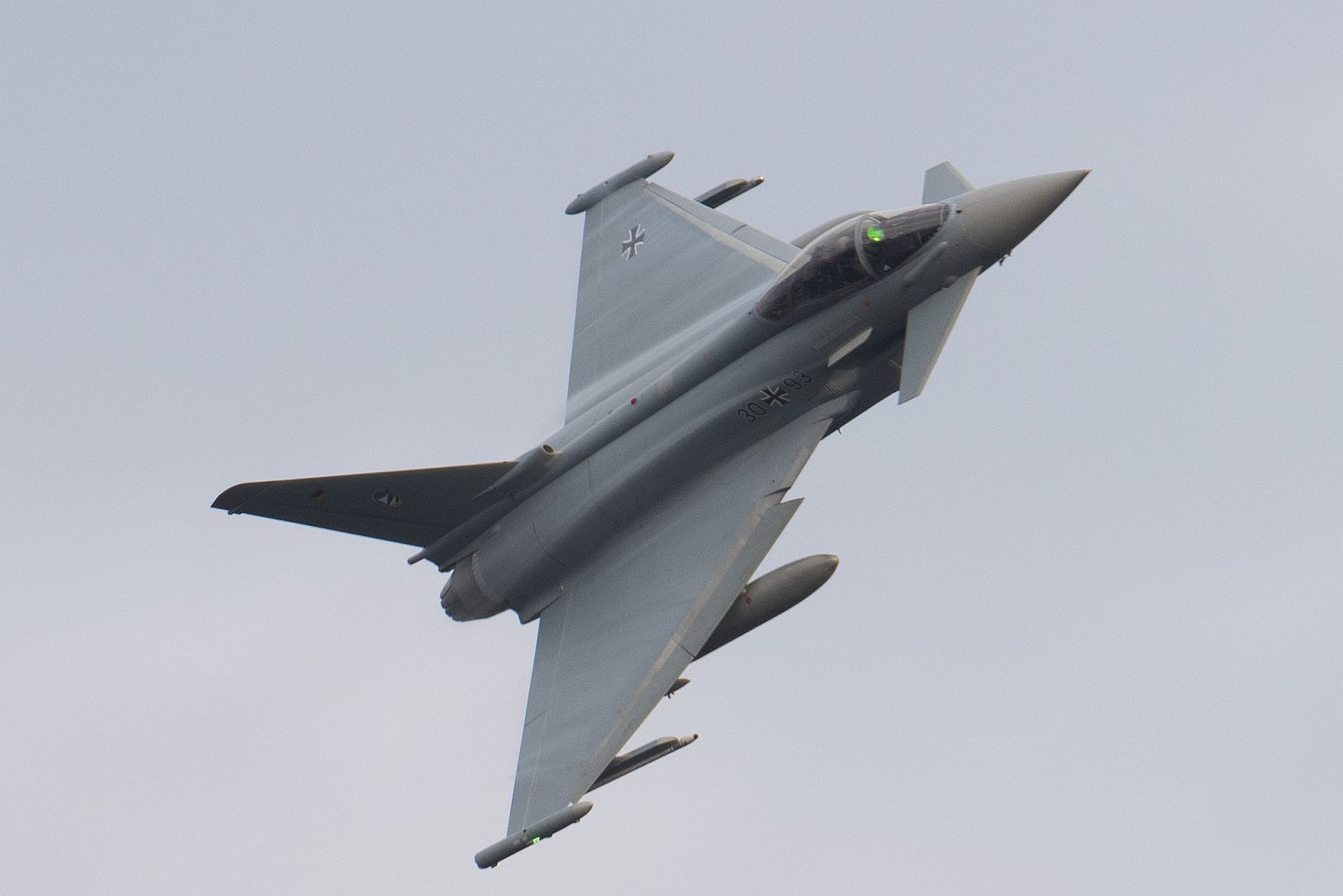
A U.S. Air Force B-1B Lancer aircraft refuels at Powidz Air Base, Poland, March 12, 2021. The refueling operation, known as a hot-pit refuel, allowed Bomber Task Force personnel to quickly refuel on the ground while the B-1B engines were running, saving valuable time. This marked the first time a B-1B has ever landed in Poland, demonstrating U.S. commitment to allies and partners, and stability in the Baltic Region. (U.S. Air Force photo by Senior Airman John R. Wright)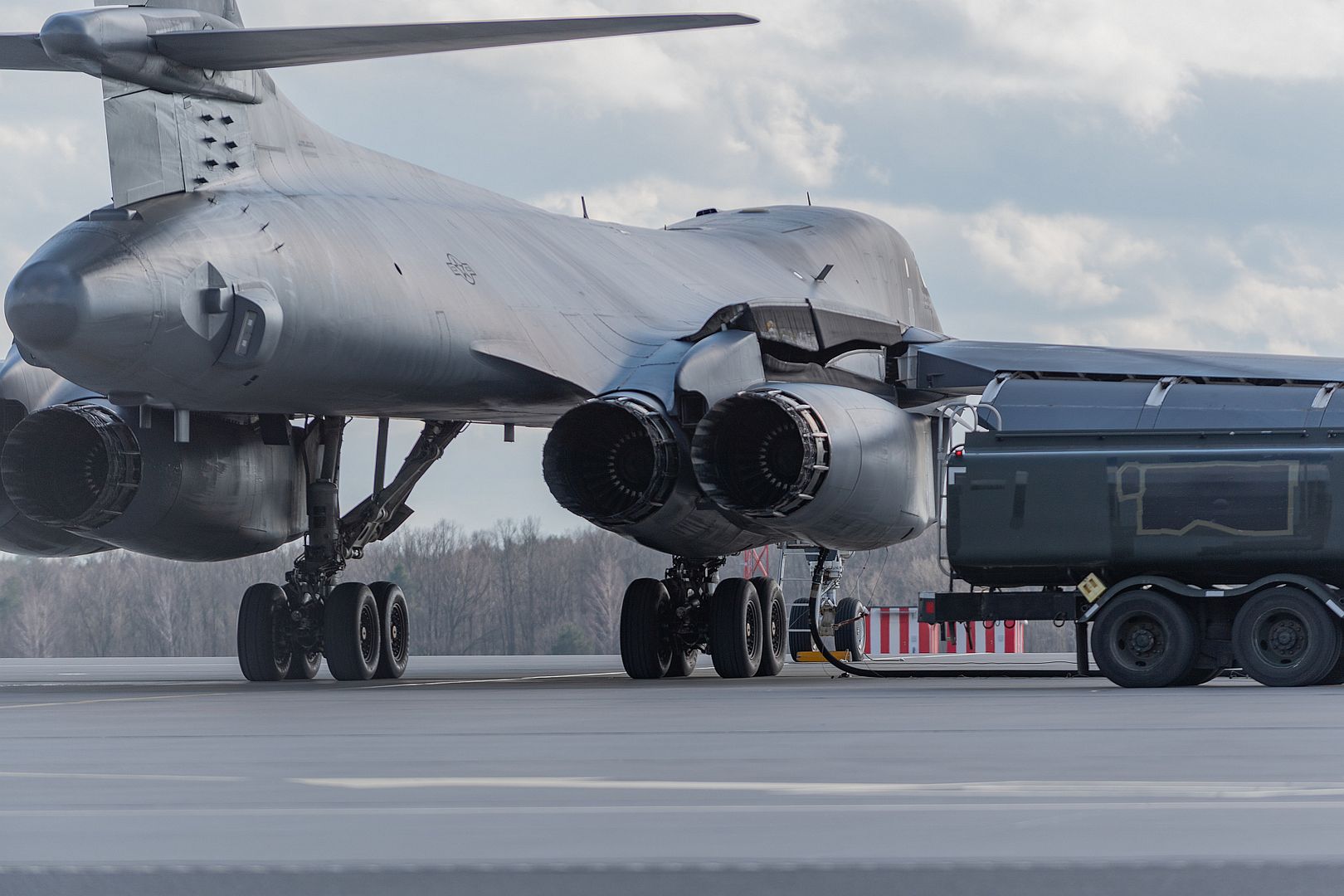
A KC-46 taxis past an E-4B assigned to Eighth Air Force and based out of Offutt Air Force Base, Nebraska, on Edwards Air Force Base, California, Feb. 24. The KC-46 conducted mid-air refueling flight tests with the E-4B in February. (Air Force photo by Giancarlo Casem)
-
 Main Admin03.13.2021
Main Admin03.13.2021
An F-35B Lightning II aircraft, assigned to the Marine Medium Tiltrotor Squadron 164 (Reinforced), 15th Marine Expeditionary Unit, is inspected after landing at Al Udeid Air Base, Qatar, March 2, 2021. The F-35B Lightning II is the United States Marine Corps variant of the 5th generation fighter. (U.S. Air Force photo by Staff Sgt. Greg Erwin).jpg)
An F-35B Lightning II aircraft, assigned to the Marine Medium Tiltrotor Squadron 164 (Reinforced), 15th Marine Expeditionary Unit, taxis at Al Udeid Air Base, Qatar, March 3, 2021. The presence of the United States Marine Corps aircraft in the U.S. Central Command area of responsibility emphasizes the joint domain and interoperability of the services in protecting the region. (U.S. Air Force photo by Staff Sgt. Greg Erwin).jpg)
EL CENTRO, Calif. (March 13, 2021) The U.S. Navy Flight Demonstration Squadron, the Blue Angels, complete their winter training at the conclusion of the Festival of Flight, onboard Naval Air Facility (NAF) El Centro, March 13, 2021. NAF El Centro supports combat training and readiness of the warfighter. This includes air operations support to operational fleet and training squadrons as well as squadrons from other services (Marine Corps, Army, Air Force) and international military partners. (U.S. Navy photo by Mass Communication Specialist 3rd Class Drew Verbis)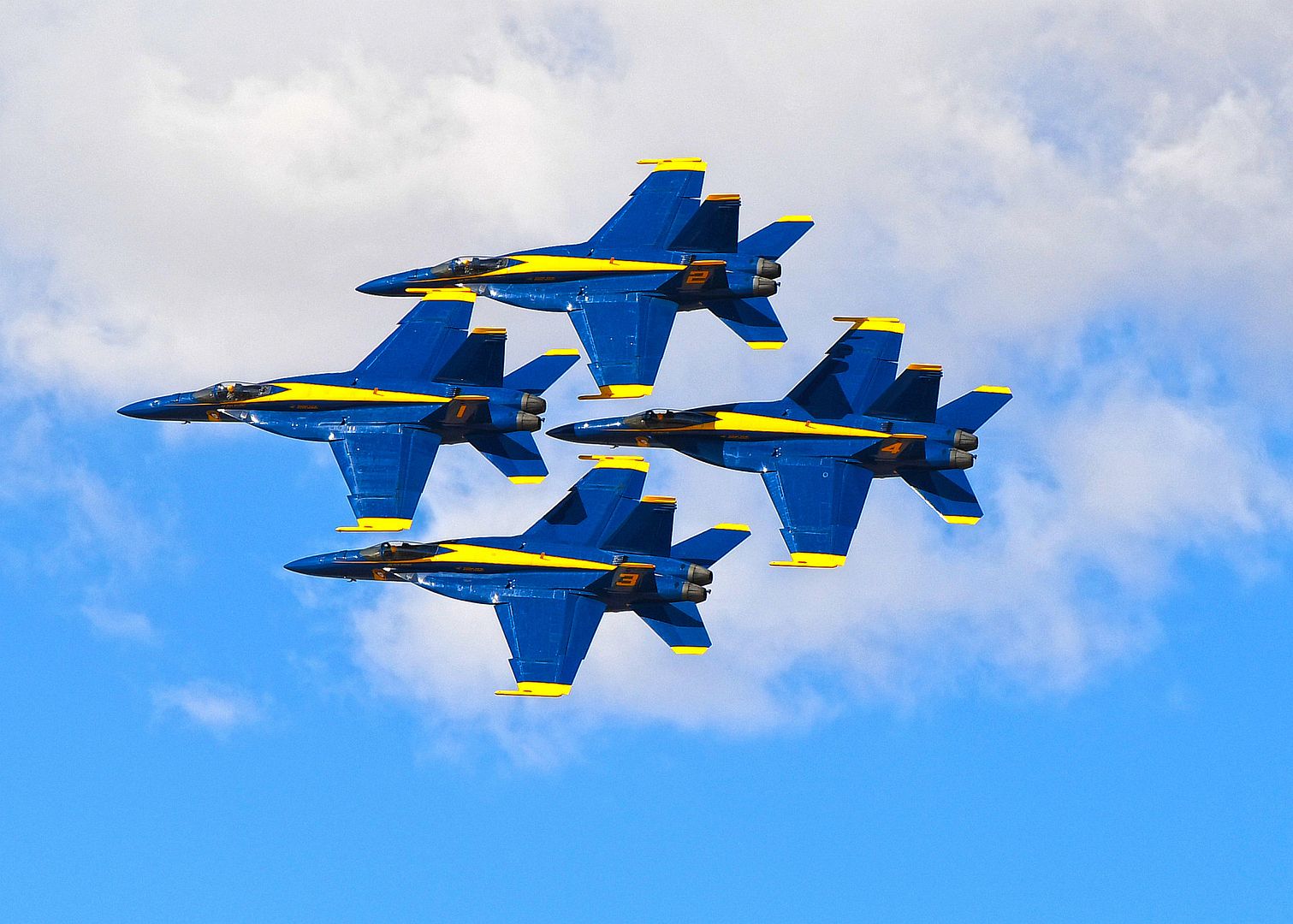
F/A-18 Super Hornets assigned to the U.S. Navy’s Blue Angels aerial demonstration team fly beside a KC-135R assigned to the Utah Air National Guard’s 151st Air Refueling Wing somewhere over Texas on Mar. 14, 2021. The Blue Angels spent 3 months training at NAF El Centro and were on their way home to Naval Air Station Pensacola. (U.S. Air National Guard photo by Master Sgt. John Winn)


A KC-135R assigned to the Utah Air National Guard’s 151st Air Refueling Wing flies over southern Utah on Mar. 14, 2021 en route to refuel the U.S. Navy’s Blue Angels aerial demonstration team. The team spent 3 months training at NAF El Centro and were on their way home to Naval Air Station Pensacola. (U.S. Air National Guard photo by Master Sgt. John Winn)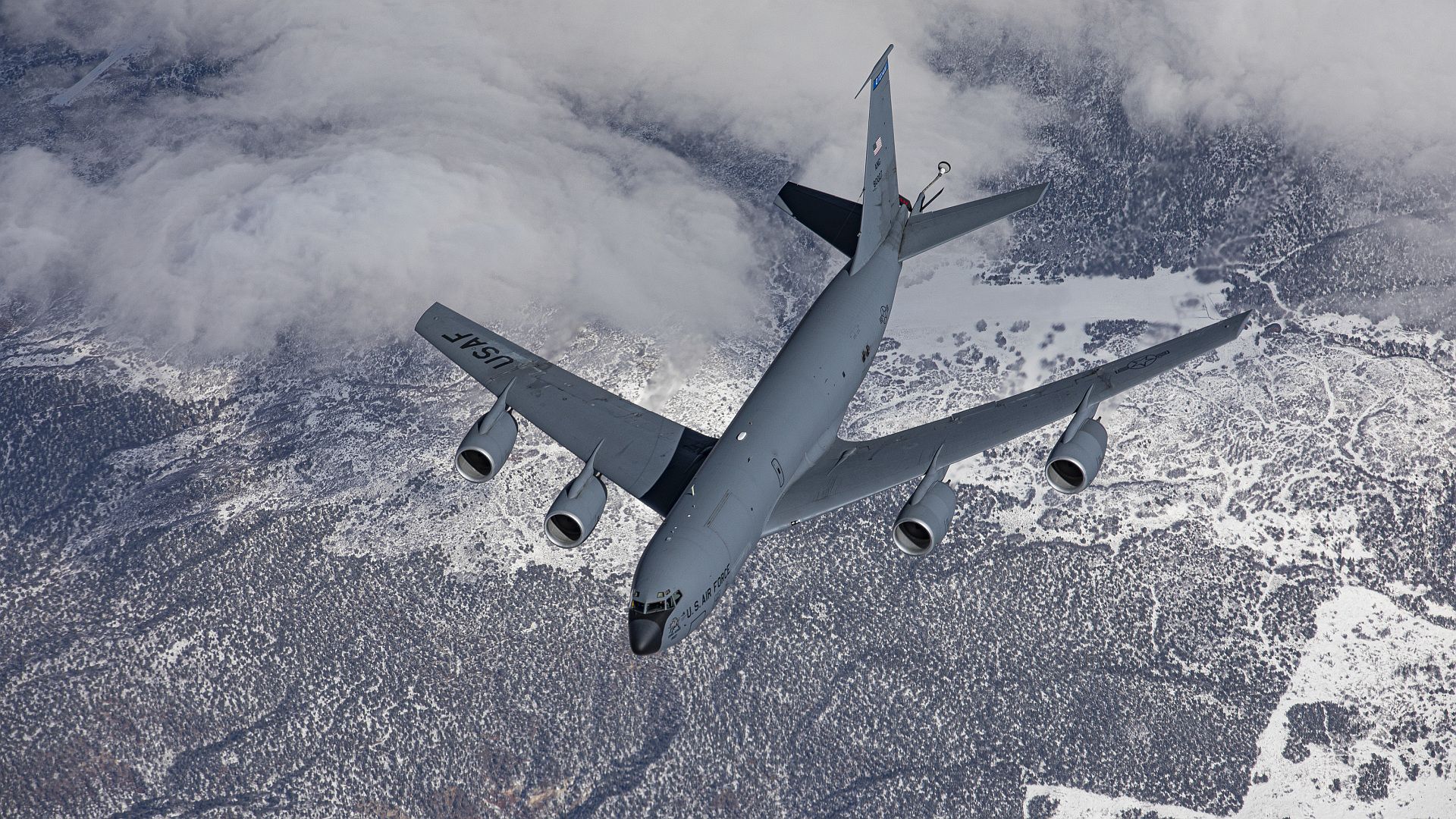
03.12.2021.
A LC-130 Skibird from the 109th Airlift Wing sits on the ramp at Kangerlussuaq Airport, Greenland with the Northern Lights dazzling in the sky above. The Northern Lights occur during the winter and are especially bright on a dark night in Greenland. The 109th conducts training and scientific research support annually in Greenland from March-August. Photo Courtesy of Lt. Col. Kevin Jones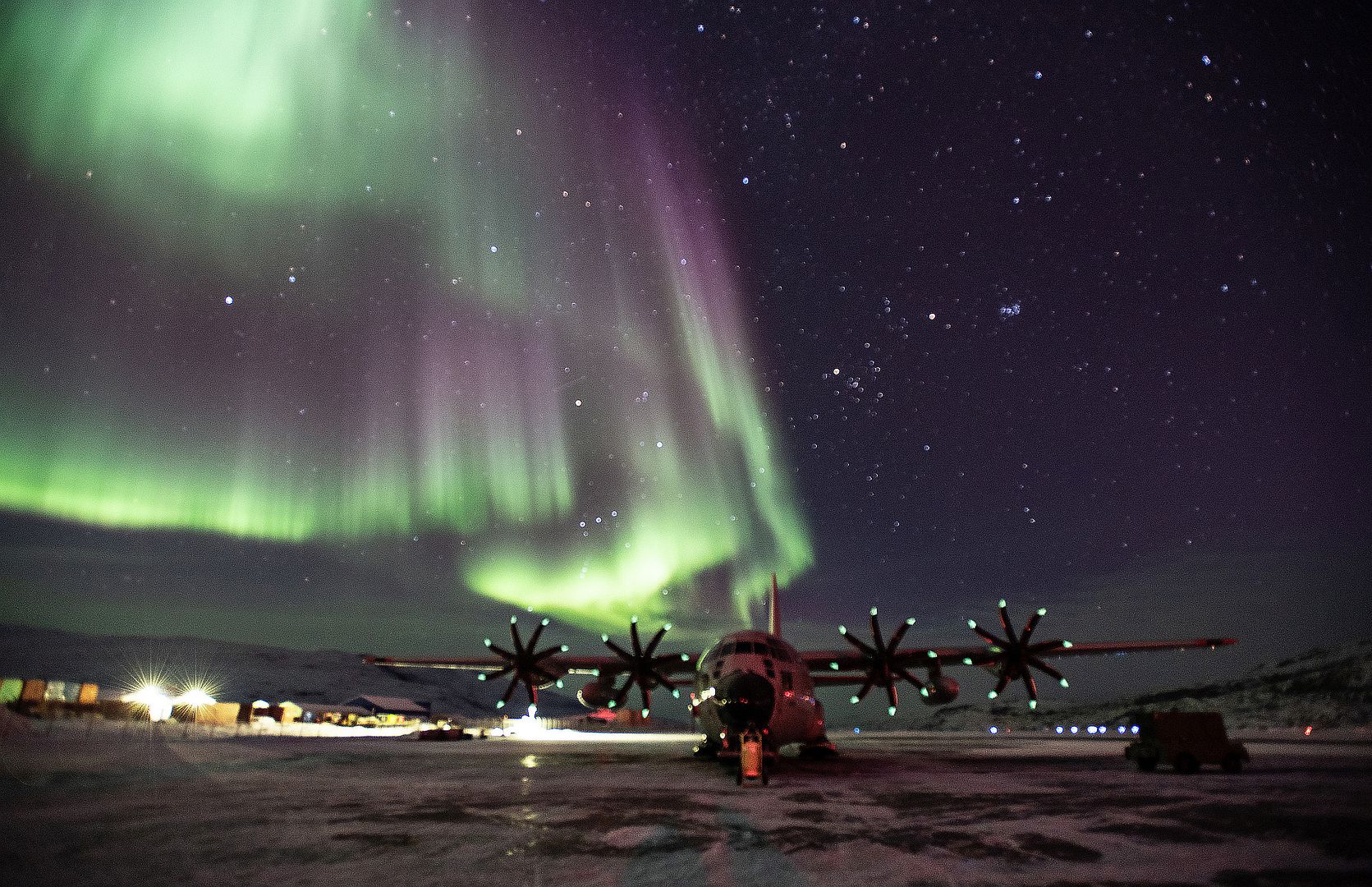
A French Air Force Rafale aircraft prepares to depart after receiving fuel from a U.S. Air Force KC-10 Extender aircraft while participating in Exercise Sky Shield II, March 3rd, 2021. Exercise Sky Shield II brought together members of the United States Air Force, Qatar Emiri Air Force and the French Air Force to demonstrate their enduring and resolute partnership, and to demonstrate the promise for future interoperability throughout the U.S. Central Command area of responsibility. (U.S. Air Force photos by Staff Sgt. Taylor Harrison)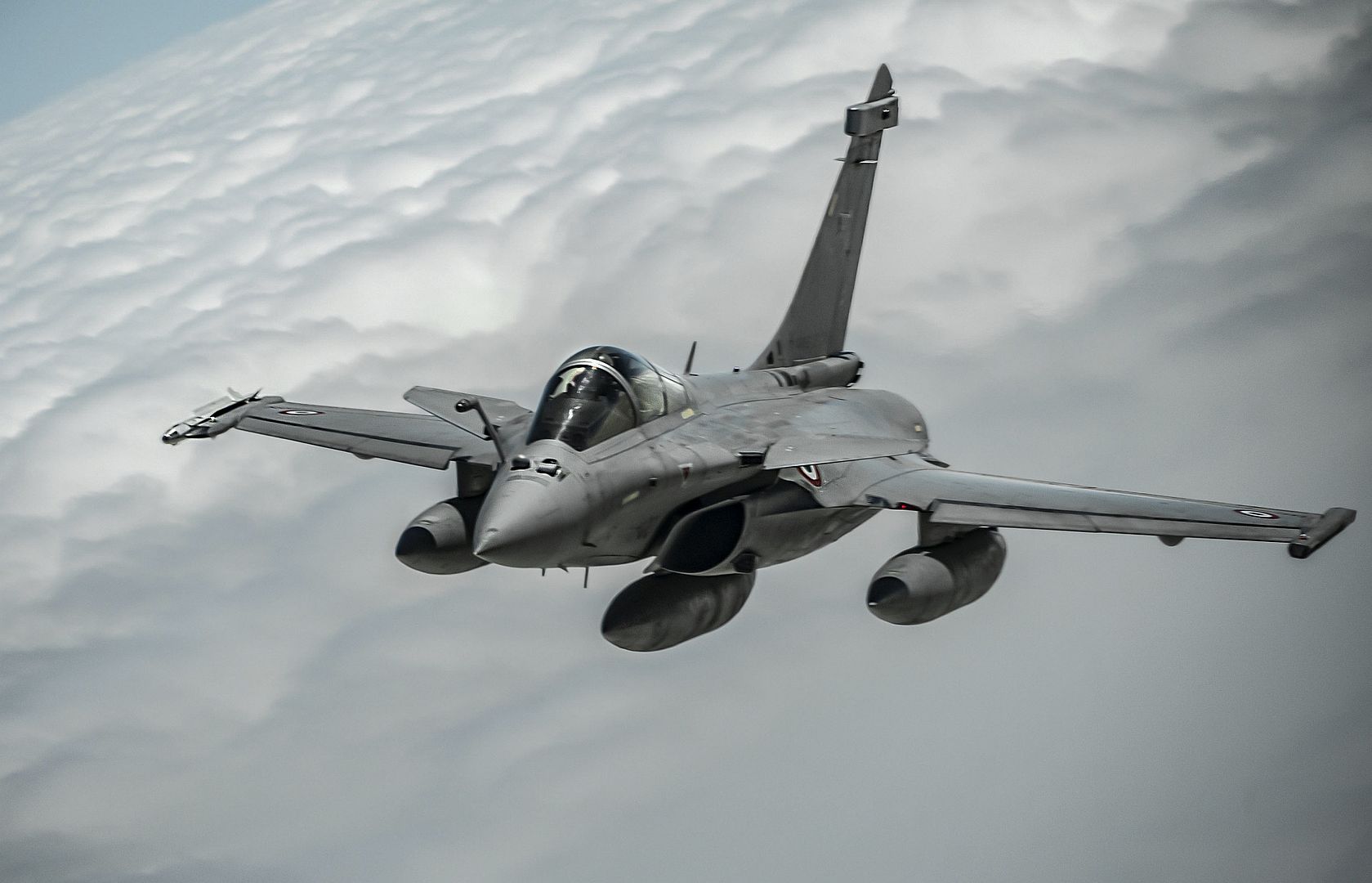
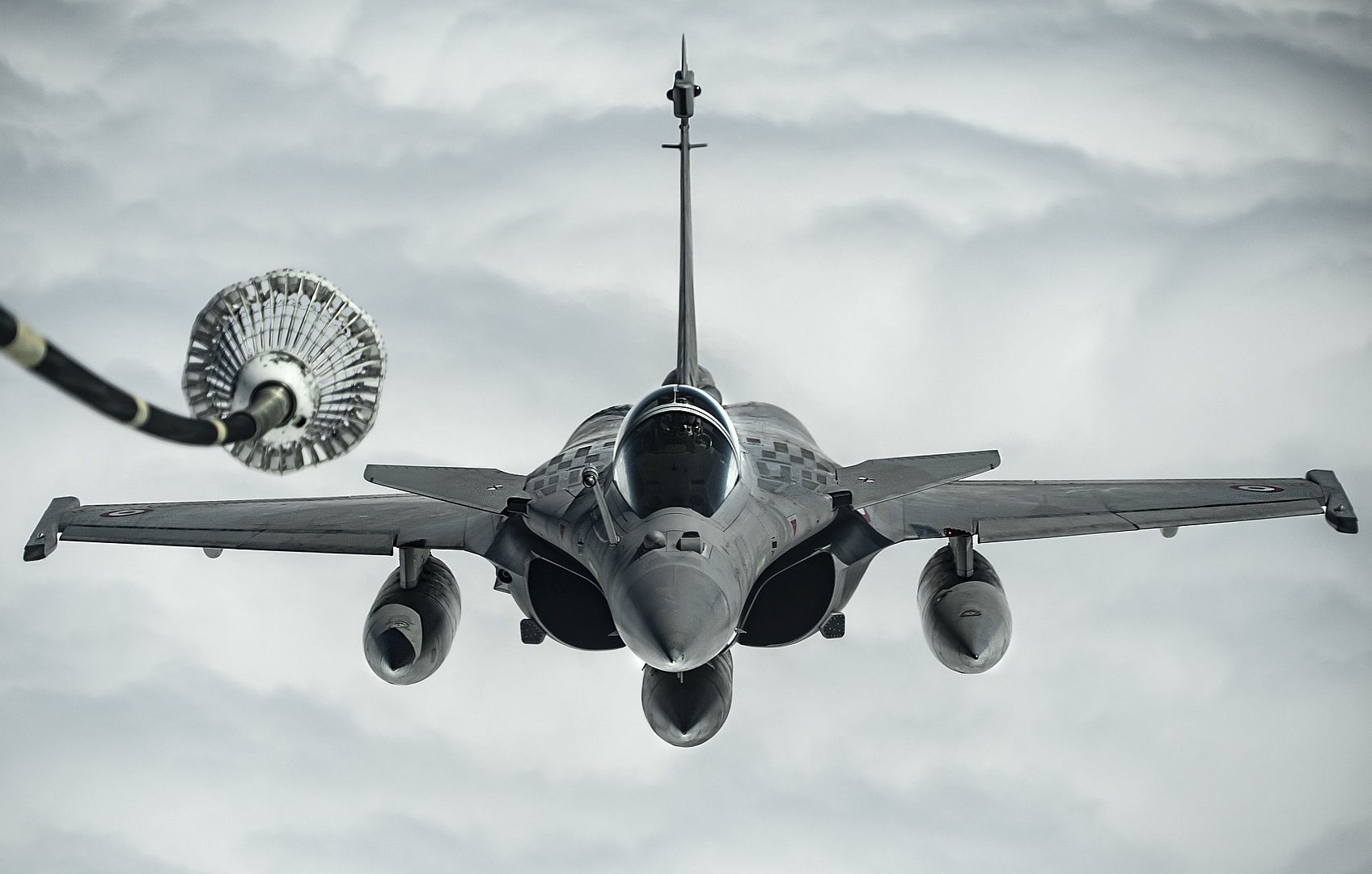
A U.S. Air Force KC-10 aircraft provides fuel to a Qatar Emiri Air Force Rafale aircraft participating in Exercise Sky Shield II, March 1st, 2021. Exercise Sky Shield II brought together members of the United States Air Force, Qatar Emiri Air Force and the French Air Force to demonstrate their enduring and resolute partnership, and to demonstrate the promise for future interoperability throughout the U.S. Central Command area of responsibility. (U.S. Air Force photos by Staff Sgt. Taylor Harrison)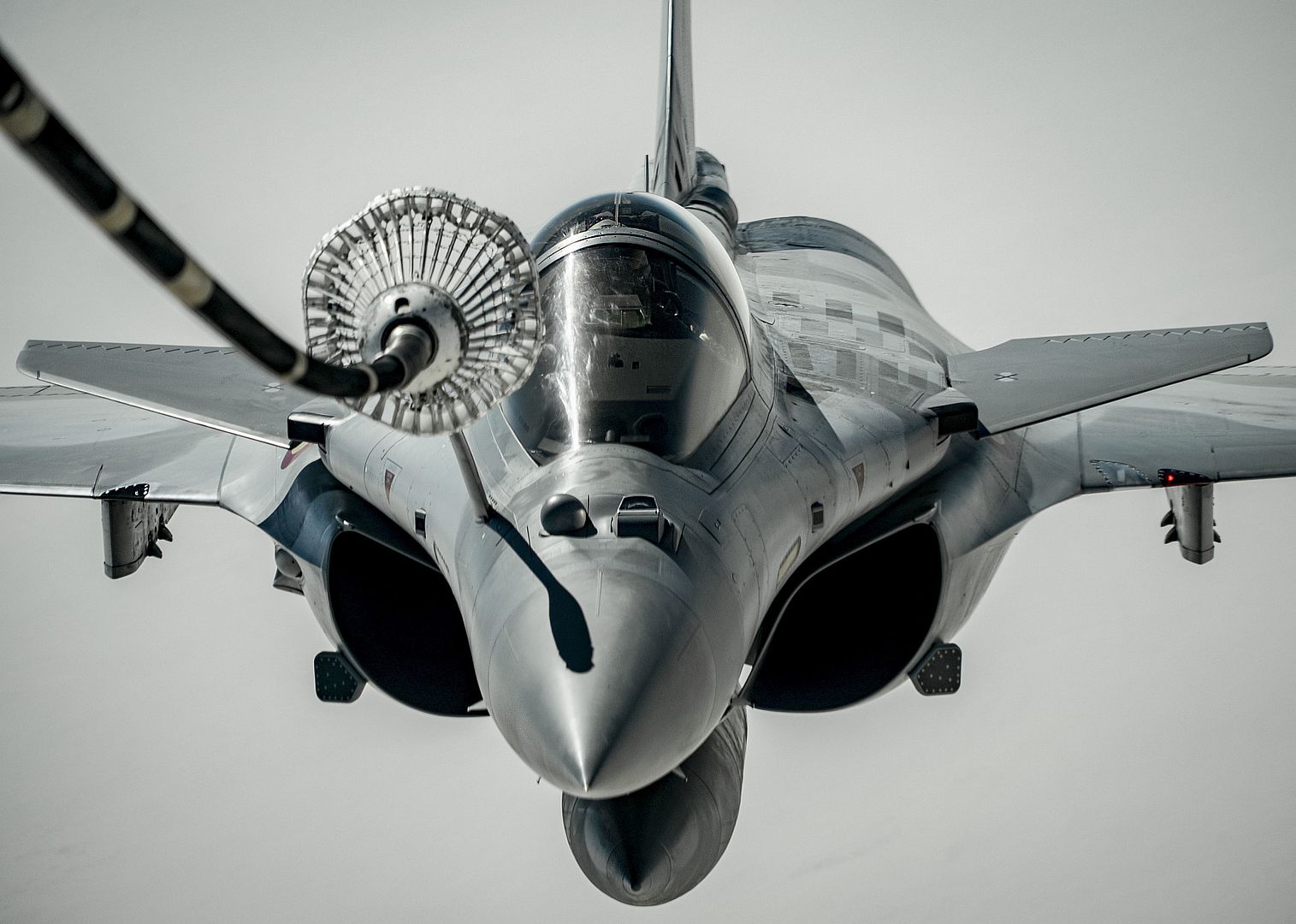
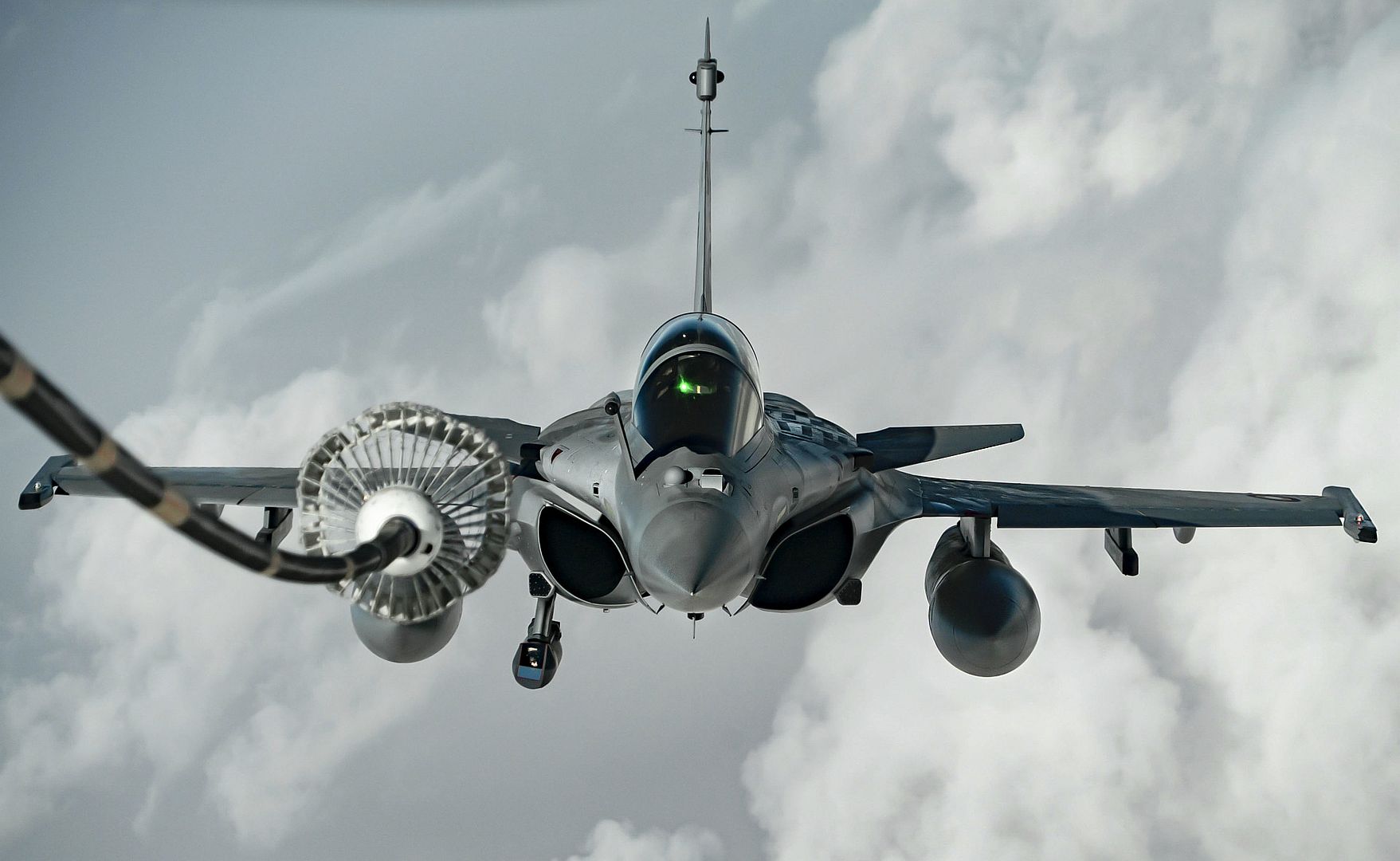
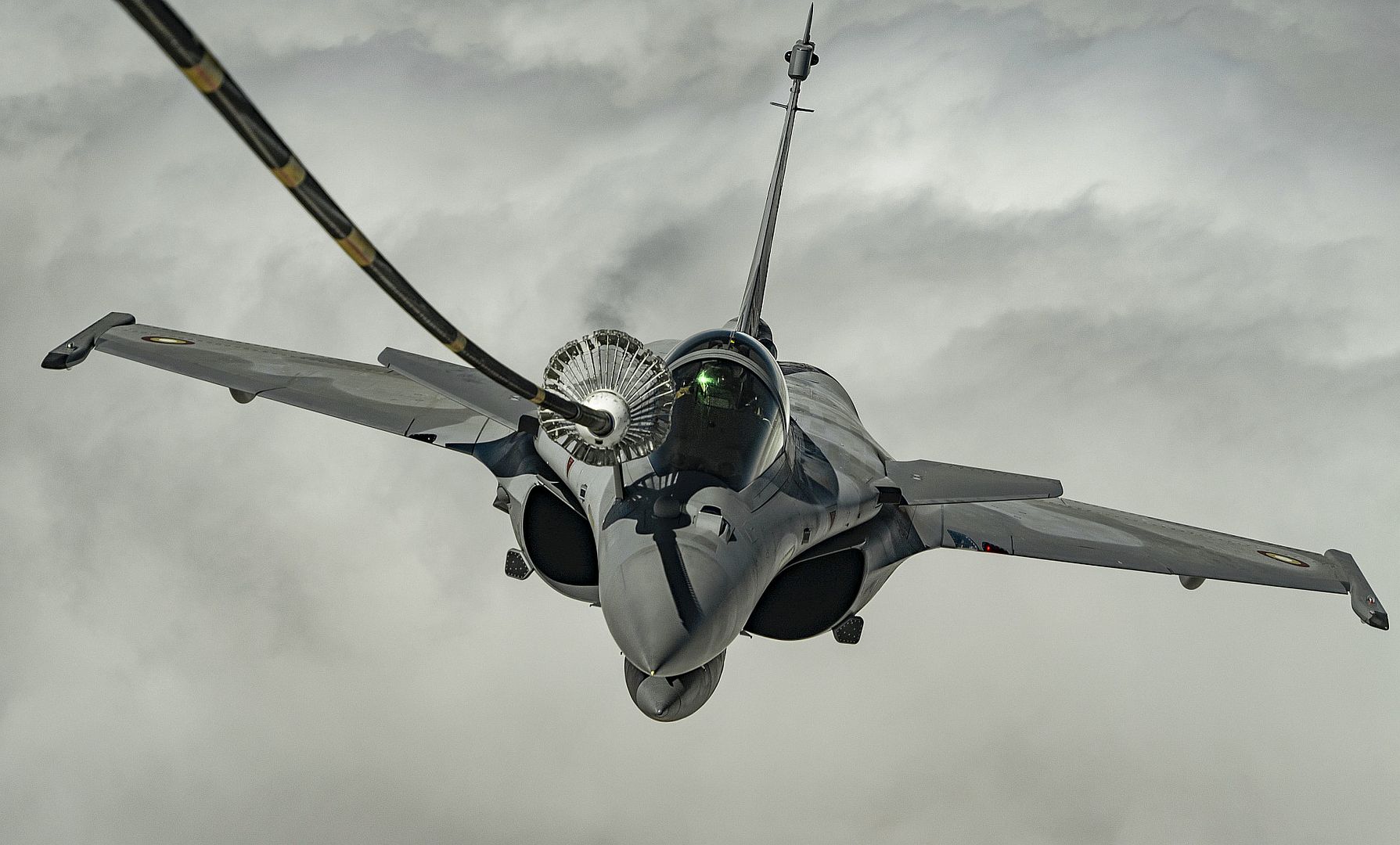
GREENVILLE, S.C., Mar. 15, 2021 - Lockheed Martin (NYSE: LMT) has received its first F-16 from the U.S. Air Force as part of the $900 million indefinite delivery/indefinite quantity (IDIQ) contract the company received in December 2020 to provide sustainment support and depot-overflow services for F-16 aircraft.
The F-16 arrived at the Lockheed Martin facility in Greenville, South Carolina from Edwards Air Force Base, California on March 9, 2021 and will be inducted today, March 15, to begin work.
“The arrival of this first jet marks the beginning of fighter Sustainment work at the site and positions Greenville as an F-16 Center of Excellence, supporting both F-16 production and sustainment operations,” said Mike Fox, Lockheed Martin Greenville site director.
The IDIQ contract also establishes the first ever U.S.-based F-16 industry depot to support government-owned depot facilities and includes depot-level maintenance activities, predefined programmatic work, aircraft modification and unplanned drop-in maintenance. As the F-16 Fighting Falcon’s Original Equipment Manufacturer, Lockheed Martin is uniquely positioned to provide the most comprehensive knowledge of the aircraft and tailored sustainment solutions to optimize the F-16 fleet for greater capability, readiness and performance.
“We are excited for this opportunity to expand our partnership with the U.S. Air Force and ensure the continued readiness and capability of the F-16 fleet,” says Danya Trent, vice president of Lockheed Martin F-16 Program. “Our team of F-16 experts in Greenville are ready and prepared to meet our customer’s most challenging problems, partnering between Production and Sustainment operations, giving full life cycle coverage for the F-16.”
The F-16 Fighting Falcon offers advanced interoperable capabilities that enhance partnerships with allies across the world. It has been proving its effectiveness for decades and continues to remain the best value among 4th generation jets for its capabilities and affordable lifecycle costs. To date, a total of 4,588 F-16s have been produced and are currently operated by 25 countries.
(Photo Lockheed Martin)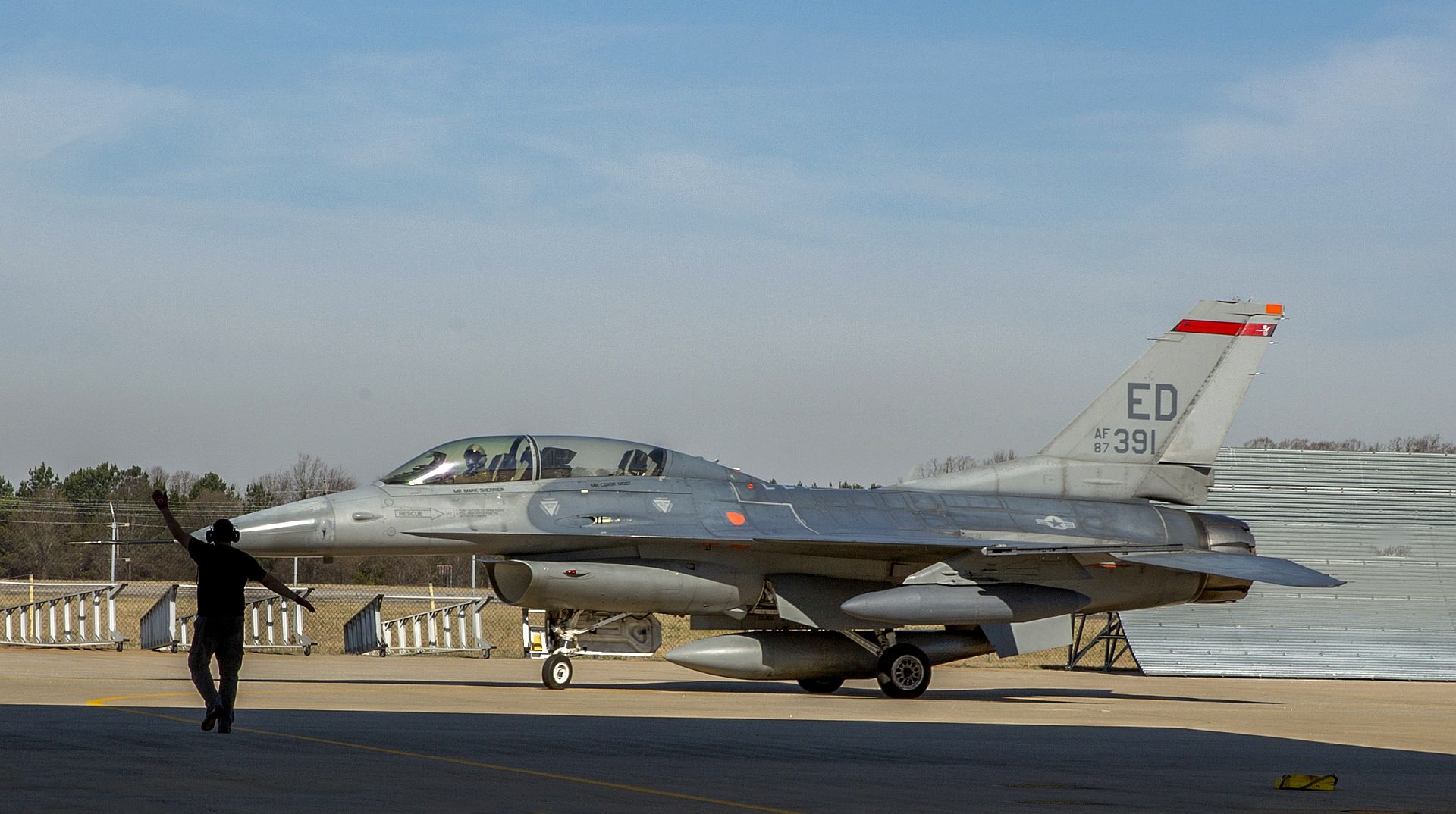
RAF Typhoons have conducted a series of air strikes in support of Iraqi ground forces. The strikes began on the Wednesday 10 March and carried on until Friday 12 March, with a follow on strike on Sunday 14 March. The targets were a caves system south west of the city of Erbil in Northern Iraq.
The strikes on Wednesday saw the use of Storm Shadow missiles, which were selected as the most appropriate weapons for the task. A preceding check of the area confirmed that there were no signs of civilians in the area who might be placed at risk. Following the mission, the Typhoon’s weapons were confirmed to have struck their targets precisely.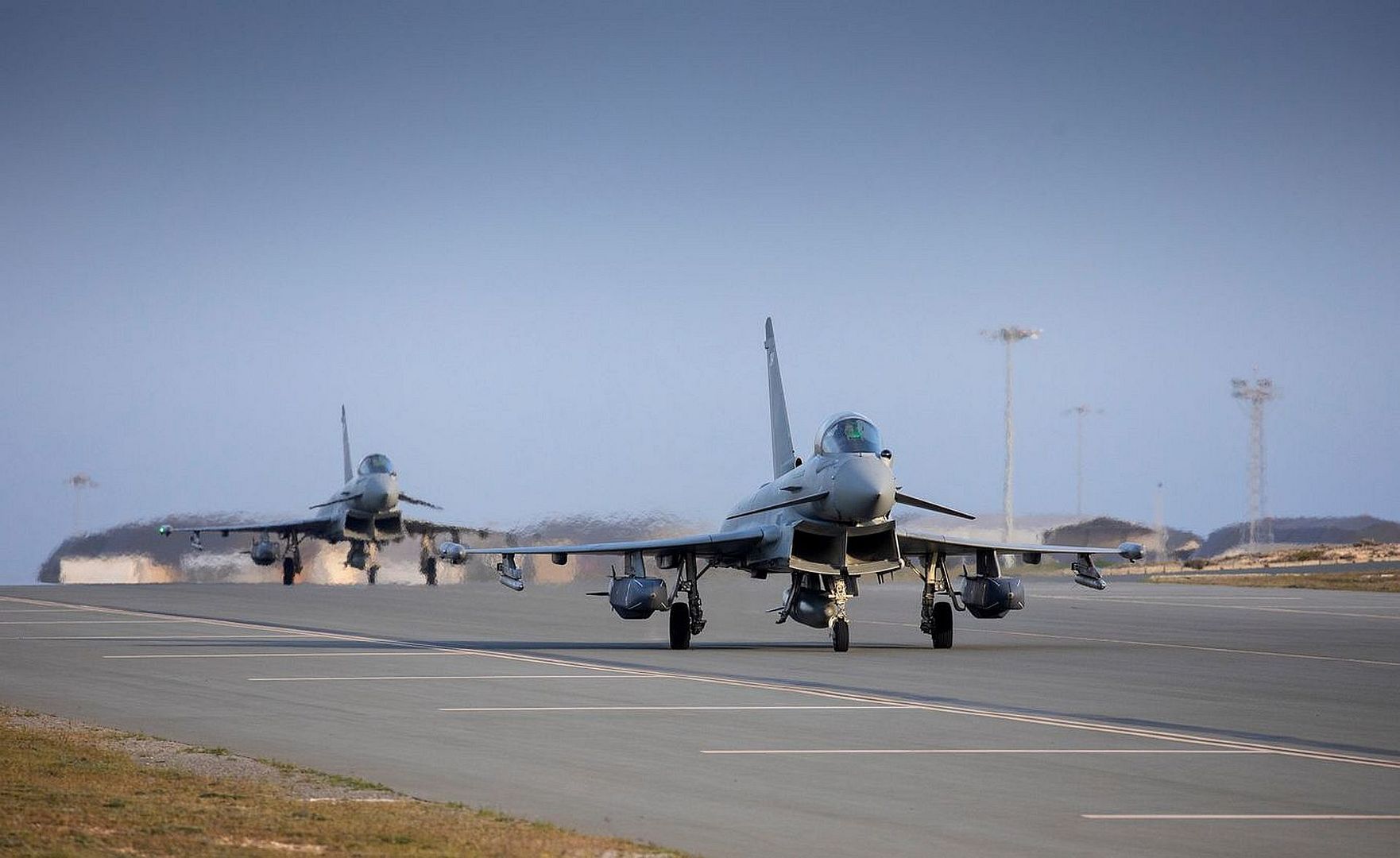
The follow on strikes have seen 20 Paveway IV guided bombs dropped on other caves in the in the same remote, mountainous area.
UK Armed Forces are deployed to the Middle East to support counter Daesh operations as part of the 83-member strong Global Coalition. The RAF is continuing to conduct air strikes as required to assist the highly capable Iraqi Counter-Terrorism Forces to prevent Daesh from re-establishing a meaningful presence in Iraq.
(photo courtesy of the MOD)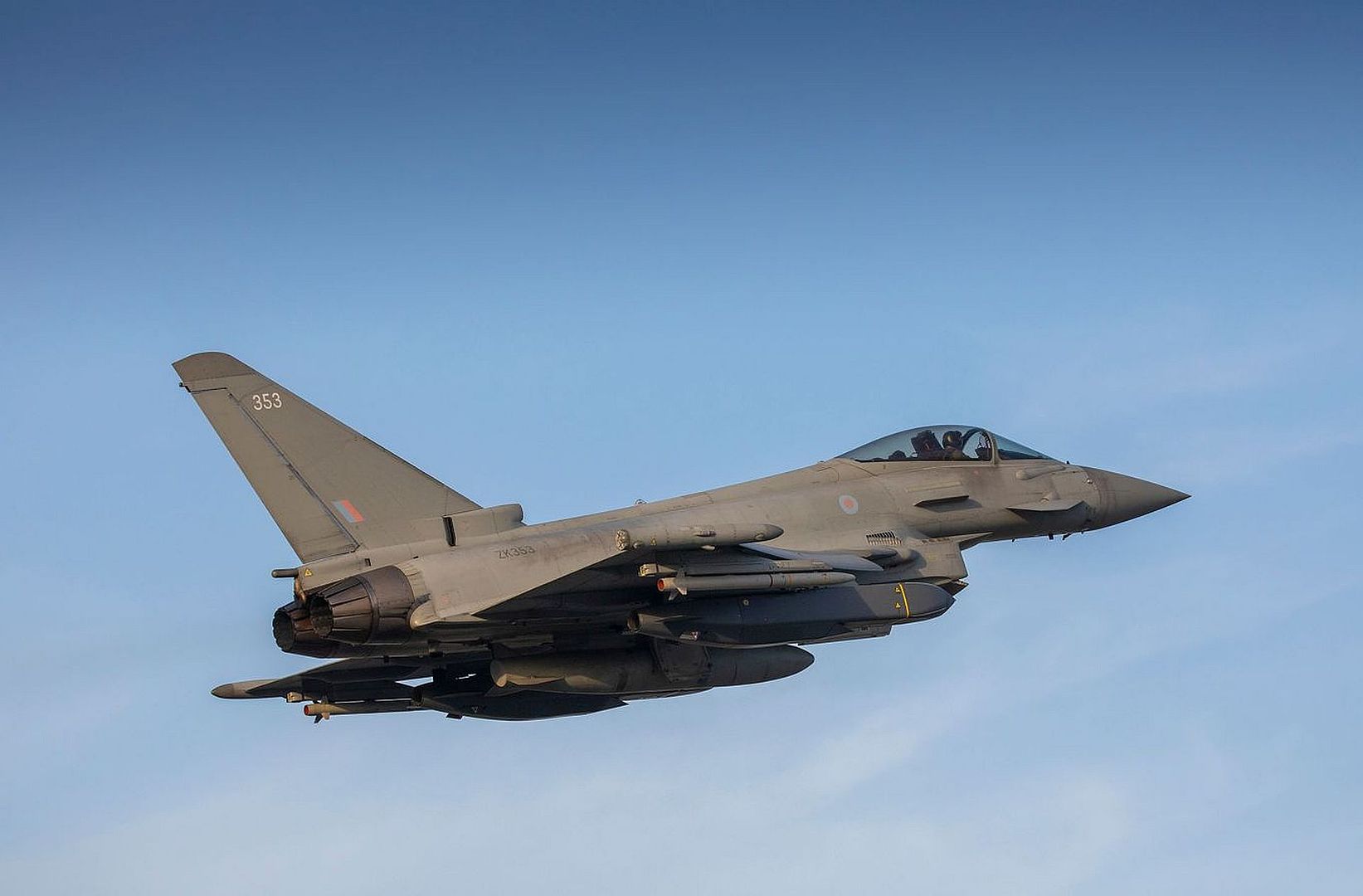
-
 Main AdminWESTERN ATLANTIC OCEAN (March 14, 2021) – A U.S. F-35B Lightning II aircraft from Naval Air Warfare Center Aircraft Division (NAWCAD) Air Test and Evaluation Squadron (VX) 23 loaded with inert GBU-12s converts to Mode 4 as it prepares to launch for the first ski jump short takeoff (STO) flight test with weapons aboard Italian aircraft carrier ITS Cavour (CVH 550) March 14, 2021. This was the first day of weapons, or external stores, flight test during Cavour’s sea trials with the F-35B, the short takeoff and vertical landing (STOVL) variant of the fifth-generation fighter aircraft that will serve as the ship’s key weapon system. Cavour is in phase one of its two-phase “Ready for Operations” campaign. U.S. Navy photo by Dane Wiedmann
Main AdminWESTERN ATLANTIC OCEAN (March 14, 2021) – A U.S. F-35B Lightning II aircraft from Naval Air Warfare Center Aircraft Division (NAWCAD) Air Test and Evaluation Squadron (VX) 23 loaded with inert GBU-12s converts to Mode 4 as it prepares to launch for the first ski jump short takeoff (STO) flight test with weapons aboard Italian aircraft carrier ITS Cavour (CVH 550) March 14, 2021. This was the first day of weapons, or external stores, flight test during Cavour’s sea trials with the F-35B, the short takeoff and vertical landing (STOVL) variant of the fifth-generation fighter aircraft that will serve as the ship’s key weapon system. Cavour is in phase one of its two-phase “Ready for Operations” campaign. U.S. Navy photo by Dane Wiedmann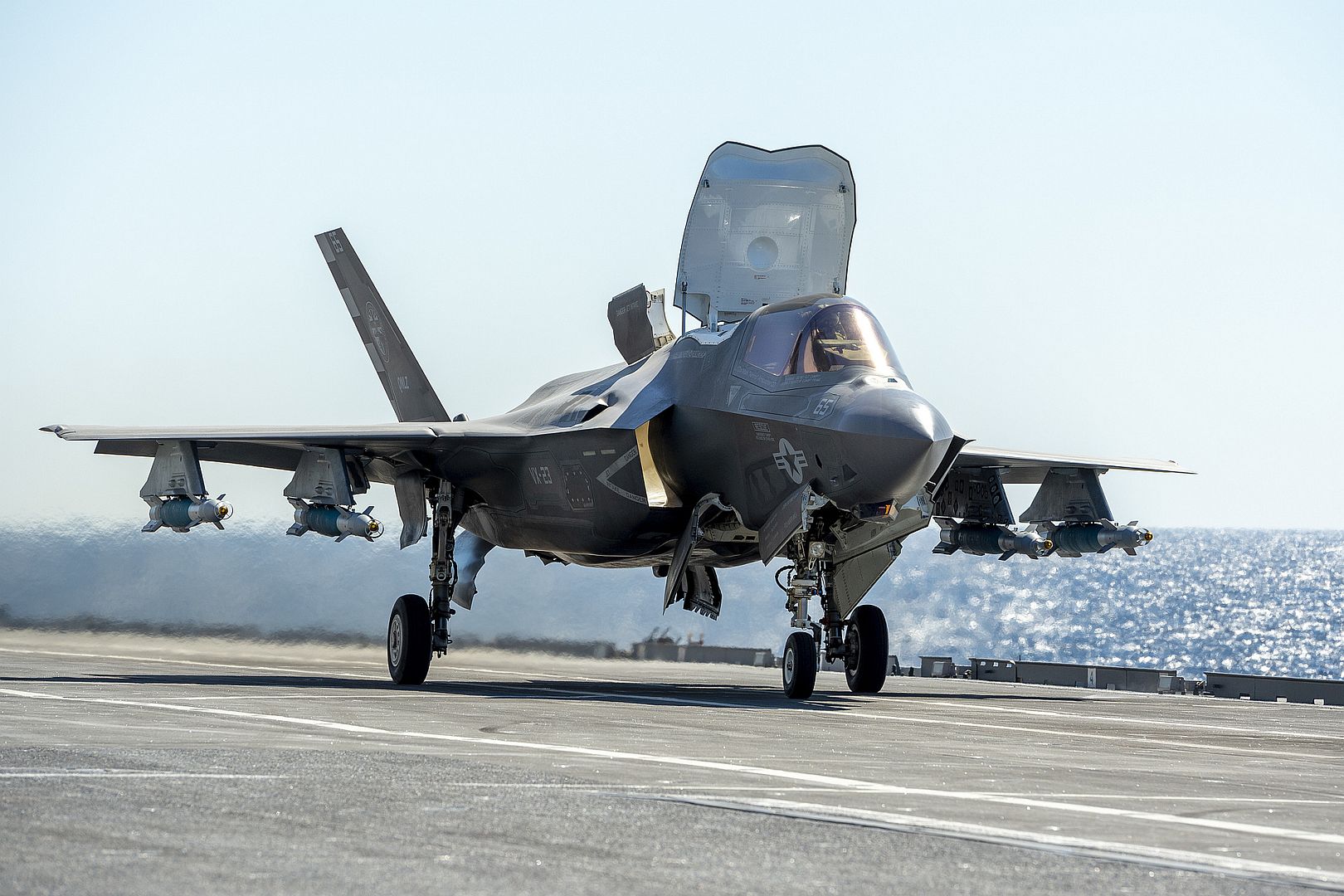
U.S. Air Force Maj. Joe Schmitt, 351st Air Refueling Squadron pilot, conducts preflight checks while sitting in a KC-135 Stratotanker aircraft assigned to the 100th Air Refueling Wing, Royal Air Force Mildenhall, England, March 15, 2021. The KC-135 was one of two aircraft flying to Lithuania as part of exercise Baltic Trident. The exercise aims to strengthen allied partnerships across the European area of responsibility. (U.S. Air Force photo by Tech. Sgt. Anthony Hetlage)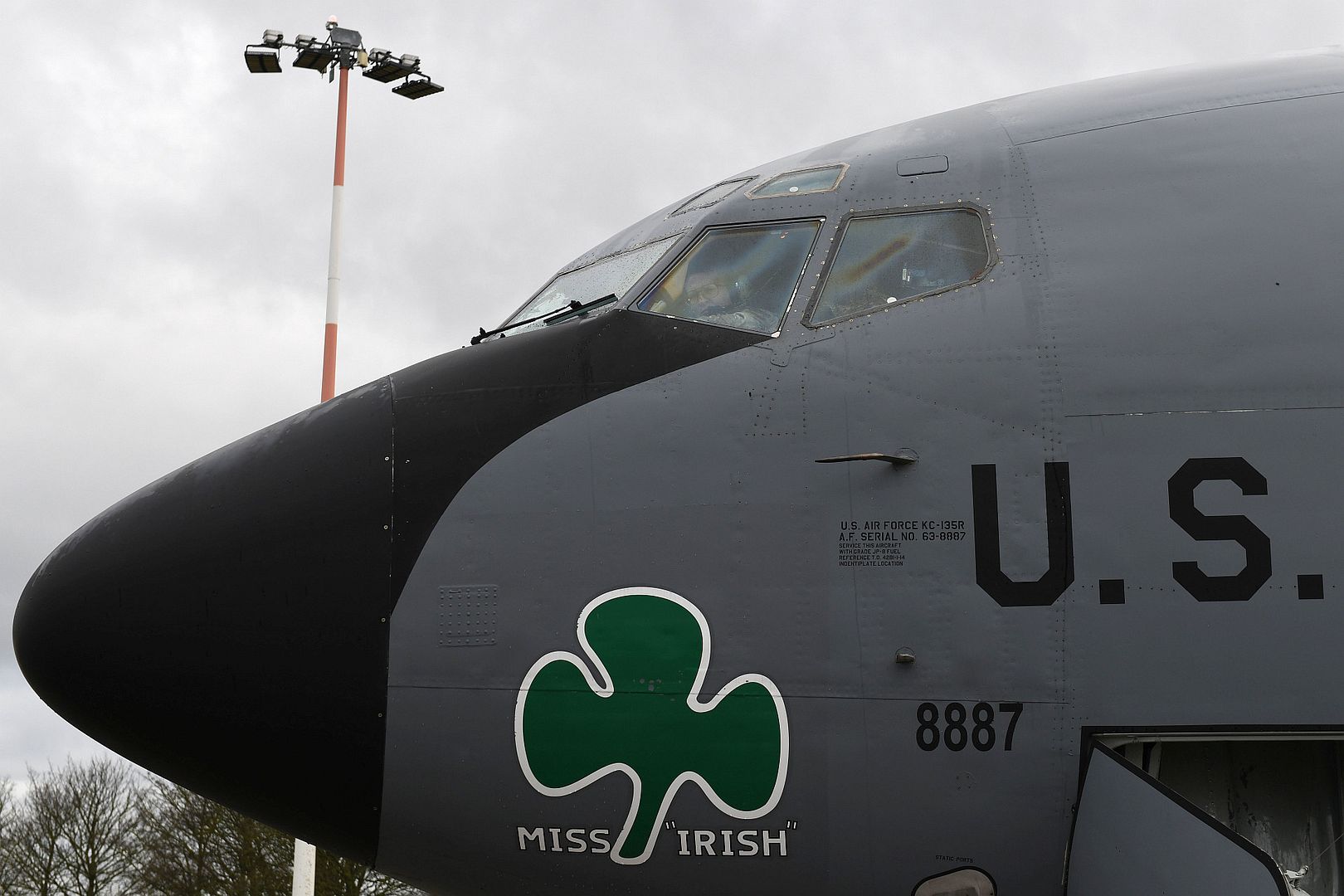
F-15C Eagles and F-15E Strike Eagles from the 48th Fighter Wing line the apron at Amari Air Base, Estonia, in support of Exercise Baltic Trident, March 15, 2021. Incorporating Agile Combat Employment concepts into exercises like Baltic Trident increases lethality and enhances interoperability with NATO allies and partner nations, ensuring the ability to counter military aggression and coercion by sharing responsibilities for common defense. (U.S. Air Force photo by Airman 1st Class Jessi Monte)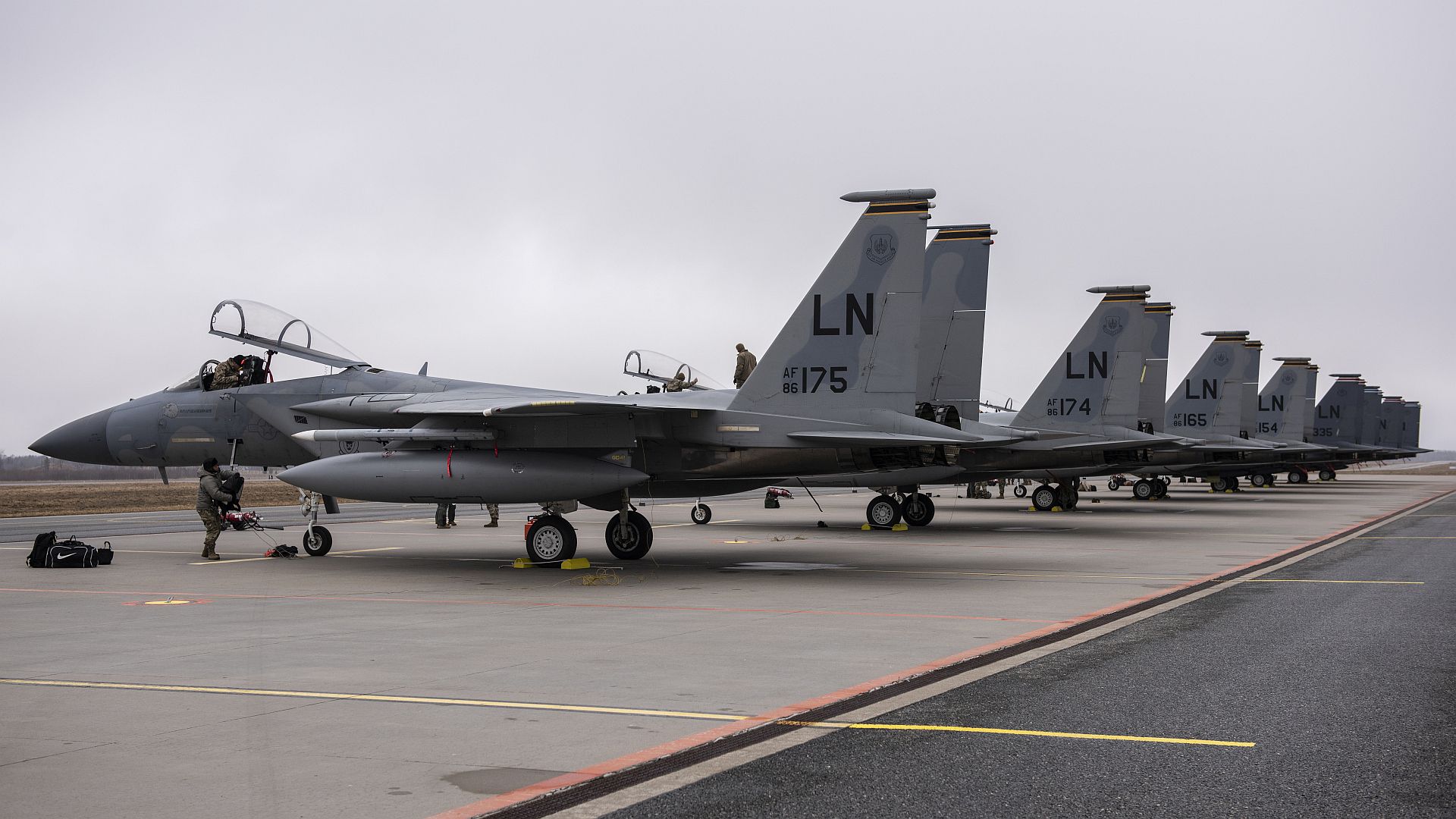
A 48th Fighter Wing F-15E Strike Eagle prepares to connect with a KC-135 Stratotanker for aerial refueling on the way to Amari Air Base, Estonia, in support of exercise Baltic Trident, March 15, 2021. Exercises like this strengthen interoperability with NATO allies and partner nations, and increase 48th FW sortie generation and sustainment capabilities away from home station through the application of Agile Combat Employment concepts. (U.S. Air Force photo by Airman 1st Class Jessi Monte)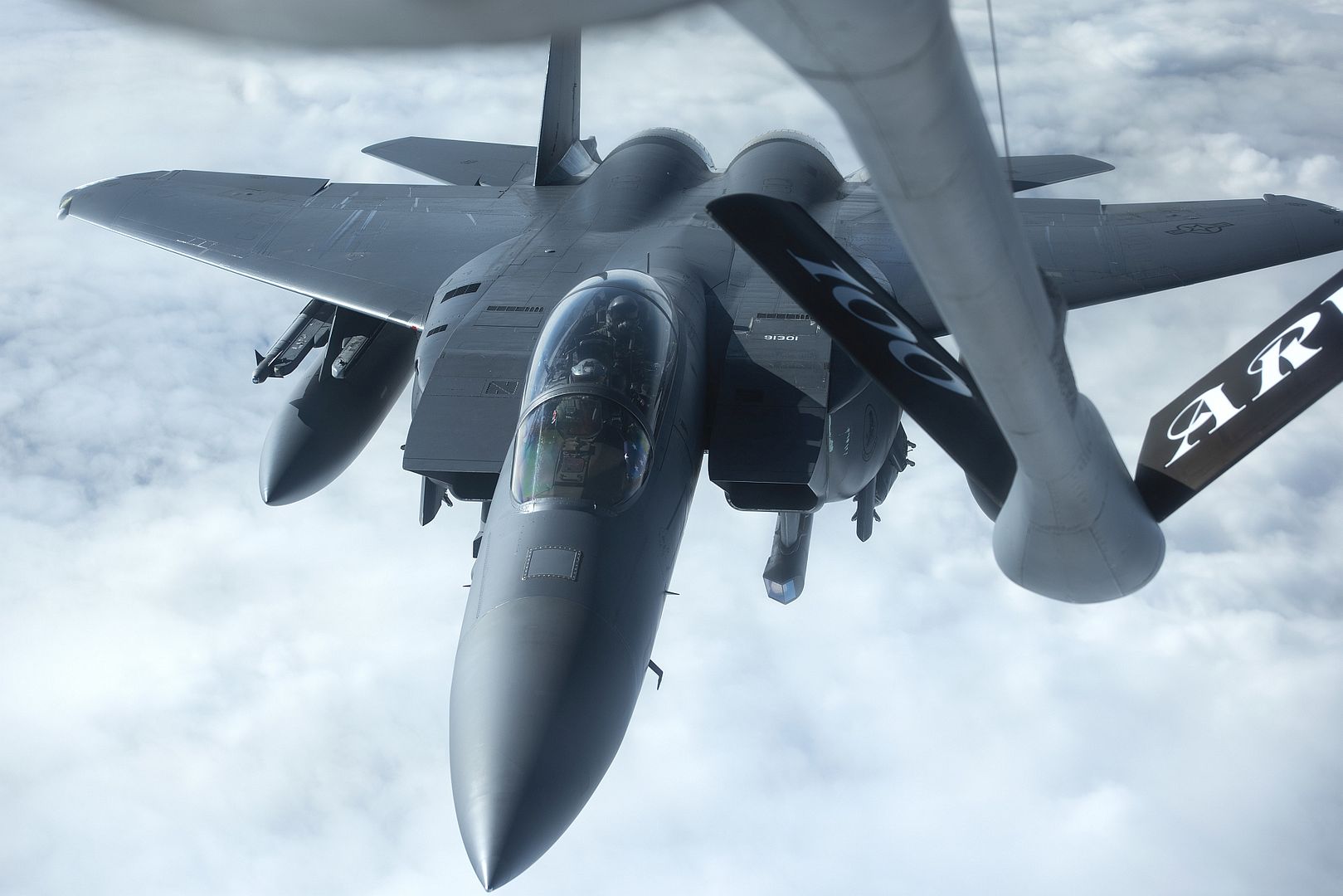
A U.S. Army soldier with Charlie Company, 5th Battalion, 101st Combat Aviation Brigade “Phantoms” performs flight checks on a UH-60 Black Hawk helicopter before takeoff, March 15, 2021, at Incirlik Air Base, Turkey. The Phantoms provide Incirlik AB with rotary wing capability giving the 39th ABW the ability to react quickly in the area of operations. (U.S. Air Force photo by Staff Sgt. Alexander Cook)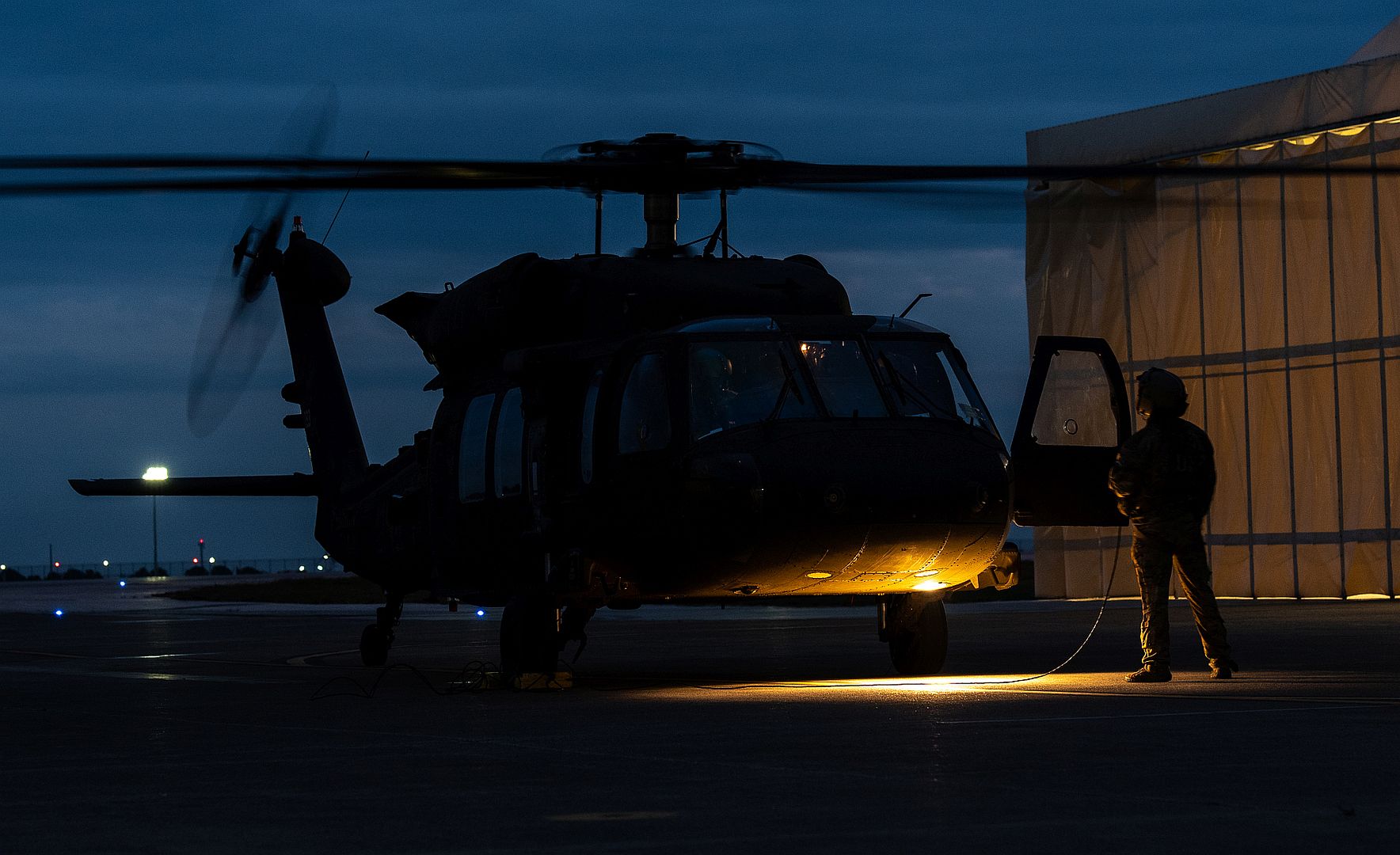
A German air force Eurofighter Typhoon aircraft prepares to receive fuel from a U.S. Air Force KC-135 Stratotanker aircraft assigned to the 100th Air Refueling Wing during exercise Baltic Trident over Estonia, March 16, 2021. Exercise Baltic Trident is a joint training exercise to ensure Airmen and aircrew are postured to deliver lethal combat power across the spectrum of military operations by utilizing elements of agile combat employment. (U.S. Air Force photo by Tech. Sgt. Anthony Hetlage)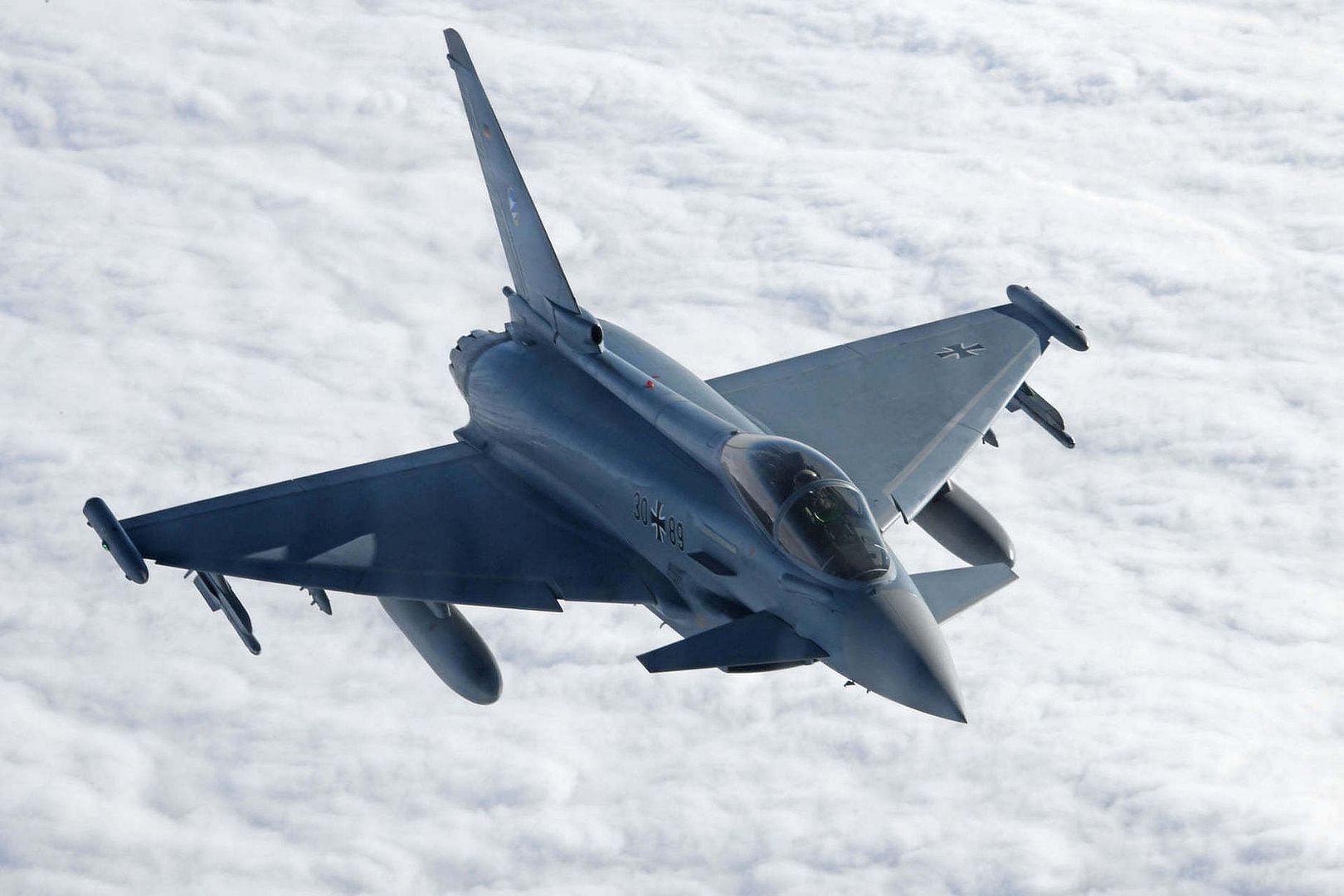
A U-2 Dragon Lady plane assigned to the 5th Reconnaissance Squadron taxis on the flightline at Osan Air Base, Republic of Korea, March 12, 2021. Pogo supports that rest underneath each wing are designed to keep the plane level during taxiing. (U.S. Air Force photo by Senior Airman Branden Rae)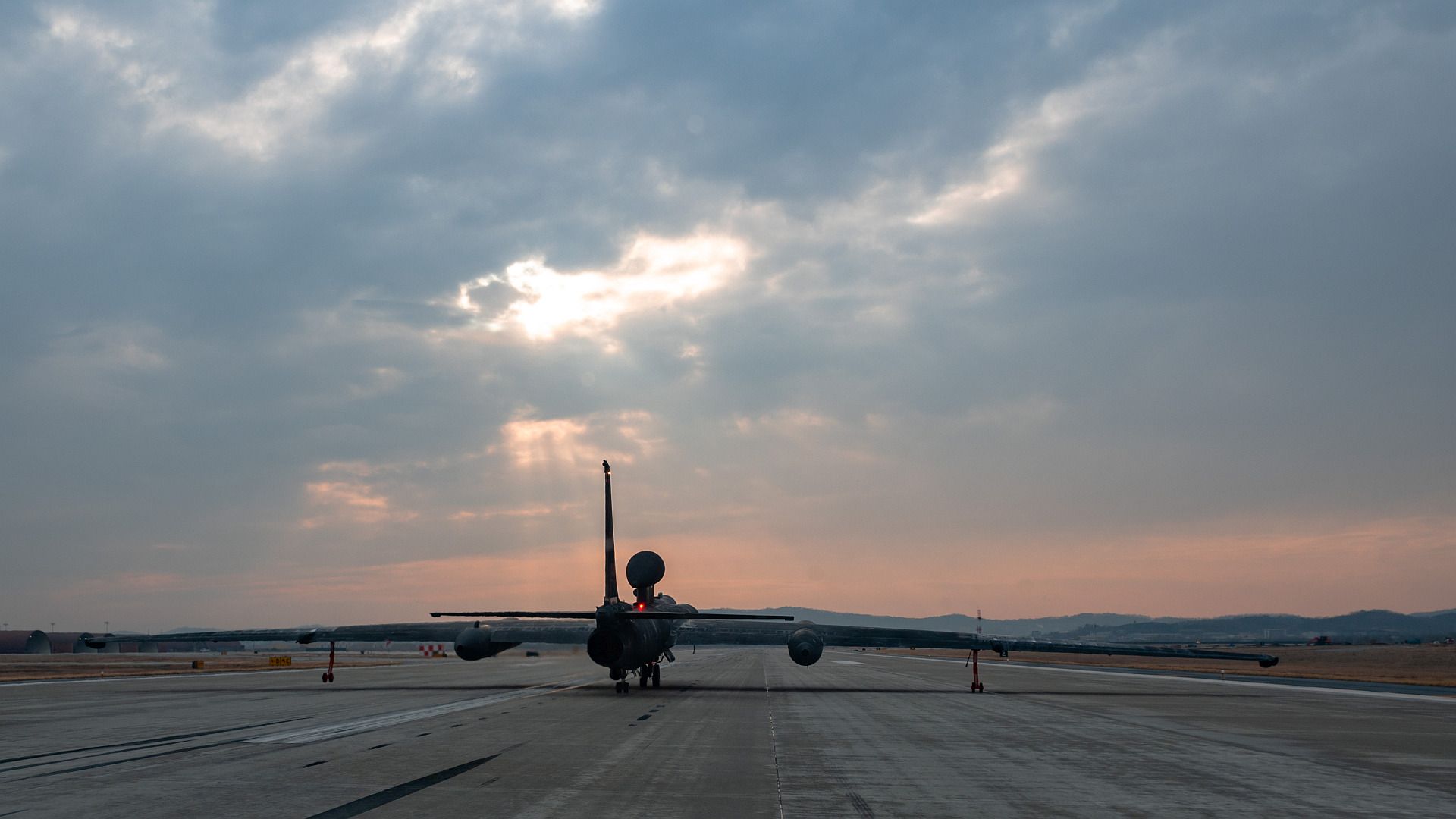
MEDITERRANEAN SEA (March 12, 2021) Hellenic Air Force Phantoms (HAF) and aircraft assigned to Carrier Air Wing (CVW) 3 fly over the Mediterranean Sea, March 12, 2021. The IKE Carrier Strike Group is on a scheduled deployment in the U.S. Sixth Fleet area of operations in support of U.S. national interests and security in Europe and Africa. (U.S. Navy courtesy photos)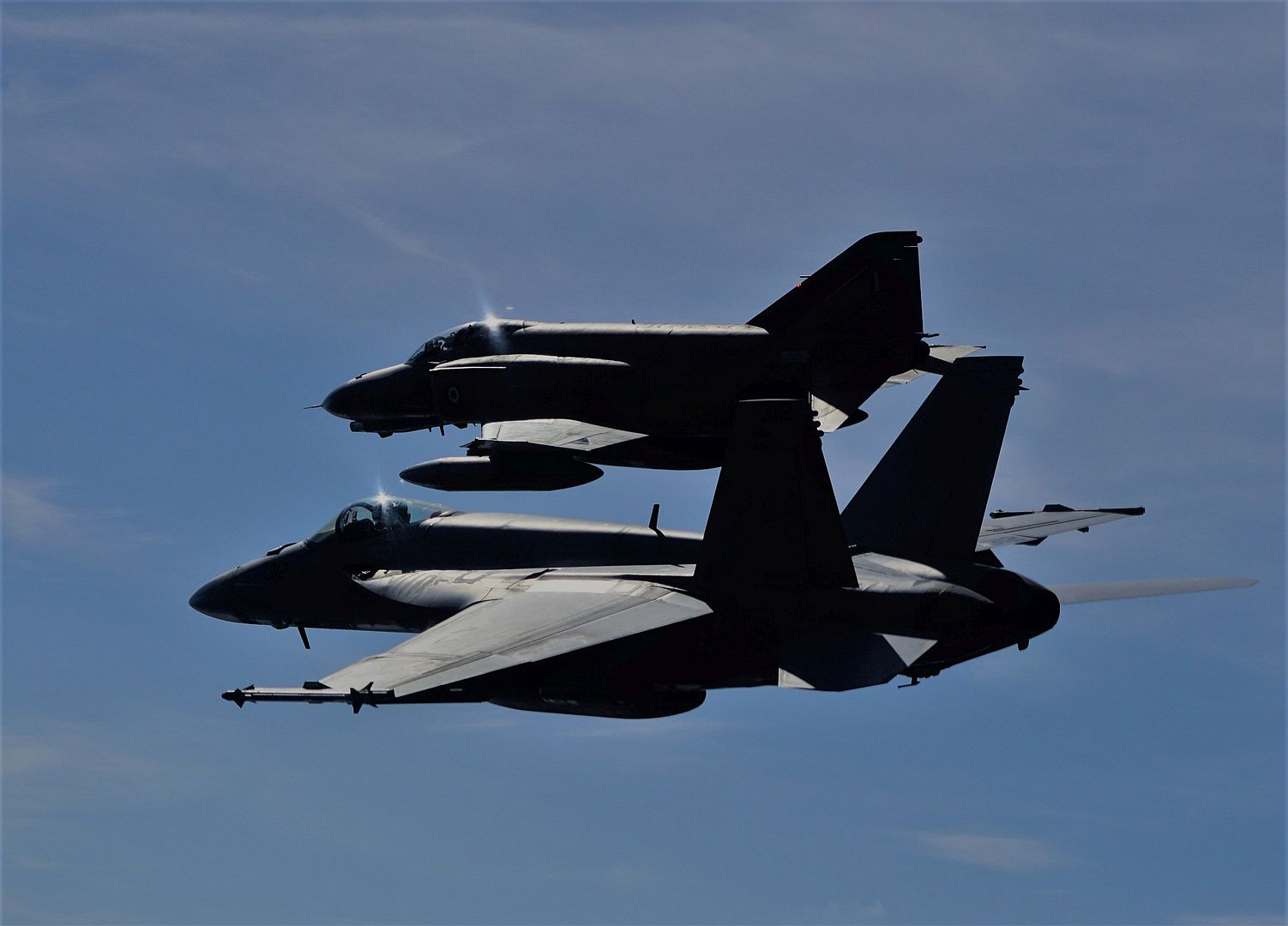

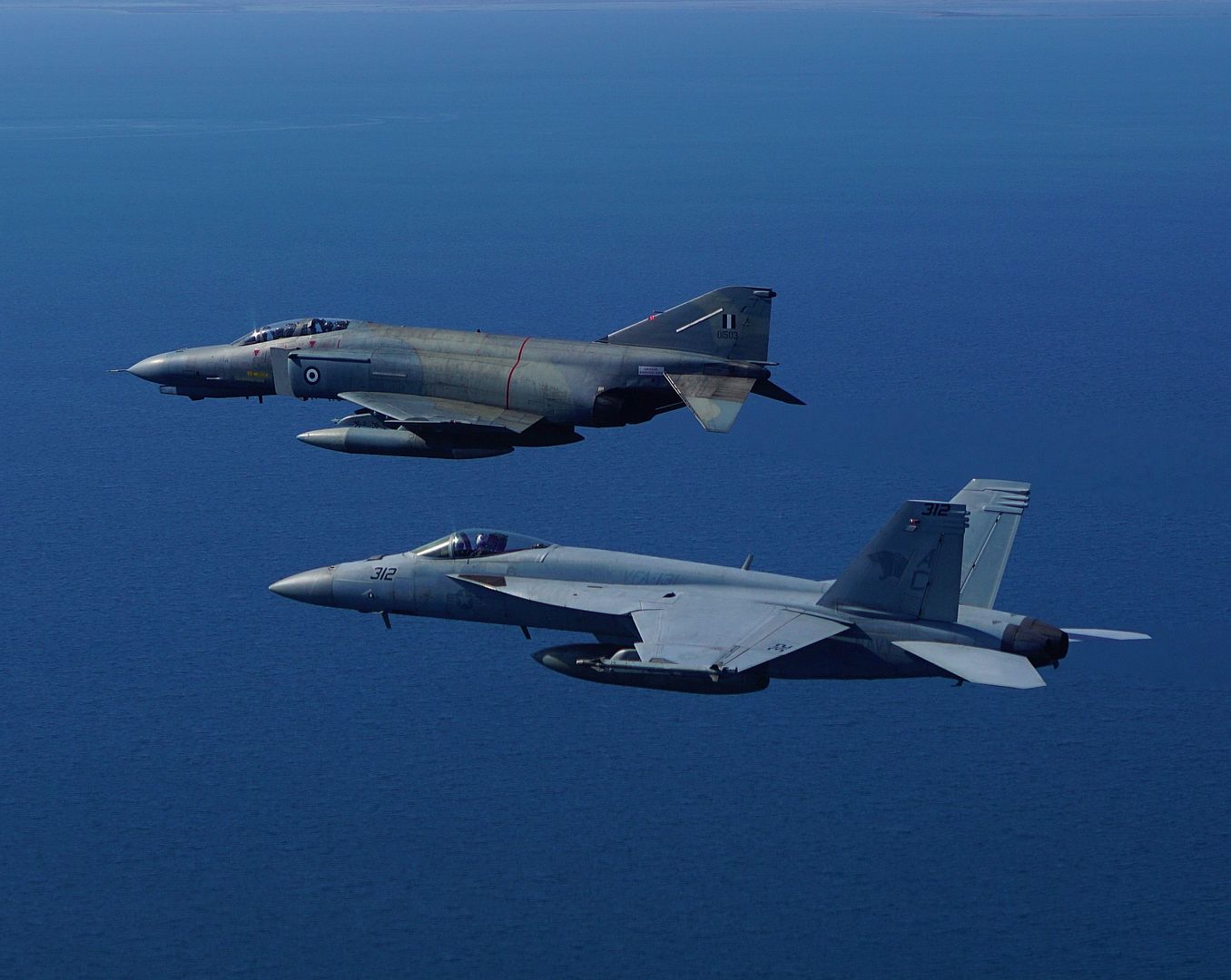
MEDITERRANEAN SEA (March 12, 2021) The Hellenic Air Force F-16's (HAF) and aircraft assigned to Carrier Air Wing (CVW) 3 fly over the Mediterranean Sea, March 12, 2021. The IKE Carrier Strike Group is on a scheduled deployment in the U.S. Sixth Fleet area of operations in support of U.S. national interests and security in Europe and Africa. (U.S. Navy photos by Lt. j.g. Kelsey Lynch)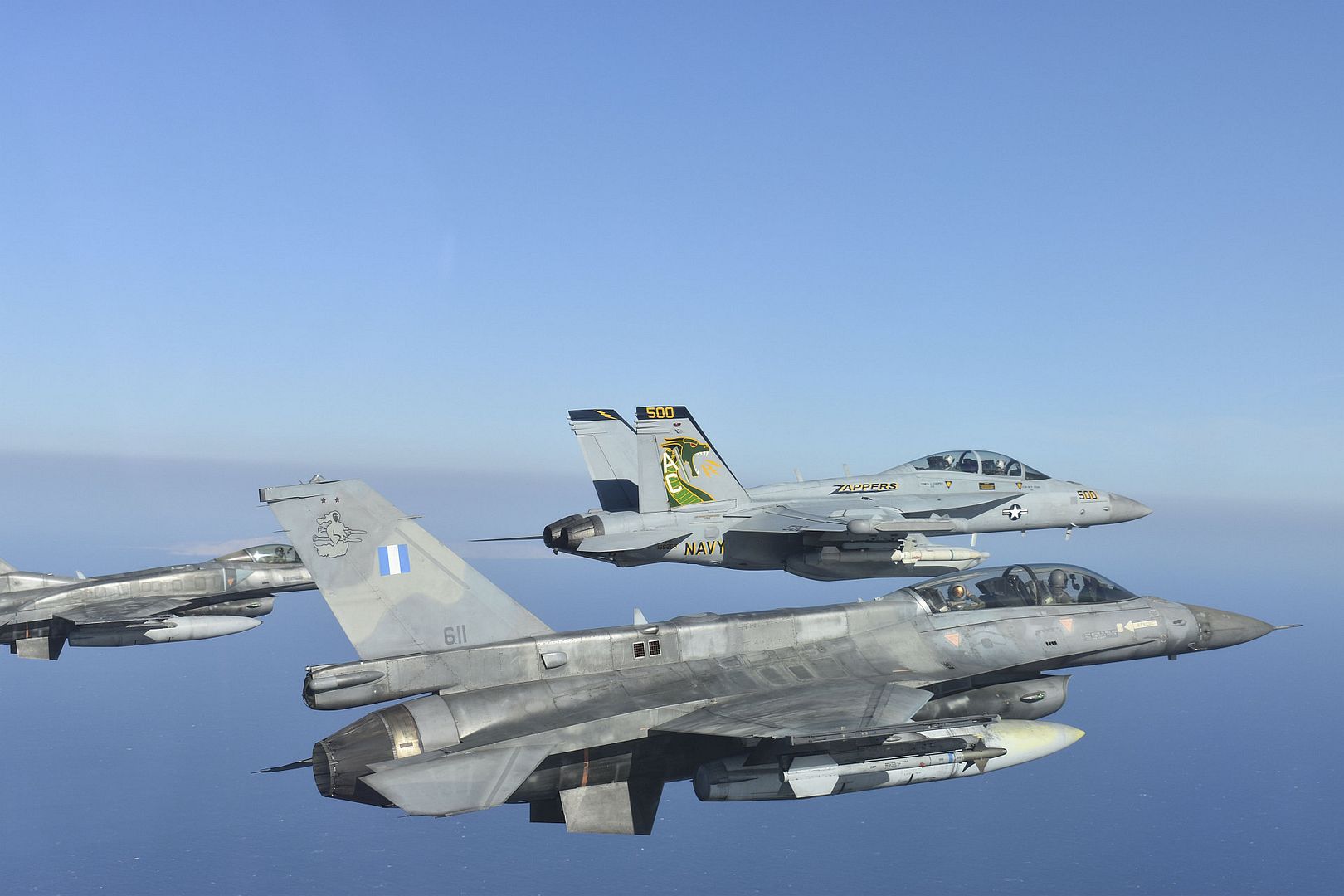
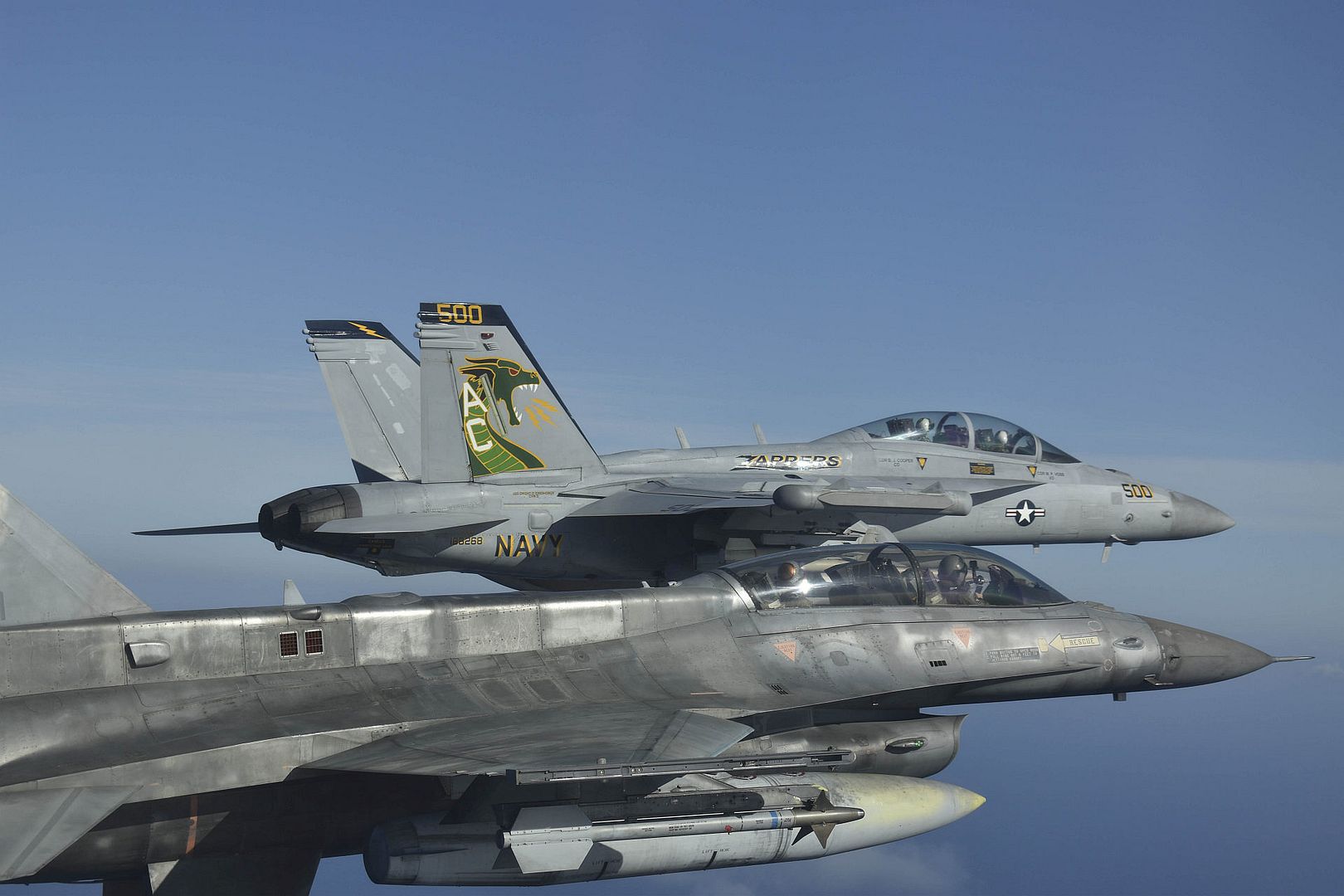
MEDITERRANEAN SEA (March 15, 2021) An F/A-18E Super Hornet, attached to the "Wildcats" of Strike Fighter Squadron (VFA) 131, flies over the Nimitz-class aircraft carrier USS Dwight D. Eisenhower (CVN 69), in the Mediterranean Sea, March 15, 2021. The IKE Carrier Strike Group is on a scheduled deployment in the U.S. Sixth Fleet area of operations in support of U.S. national interests and security in Europe and Africa. (U.S. Navy photo by Mass Communication Specialist 3rd Class Cameron Pinske)
-
 Main AdminLAJES FIELD, Portugal (AFNS) --
Main AdminLAJES FIELD, Portugal (AFNS) --
U.S. Air Force B-2 Spirit aircraft from the 509th Bomb Wing, Whiteman Air Force Base, Missouri, arrived at Lajes Field in support of upcoming Bomber Task Force missions March 16.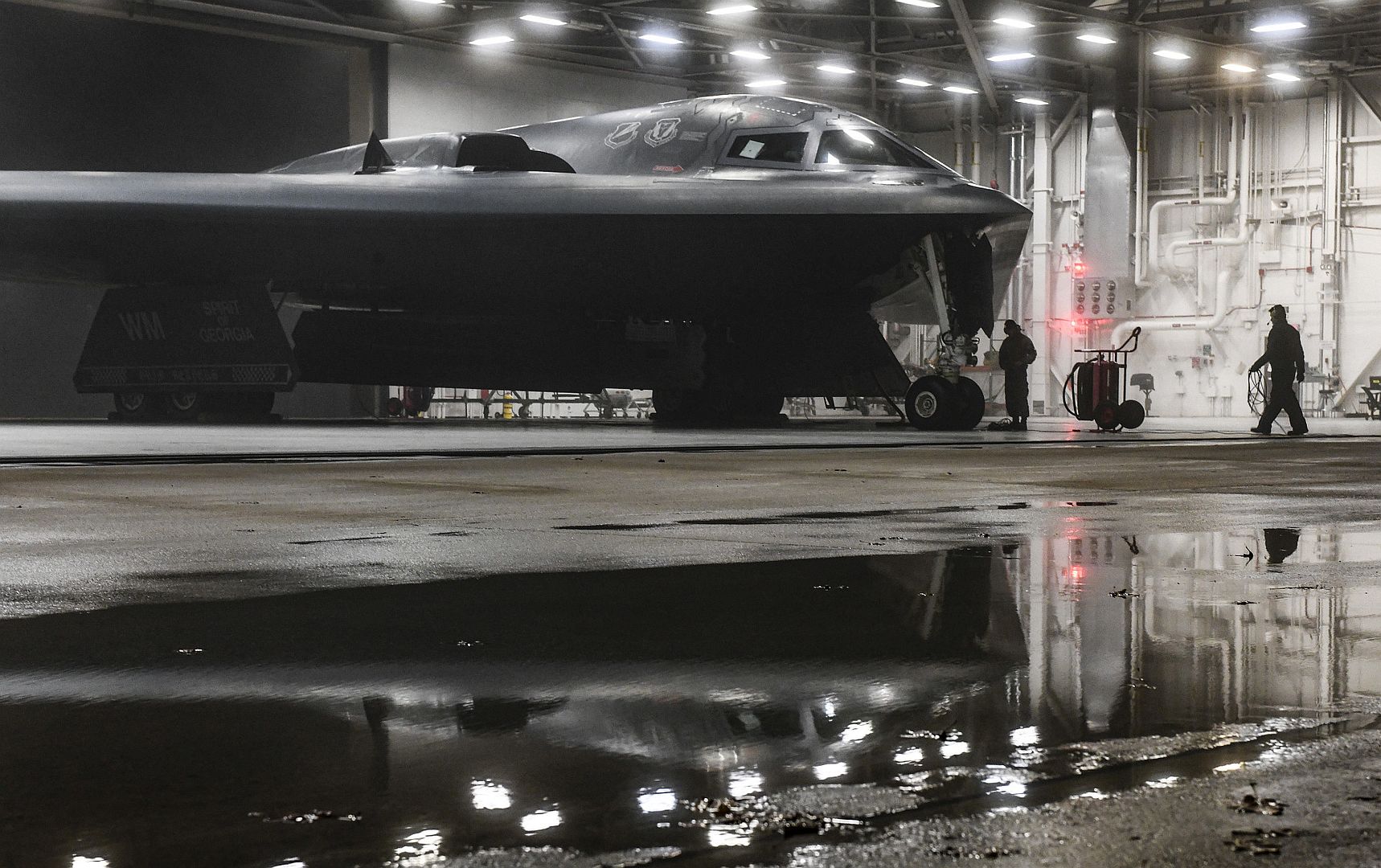
Airmen from the 509th BW will conduct a hot-pit refuel of the B-2s and a crew swap with engines running before the aircraft return to the sky to continue the mission. The B-2s will rely on the strategically-located Lajes Field to perform mission-essential tasks during several upcoming BTF sorties.
“These missions will add even more depth to this already historic Bomber Task Force iteration,” said Gen. Jeff Harrigian, U.S. Air Forces in Europe-Air Forces Africa commander. “B-2s joining the B-1s in theater offers unique opportunities to advance our readiness as we continue to work with and learn from our allies.”
Bomber Task Force missions demonstrate U.S. commitment to the collective defense of the NATO alliance and are a visible demonstration of the U.S. capability of extended deterrence.
(U.S. Air Force photo by Staff Sgt. Sadie Colbert and by Tech. Sgt. Heather Salazar)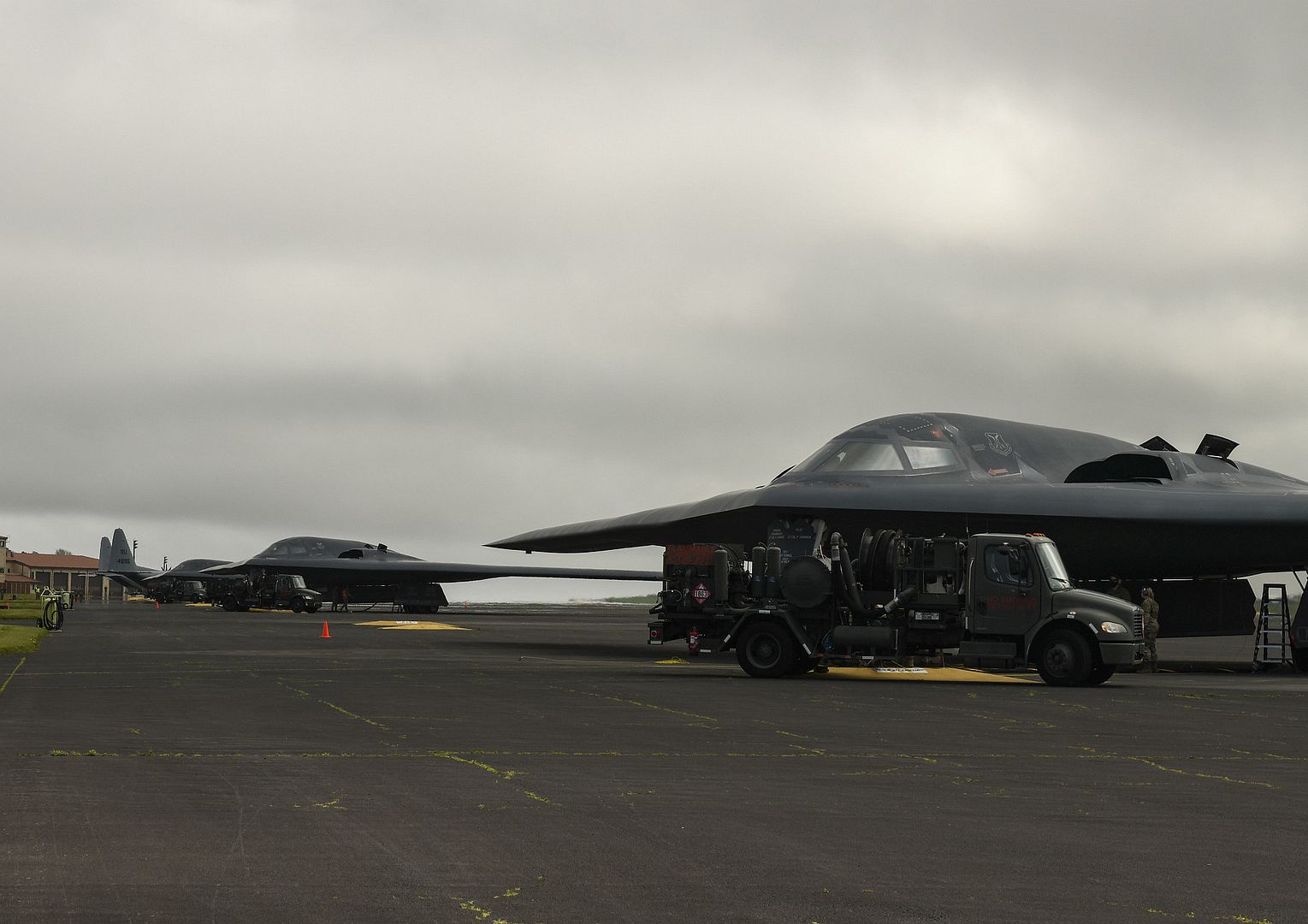
MISAWA, Japan (March 17, 2021) – An EA-18G Growler, assigned to the "Black Ravens" of Electronic Attack Squadron (VAQ) 135, lands at Misawa Air Base. VAQ-135 provides fully operational EA-18G aircraft to perform unrestricted Electronic Attack as needed throughout the world. (U.S. Navy photo by Mass Communication Specialist 2nd Class Jan David De Luna Mercado).jpg?width=1920&height=1080&fit=bounds)
A T-45C Goshawk, attached to Training Air Wing 2 lands on USS Gerald R. Ford's (CVN 78) flight deck, March 15, 2021. Ford is underway in the Atlantic Ocean conducting carrier qualifications. (U.S. Navy photo by Chief Mass Communication Specialist RJ Stratchko)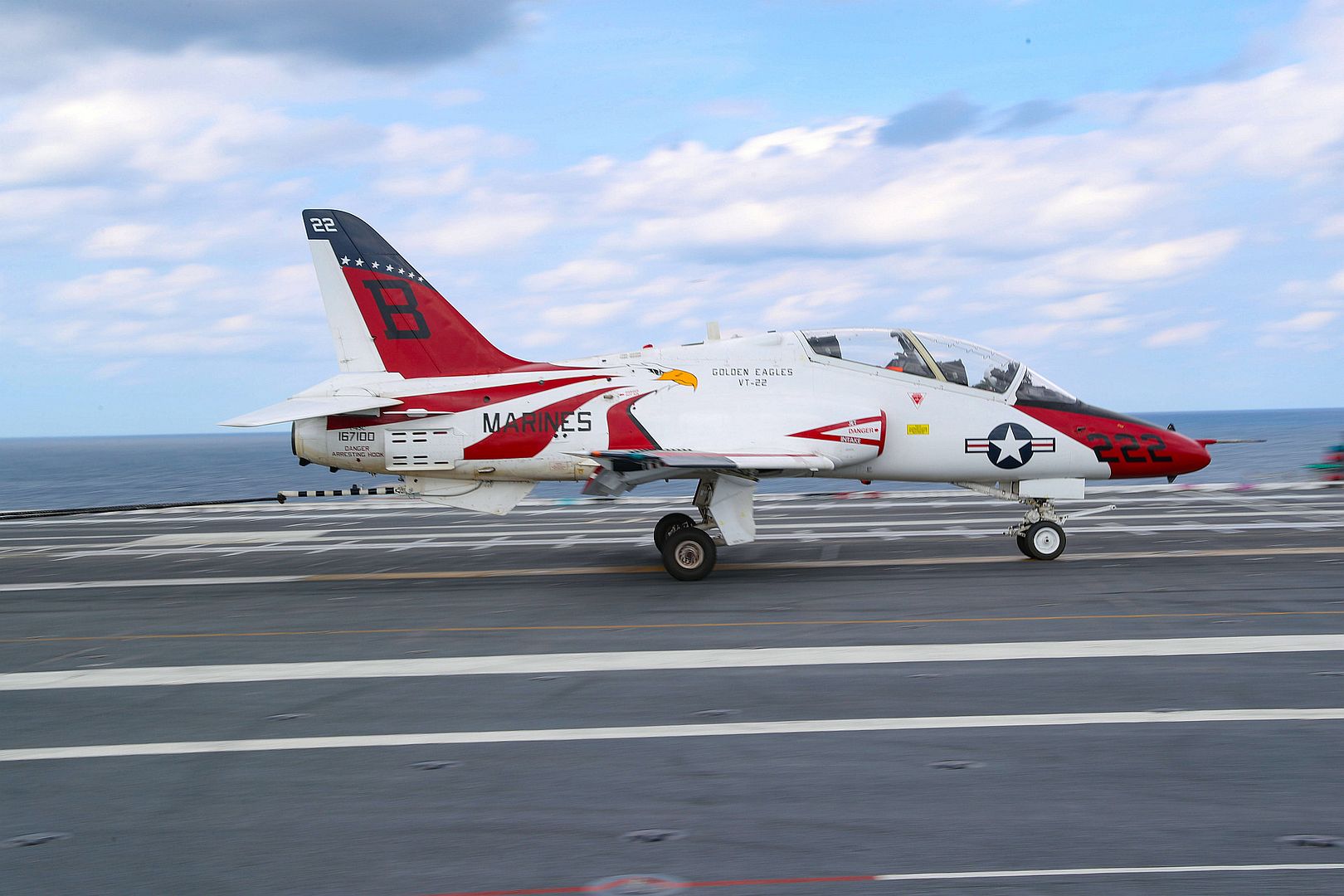
A German air force EF-2000 Typhoon aircraft receives fuel from a U.S. Air Force KC-135 Stratotanker aircraft assigned to the 100th Air Refueling Wing over Estonia during exercise Baltic Trident, March 16, 2021. Training with joint and combined allies and partners during agile combat employment events increases lethality and enhances interoperability. (U.S. Air Force photo by Senior Airman Joseph Barron)
The U.S. Thunderbirds fly in the background of F-15SG Strike Eagles assigned to the 428th Fighter Squadron at Nellis Air Force Base, Nevada, March 17, 2021. The 428th FS participated in Red Flag 21-2, an exercise which is designed to provide aircrew experience in a realistic combat training scenario. (U.S. Air Force photo by Senior Airman JaNae Capuno)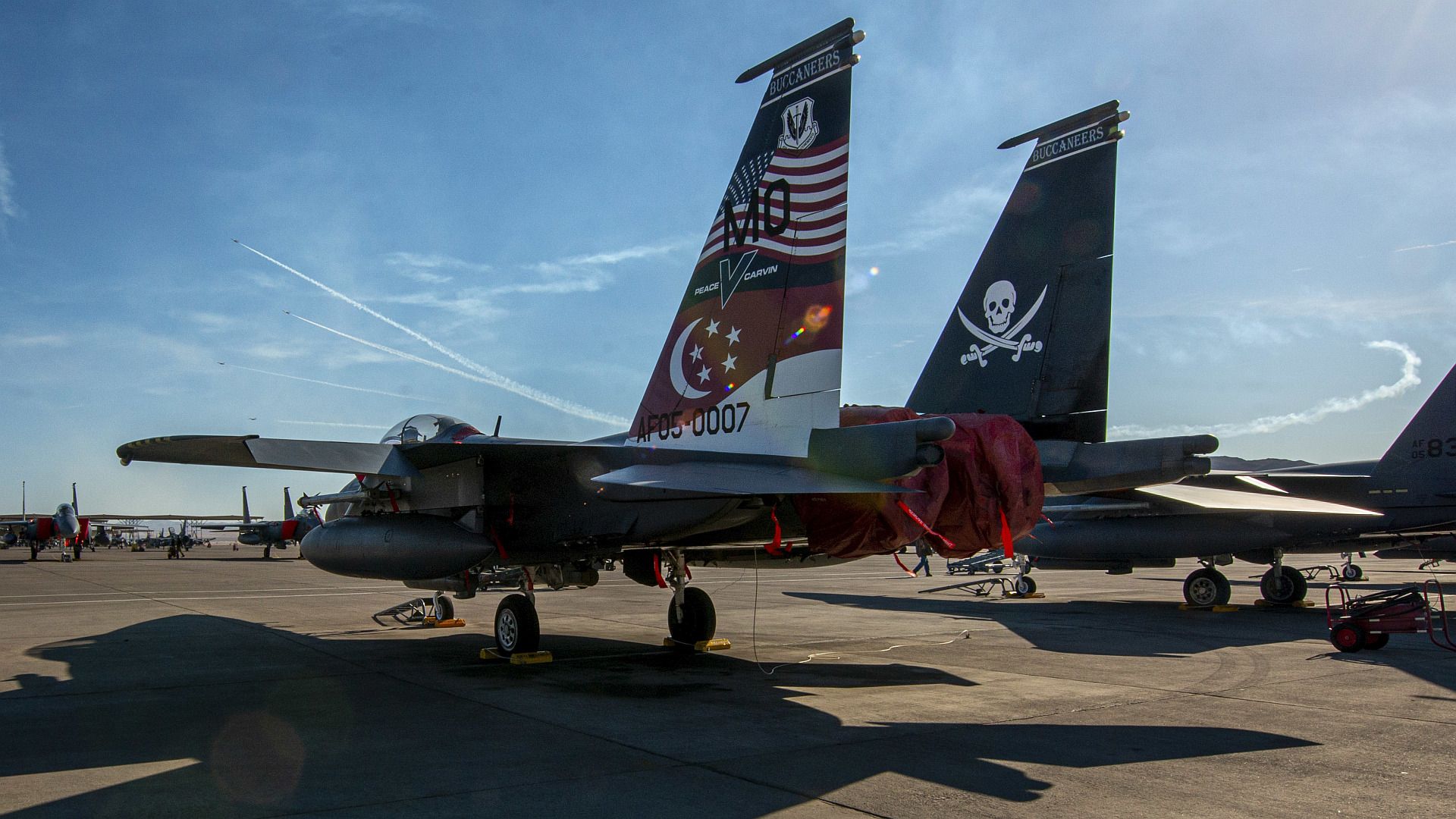
A NATO E-3A Airborne Warning and Control System (AWACS) assigned to the NATO Early Warning and Control Force (NAEW&C Force) at Geilenkirchen NATO Air Base, Germany, takes-off during Red Flag 21-2 at Nellis Air Force Base, Nevada, March 12, 2021. The E-3A AWACS aircraft is an aircraft with integrated command and control battle management, surveillance, target detection and tracking platform. (U.S. Air Force photo by William R. Lewis)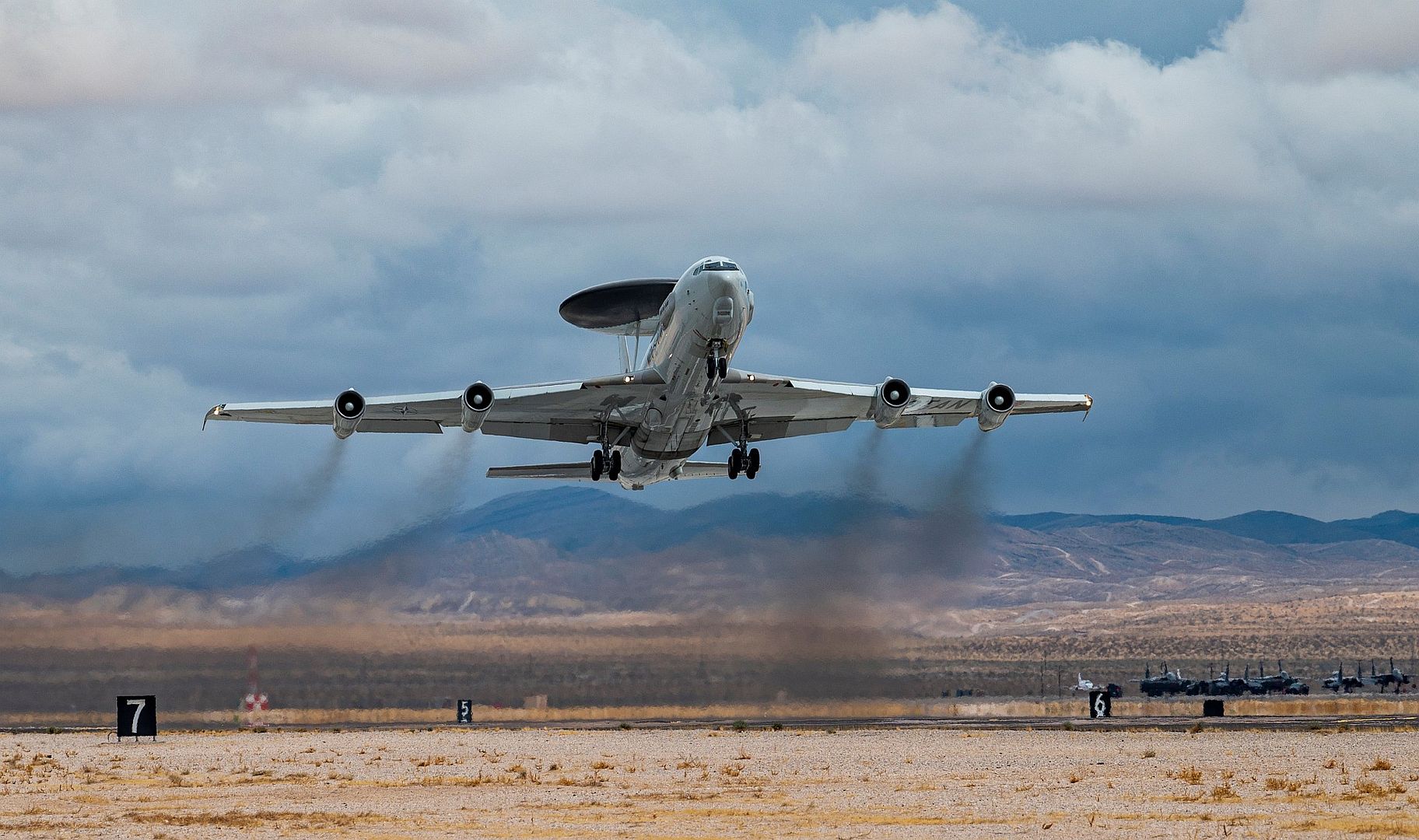
A B-1B Lancer assigned to the 9th Expeditionary Bomb Squadron sits on the flightline at Ørland Air Force Station, Norway, March 14, 2021. Conducting Bomber Task Force Europe deployments and operations provides aircrew with enhanced readiness and training necessary to respond to any contingency or challenge across the globe. (U.S. Air Force photo by Airman 1st Class Colin Hollowell)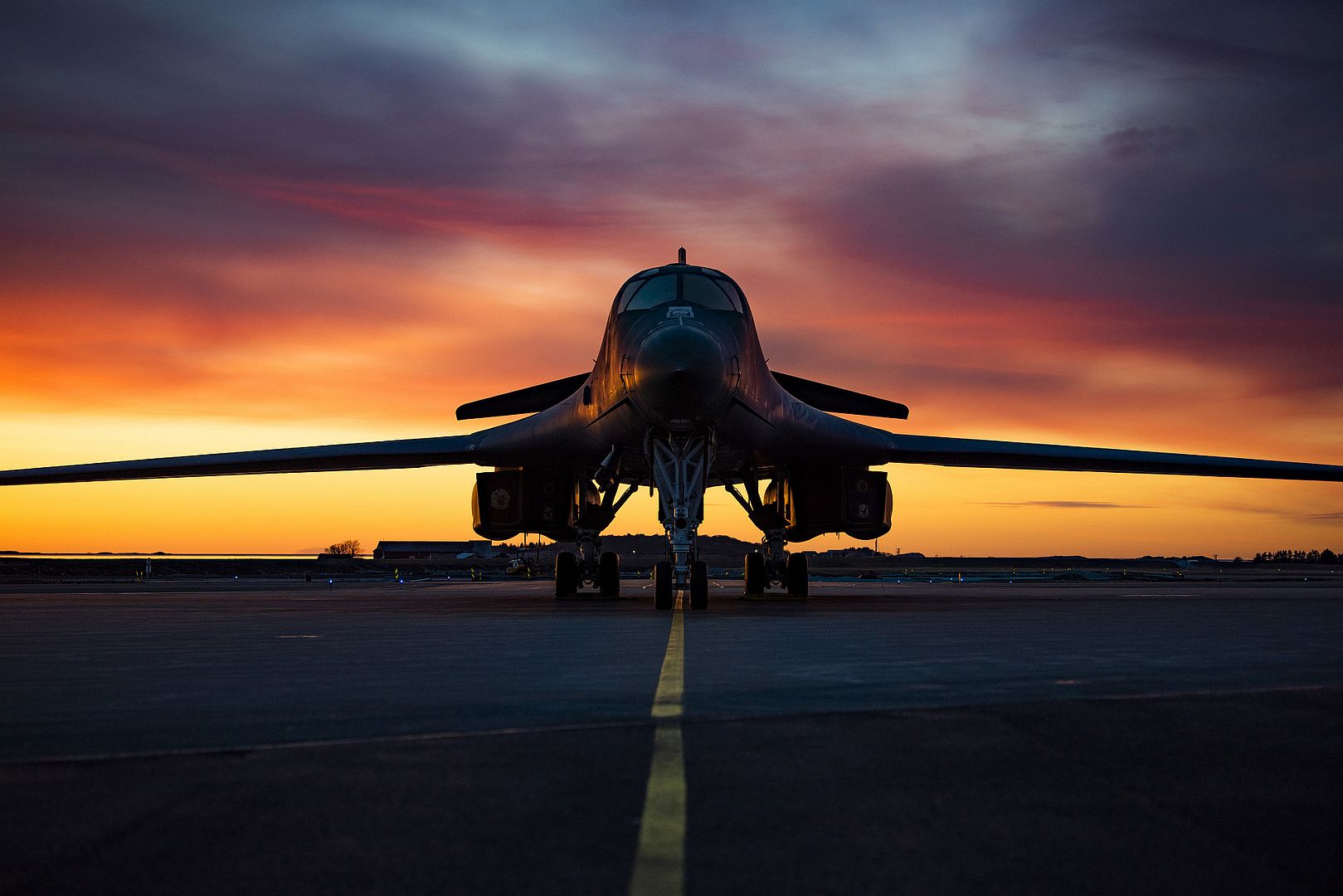
A B-1B Lancer assigned to the 9th Expeditionary Bomb Squadron takes off from Ørland Air Force Station, Norway, March 14, 2021. The 9th EBS operated out of Ørland AFS, Norway where they conducted a series of Bomber Task Force Europe training missions. BTF Operations and engagements with U.S. allies and partners demonstrates and strengthens the shared commitment to global security and stability. (U.S. Air Force photo by Airman 1st Class Colin Hollowell)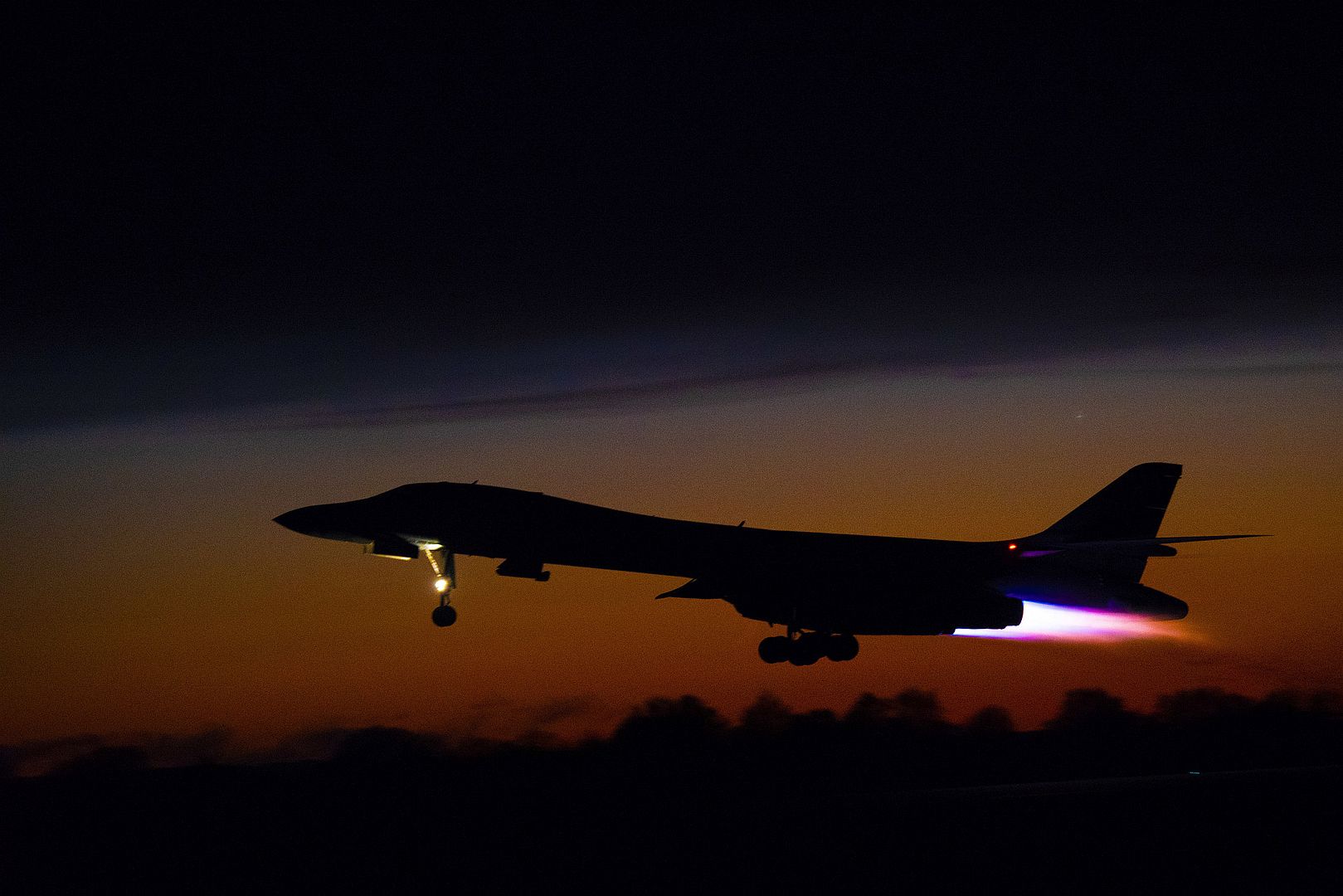
17.03.2021
In the Rostov region, the crews of the operational-tactical aviation of the 4th Army of the Air Force and Air Defenсe of the Southern Military District performed flights with air-to-air refuelling.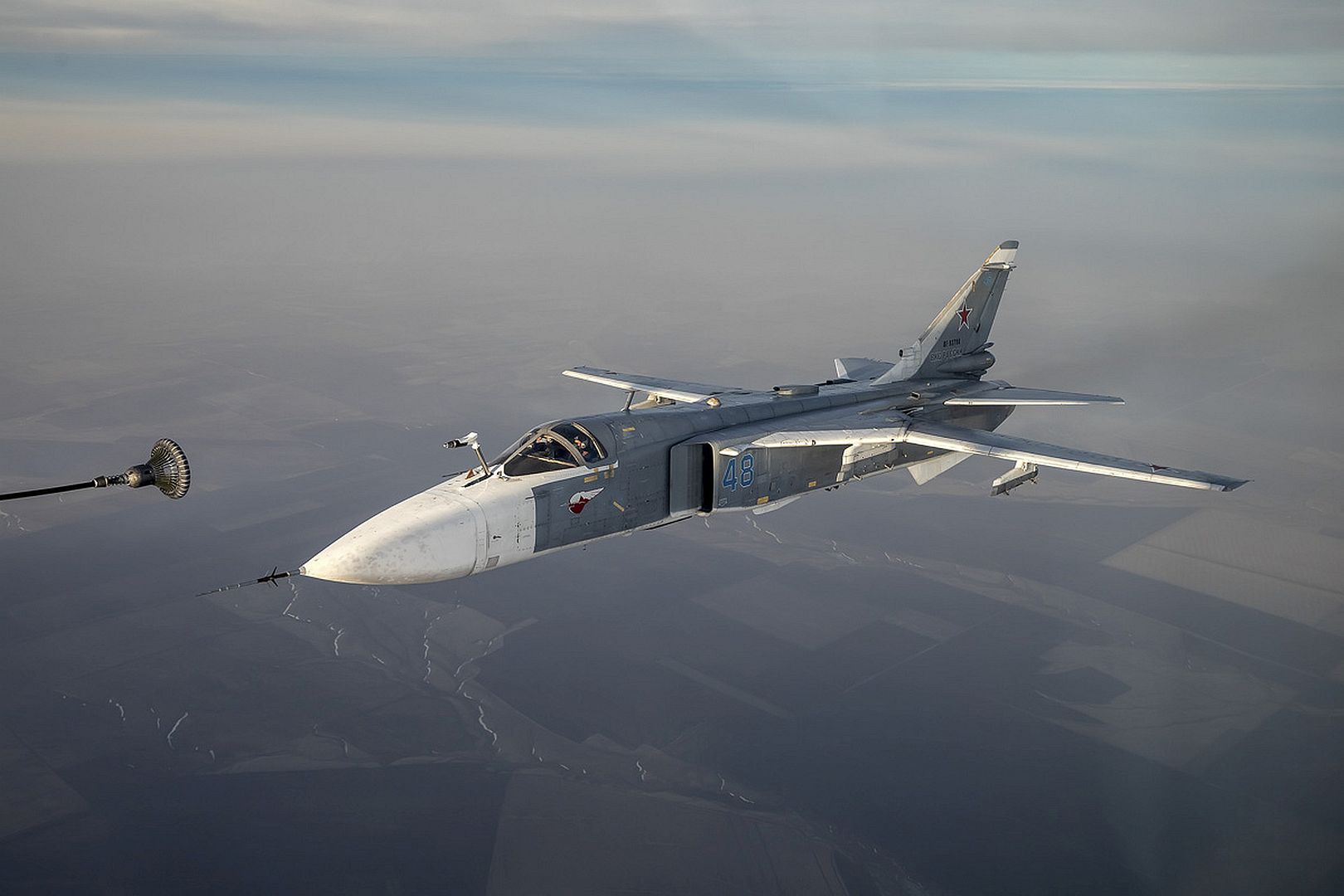
Pilots of Su-35 and Su-30SM fighters, Su-34 and Su-24M bombers, both singly and as part of a pair, practiced complex flight training. The flights took place by day and at night.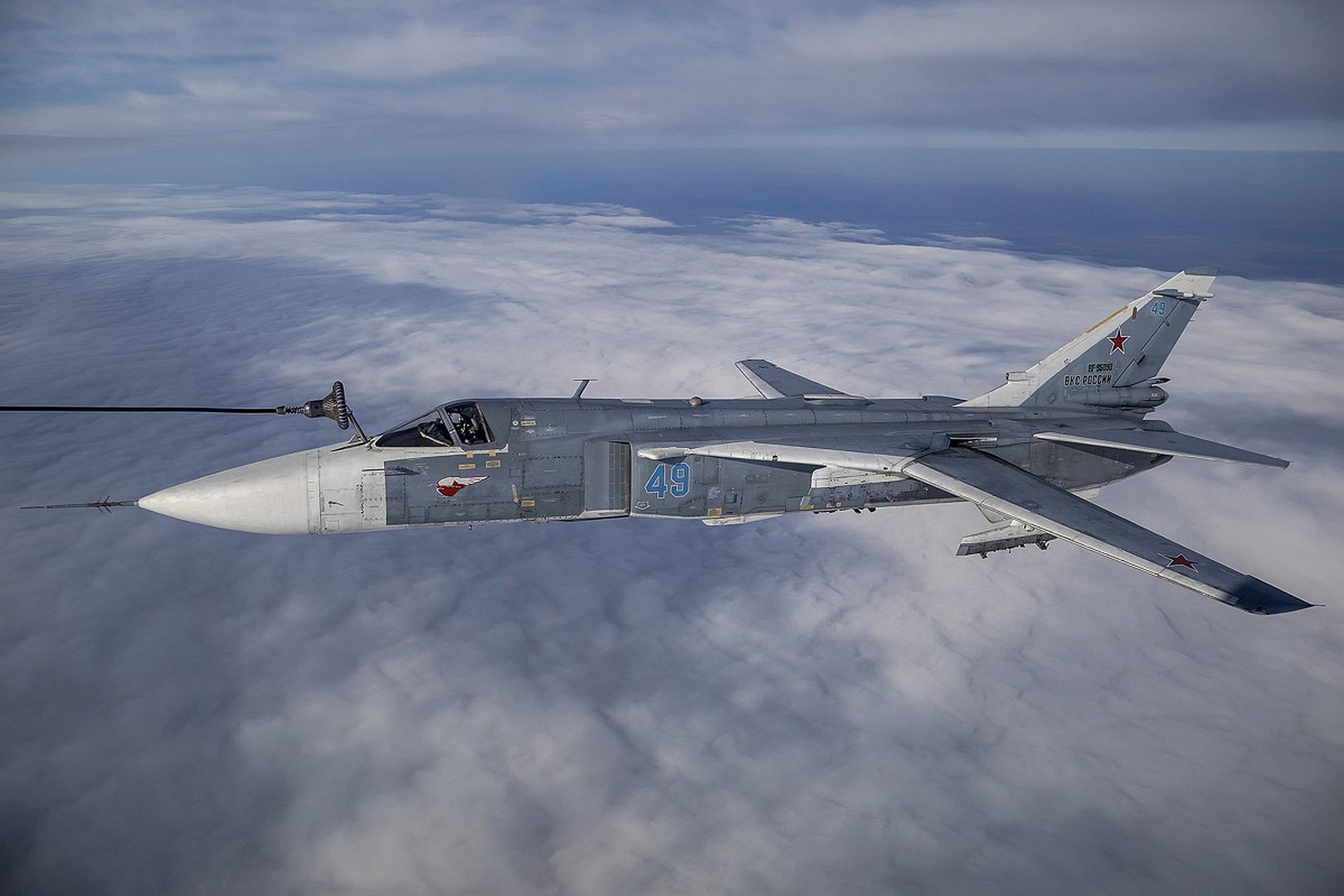
Air-to-air refuelling will be carried out at altitudes of 5-6 thousand meters at a speed of about 600 km/h at a distance of less than 20 meters between the attack aircraft and the Il-78 air tanker.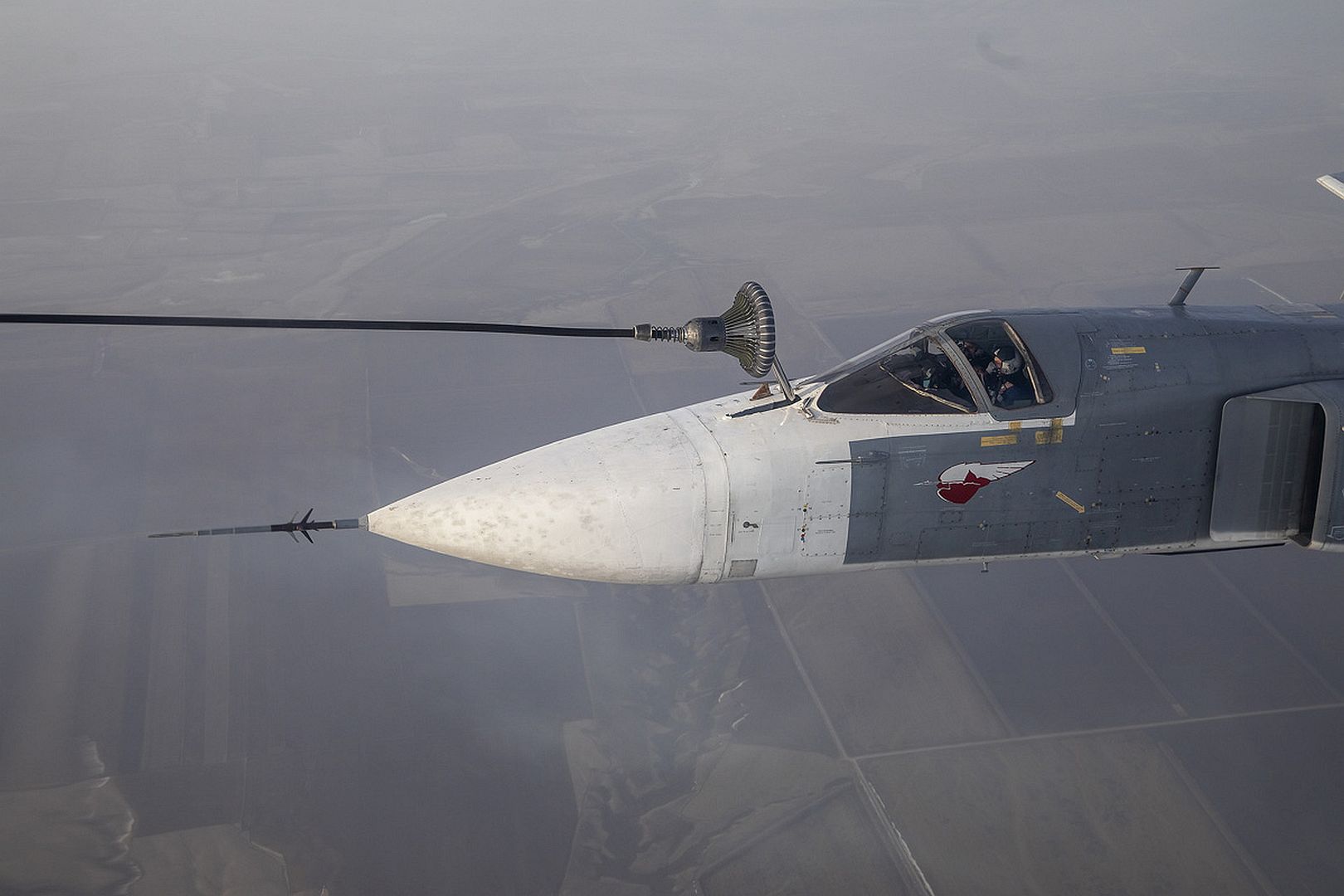
At night, refueling will be carried out using additional lighting installed on both the refueling aircraft and the aircraft being refueled.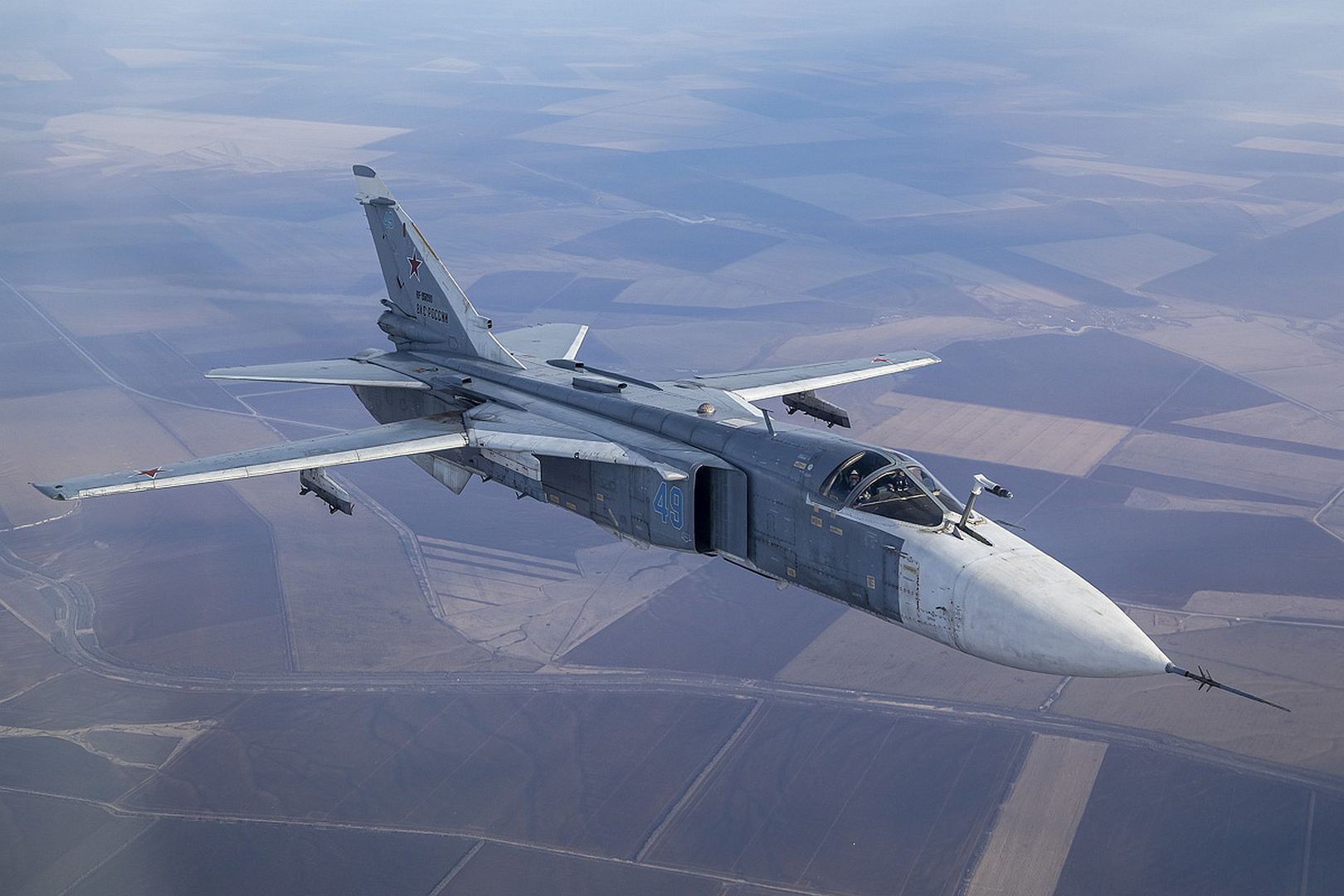
Air refueling is a necessary element of pilot training that allows you to significantly increase the combat range of aircraft and perform tasks for their intended purpose at a far distance from their bases.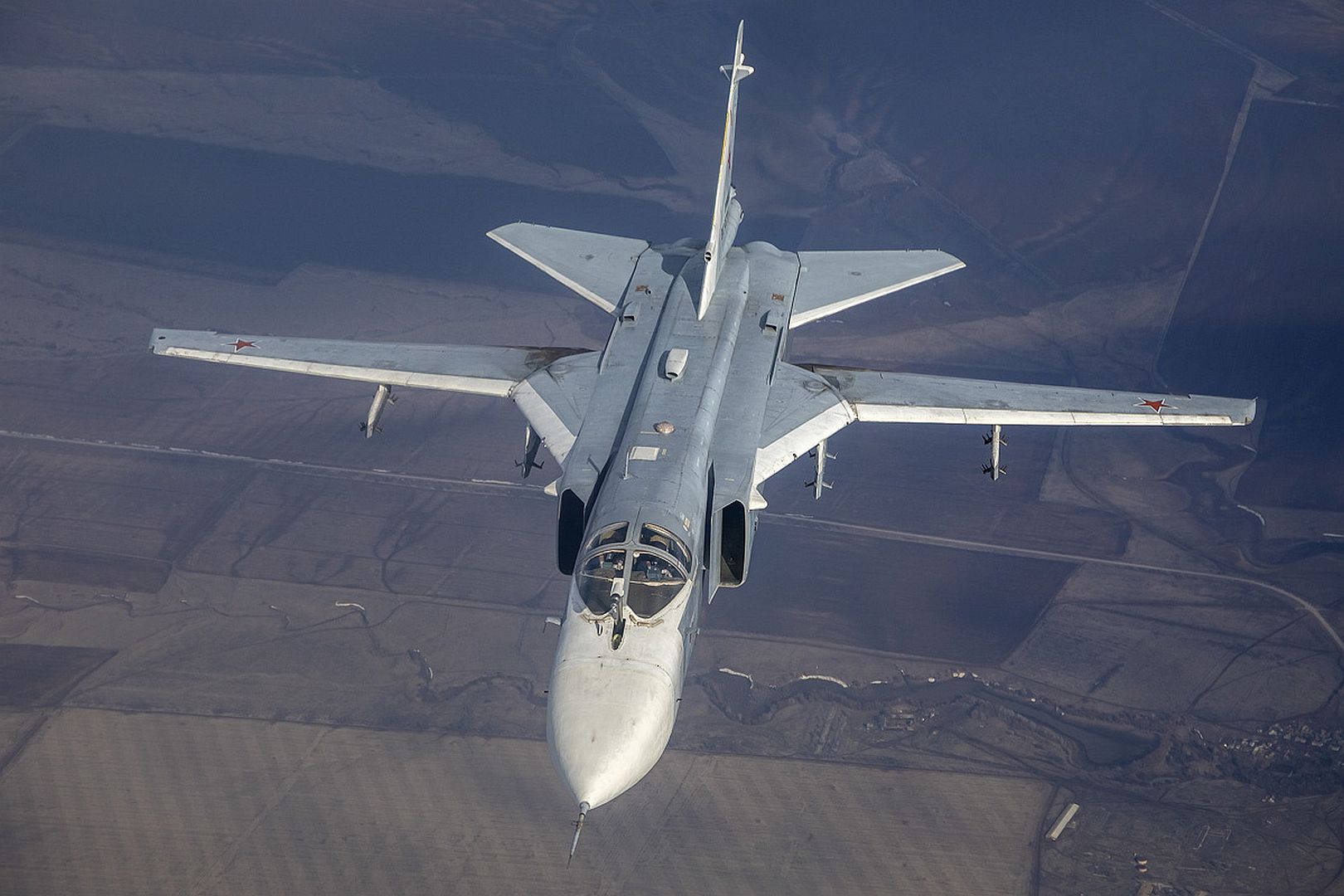
(Photos courtesy of the Ministry of Defence of the Russian Federation)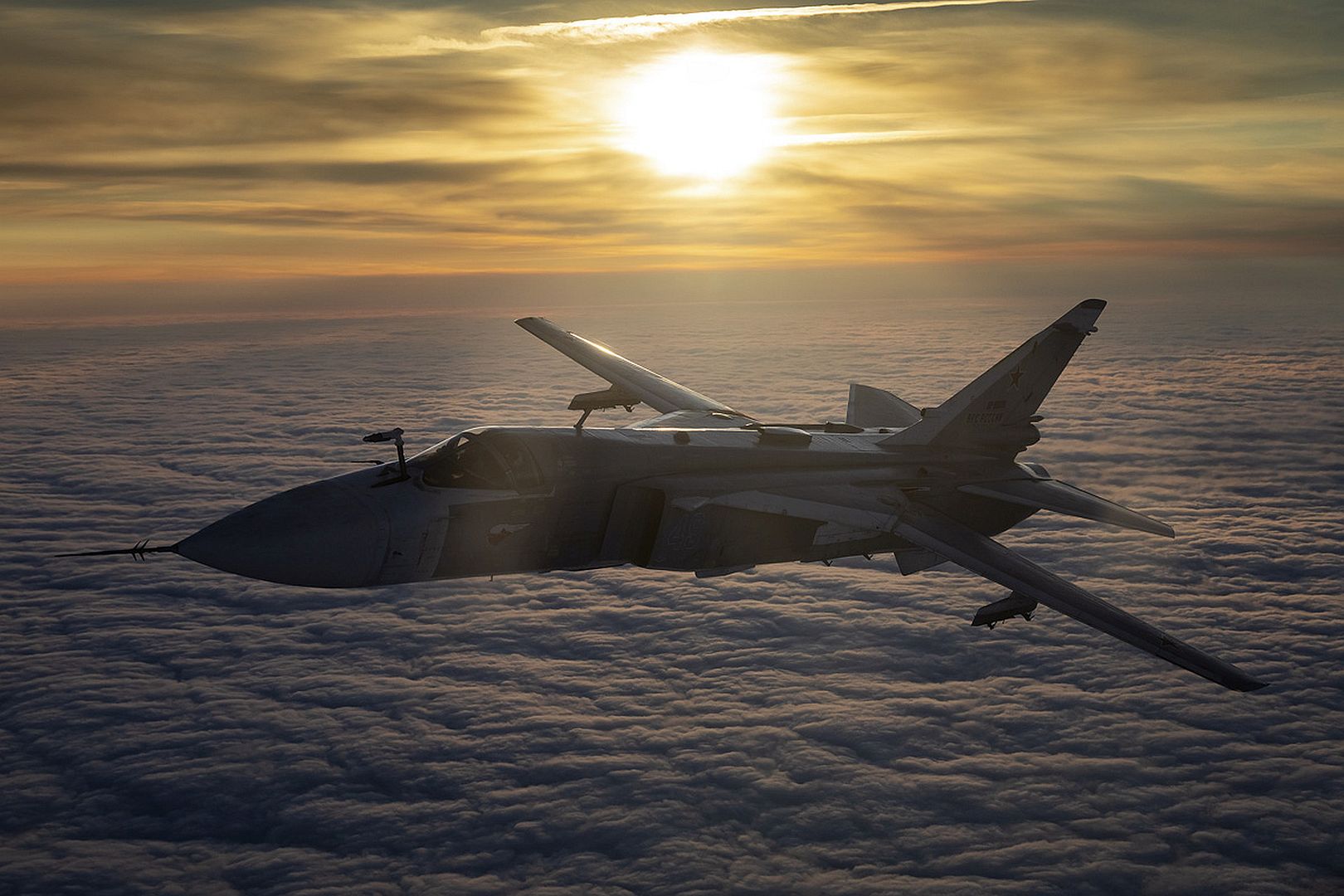
From March 20 to 26, 2021, the North American Aerospace Defense Command (NORAD) will be conducting an arctic air defence exercise. Exercise AMALGAM DART will see a variety of military aircraft from the Royal Canadian Air Force and United States Air Force operating out of northern locations including Whitehorse, Y.T., Yellowknife, N.W.T, Edmonton, Alta., Goose Bay, N.L, Iqaluit, Nun, and Thule, Greenland.
While exercise flights will be conducted over sparsely populated Arctic areas and at high altitudes, where the public is not likely to hear or see them, there will be increased flight activity at Whitehorse, Yellowknife, Edmonton, 5 Wing, Goose Bay, N.L., and Iqaluit, Nunavut. This exercise is in no way related to the Government of Canada or United States’ response to COVID-19.
NORAD routinely conducts exercises using a variety of scenarios including airspace restriction violations, hijackings, and responses to unknown aircraft. NORAD carefully plans and closely controls all exercises. This air defence exercise provides us the opportunity to hone our skills as Canadian and U.S. forces operate together with our allies and partners in the Arctic.
During the exercise, a layered risk mitigation procedure will be employed which will limit contact with the local population to the greatest extent possible. Based on best practices recommended by Canadian health authorities and the Canadian Forces Surgeon General, participating military personnel will follow established mitigation protocols, (such as mask wearing, frequent cleaning of surfaces and other PPE use as appropriate).
Participating U.S. military personnel will require two negative COVID-19 test, separated by a minimum of 5 days, with the last test prior to arriving in Canada, and all exercise participants adhering to local, Territorial/Provincial, Federal and Canadian Armed Forces/Department of National Defence guidelines and regulations regarding public health measures for the duration of the AMALGAM DART.
For more than 60 years, NORAD has identified and intercepted potential air threats to North America through the execution of the command’s aerospace warning and aerospace control missions. NORAD also keeps watch over Canadian and U.S. internal waterways and maritime approaches under its maritime warning mission.
-
 Main AdminA CH-53K King Stallion prepares to land at Marines Corps Outlying Field (MCOLF) Camp Davis, North Carolina, March 17, 2021. Commandant of the Marine Corps Gen. David H. Berger visited Marine Operational Test and Evaluation Squadron (VMX) 1 to talk with the Marines who are putting the CH-53K through its testing and to see a demonstration of the heavy lift capability the helicopter will provide to Marines and joint forces. (U.S. Marine Corps photos by Lance Cpl. Yuritzy Gomez)
Main AdminA CH-53K King Stallion prepares to land at Marines Corps Outlying Field (MCOLF) Camp Davis, North Carolina, March 17, 2021. Commandant of the Marine Corps Gen. David H. Berger visited Marine Operational Test and Evaluation Squadron (VMX) 1 to talk with the Marines who are putting the CH-53K through its testing and to see a demonstration of the heavy lift capability the helicopter will provide to Marines and joint forces. (U.S. Marine Corps photos by Lance Cpl. Yuritzy Gomez)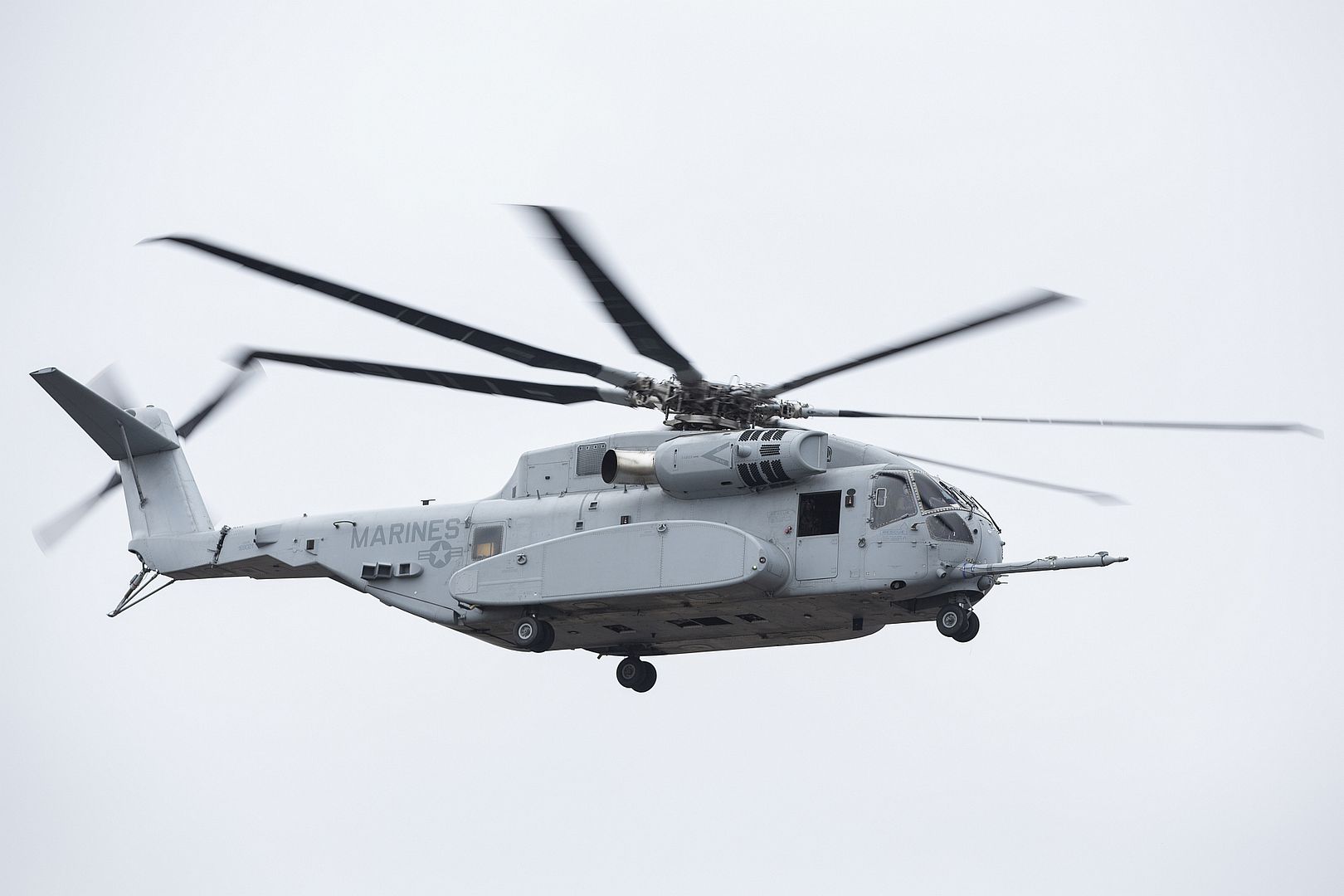

Capt. Brittany Dippel, 36th Fighter Squadron F-16 Fighting Falcon pilot, taxis on the runway at Osan Air Base, Republic of Korea, March 16, 2021. The 36th FS is a combat ready squadron with the capability to conduct air interdiction, close air support, and counter-air missions. (U.S. Air Force photo by Airman 1st Class Nicole Molignano)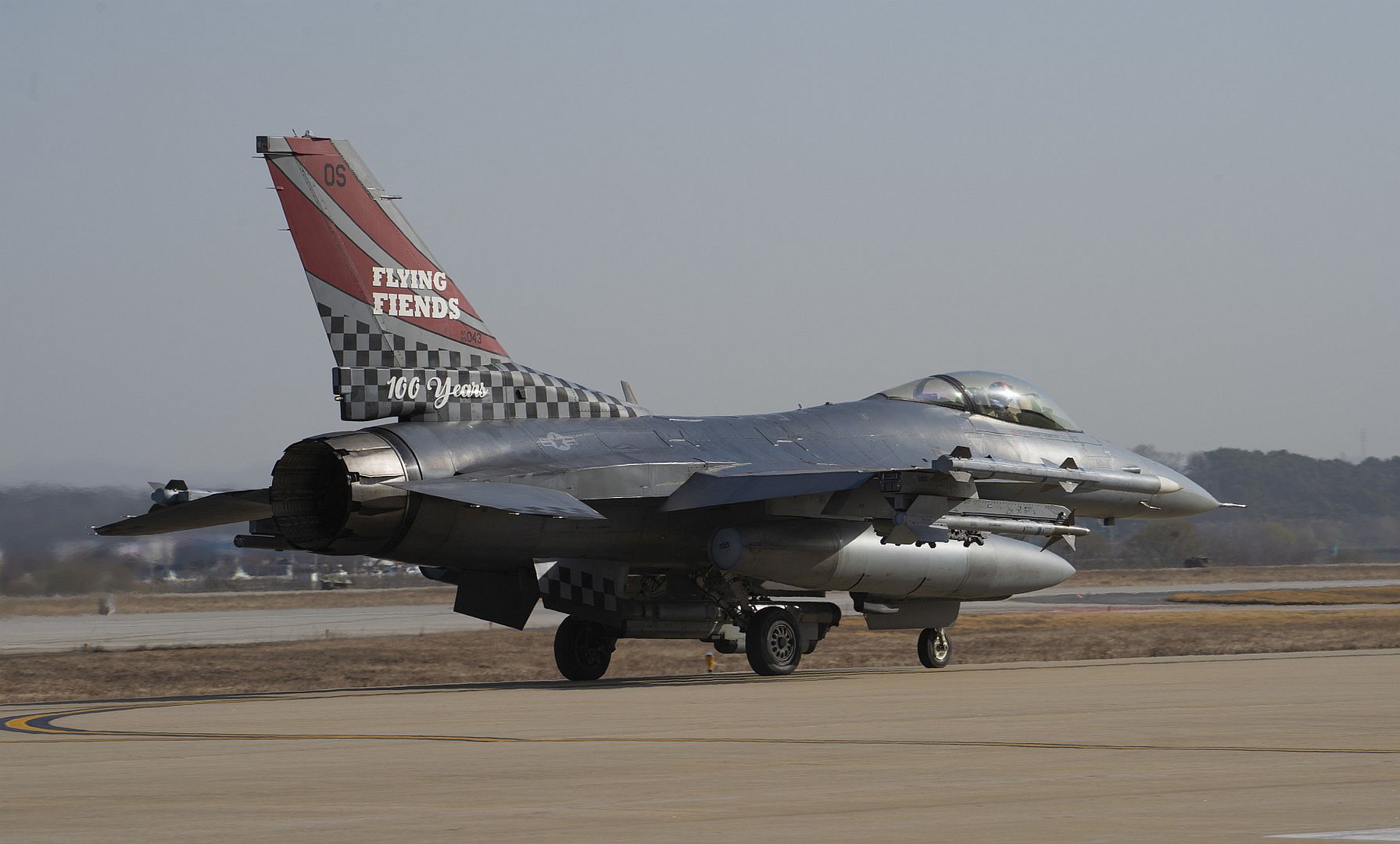
Capt. Brittany Dippel, 36th Fighter Squadron F-16 Fighting Falcon pilot, takes off at Osan Air Base, Republic of Korea, March 16, 2021. The 36th FS conducts close air support, and counter-air missions in both day and night conditions. (U.S. Air Force photo by Airman 1st Class Nicole Molignano)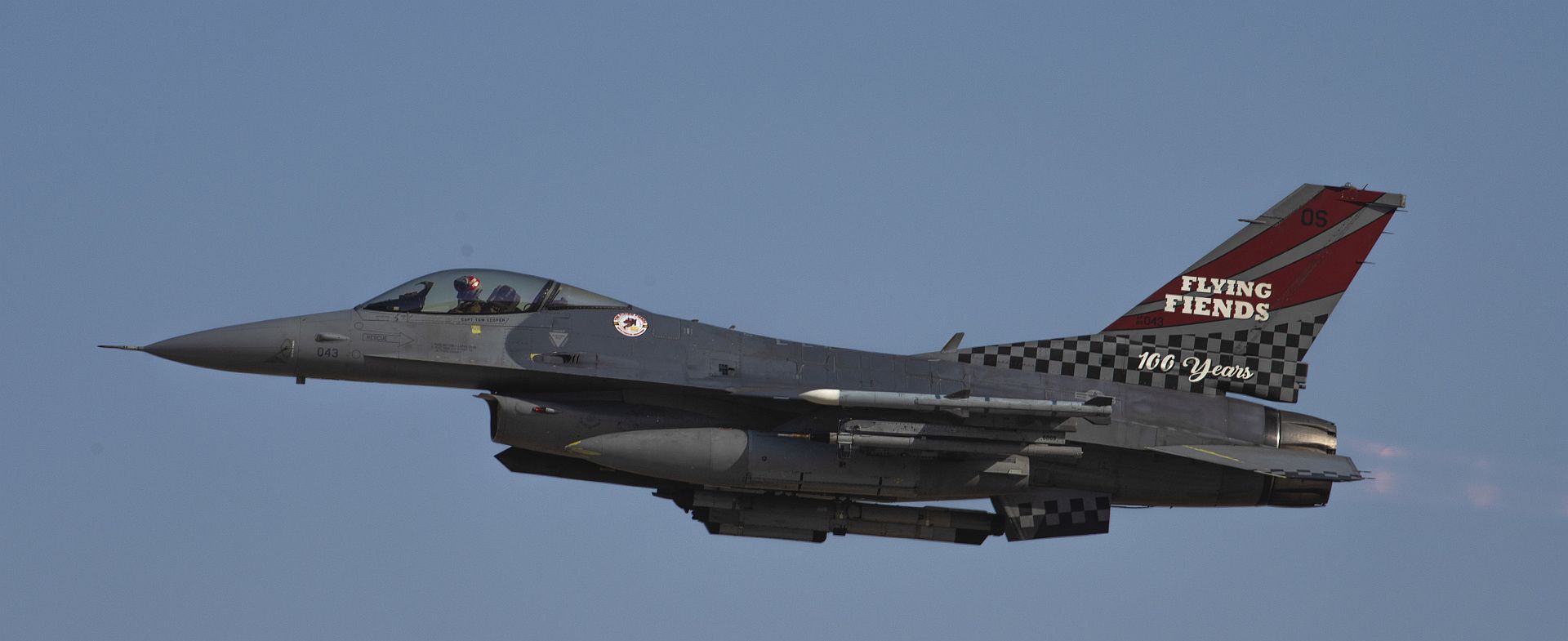
A group of Finnish air force F/A-18C Hornet aircraft fly in formation after receiving fuel from a KC-135 Stratotanker aircraft assigned to the 100th Air Refueling Wing during exercise Baltic Trident over Finland, March 17, 2021. Exercise Baltic Trident is a joint training exercise to ensure Airmen and aircrew are postured to deliver lethal combat power across the spectrum of military operations by utilizing elements of agile combat employment. (U.S. Air Force photos by Tech. Sgt. Anthony Hetlage)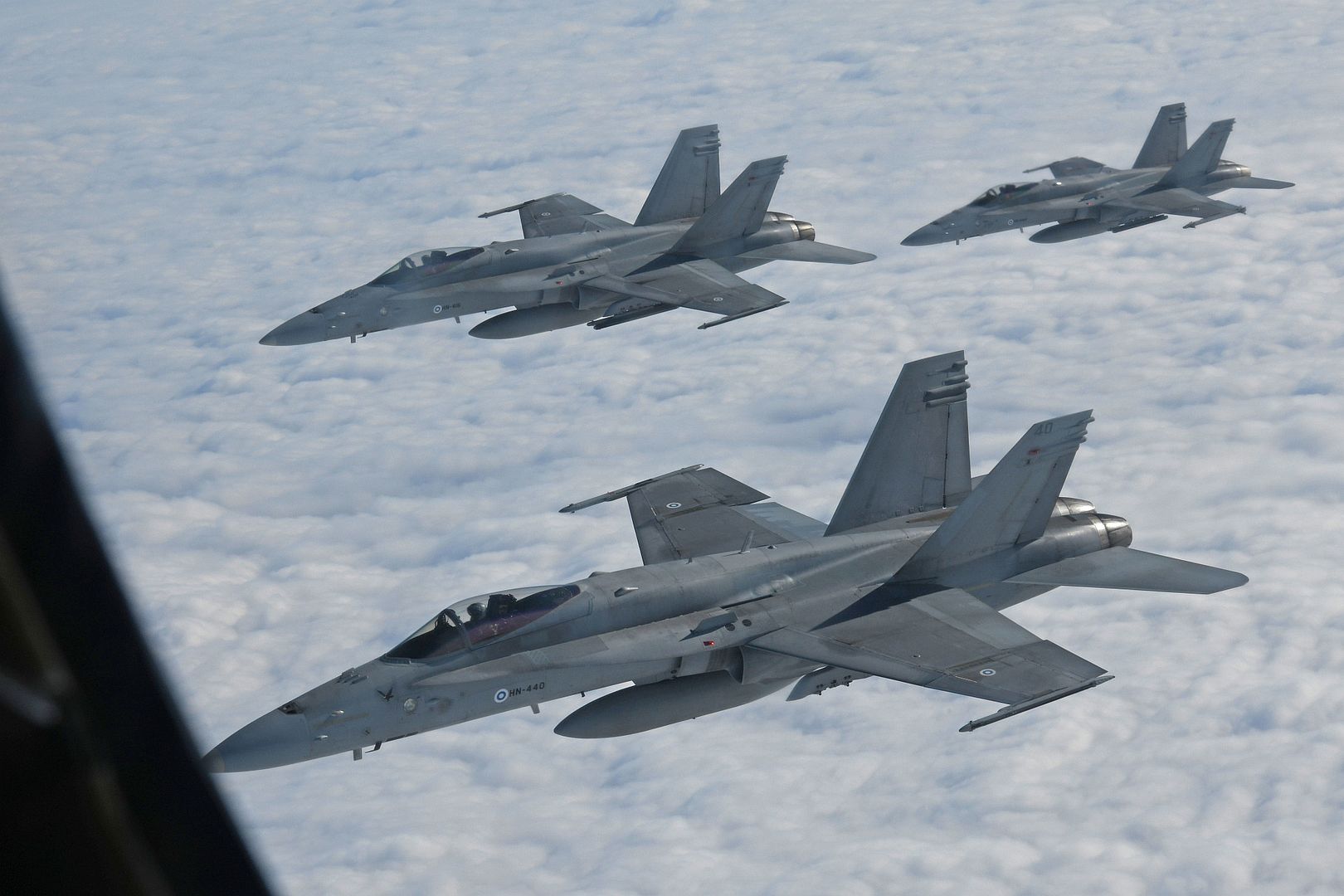
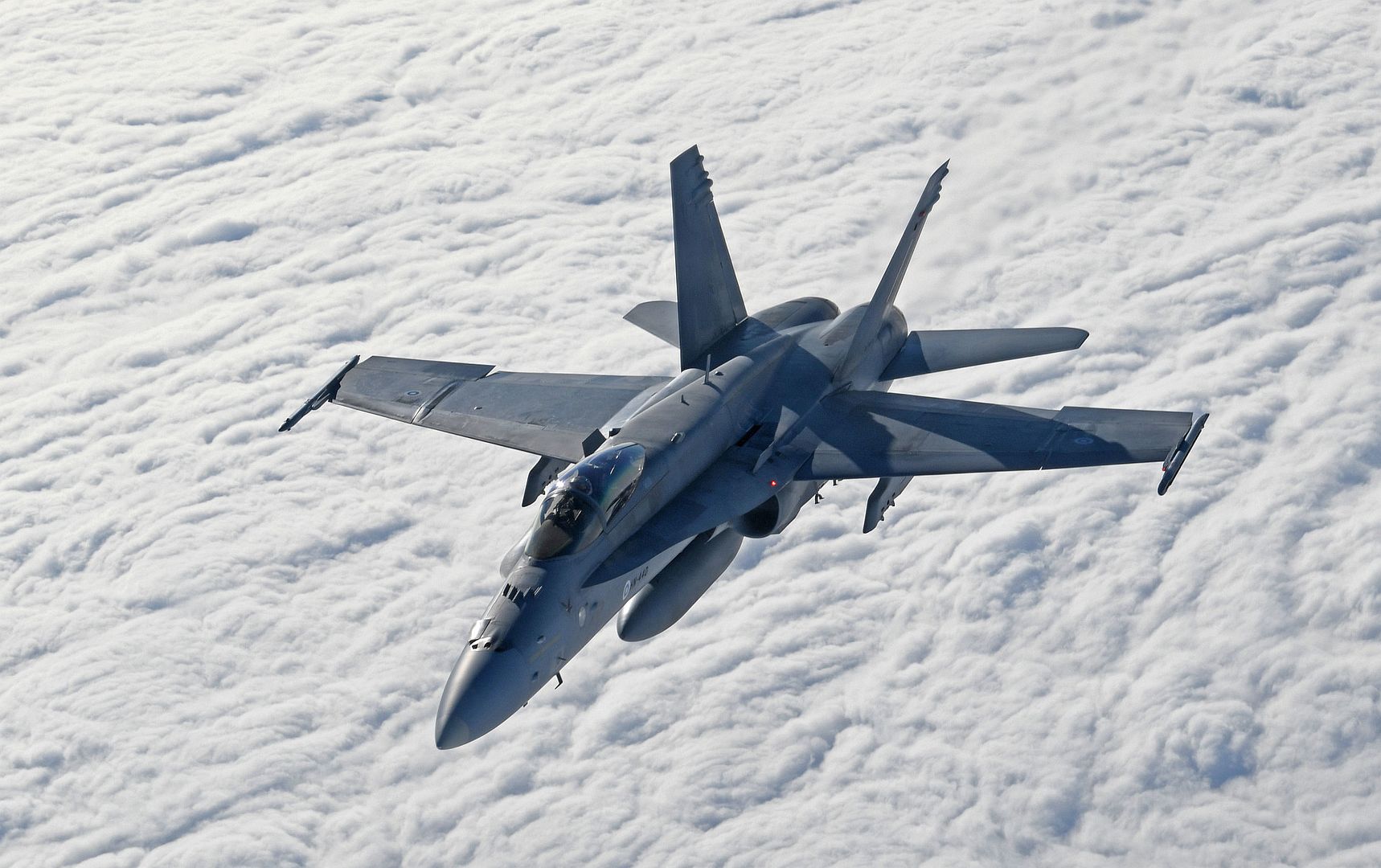
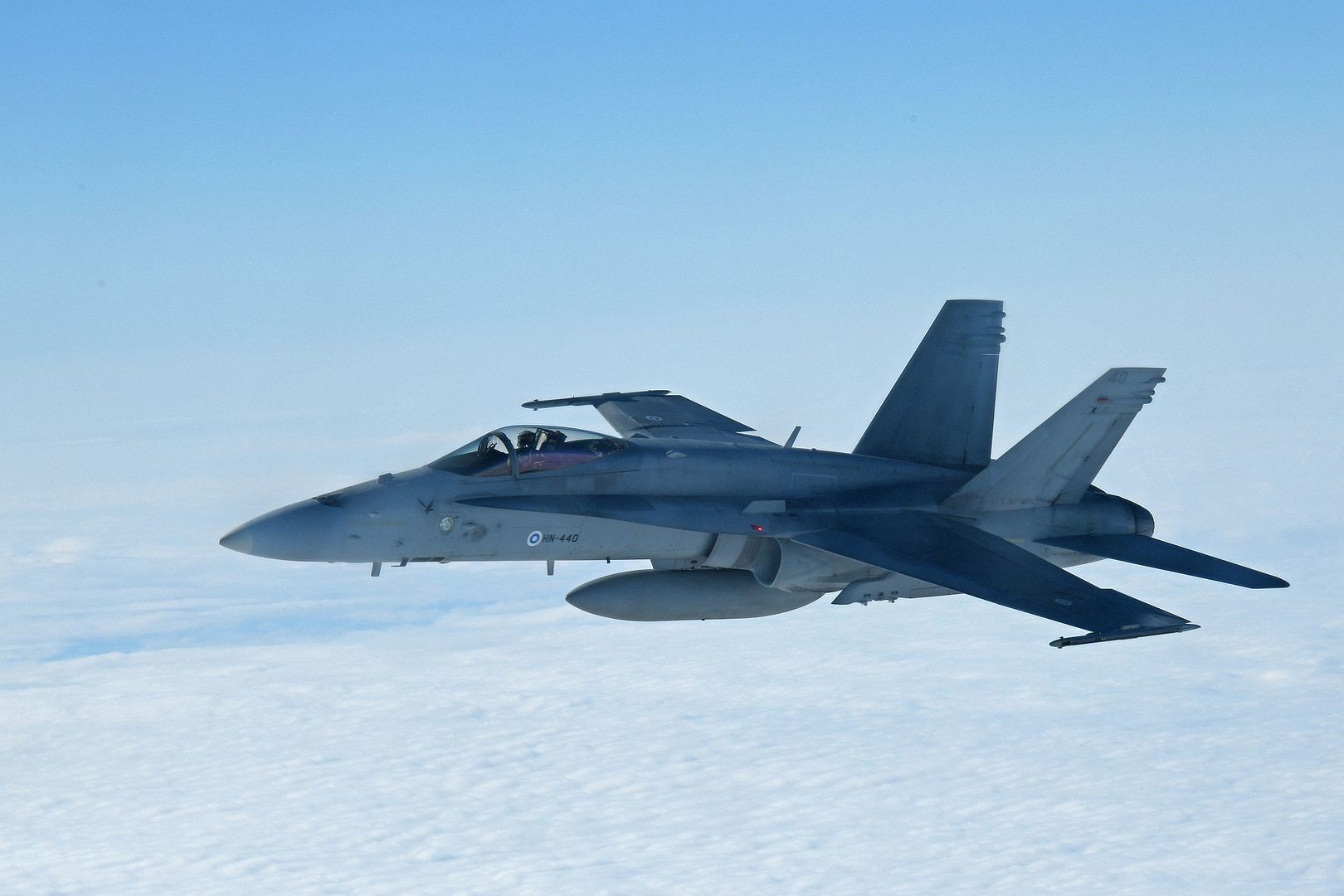
A U.S. Air Force F-15C Eagle aircraft assigned to the 48th Fighter Wing departs after receiving fuel from a KC-135 Stratotanker aircraft during exercise Baltic Trident over Estonia, March 18, 2021. Exercise Baltic Trident aims to strengthen allied partnerships across the European area of responsibility. (U.S. Air Force photo by Tech. Sgt. Anthony Hetlage)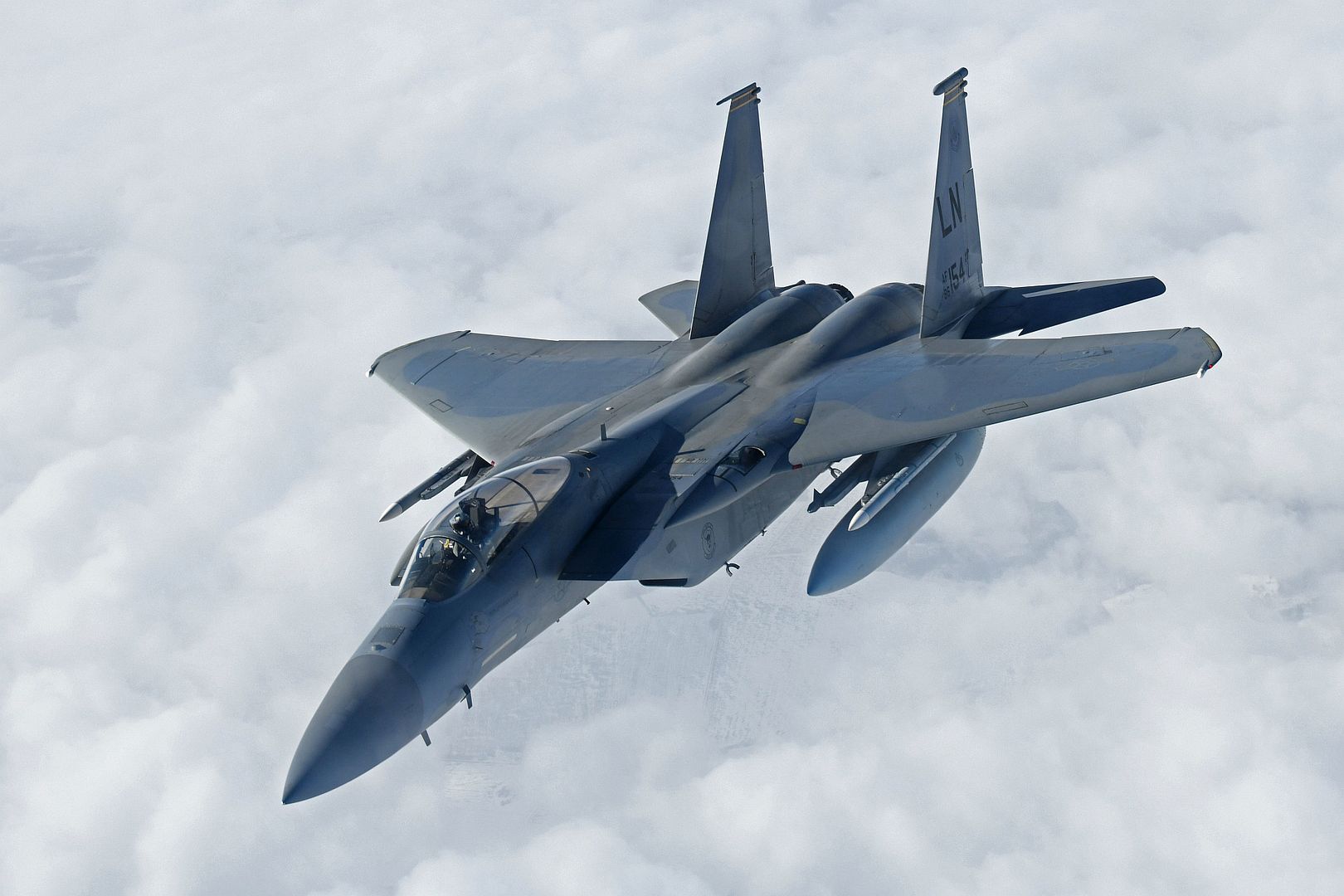
An A-10 Thunderbolt II from the 104th Fighter Squadron, part of the Maryland Air National Guard, takes off from Hill Air Force Base, Utah, March 17, 2021. The 104th FS are visiting Hill March 9-18 to participate in a Weapons System Evaluation Program known as Combat Hammer. (U.S. Air Force photo by Cynthia Griggs)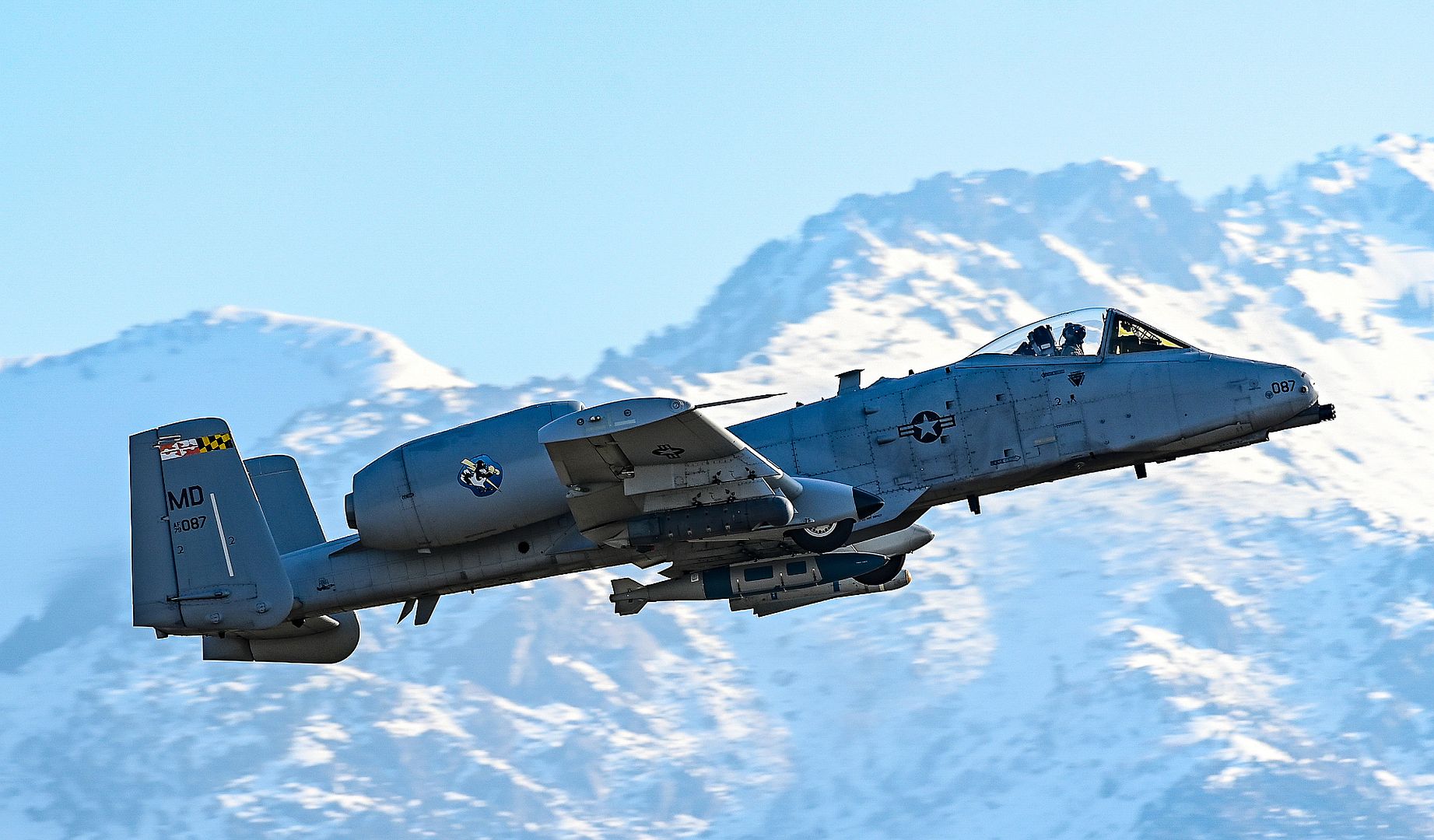
18.03.2021
The target environment was updated to prepare participants of the Western Military District for the Aviadarts-2021 competition at the Pogonovo training ground in the Voronezh region.
For the training of ace pilots, targets will be used-decommissioned aircraft of the mixed aviation regiment stationed in Lipetsk. Before transportation, the aircraft underwent a full inspection, disarmament, and withdrawal of reconnaissance, navigation, and engine equipment.
Transportation was carried out with the help of special military trawls. Throughout the entire route, the column of military equipment was accompanied by employees of the 47th Military traffic police of the Western Military District.
In total, about 50 targets will be placed at the training ground, mimic the parking of aircraft, anti-aircraft missile batteries, columns of tanks and combat vehicles, as well as infrastructure facilities.
(Photo courtesy of the
Ministry of Defence of the Russian Federation)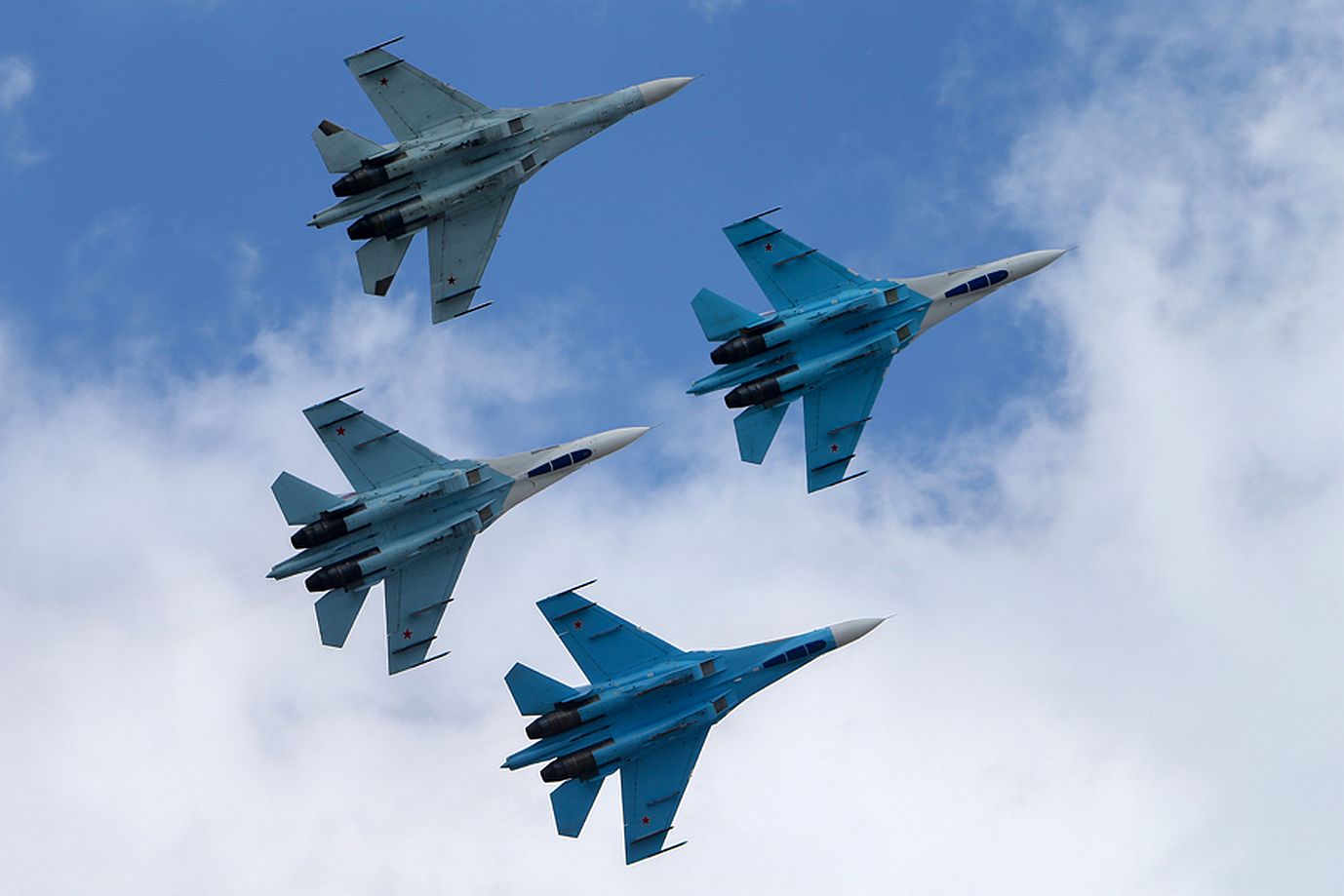
Toulouse, 18 March 2021 – A team of aerospace specialists has launched the world’s first in-flight emissions study using 100% sustainable aviation fuel (SAF) on a wide-body commercial passenger aircraft.
Airbus, German research centre DLR, Rolls-Royce and SAF producer Neste have teamed up to start the pioneering ‘Emission and Climate Impact of Alternative Fuels’ (ECLIF3) project looking into the effects of 100% SAF on aircraft emissions and performance.
Findings from the study - to be carried out on the ground and in the air using an Airbus A350-900 aircraft powered by Rolls-Royce Trent XWB engines - will support efforts currently underway at Airbus and Rolls-Royce to ensure the aviation sector is ready for the large-scale use of SAF as part of the wider initiative to decarbonise the industry.
Fuel-clearance engine tests, including a first flight to check operational compatibility of using 100% SAF with the aircraft’s systems, started at Airbus’ facilities in Toulouse, France, this week. These will be followed by the ground-breaking flight-emissions tests due to start in April and resuming in the Autumn, using DLR’s Falcon 20-E ‘chase plane’ to carry out measurements to investigate the emissions impact of using SAF. Meanwhile, further ground tests measuring particulate-matter emissions are set to indicate the environmental impact of SAF-use on airport operations.
Both the flight and the ground tests will compare emissions from the use of 100% SAF produced with HEFA (hydroprocessed esters and fatty acids) technology against those from fossil kerosene and low-sulphur fossil kerosene.
The SAF will be provided by Neste, a leading worldwide supplier of sustainable aviation fuel. Additional measurement and analysis for the characterisation of the particulate-matter emissions during the ground testing will be delivered by the UK’s University of Manchester and the National Research Council of Canada.
“SAF is a vital part of Airbus' ambition to decarbonise the aviation industry and we are working closely with a number of partners to ensure a sustainable future for air travel,” said Steven Le Moing, New Energy Programme Manager, Airbus. “Aircraft can currently only operate using a maximum 50% blend of SAF and fossil kerosene; this exciting collaboration will not only provide insight into how gas-turbine engines function using 100% SAF with a view to certification, but identify the potential emissions reductions and environmental benefits of using such fuels in flight on a commercial aircraft too."
Dr Patrick Le Clercq, ECLIF Project Manager at DLR, said: “By investigating 100% SAF, we are taking our research on fuel design and aviation climate impact to a new level. In previous research campaigns, we were already able to demonstrate the soot-reduction potential of between 30 and 50% blends of alternative fuels, and we hope this new campaign will show that this potential is now even greater.
“DLR has already conducted extensive research on analytics and modelling as well as performing ground and flight tests using alternative fuels with the Airbus A320 ATRA research aircraft in 2015 and in 2018 together with NASA.”
Simon Burr, Director Product Development and Technology, Rolls-Royce Civil Aerospace, added: “In our post-COVID-19 world, people will want to connect again but do so sustainably. For long-distance travel, we know this will involve the use of gas turbines for decades to come. SAF is essential to the decarbonisation of that travel and we actively support the ramp-up of its availability to the aviation industry. This research is essential to support our commitment to understanding and enabling the use of 100% SAF as a low-emissions solution.”
Jonathan Wood, Neste’s Vice President Europe, Renewable Aviation, added: “We’re delighted to contribute to this project to measure the extensive benefits of SAF compared with fossil jet fuel and provide the data to support the use of SAF at higher concentrations than 50%. Independently verified analysis has shown 100% Neste MY Sustainable Aviation Fuel delivering up to 80% reduction in greenhouse gas emissions compared to fossil jet fuel use when all life-cycle emissions are taken into account; this study will clarify the additional benefits from the use of SAF."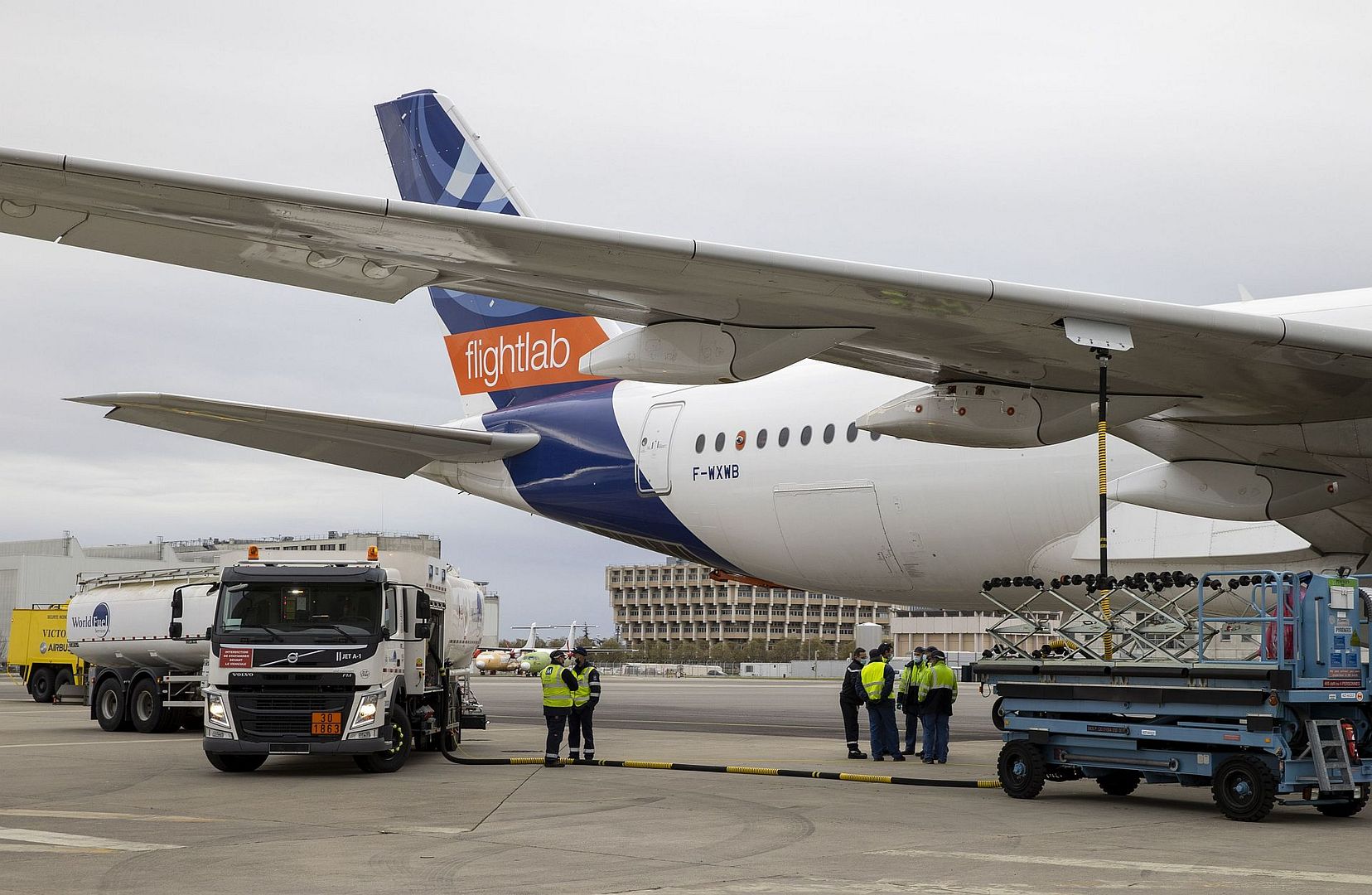
18 Mar 2021.
The (RAF) Chief of the Air Staff, Air Chief Marshal Sir Mike Wigston, has visited Israel as a guest of the Commanding Officer of the Israeli Air Force, Major General Amikam Norkin.
The visit was to promote key collaborative efforts and strengthen ties between the nations’ Air Forces. During the visit to Israel, Air Chief Marshal Wigston was given a tour of the Israeli Air Force Bases, Tel Nof, Palmachim and Nevatim.
During the visit the Air Chief Marshal Wigston took part in a joint flight with the Major General Norkin. The Chiefs flew in an Israeli Air Force F-15 aircraft from the 106th Squadron based at Tel Nof Airbase. They also visited Squadron 210 as part of a discussion on UAVs and their operational relevance in the Israeli Air Force. 210 Squadron is a part of the Defensive Sword Unit of the Israeli Air Force's Air Defence System.
The Chiefs then went on to visit Squadron 140 to discuss the force build-up of the F-35 to the Israeli Air Force and its effects on the Middle East.
During the visit, Air Chief Marshal Wigston also met 101 year old Dan Tolkovsky. Major General (Rtd) Tolkovsky is a former RAF fighter pilot who served during the Second World War. On leaving the RAF in 1946 as a Flight Lieutenant, he then joined the newly created Israeli Air Force in 1948 and became the fifth Commanding Officer of the Israeli Air Force in 1953.
-
 Main AdminU.S. Air Force Capt. Haden “Gator” Fullam, A-10 Thunderbolt II Demonstration Team commander, flies an A-10 over Burnet, Texas, March 18, 2021. The A-10 is an effective, survivable twin-engine jet aircraft that can be used against all ground targets, including tanks and other armored vehicles. (U.S. Air Force photos by Staff Sgt. Sergio A. Gamboa)
Main AdminU.S. Air Force Capt. Haden “Gator” Fullam, A-10 Thunderbolt II Demonstration Team commander, flies an A-10 over Burnet, Texas, March 18, 2021. The A-10 is an effective, survivable twin-engine jet aircraft that can be used against all ground targets, including tanks and other armored vehicles. (U.S. Air Force photos by Staff Sgt. Sergio A. Gamboa)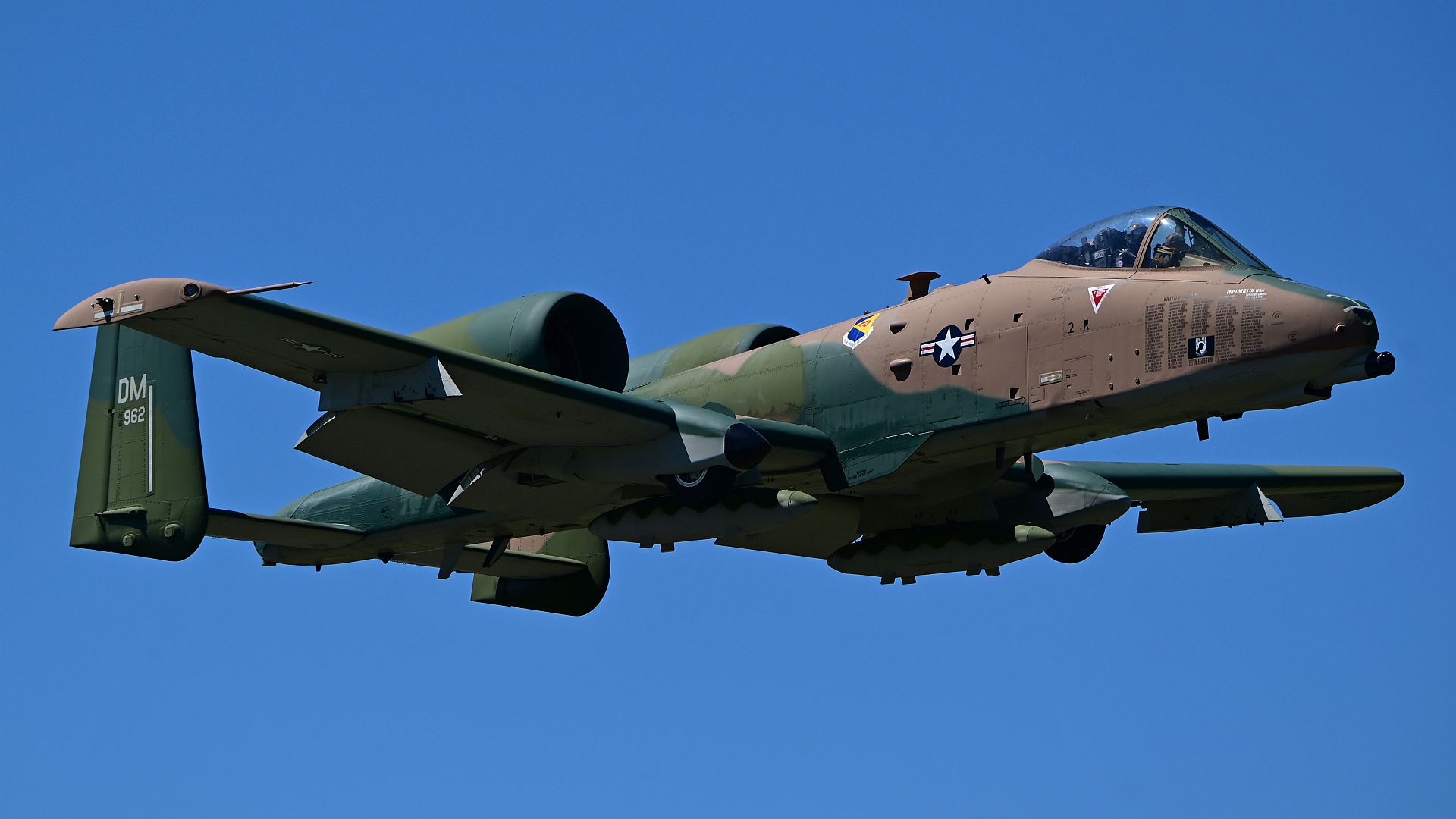

U.S. Air Force Capt. Haden “Gator” Fullam, A-10 Thunderbolt II Demonstration Team commander, lands on a flightline at Burnet, Texas, March 18, 2021. Thunderbolt IIs are the first Air Force aircraft specially designed for close air support of ground forces. (U.S. Air Force photo by Staff Sgt. Sergio A. Gamboa)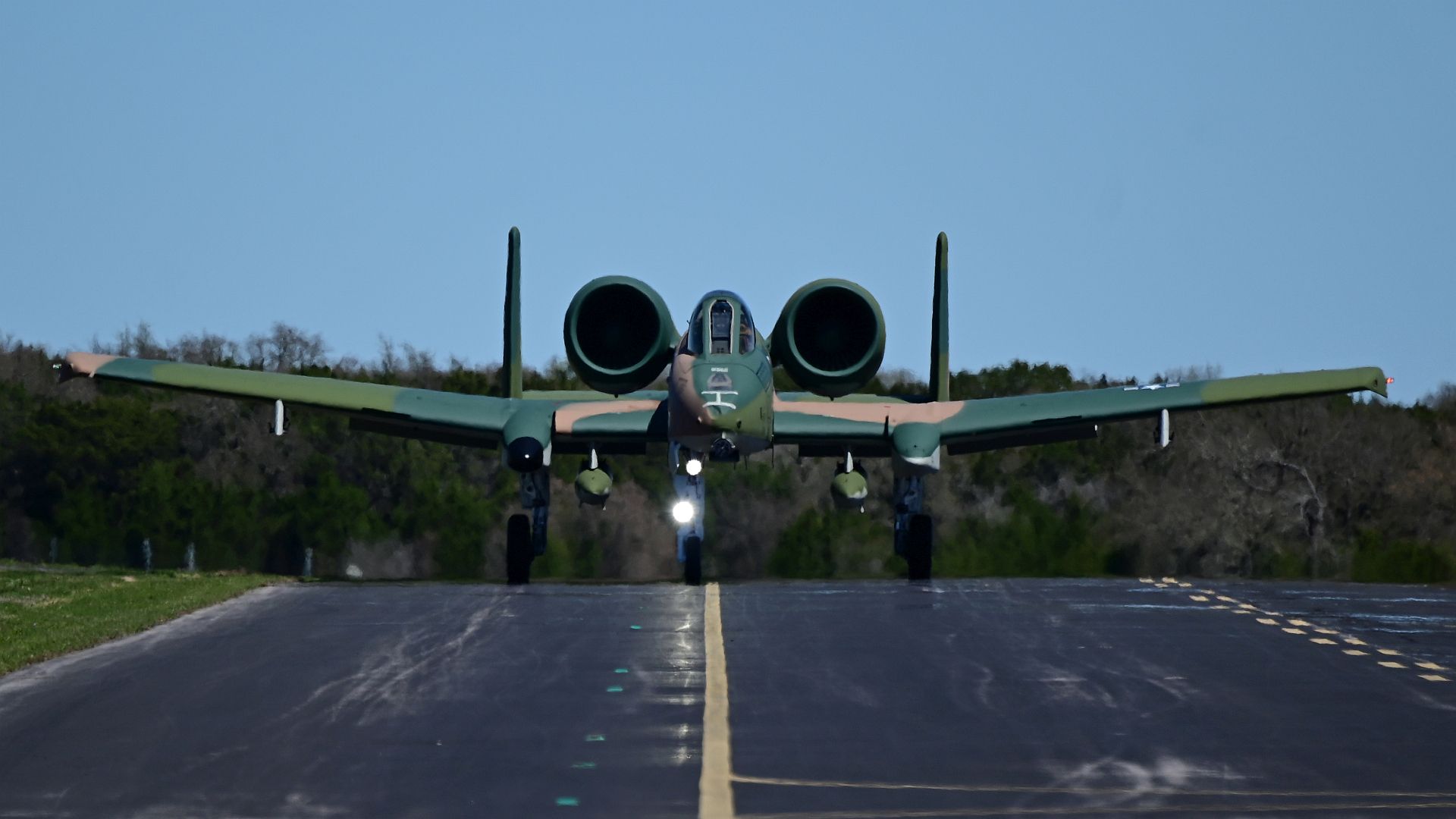
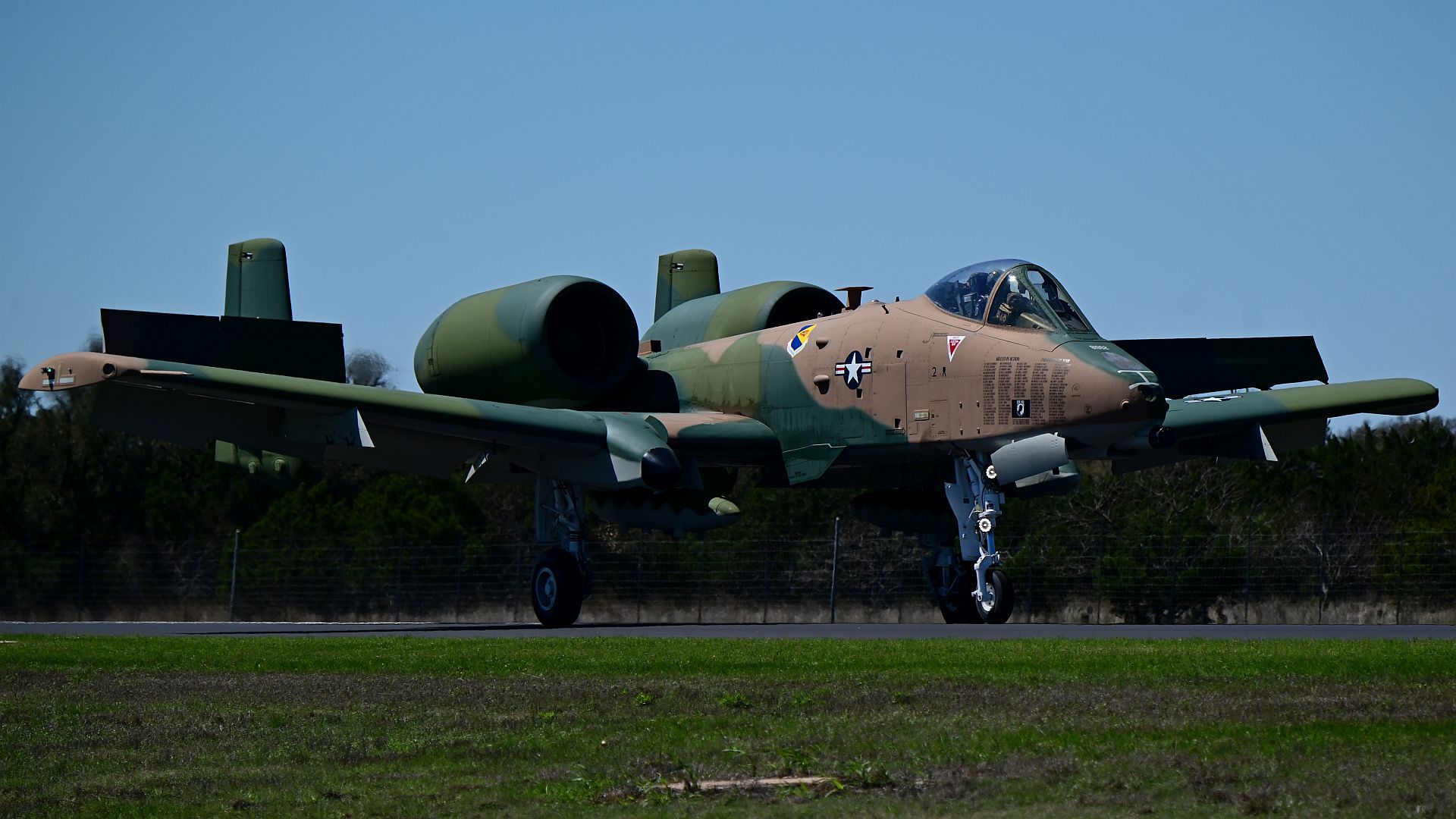
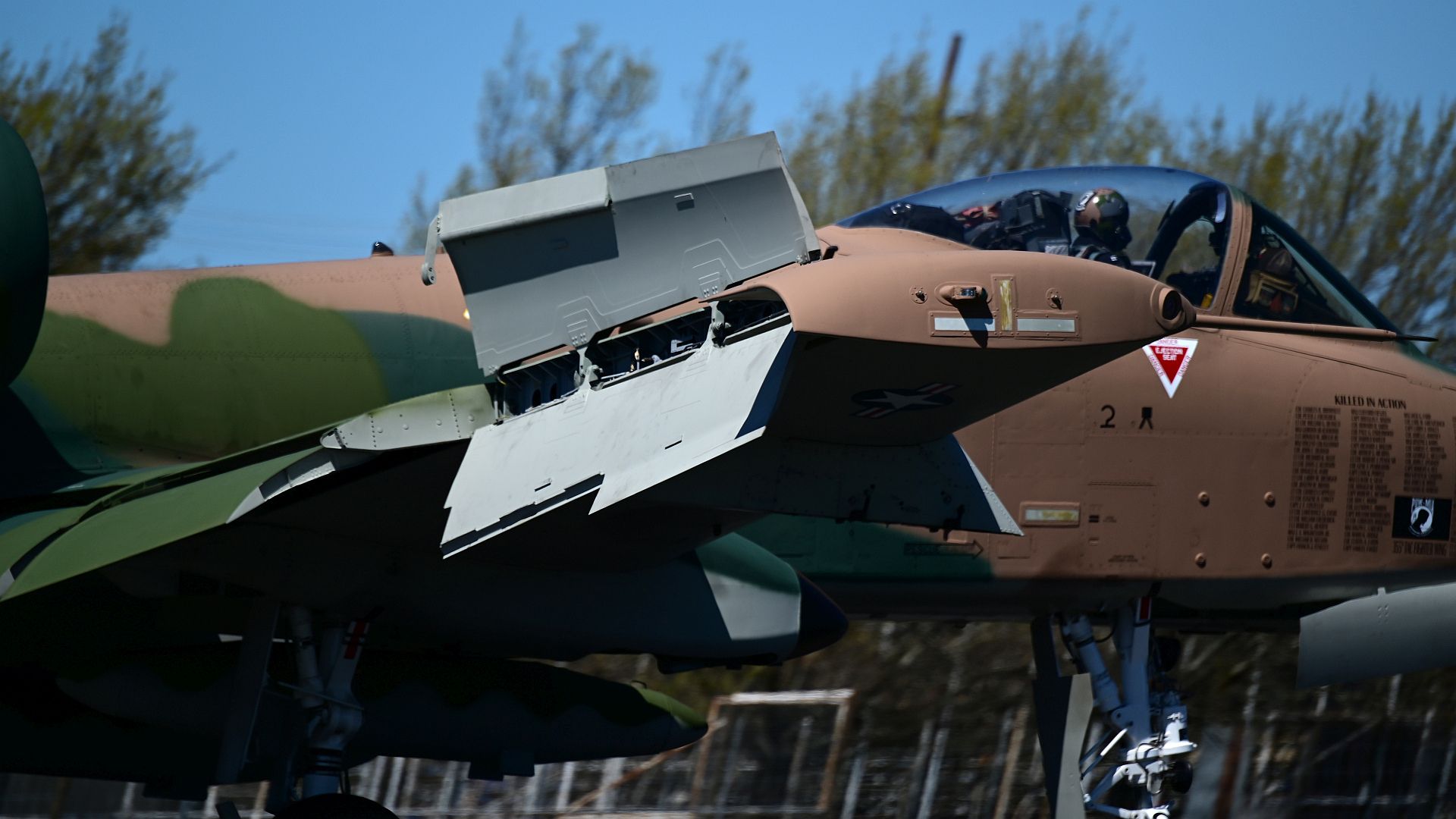
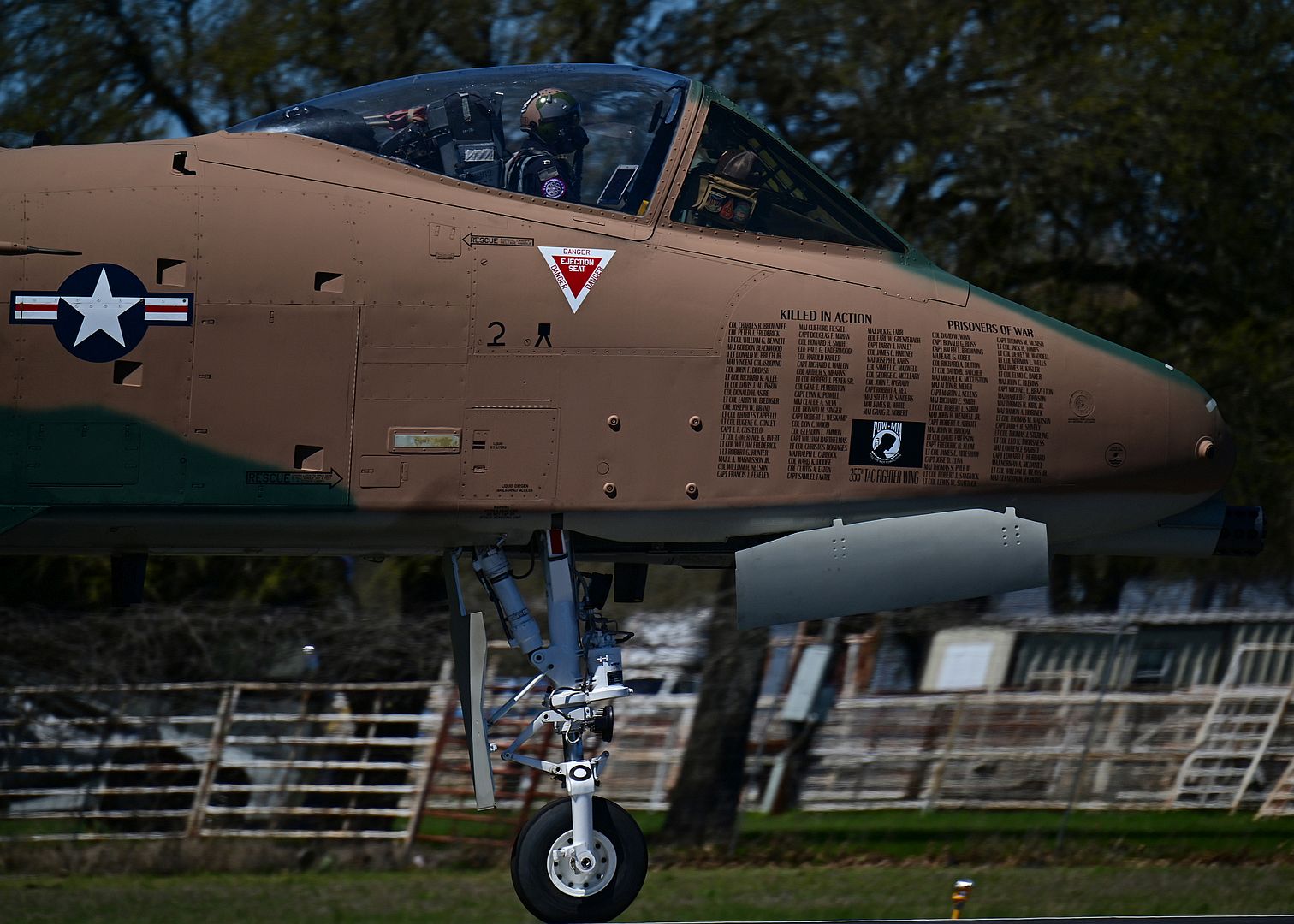
An AH-64E Apache sits outside of a hangar at Hunter Army Airfield, Georgia, March 19. The 3rd Squadron, 17th Cavalry Regiment, 3rd Combat Aviation Brigade, 3rd Infantry Division, received their initial fielding of the new Echo Model helicopters replacing the older Delta model. The AH-64E Apache is designed to increase power margins and reliability which increases unit readiness and lethality. (U.S. Army photos by Sgt. Andrew McNeil, 3rd Combat Aviation Brigade, 3rd Infantry Division)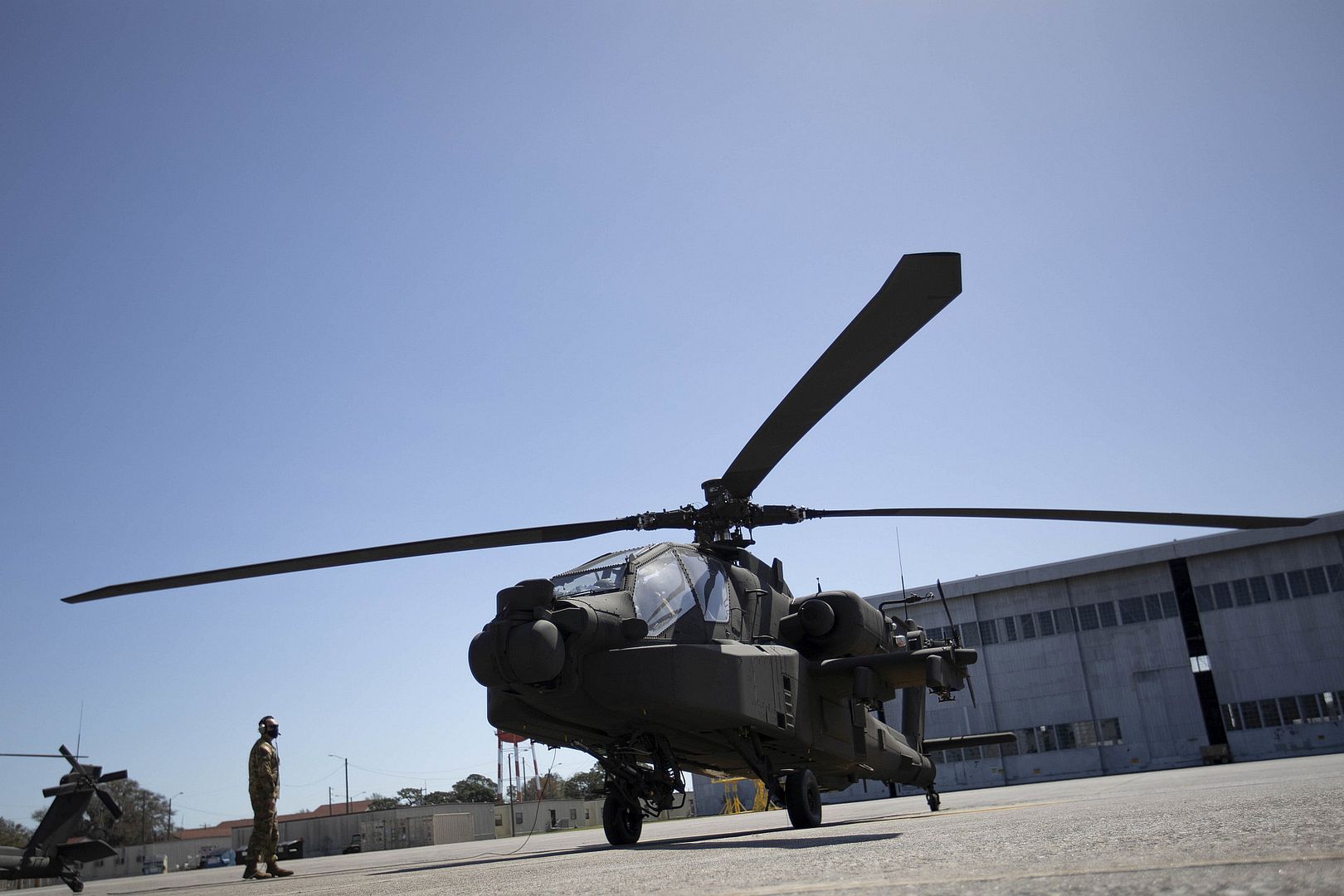

An F-35 Lightning II assigned to the 62nd Fighter Squadron from Luke Air Force Base, Arizona, sits on the flight line before a Red Flag 21-2 mission at Nellis Air Force Base, Nevada, March 17, 2021.The introduction of low-visibility conditions presents aircrews with a number of challenges that test their ability to perform the mission at anytime, day or night. (U.S. Air Force photo by Airman First Class Zachary Rufus)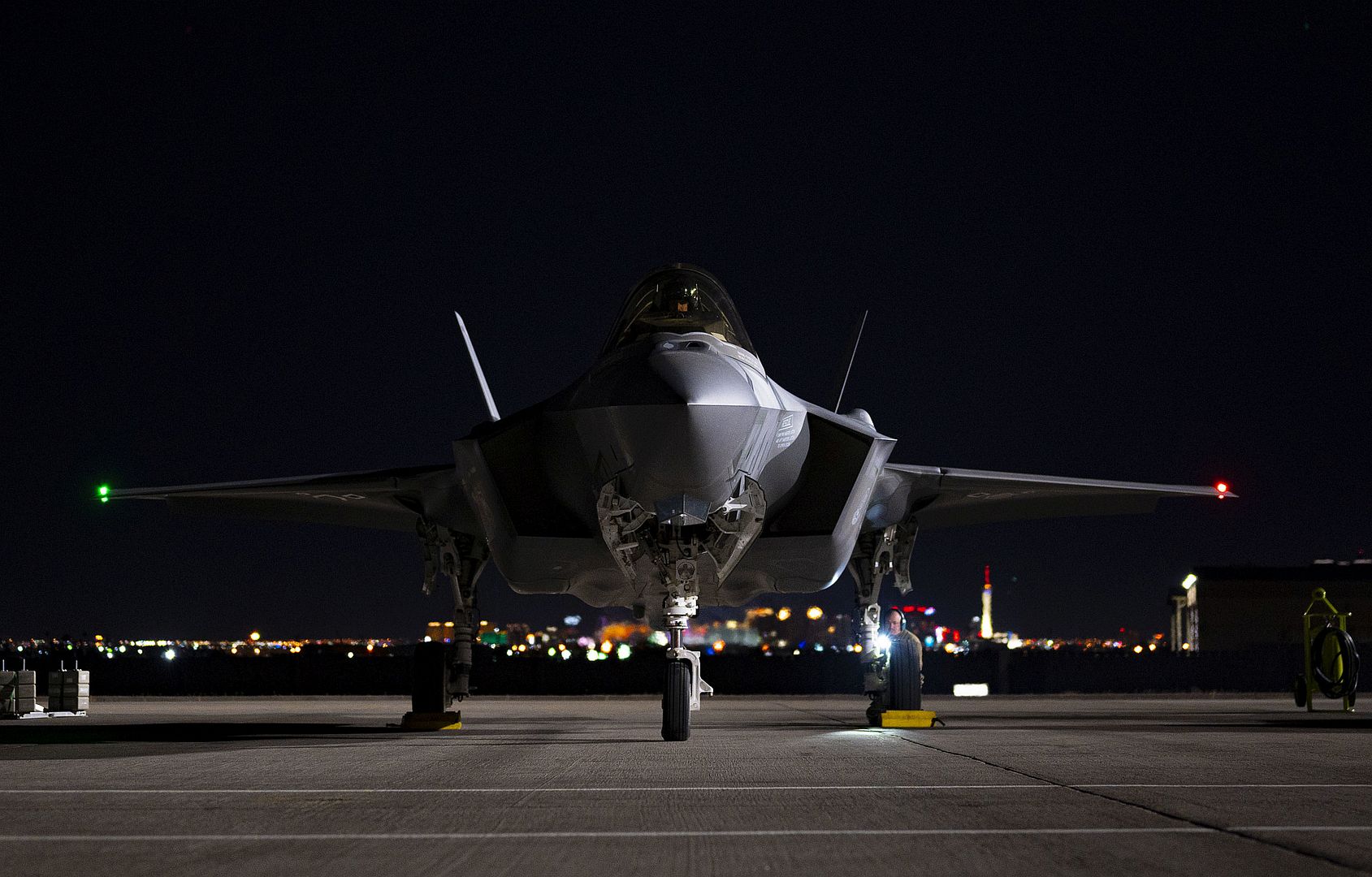
GBU-31 munitions sit in front of a B-52H Stratofortress during Combat Hammer at Barksdale Air Force, La., March 10, 2021. Airmen from the 2nd Bomb Wing flew an impressive eight for eight sortie generation and fly rate, something rarely seen across all combat platforms, not just bombers in support of the exercise. (U.S. Air Force photo by Airman 1st Class Jacob B. Wrightsman)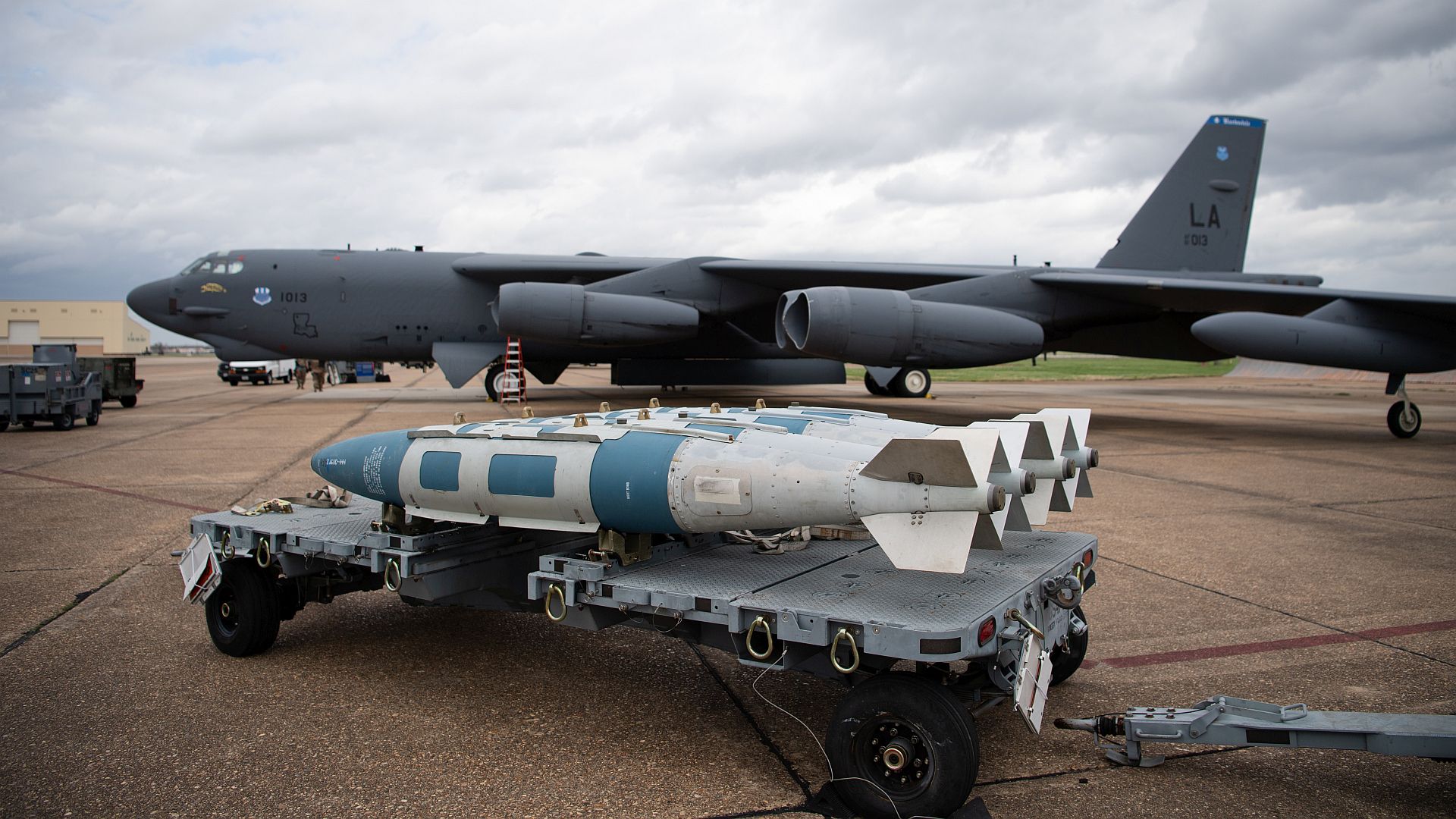
A Royal Australian Air Force C-17 Globemaster III prepares to land at Dover Air Force Base, Delaware, March 13, 2021. The U.S. and Australia maintain a robust relationship underpinned by shared democratic values, common interests and cultural bonds. The U.S.-Australia alliance is an anchor for peace and stability in the Indo-Pacific region and around the world. (U.S. Air Force photo by Airman 1st Class Faith Schaefer)
ATLANTIC OCEAN (Feb. 16, 2021) A C-2A Greyhound attached to the "Rawhides" of Fleet Logistics Support Squadron (VRC) 40 lands on the flight deck of the aircraft carrier USS Gerald R. Ford (CVN 78) for a visit from Acting Secretary of the Navy (SECNAV) Thomas W. Harker, March 16, 2021. Gerald R. Ford is underway in the Atlantic Ocean conducting carrier qualifications. (U.S. Navy photo by Mass Communication Specialist 3rd Class Michael Joseph Flesch)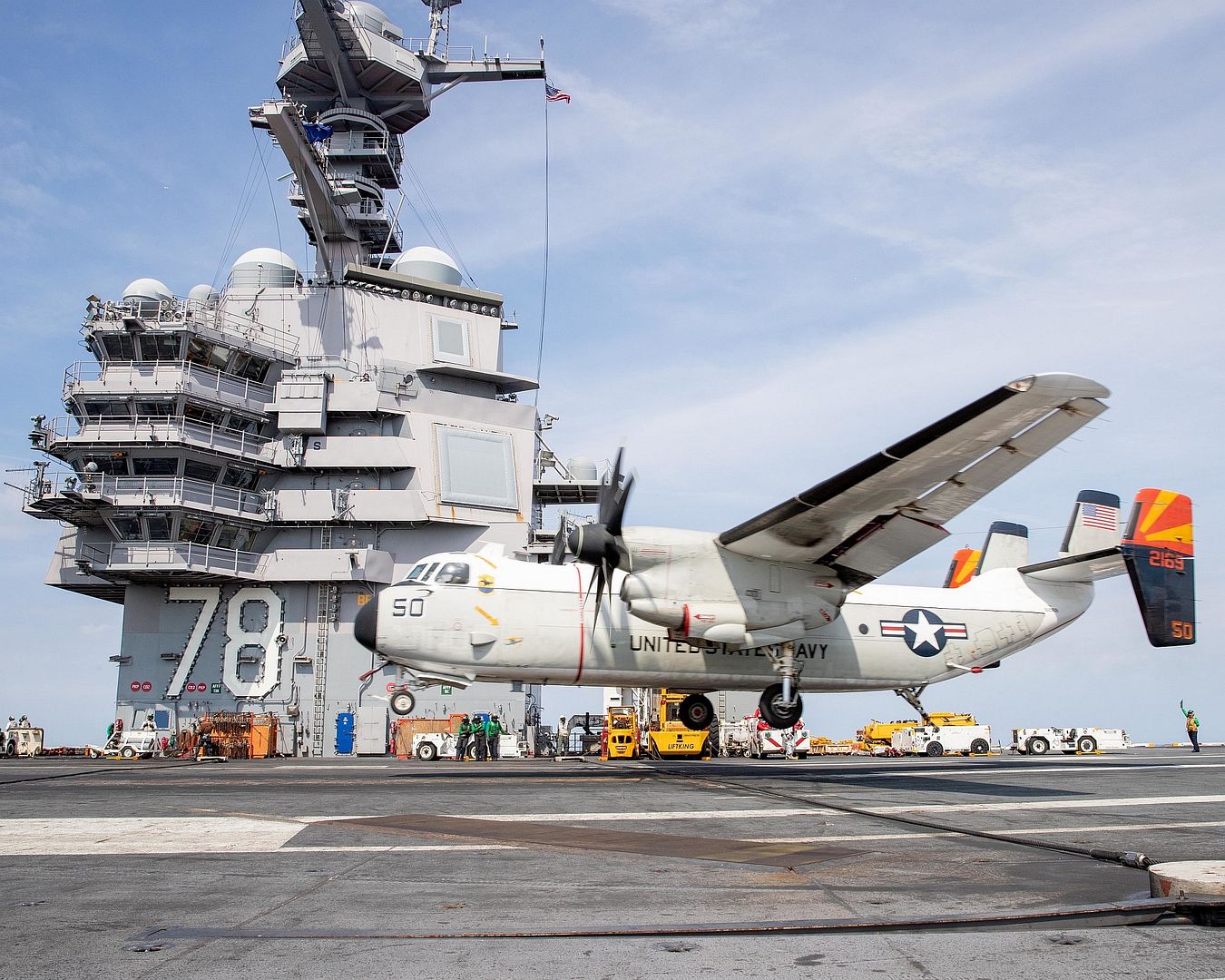
WHIDBEY ISLAND, Wash., March 19, 2021 — Boeing [NYSE: BA] has started a five-year modification program for the U.S. Navy’s EA-18G Growler fleet with the induction of the first jet at Naval Air Station Whidbey Island.
The modifications are focused on updating the jets’ structural and mission systems architecture, enabling future capability growth for the Navy’s 160 Growler aircraft. Growlers serve a critical role in jamming radar and communications signals of threat forces, disabling their ability to detect and track U.S. and allied military forces.
“We’re excited to have the Growler industry team here working on capabilities that will bring the fleet enhanced electronic surveillance, enhanced data link and the ability to carry the Next Generation Jammer pod,” said Capt. Chris “Needles” Bahner, commander, Electronic Attack Wing, U.S. Pacific Fleet. “We look forward to being a cooperative partner with PMA-265 and PMA-234 at Naval Air Systems Command and the Growler industry team on this exciting work.”
Following contract awards in October 2020 and February 2021 for materials and labor, the modification work includes various upgrades for Growler mission systems. The aircraft’s ALQ-218 receiver system will receive the Airborne Electronic Attack System Enhancements modification, enabling the Growler to operate in increasingly complex electromagnetic environments.
Additional modifications will expand the Growler’s information pipeline for more rapid and secure data transfer to other aircraft and platforms as well as substantially improve the speed of data processing. Boeing also will prepare the Growler for the Next Generation Jammer, which greatly improves the Growler’s electronic attack capability.
“As the world’s premier electronic attack platform, we’re starting this program for the EA-18G Growler in solid partnership with the Navy,” said Mark Sears, Boeing vice president of Fighters & Strike Product Support. “These modifications will position it to meet the threats of today and those in the future.”
The program schedule forecasts that all Navy Growlers will be modified in five years. Full rate modification is expected to start in June 2021. Boeing has positioned people on-site at Whidbey, following state, local, customer and corporate COVID protocols, to ensure the program is fully staffed to support the work flow.
Boeing is the world’s largest aerospace company and leading provider of commercial airplanes, defense, space and security systems, and global services. As a top U.S. exporter, the company supports commercial and government customers in more than 150 countries. Building on a legacy of aerospace leadership, Boeing continues to lead in technology and innovation, deliver for its customers and invest in its people and future growth.
STENNIS SPACE CENTER, Mississippi, March 18, 2021 – The cryogenic core stage built by Boeing [NYSE: BA] for NASA’s first Space Launch System (SLS) rocket completed hot fire testing today at NASA’s Stennis Space Center as part of the SLS rocket’s Green Run test campaign on the B-2 test stand. Data from the test validated the core stage’s successful operation and will be used to help certify the stage for flight.
“Deep space exploration took an important step forward today,” said John Shannon, SLS vice president and program manager for Boeing. “The advancements made on the all-new SLS core stage are positive for NASA and the national supply chain. The team is using knowledge gained from Green Run to move forward on our new production system and future stages while delivering the first stage for test flight.”
The Boeing-built SLS core stage is fueled by liquid hydrogen and oxygen tanks feeding four RS-25 engines built by Aerojet Rocketdyne, together producing 1.6 million pounds of thrust during the test and at launch. During a mission, the stage’s engines produce 2.2 million pounds of thrust. The engines burned for a full duration of 499.6 seconds, or eight minutes and 19 seconds, during the test, providing critical verification data.
After post-test checkouts, the core stage will go to NASA’s Kennedy Space Center in Florida for integration with the Orion crew spacecraft, Interim Cryogenic Propulsion Stage upper stage, and solid rocket boosters, and then be prepared for launch.
That complete vehicle will fly the first mission of NASA’s Artemis program, called Artemis I, which will be an uncrewed test flight of Orion around the moon to prepare for crewed missions. Only the SLS has the power to launch Orion, crew and cargo to the moon and enable sustainable lunar exploration. Boeing is the prime contractor to NASA for the SLS core and upper stages and avionics.
“I want to thank our NASA, Aerojet Rocketdyne, and Boeing teams that overcame storms and a pandemic to prove out the SLS core stage’s capability and safety,” said Shannon.
The SLS will continue to evolve past Artemis III, which is planned to be the landing of the first woman and next man on the moon. Boeing is already working on evolvable capabilities for the rocket system such as the Exploration Upper Stage, with additional power that will be key for meaningful human exploration of the moon and Mars.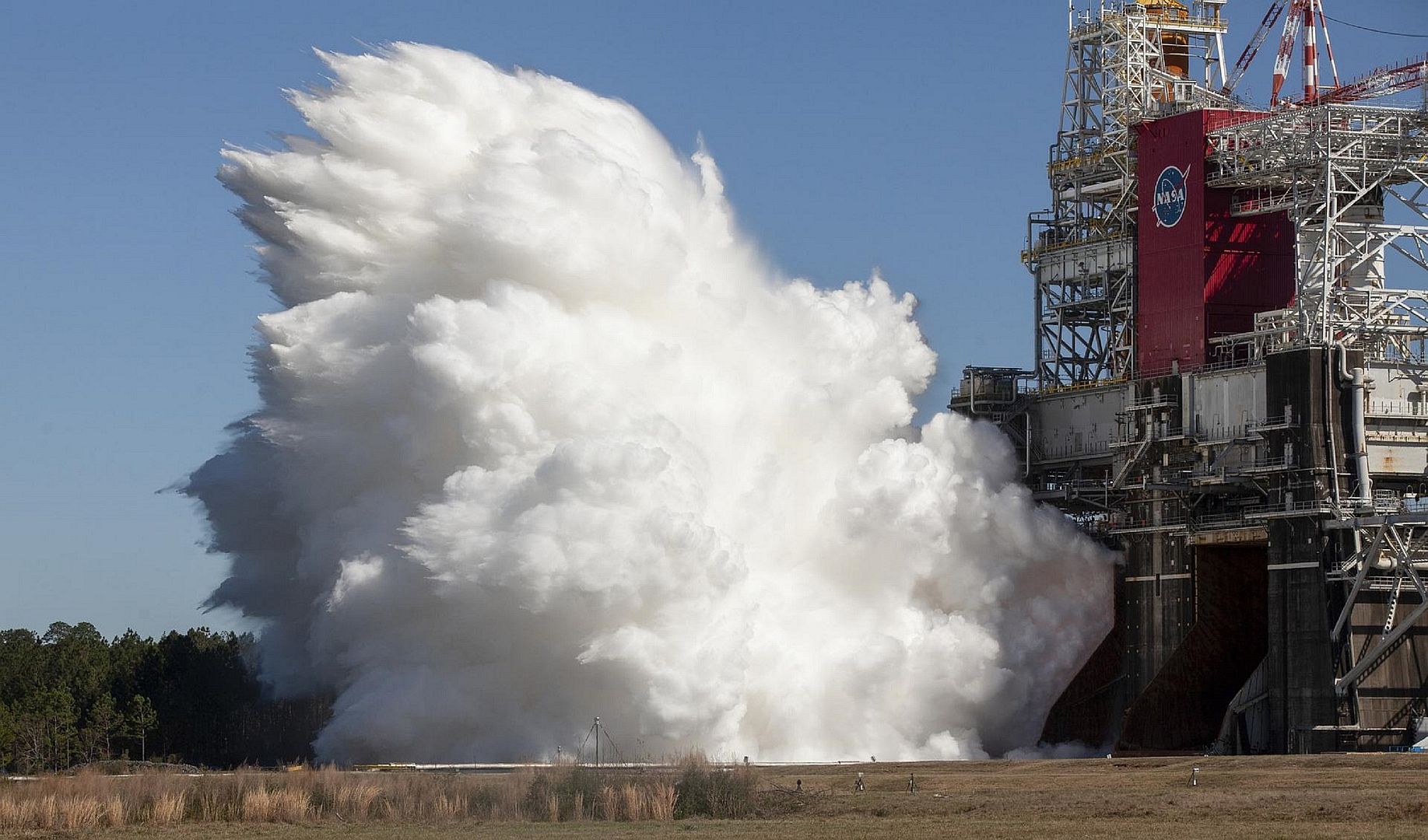
Donauwörth, March 19, 2021 – Airbus Helicopters has handed over the seventh and last H145 for the search and rescue (SAR) service of the Bundeswehr to the Federal Office of Bundeswehr Equipment, Information Technology and In-Service Support (BAAINBw) on time. The previously delivered helicopters are used for training and field testing and are available 24/7 at the Niederstetten and Nörvenich air bases for rescue operations. Operations with the new H145 LUH SAR will begin shortly, as planned, at the third SAR station in Holzdorf.
"We are pleased that we have completed this order from start to finish on time and within budget and that the commissioning is proceeding according to plan," said Wolfgang Schoder, CEO of Airbus Helicopters Germany. “The feedback we have received from our customers has been very positive. Because of their flexibility and very high availability, the helicopters of the H145 family have proven themselves in the Bundeswehr. We see considerably more possibilities for a wide range of tasks in all branches of the armed forces for the reliable model."
Among other features, the helicopters are equipped with high-performance cameras, searchlights, emergency beacon locator systems, a full suite of medical equipment, rescue winches, and load hooks that can be used for fire-extinguishing tanks, for example. They are easy to identify thanks to the characteristic bright orange paintwork on their doors, featuring ‘SAR’ in blue lettering.
-
 Main AdminF-15C Eagles assigned to the 493rd Fighter Squadron travel back to Royal Air Force Lakenheath after completion of exercise Baltic Trident at Ämari Air Base, Estonia, March 19, 2021. A forward operating station was set up at Amari AB for exercise Baltic Trident, an Agile Combat Employment exercise designed to increase interoperability among NATO allies and partner nations, and enhance capabilities to operate more resiliently and effectively throughout the European region. (U.S. Air Force photos by Airman 1st Class Jessi Monte)
Main AdminF-15C Eagles assigned to the 493rd Fighter Squadron travel back to Royal Air Force Lakenheath after completion of exercise Baltic Trident at Ämari Air Base, Estonia, March 19, 2021. A forward operating station was set up at Amari AB for exercise Baltic Trident, an Agile Combat Employment exercise designed to increase interoperability among NATO allies and partner nations, and enhance capabilities to operate more resiliently and effectively throughout the European region. (U.S. Air Force photos by Airman 1st Class Jessi Monte)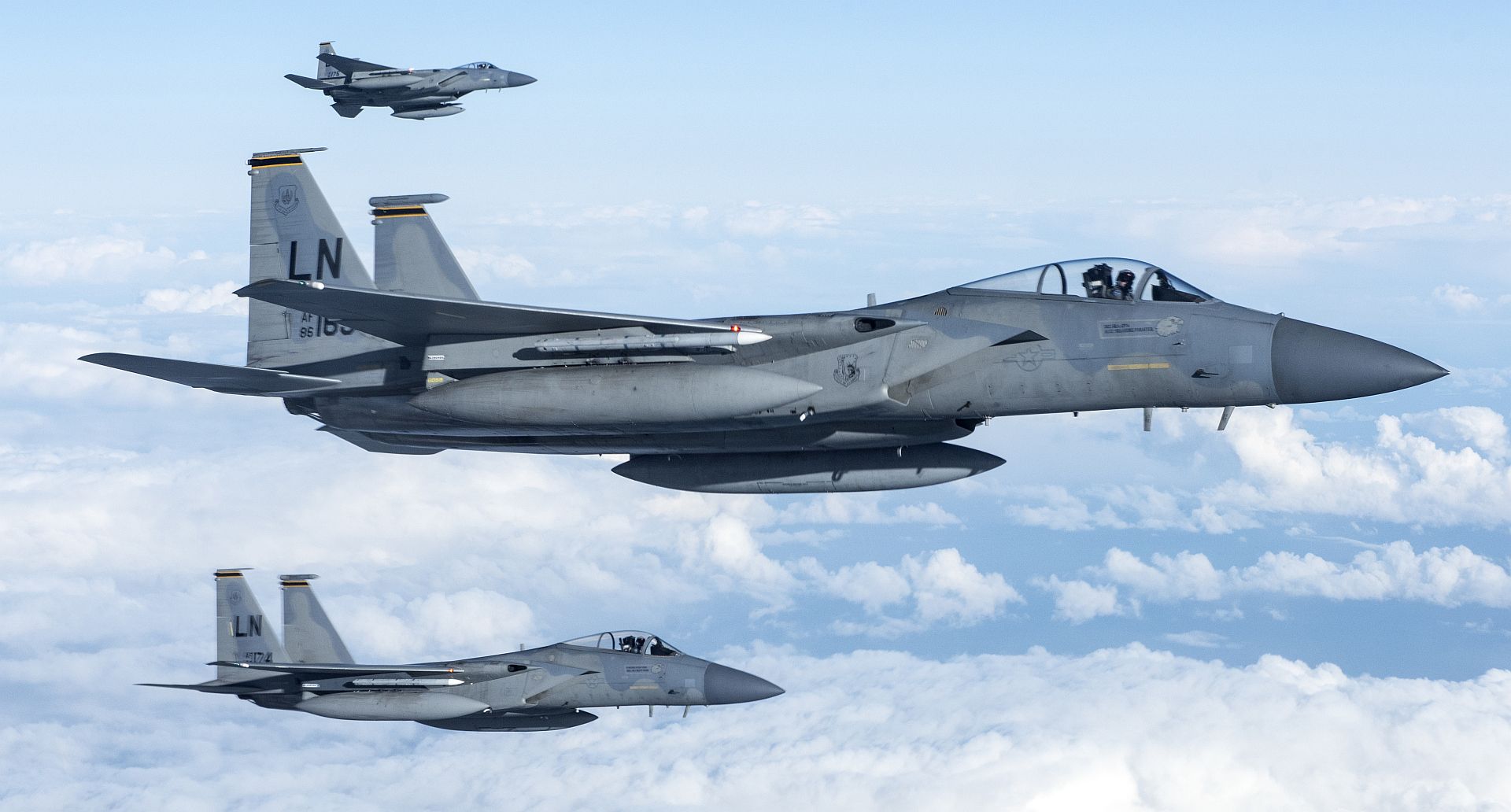
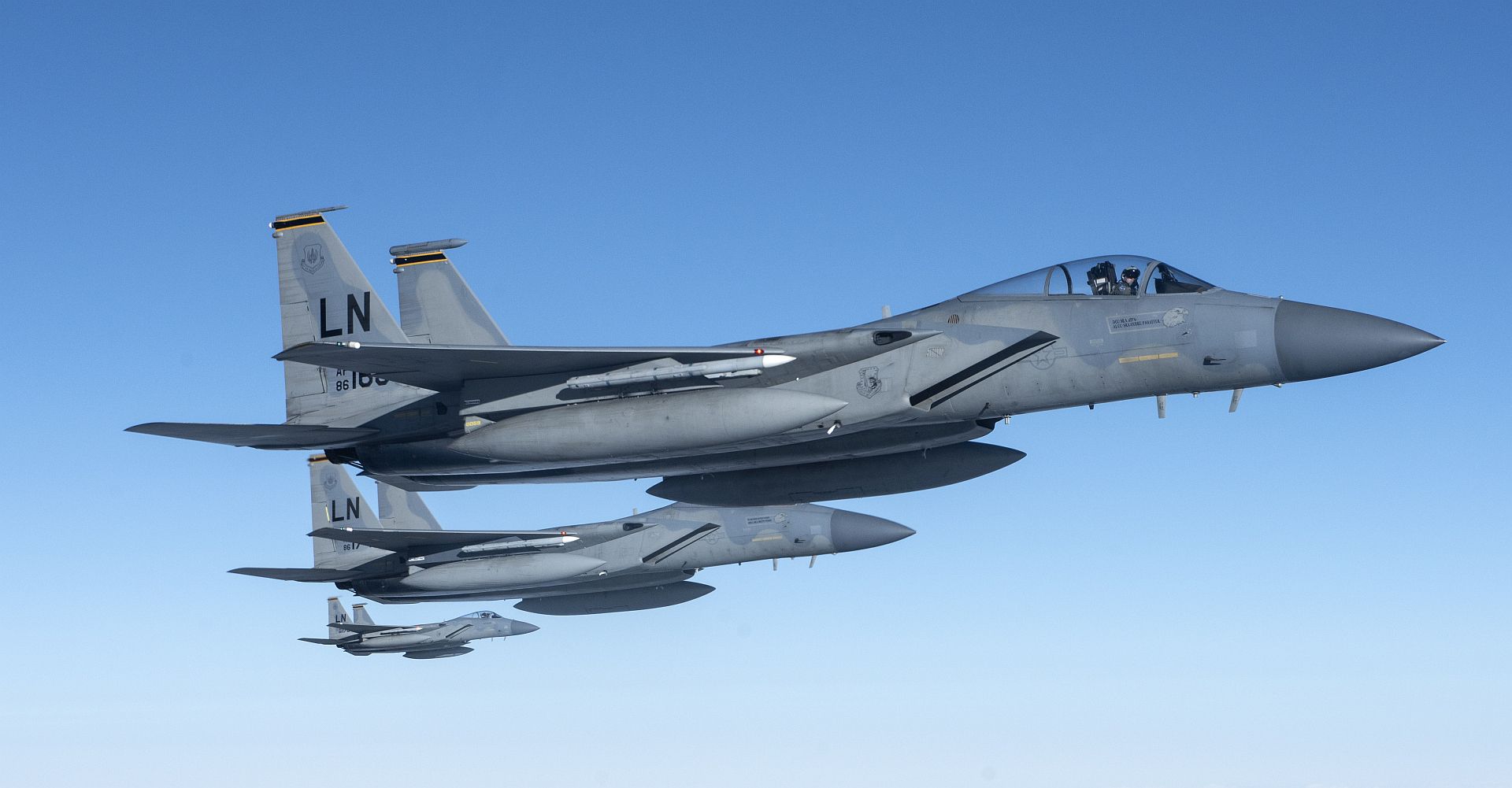
An F-15E Strike Eagle assigned to the 492nd Fighter Squadron sits on the apron at Ämari Air Base, Estonia, March 19, 2021. Aircraft and Airmen from the 48th Fighter Wing were in Estonia for Baltic Trident, an Agile Combat Employment exercise conducted to enhance 48th FW flexibility to support and engage NATO and partner forces in the Baltic Region. (U.S. Air Force photos by Airman 1st Class Jessi Monte)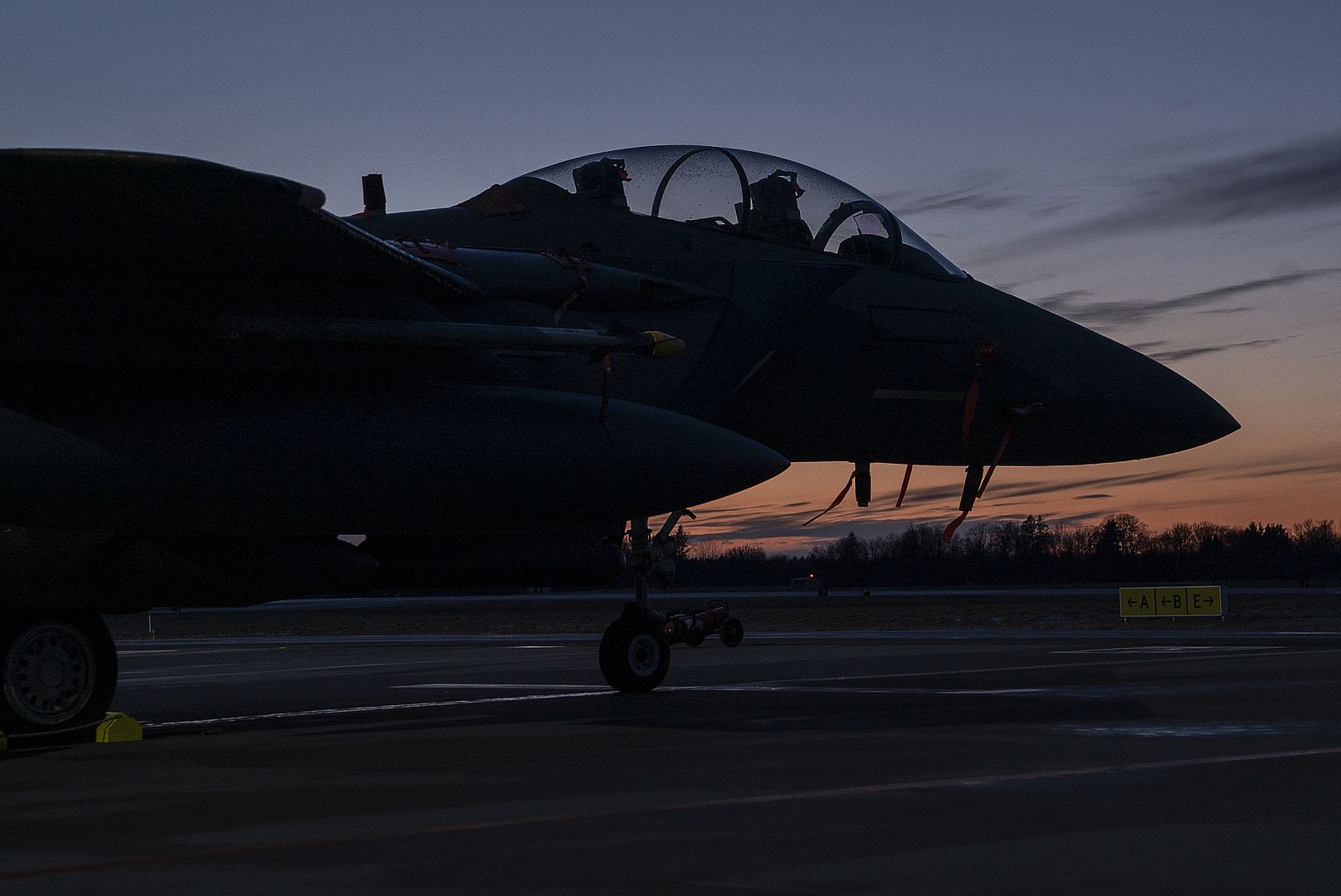
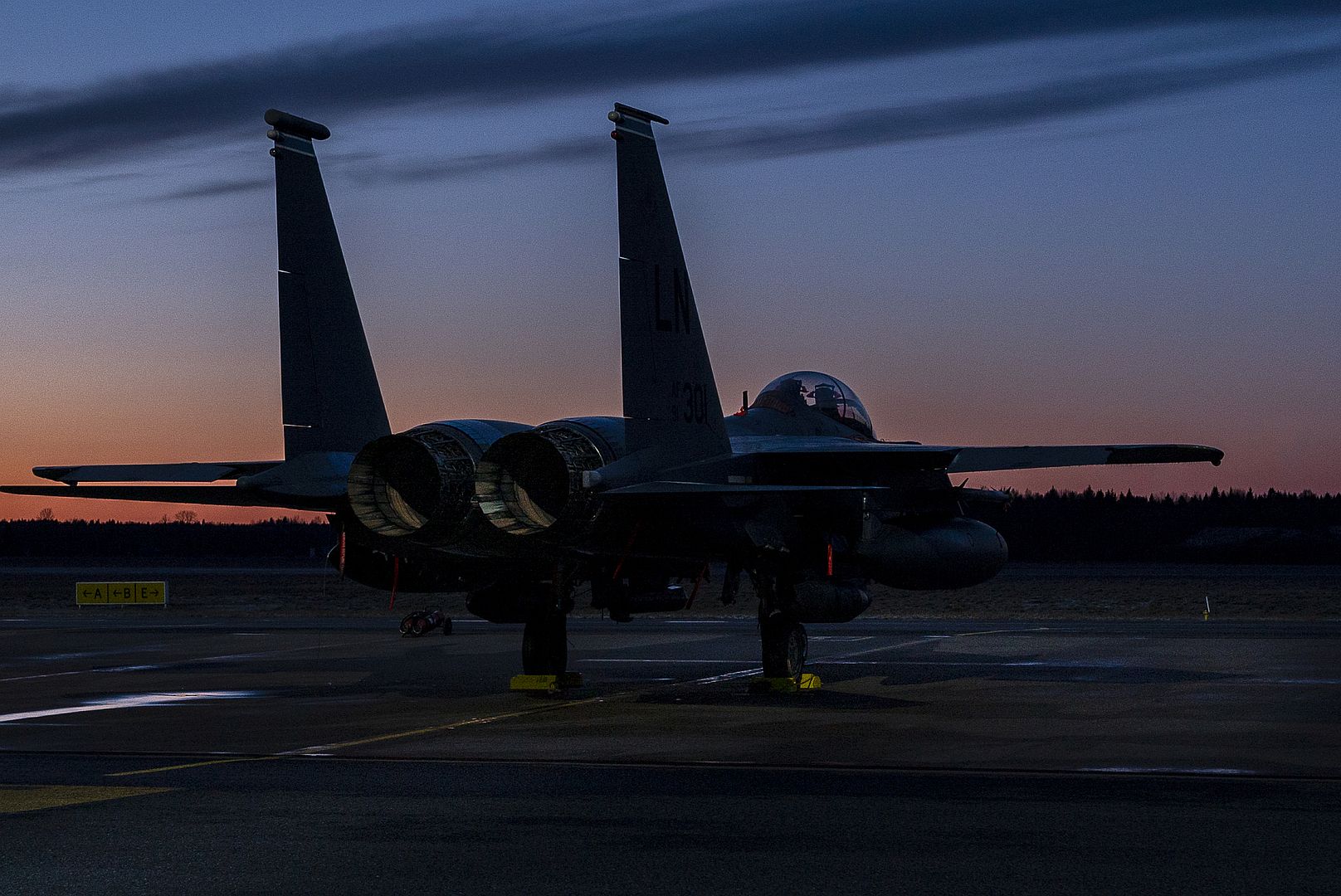
A German air force Tornado aircraft is refueled by a U.S. Air Force KC-135 Stratotanker aircraft assigned to the 100th Air Refueling Wing during exercise Baltic Trident, over Germany, March 18, 2021. Exercise Baltic Trident is an exercise focused on developing the 100th ARW’s agile combat employment concepts. (U.S. Air Force photos by Tech. Sgt. Emerson Nuñez)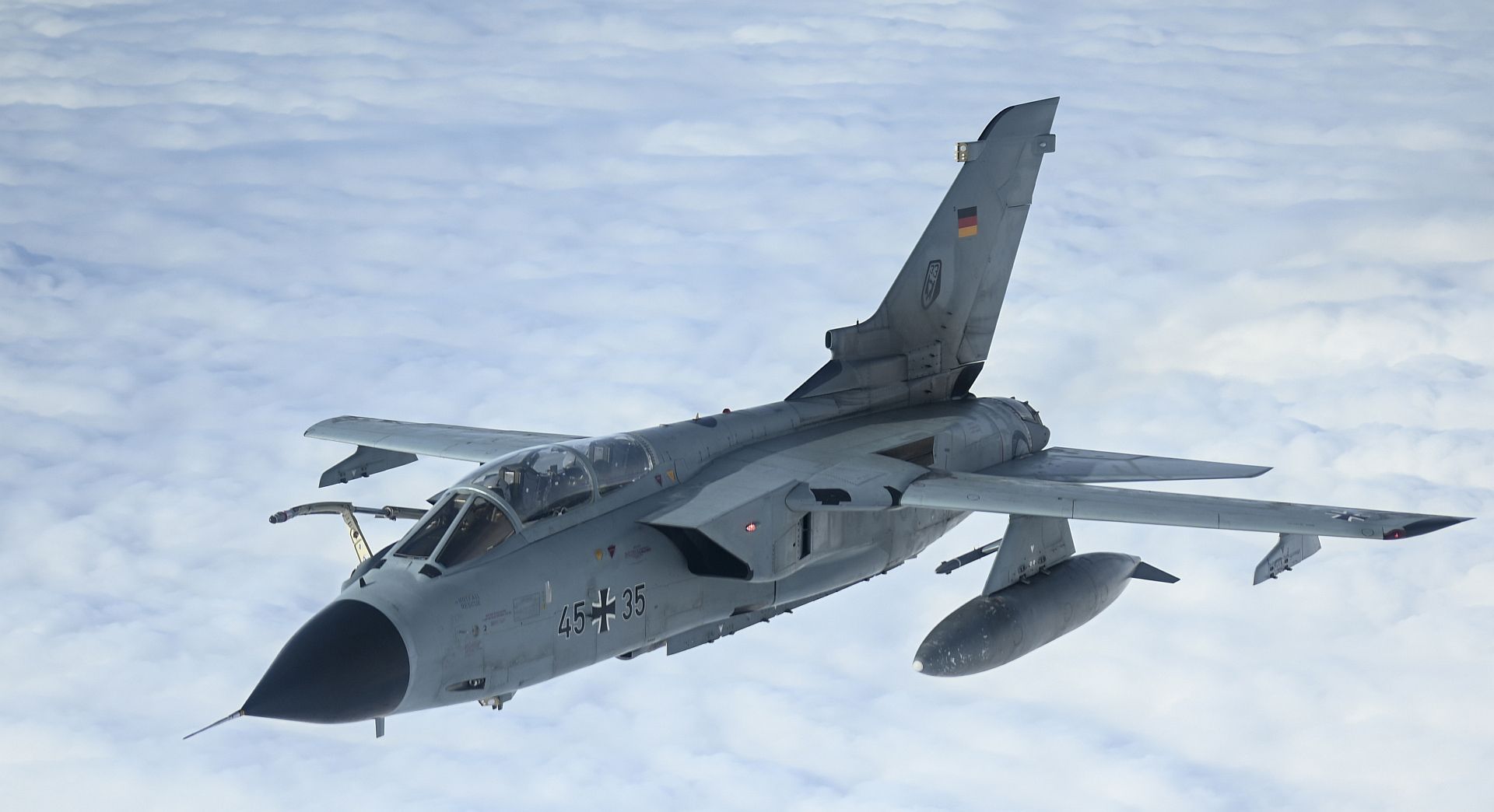
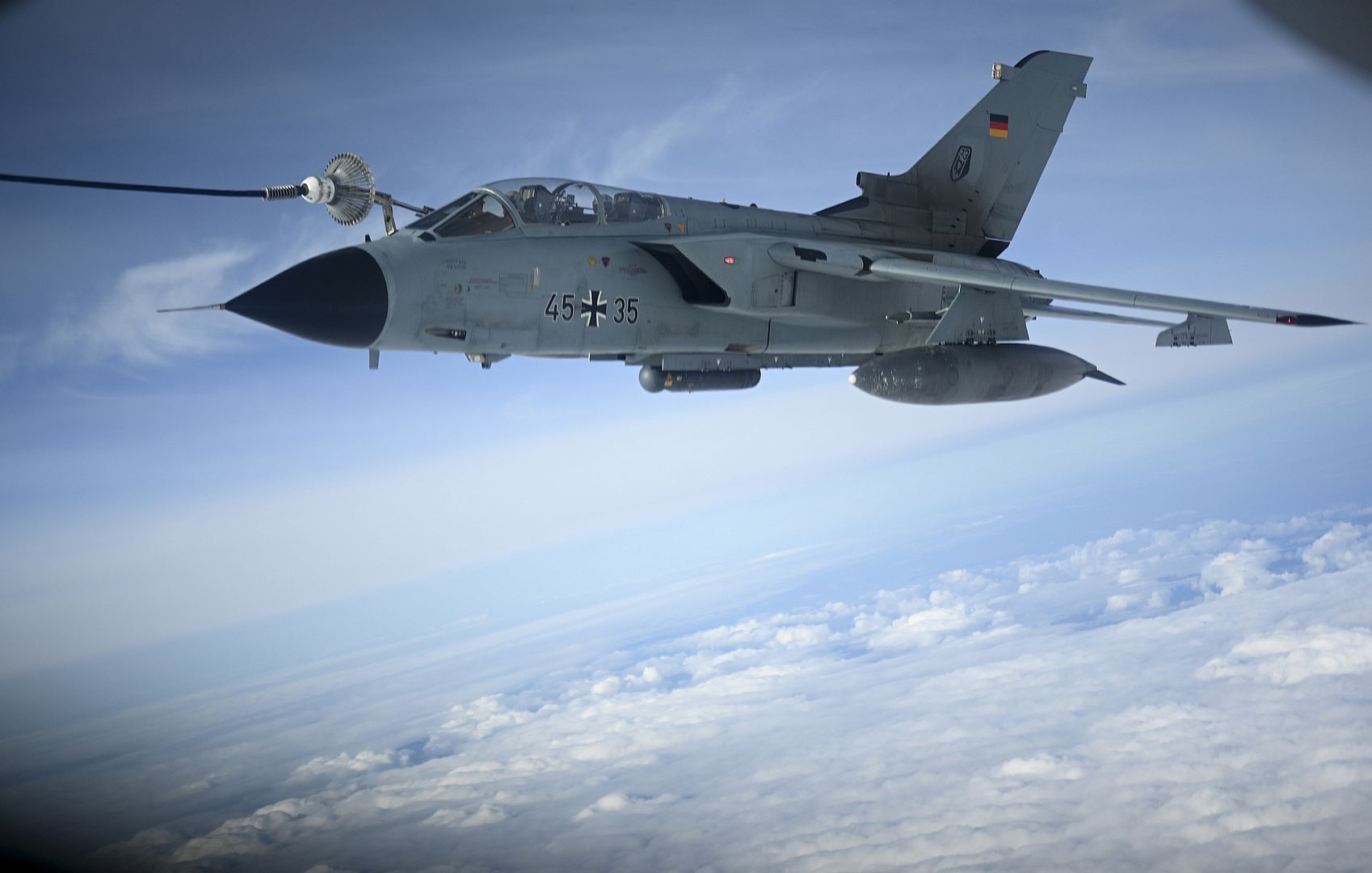
A German air force Eurofighter Typhoon aircraft is refueled by a U.S. Air Force KC-135 Stratotanker aircraft assigned to the 100th Air Refueling Wing during exercise Baltic Trident, over Germany, March 18, 2021. Agile combat employment exercises enable the 100th ARW to become more agile and responsive to better support European partners and allies. (U.S. Air Force photo by Tech. Sgt. Emerson Nuñez)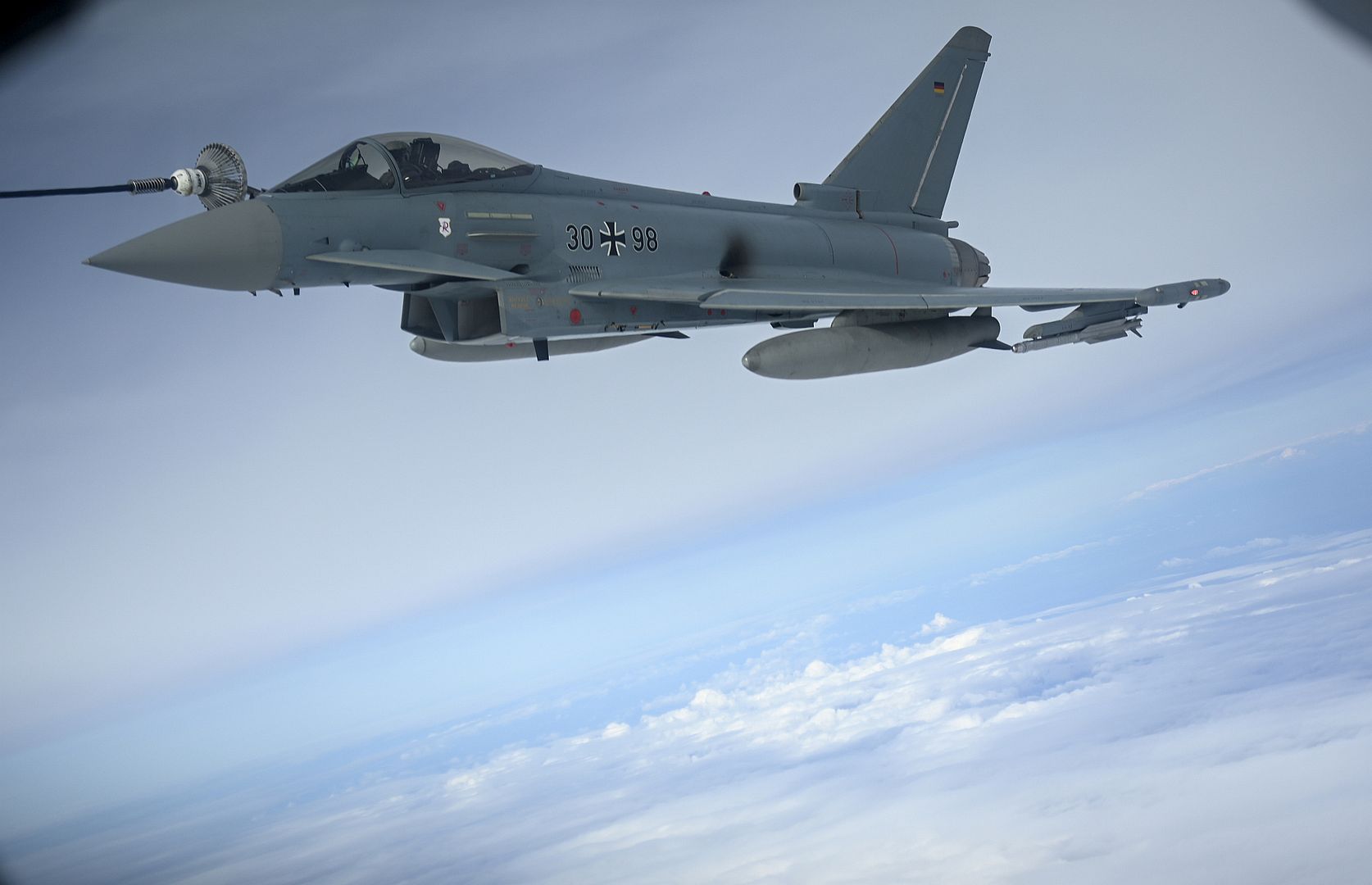
U.S. Air Force Capt. Haden “Gator” Fullam, A-10 Thunderbolt II Demonstration Team commander, performs an aerial demonstration during the Bluebonnet Airshow over Burnet, Texas, March 20, 2021. During the performance Fullam showcased the combat capabilities of the A-10 by performing aerobatic maneuvers, including weapons firing simulations. (U.S. Air Force photo by Staff Sgt. Sergio A. Gamboa)
Air Force One taxis on the flight line at Dobbins Air Reserve Base, Ga. March 19, 2021. Earlier in the day, Air Force Two landed at Dobbins as well and both the president and vice president met briefly before flying out via helicopters Marine One and Marine Two to attend a series of meetings in Atlanta. This marks the president's first visit to Georgia since being elected. (U.S. Air Force photo/Andrew Park)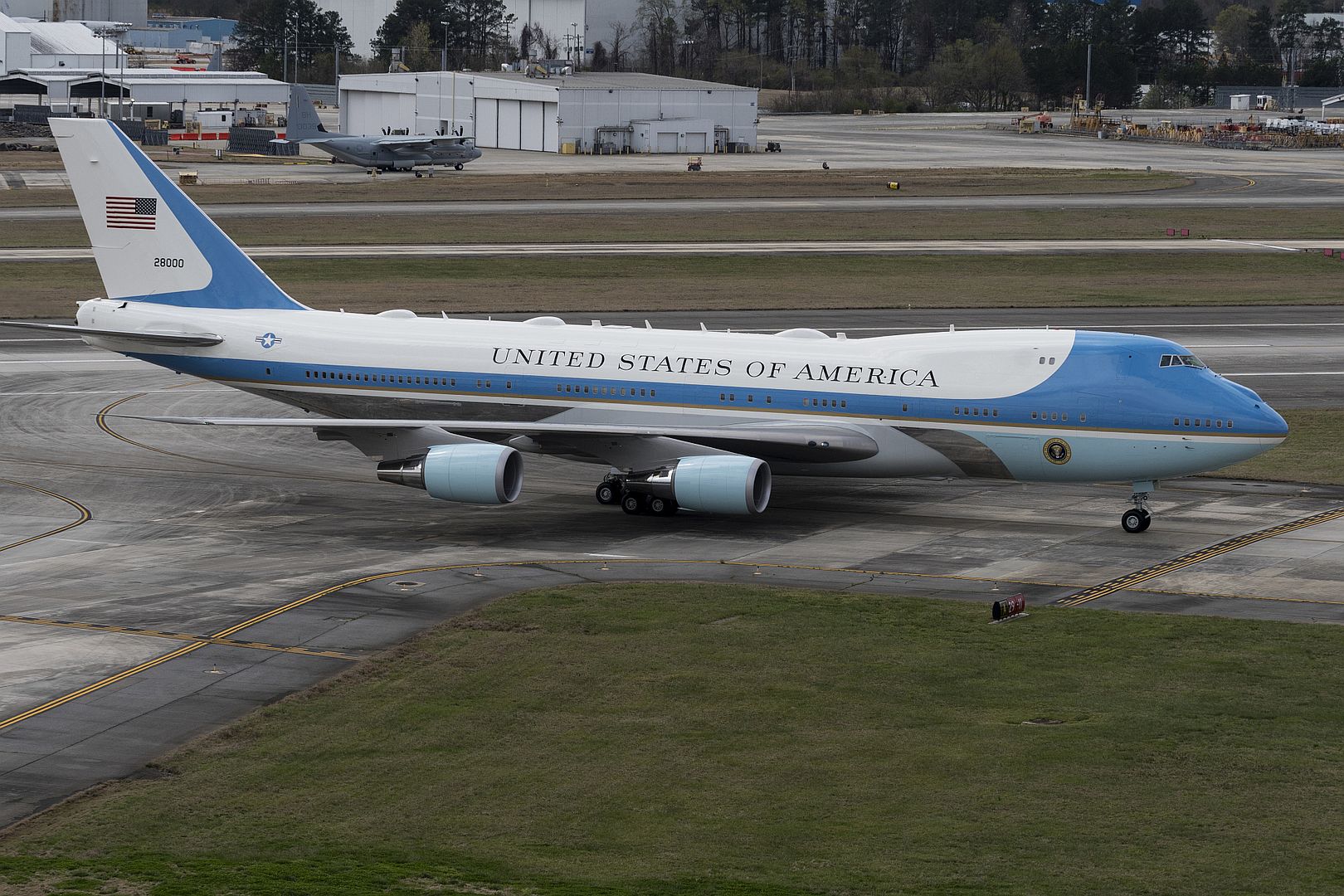
U.S. Air Force F-16’s from the Minnesota Air National Guard’s 148th Fighter Wing arrive at Yellowknife, Canada during North American Aerospace Defense Command’s Arctic air defense exercise, Amalgam Dart 21-02, March 20, 2021. The exercise will run from March 20-26 and range from the Beaufort Sea to Thule, Greenland and extend south down the Eastern Atlantic to the U.S. coast of Maine. Amalgam Dart 21-2 provides NORAD the opportunity to hone homeland defense skills as Canadian, U.S., and NATO forces operate together in the Arctic. A bi-national Canadian and American command, NORAD employs a network of space-based, aerial and ground-based sensors, air-to-air refueling tankers, and fighter aircraft, controlled by a sophisticated command and control network to deter, detect and defend against aerial threats that originate outside or within North American airspace. NATO E-3 Early Warning Aircraft, Royal Canadian Air Force CF-18 fighter aircraft, CP-140 long-range patrol aircraft, CC-130 Search and Rescue and tactical airlift aircraft, CC-150T air refueled, and CH-149 Cormorant Search and Rescue helicopters; as well as U.S. Air Force F-16 fighter aircraft, KC-10 Extender refueler, KC-46 Pegasus, KC-135 Stratotanker, as well as C-130 and C-17 transport aircraft will participate in the exercise. (U.S. Air Force photo by 2d Lt Crystal Kirchner)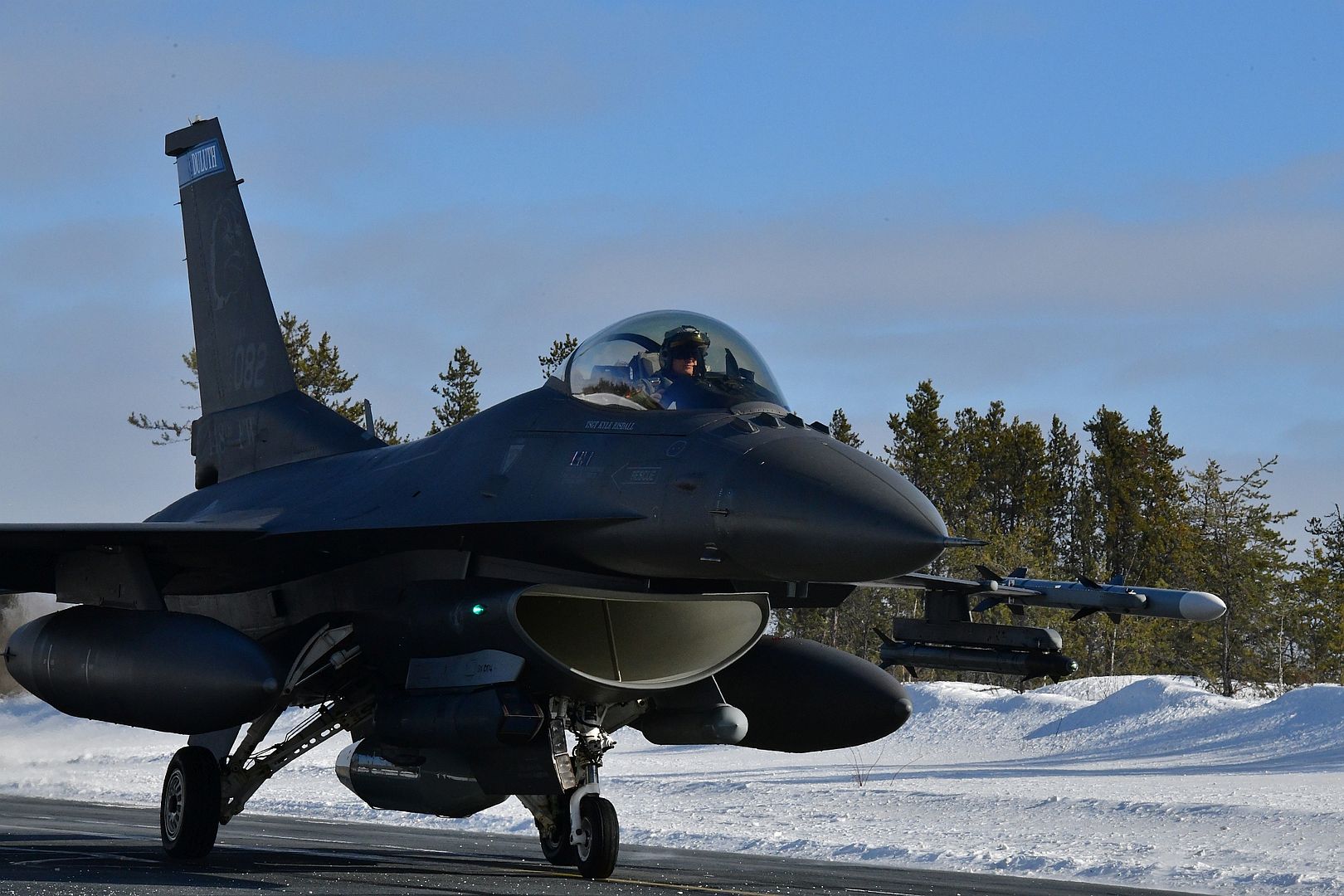
CF-18s on the tarmac at 5 Wing Goose Bay getting ready to fly a mission with USAF F-16s during the EX Amalgam Dart 21-2, Monday 22 March 2021. DND/MDN EX AMALGAM DART 21-2.
Photo by CANR NORAD.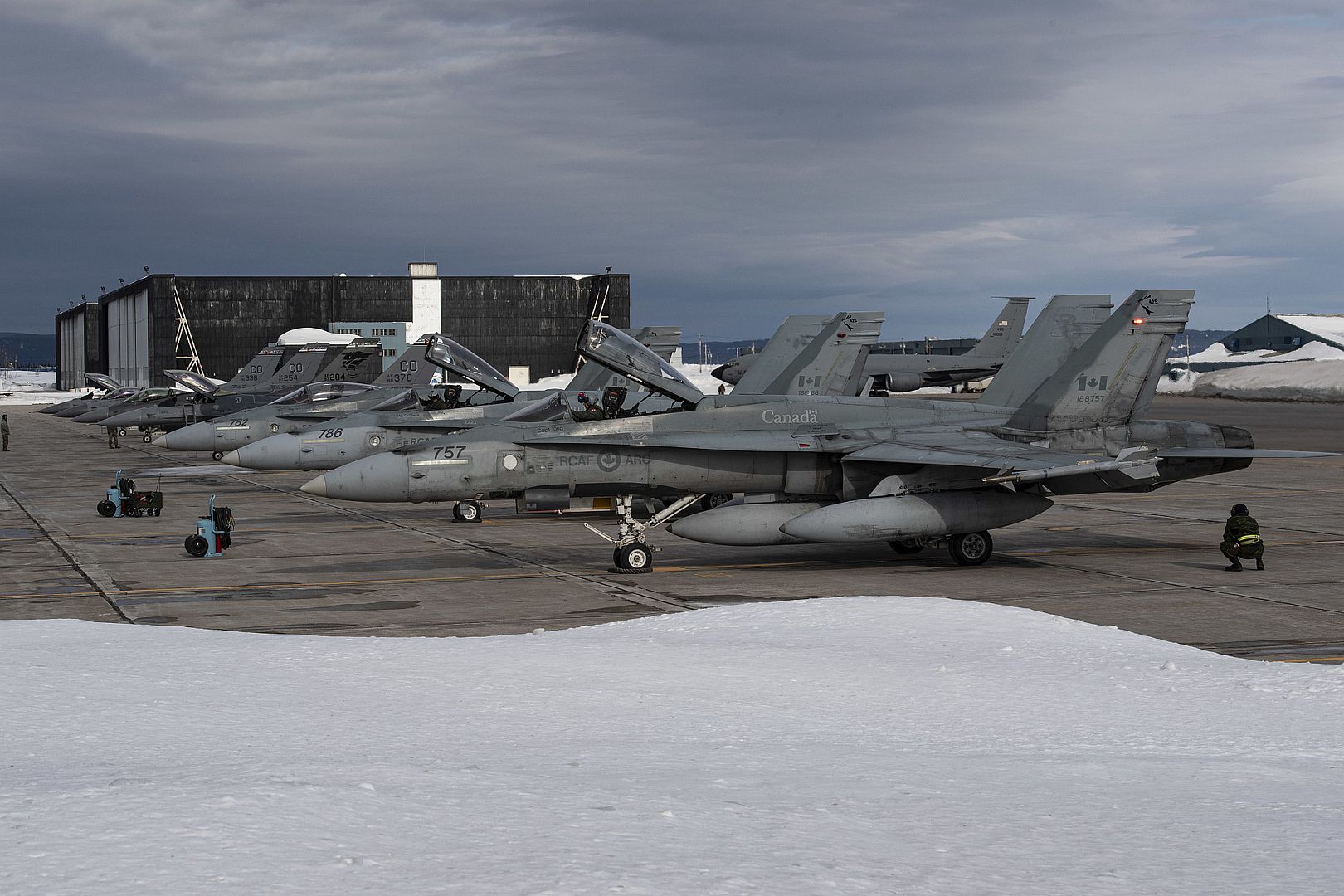
RCAF CF-18s from 3 Wing Bagotville arrived at Thule AB, Greenland, during North American Aerospace Defense Command’s Arctic air defense exercise, AMALGAM DART, March 20, 2021. The exercise will run from March 20-26 and range from the Beaufort Sea to Thule, Greenland and extend south down the Eastern Atlantic to the U.S. coast of Maine. Amalgam Dart 21-2 provides NORAD the opportunity to hone homeland defense skills as Canadian, U.S., and NATO forces operate together in the Arctic. A bi-national Canadian and American command, NORAD employs a network of space-based, aerial and ground-based sensors, air-to-air refueling tankers, and fighter aircraft, controlled by a sophisticated command and control network to deter, detect and defend against aerial threats that originate outside or within North American airspace. NATO E-3 Early Warning Aircraft, Royal Canadian Air Force CF-18 fighter aircraft, CP-140 long-range patrol aircraft, CC-130 Search and Rescue and tactical airlift aircraft, CC-150T air refueled, and CH-149 Cormorant Search and Rescue helicopters; as well as U.S. Air Force F-16 fighter aircraft, KC-10 Extender refueler, KC-46 Pegasus, KC-135 Stratotanker, as well as C-130 and C-17 transport aircraft will participate in the exercise. (Photo credit: (CAN) Master Corporal Gary Clavé)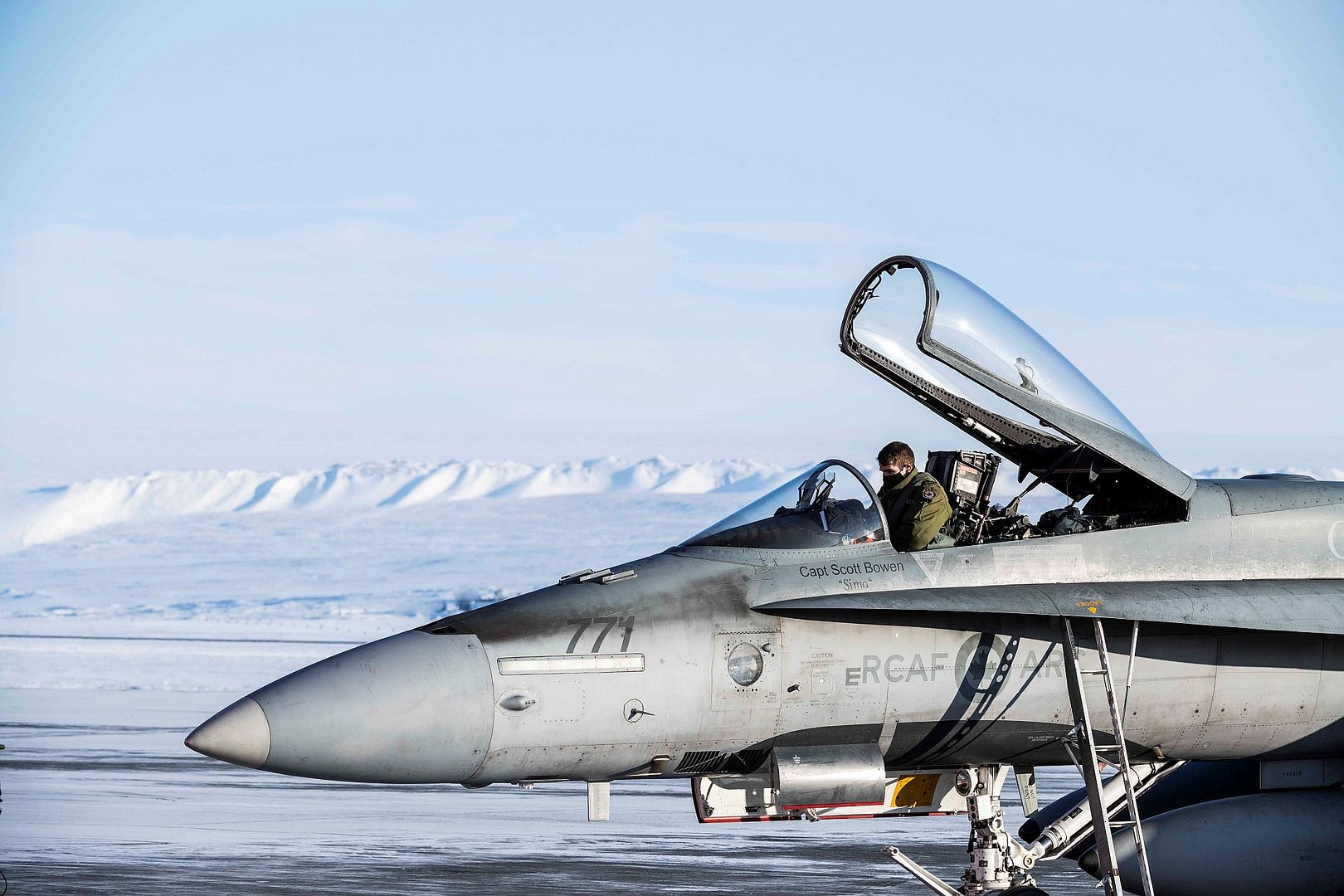
PACIFIC OCEAN (March 20, 2021) An AV/8B Harrier, attached to Marine Attack Squadron (VMA) 214, lands on the flight deck of the Wasp-class amphibious assault ship USS Essex (LHD 2). Essex is conducting routine operations underway in the eastern Pacific Ocean. (U.S. Navy photo by Mass Communication Specialist 3rd Class Isaak Martinez)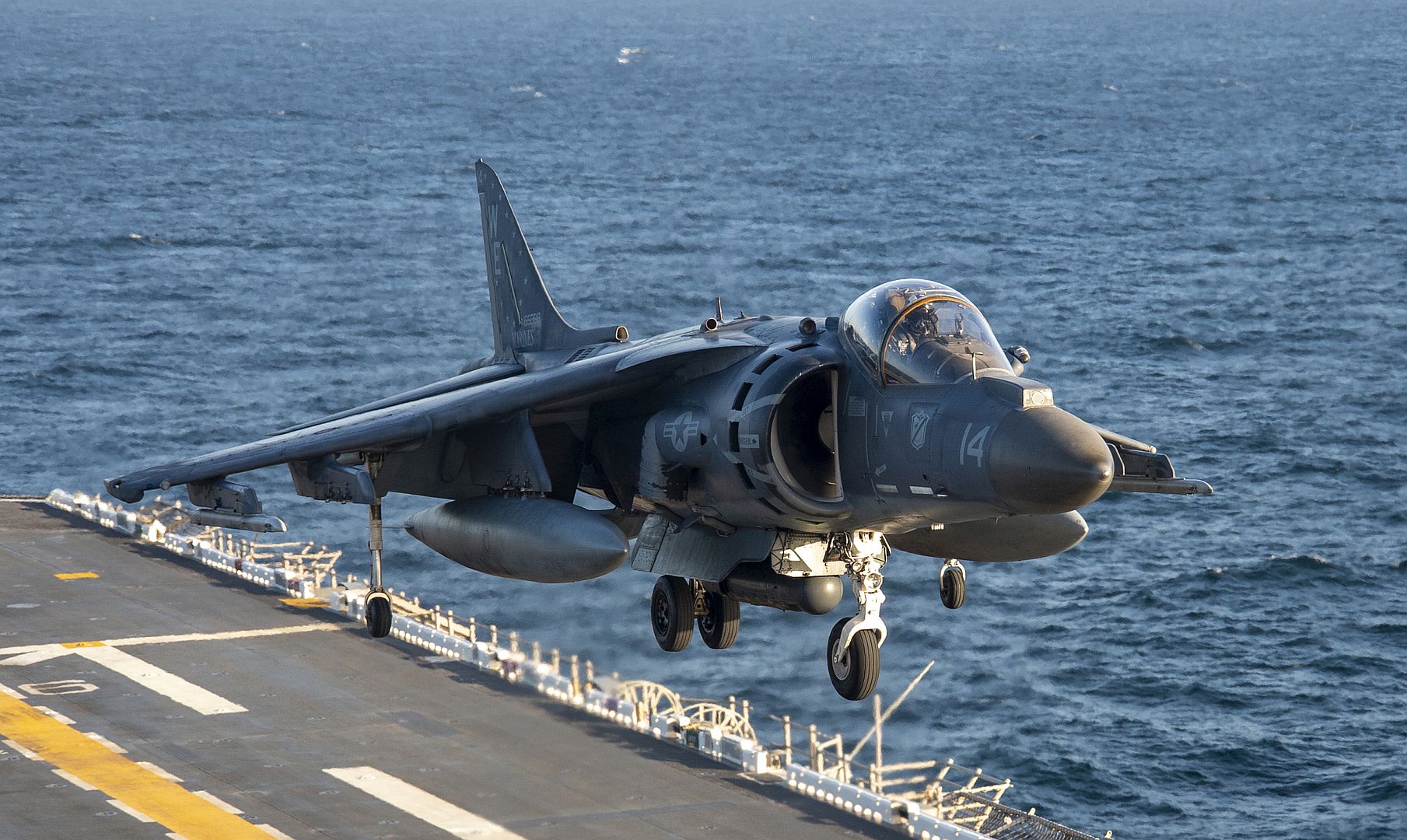
The Ford-class aircraft carrier USS Gerald R. Ford (CVN 78) and the Italian aircraft carrier ITS Cavour (CVH 550) transit the Atlantic Ocean March 20, 2021, marking the first time a Ford-class and Italian carrier have operated together underway. As part of the Italian Navy’s Ready for Operations (RFO) campaign for its flagship, Cavour is conducting sea trials in coordination with the F-35 Lightning II Joint Program Office’s Patuxent River Integrated Test Force to obtain official certification to safely operate the F-35B. Gerald R. Ford is conducting integrated carrier strike group operations during independent steaming event 17 as part of her post-delivery test and trials phase of operations. (U.S. Navy photo by Mass Communication Specialist 3rd Class Riley McDowell)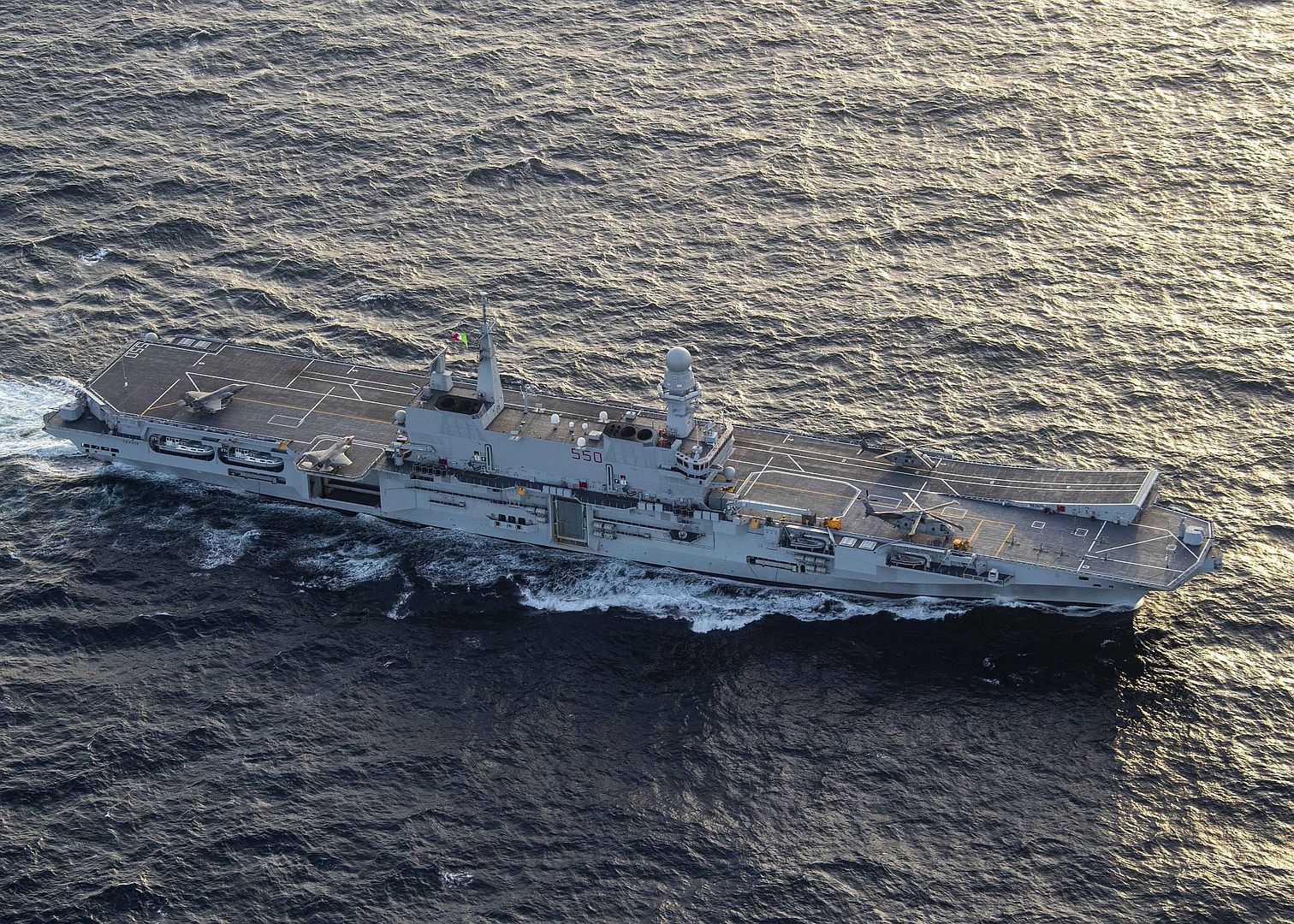
BLACK SEA (March 19, 2021) Aircraft assigned to Carrier Air Wing (CVW) 3 and the Turkish air force conduct a mid-air fueling over the Black Sea, March 19, 2021. The Dwight D. Eisenhower Carrier Strike Group is on a scheduled deployment in the U.S. 6th Fleet area of operations in support of U.S. national interests and security in Europe and Africa. (U.S. Navy photo)
Post a reply
- Go to Next topic
- Go to Welcome
- Go to Introduce Yourself
- Go to General Discussion
- Go to Screenshots, Images and Videos
- Go to Off topic
- Go to Works in Progress
- Go to Skinning Tips / Tutorials
- Go to Skin Requests
- Go to IJAAF Library
- Go to Luftwaffe Library
- Go to RAF Library
- Go to USAAF / USN Library
- Go to Misc Library
- Go to The Ops Room
- Go to Made in Germany
- Go to Campaigns and Missions
- Go to Works in Progress
- Go to Juri's Air-Raid Shelter
- Go to Campaigns and Missions
- Go to Works in Progress
- Go to Skinpacks
- Go to External Projects Discussion
- Go to Books & Resources
